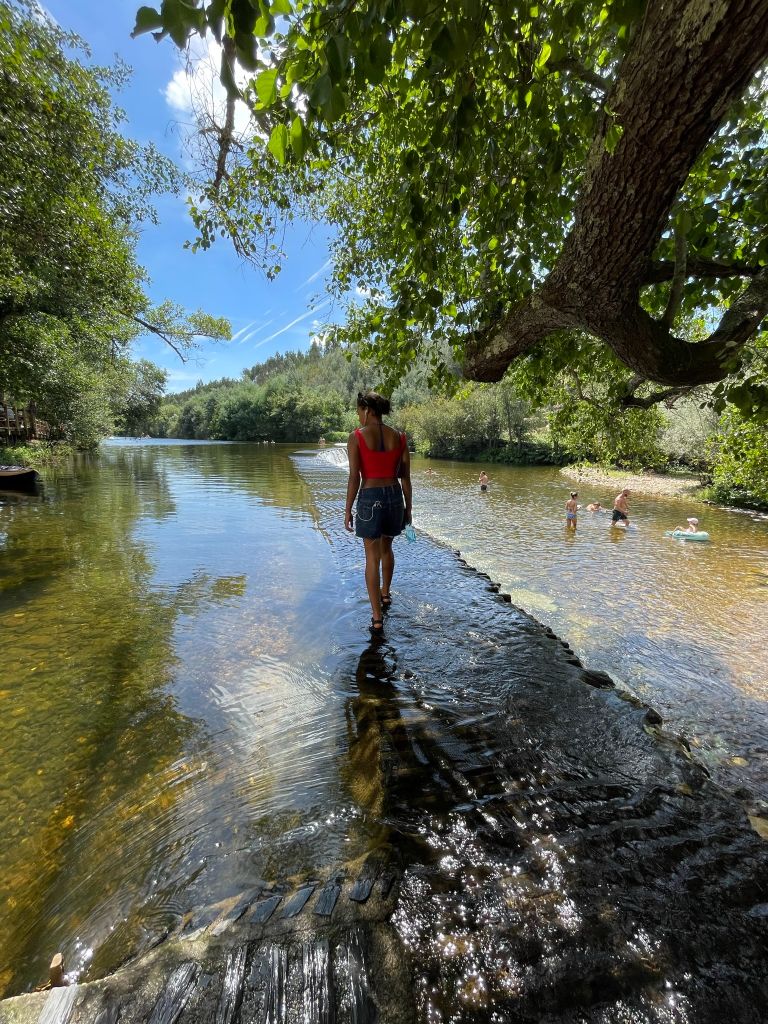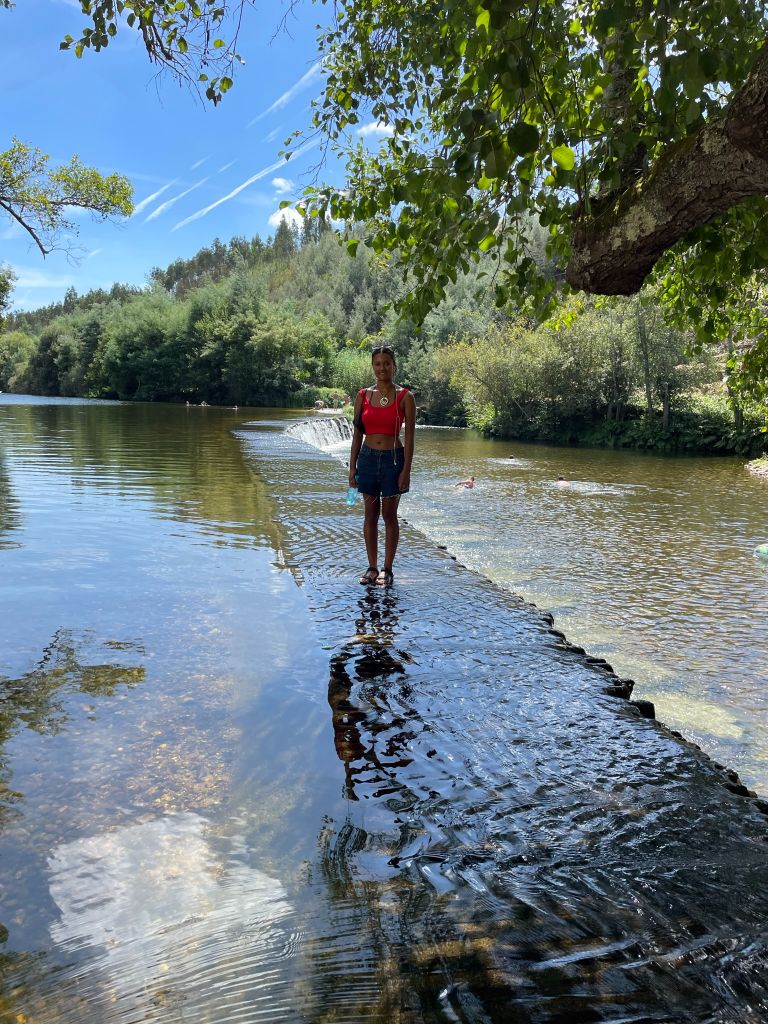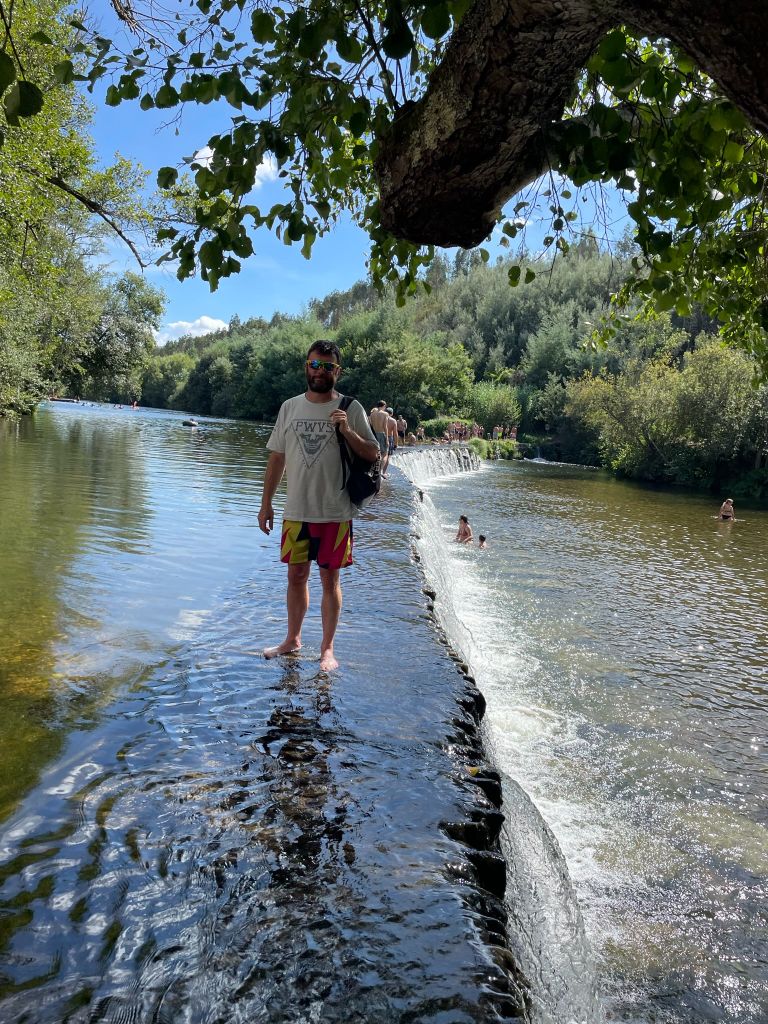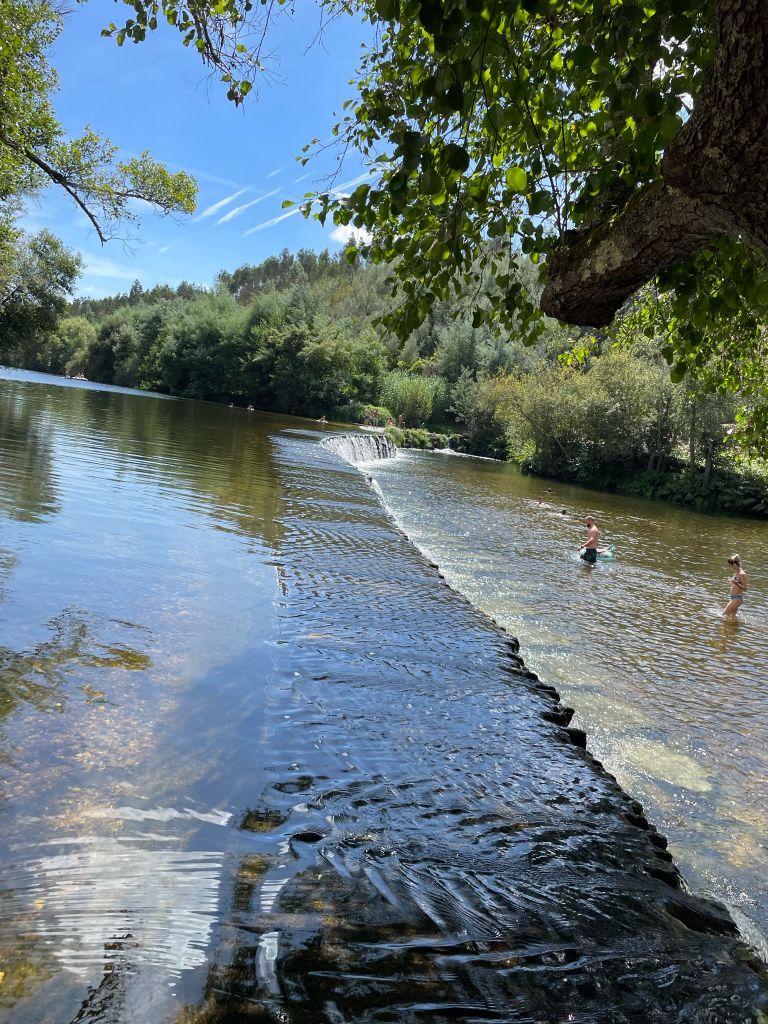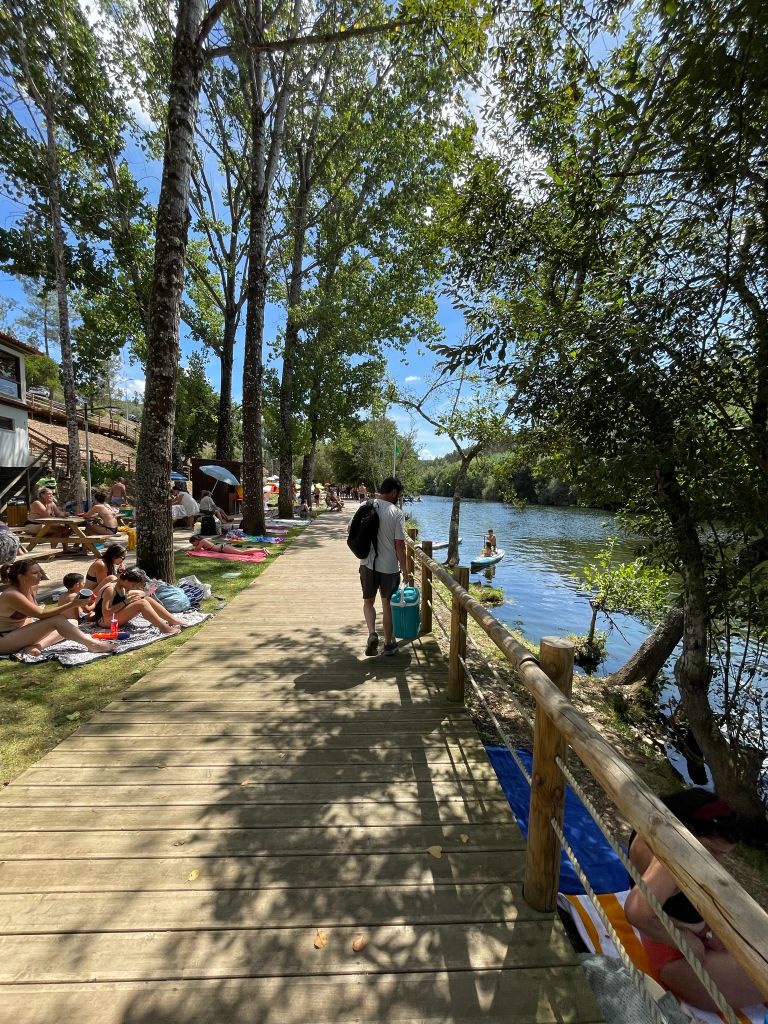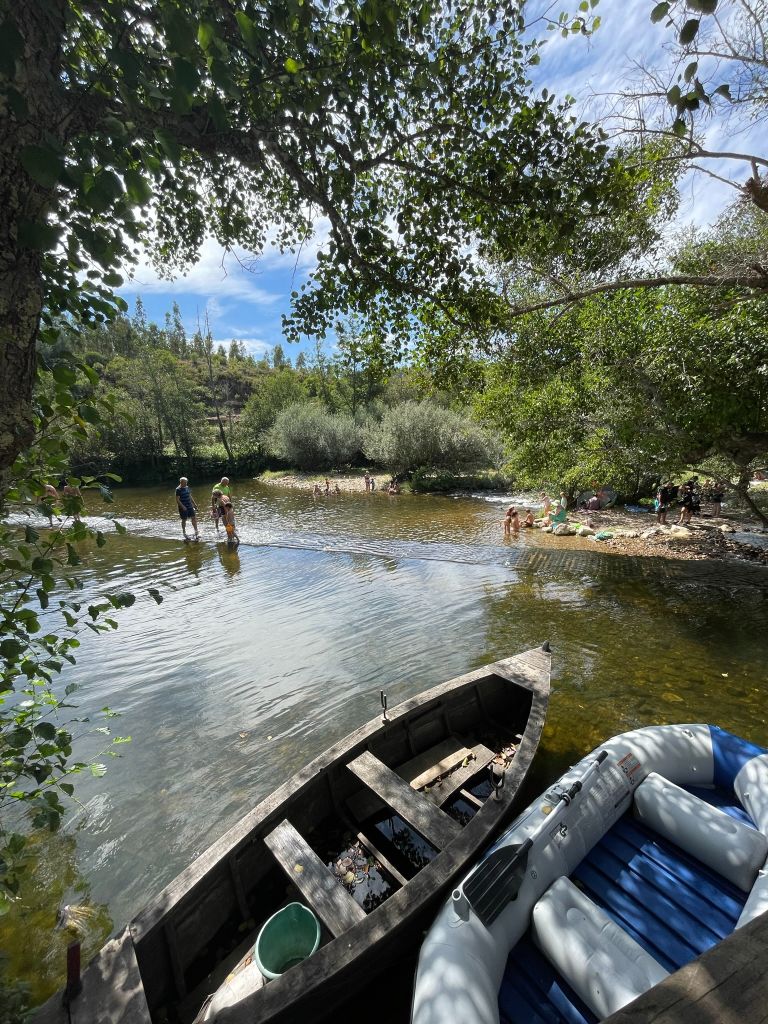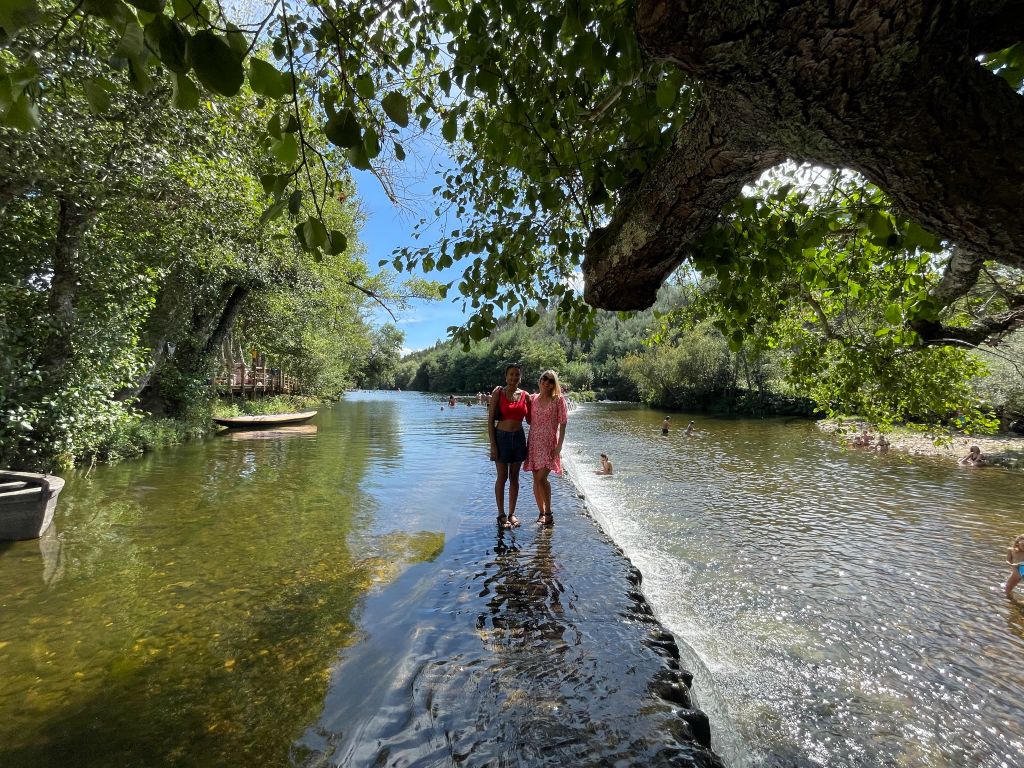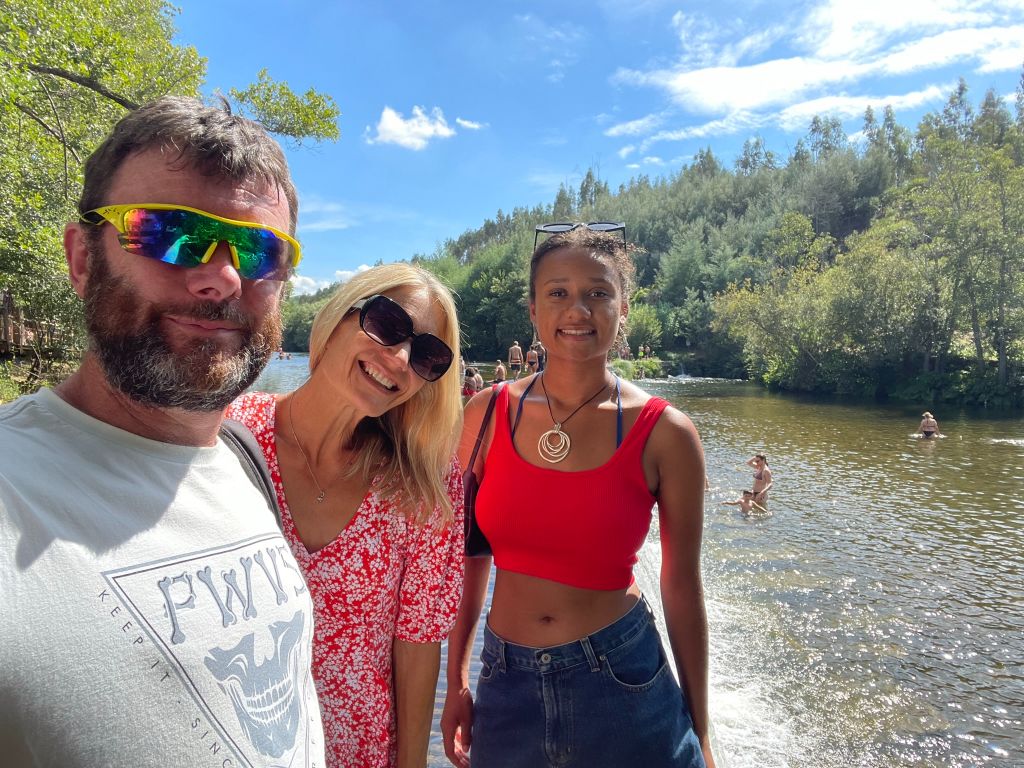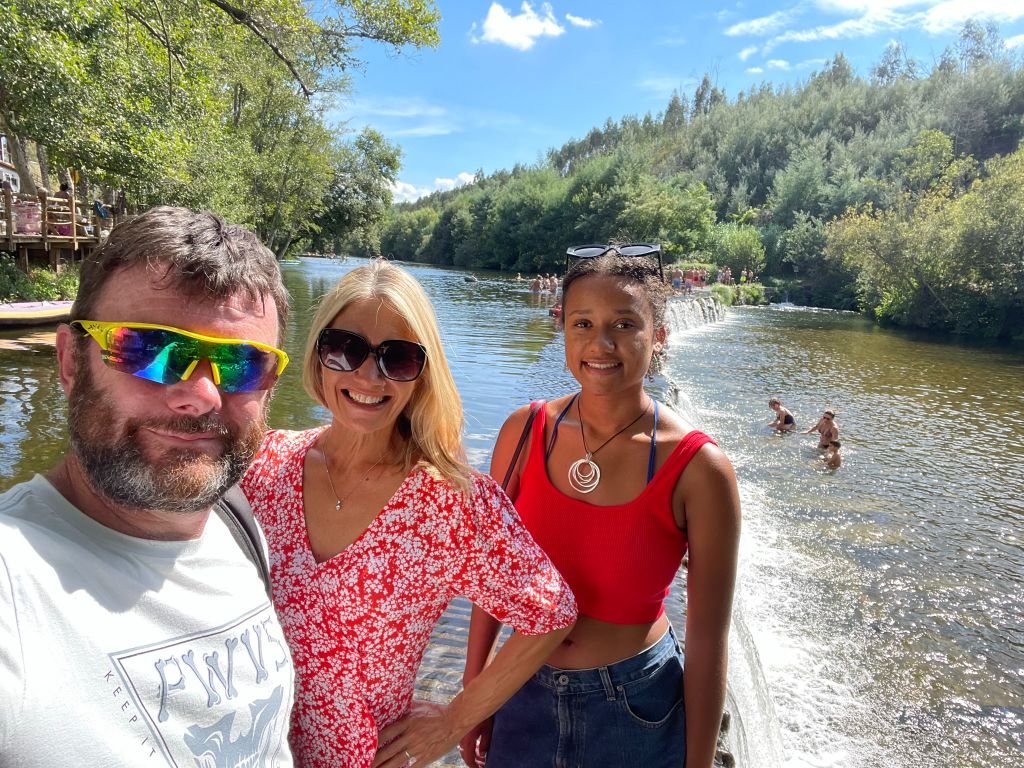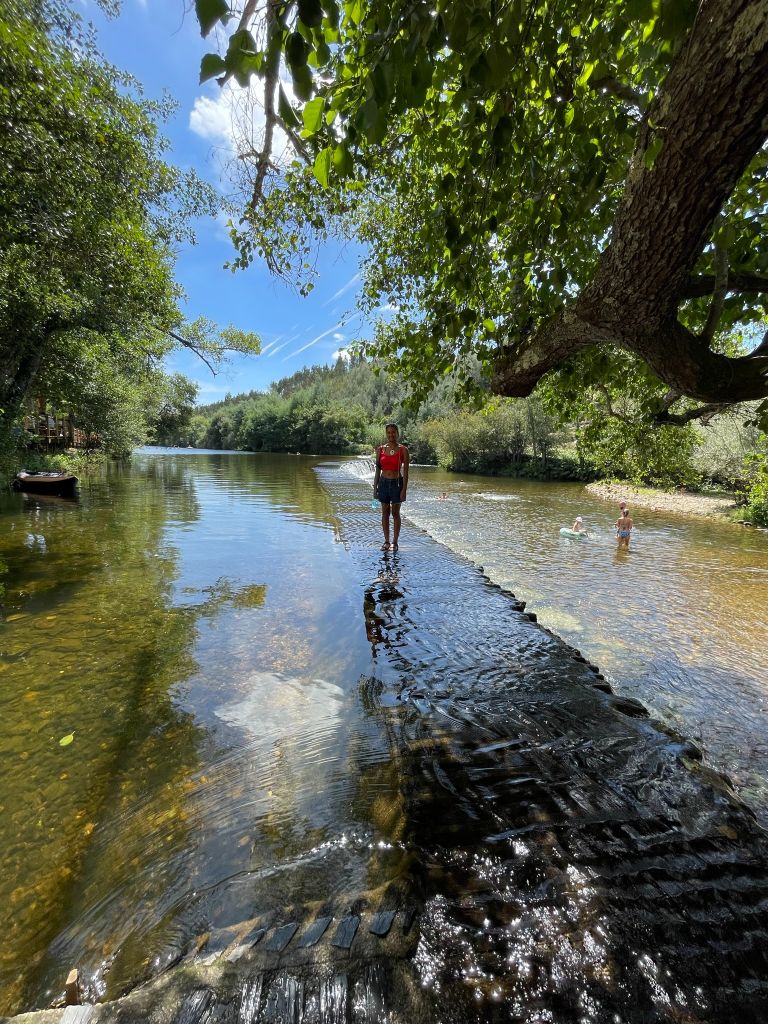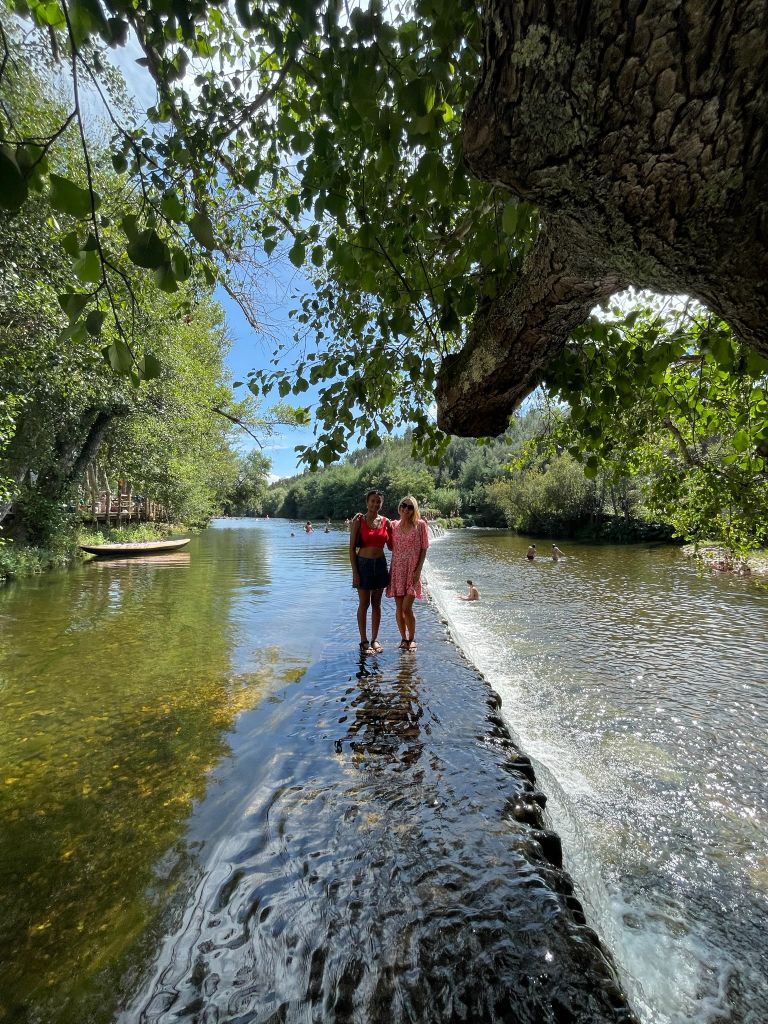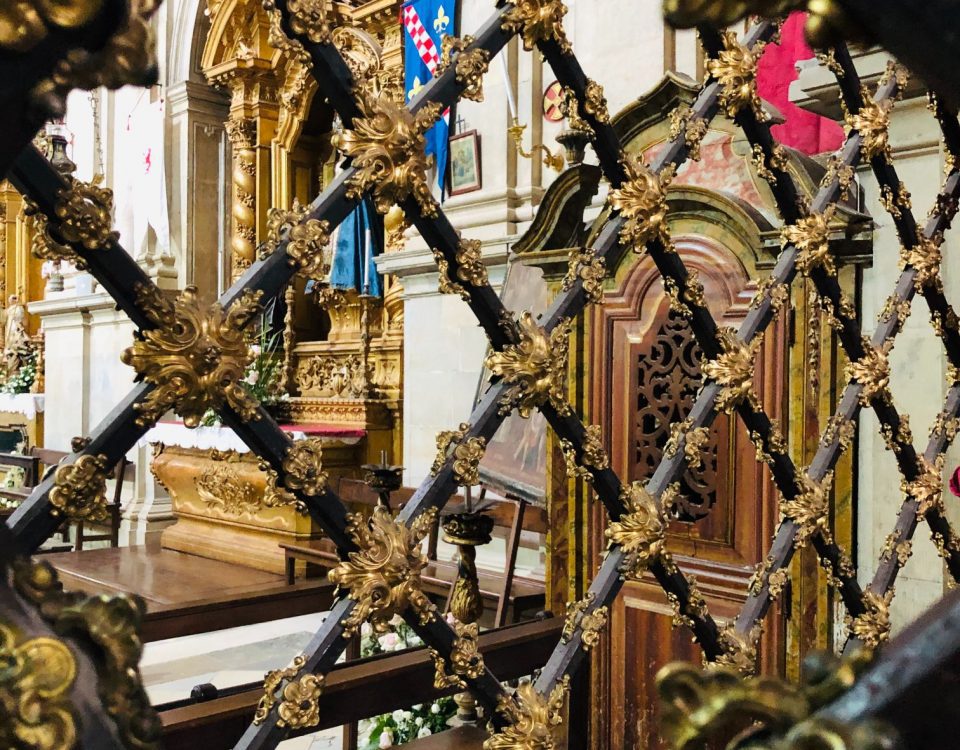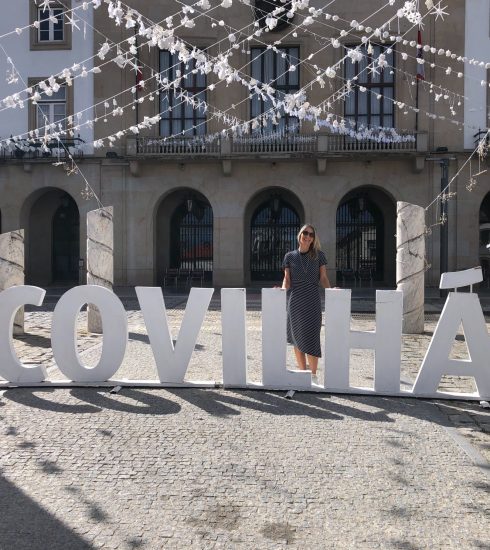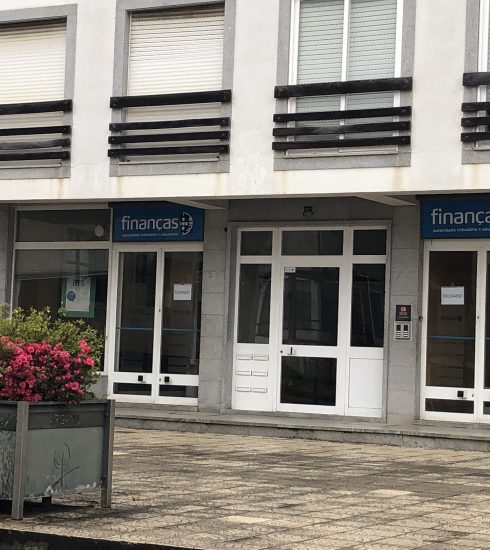A DAY TRIP TO MOSTEIRO DE LORVÃO (PENACOVA)
If you have never had the pleasure to visit Penacova in your lifetime and you adore unique encounters with nature, I highly recommend it. We are so lucky to live just a short 40 min drive away and it’s certainly the land of fresh air and adventure as there is so much to see and experience in this wonderful area. In terms of landscape, Penacova is located in an area of rare beauty dominated by spectacular natural scenic landscapes. It is blessed with biodiversity, majestic mountains, valleys overlooking the Mondego and Alva rivers, providing a breathtaking panoramic view along the Mondego Valley, from Porto da Raiva to Foz do Caneiro. If you are a water baby like me and love aquatic sports, Penacova is perfect as it’s the land of rivers, reservoirs, dams, streams, waterfalls, beautiful viewpoints and granite cliffs, ancient monasteries and museums, whimsical windmills and watermills, nature hikes, trail running, cycling and tranquil blue flag river beaches. There is 200 km of marked trails for the nature lover “Hiking Helen” to explore! I am also interested in visiting the historical sites where the Battle of Bussaco was fought.
We started the day with a pit stop at our local Côja market to view all the artisan crafts and yummy food. I bought a pre-loved lilac Next Jumper for €4 which is so snuggly and warm. Today we planned on venturing on the Roteiro de Arista and also viewing the wonderful windmills of Central Portugal: Moinhos da Serra da Atalhada, Moinhos de Gavinhos and Moinhos de Portela de Oliveira (which also has a museum: Museu do Moinhos). It was a bit foggy in the morning which usually indicates that it will be a hot day but when we arrived at the first windmill site the fog/mist was still present so after a quick ramble we cancelled our plans and visited the beautiful Mosteiro de Lorvão (Monastery). WOW it was stunning and for €3 we had a guided tour.
Fantastic but Foggy – Moinhos da Serra da Atalhada (Windmills)
Foggy but still fantastic. There is something just so magical about windmills. We will return on a clear day because I want to view the far stretching panoramic landscapes of the mountains. I am fascinated by the Windmills of Penacova and really want to visit during the months when one can observe the miller hard at work to see the milling of cereal process (May – Oct).



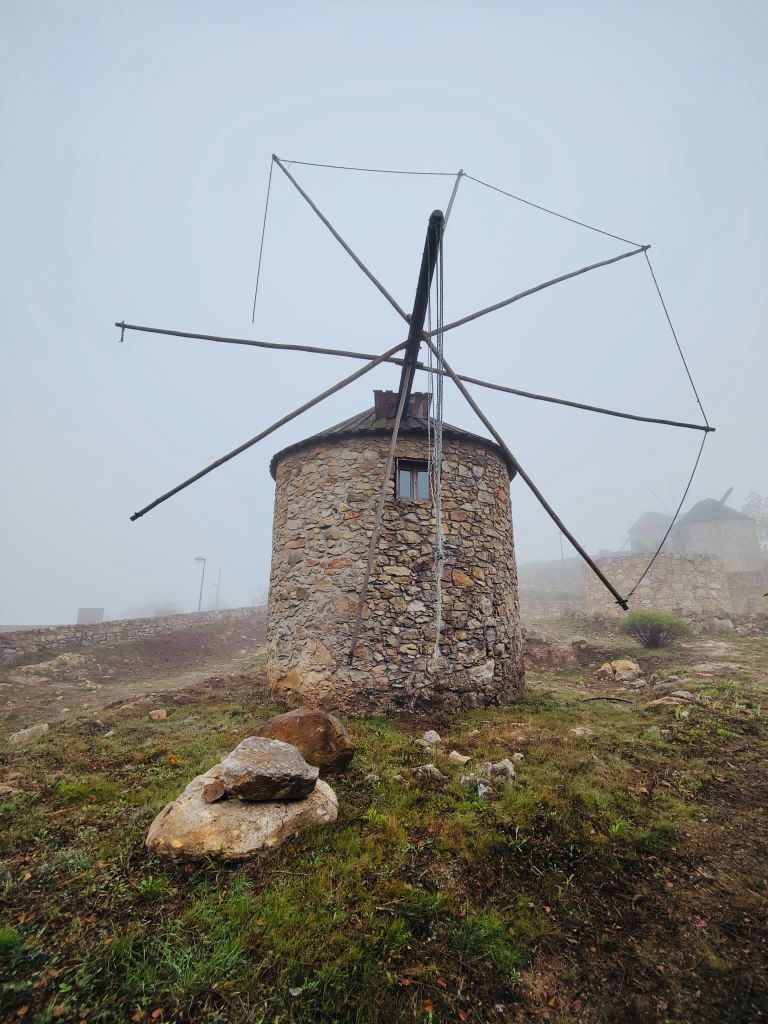


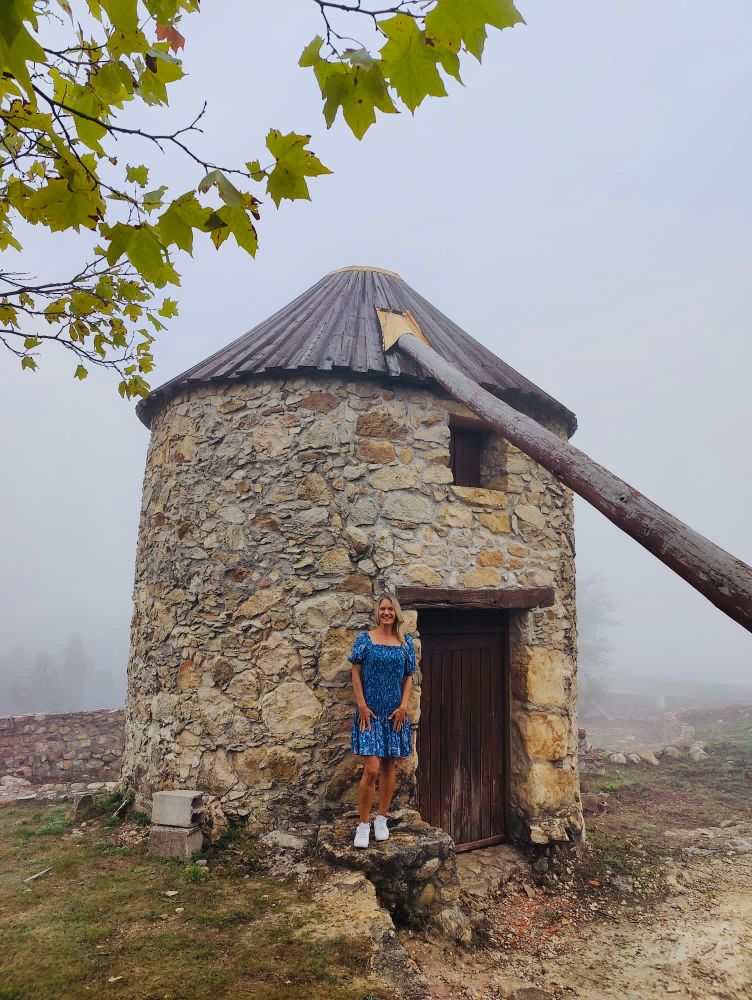


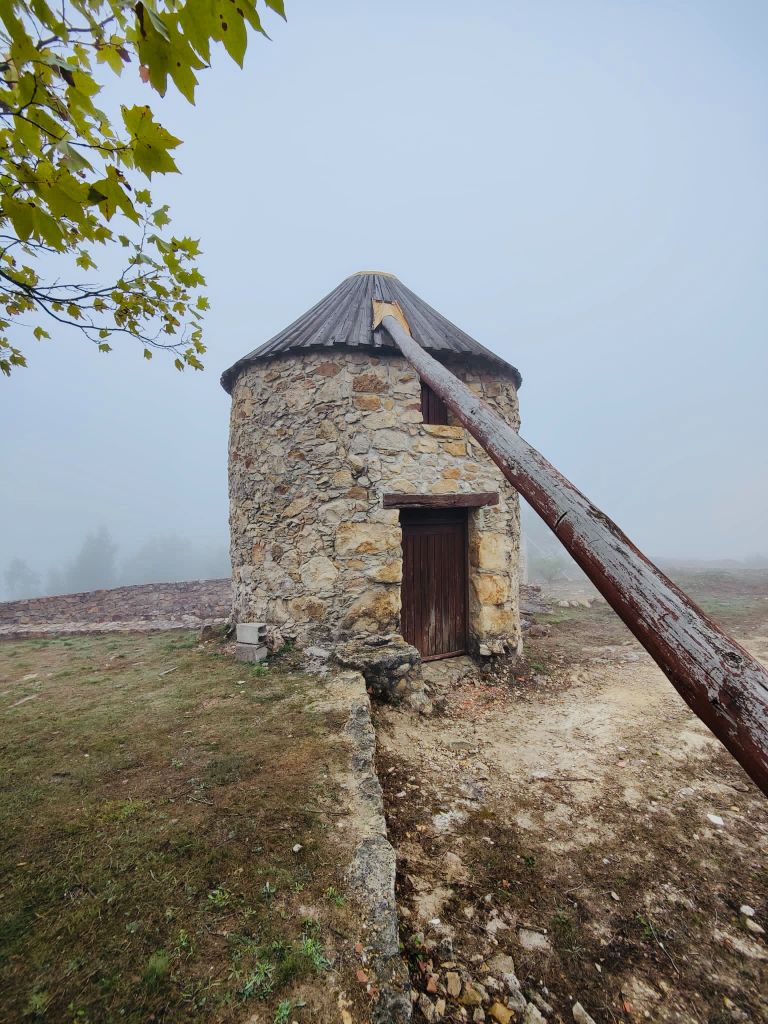


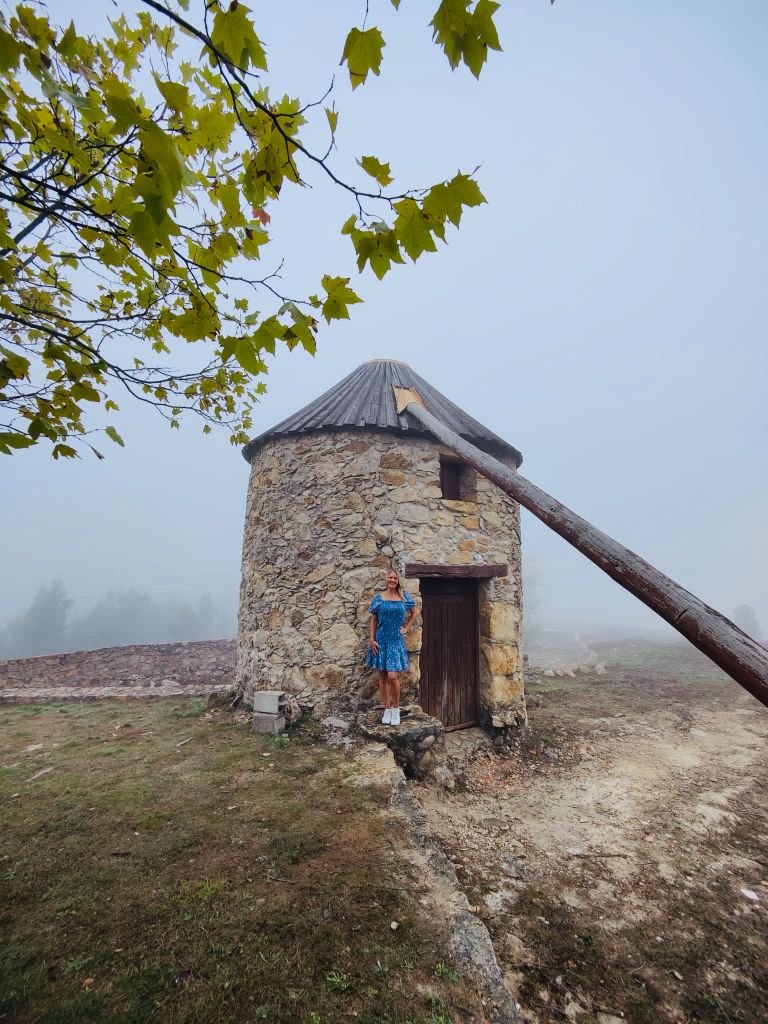


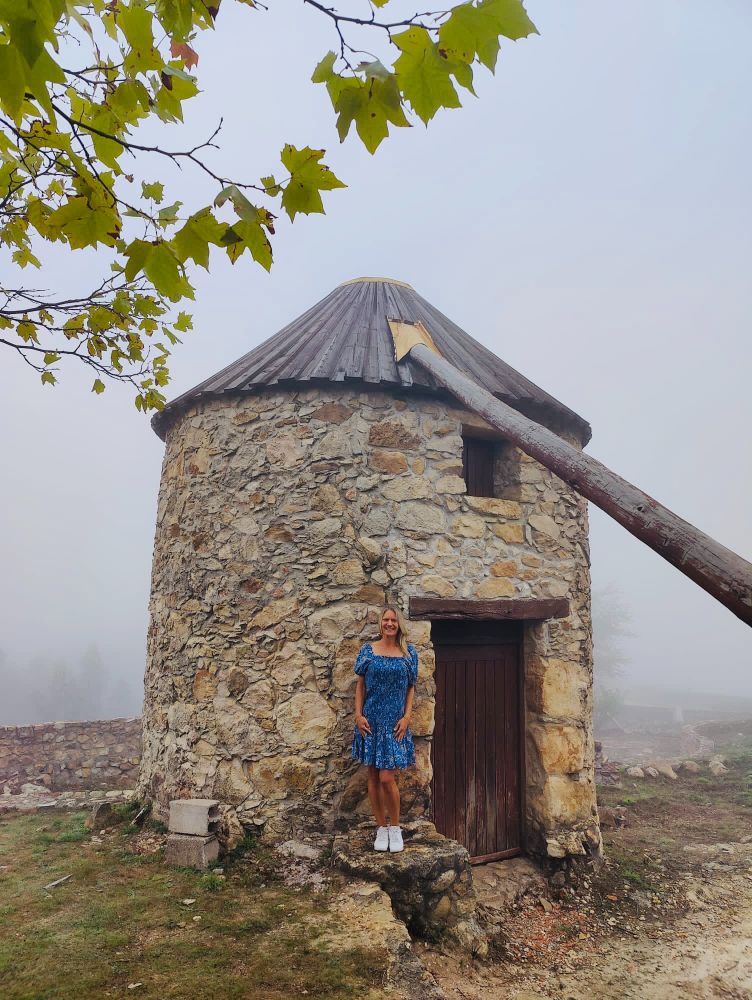





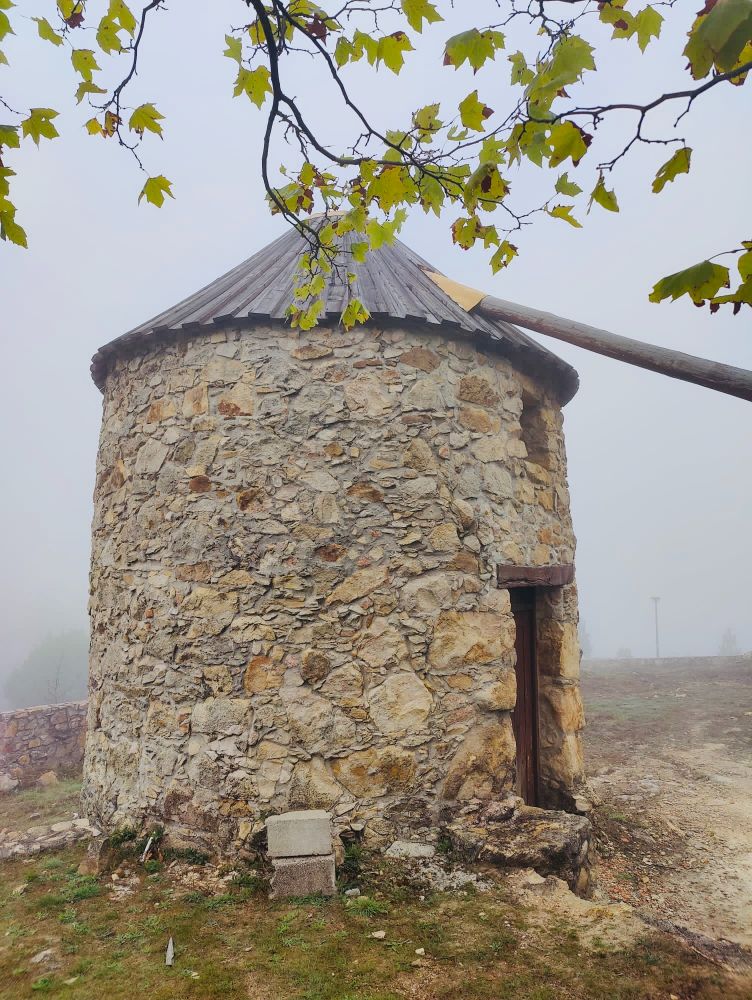


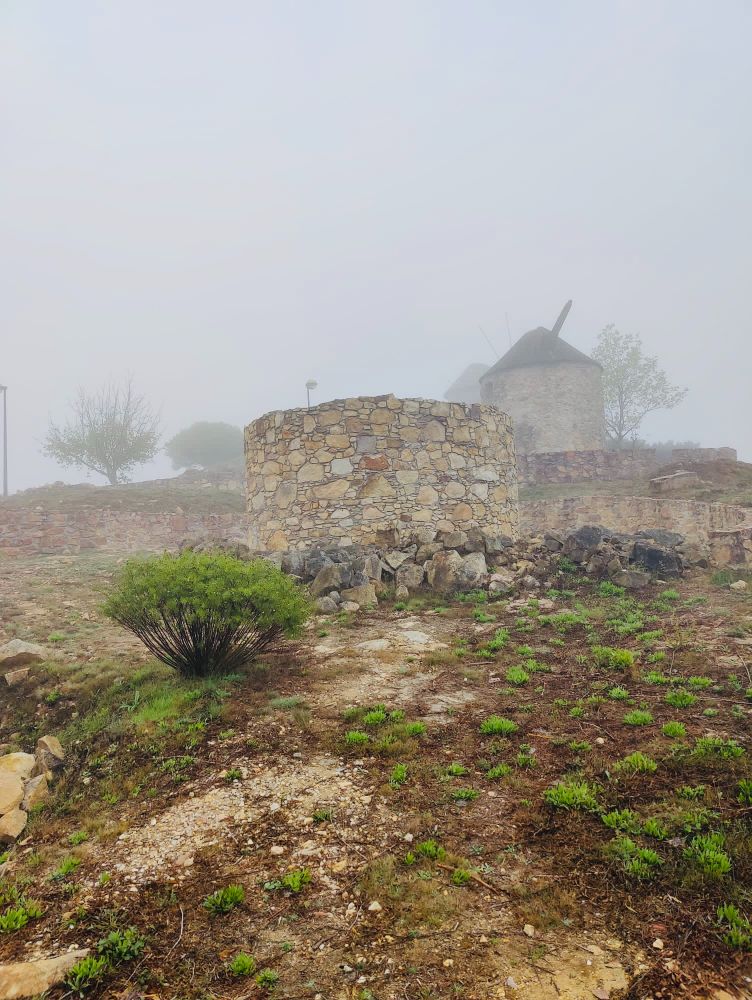


Roteiro de Arista – Miradouro do Penedo do Castro (Viewpoint)
This is a tour of Penacova where you visit 8 different tourist attractions. At each location you will find a letter from the alphabet which spells out the word P.E.N.A.C.O.V.A. We visited the Tourist Information Centre in Penacova centre and collected a Passport which is a little booklet explaining each attraction. It’s a bit like a treasure hunt but the letters are not hidden which is great for me because I can’t see for shit (ha ha). If you want to you can get your passport stamped at each location or if it’s a viewpoint with no staff to physically stamp the booklet you can take a photo at each letter/location, download an App then upload your photos and the App will design a collage with each of your 8 photos making it immediately available to share on social media networks. You can then return to the Tourist Information Centre to claim your free gift. I have no idea what the free gift is, I am hoping it will be coffee and cake and not a keyring, pen or worse, a lanyard (ha ha). We have already visited a couple of these places in the past and on this trip we viewed 3 more letters but we are hoping to return and complete the remainder of the trail in the near future.
We started with Penedo do Castro (Letter P), a granite viewpoint of great beauty. Located in the upper part of the village, on the west side, Penedo do Castro is surprising due to the imposing quartzite wall that is suitable for climbing and abseiling. The name Penedo do Castro was given to it on 30th May 1908, in honour of the writer Augusto Mendes Simões Castro. This place is marked with a tombstone designed by Raúl Lino, offering one of the most impressive panoramic views of Penacova, due to the feeling of vastness that one has of the town and its surroundings over the Mondego Valley. This location offers an impressive panoramic view over Penacova but today it was unfortunately thick with fog!






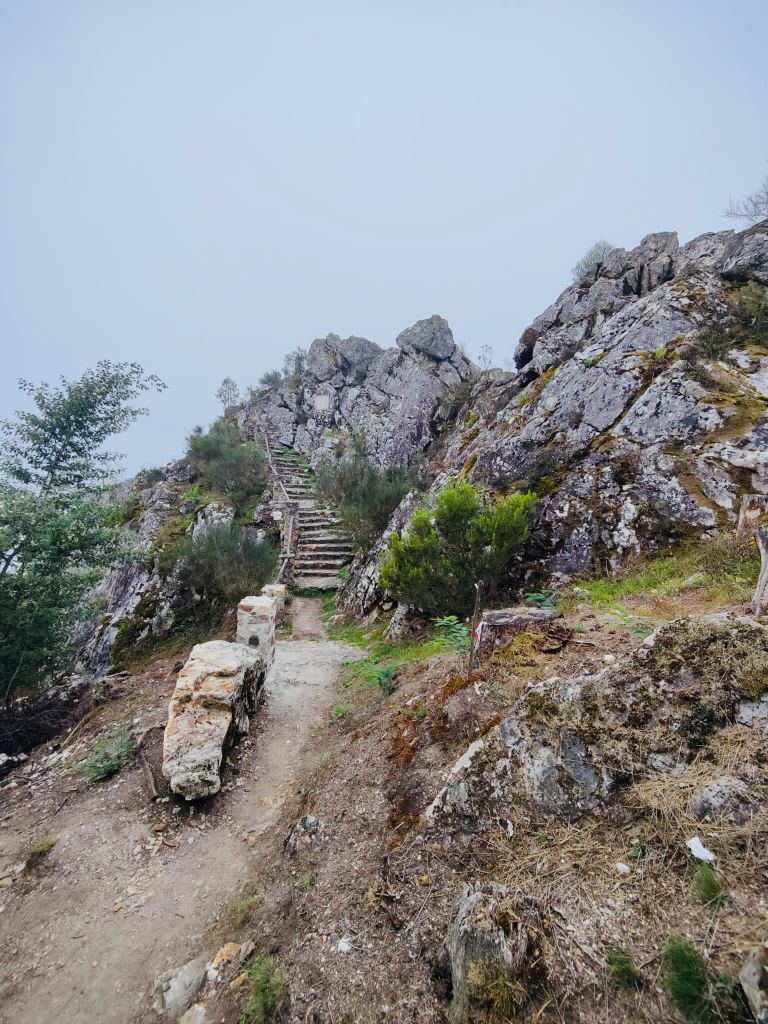


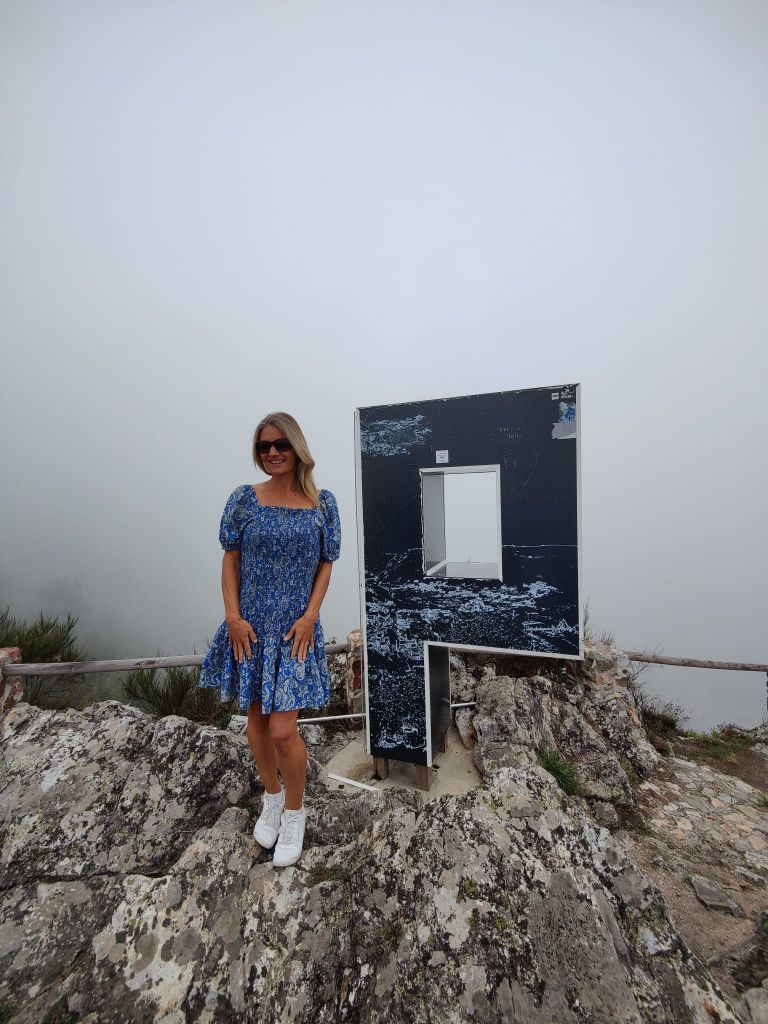





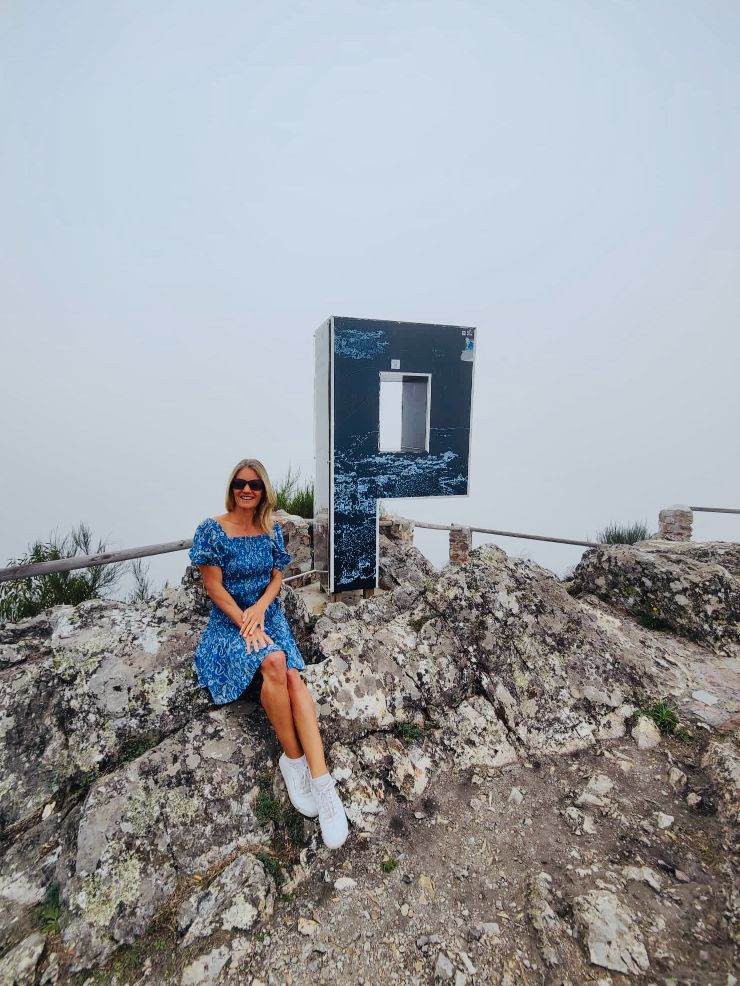


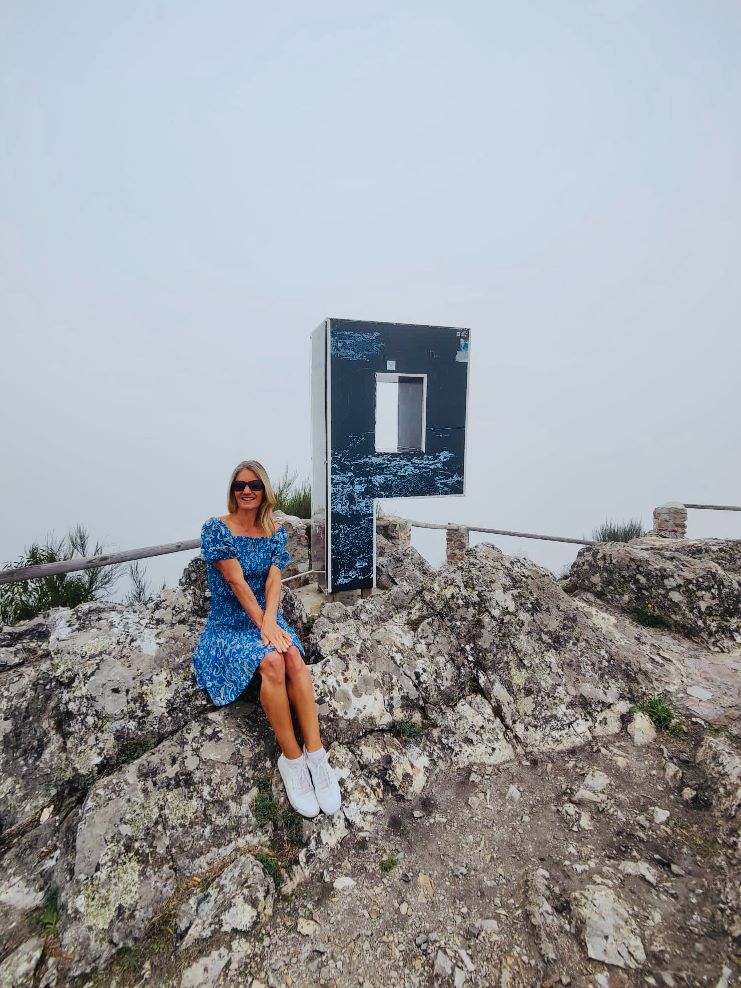


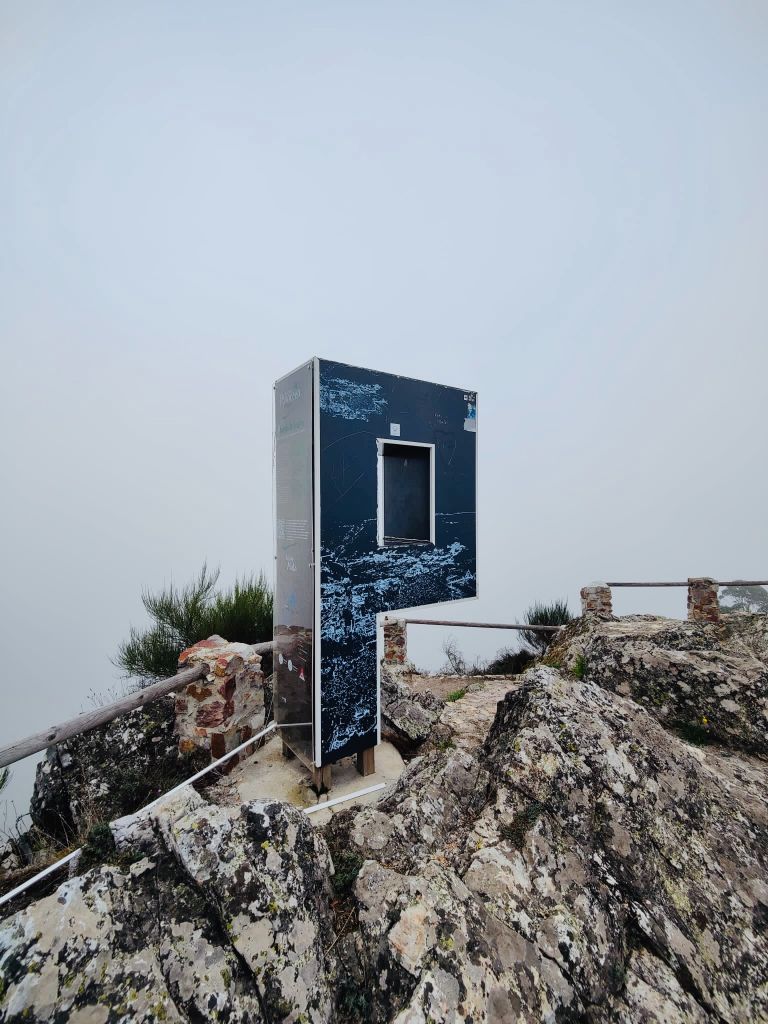


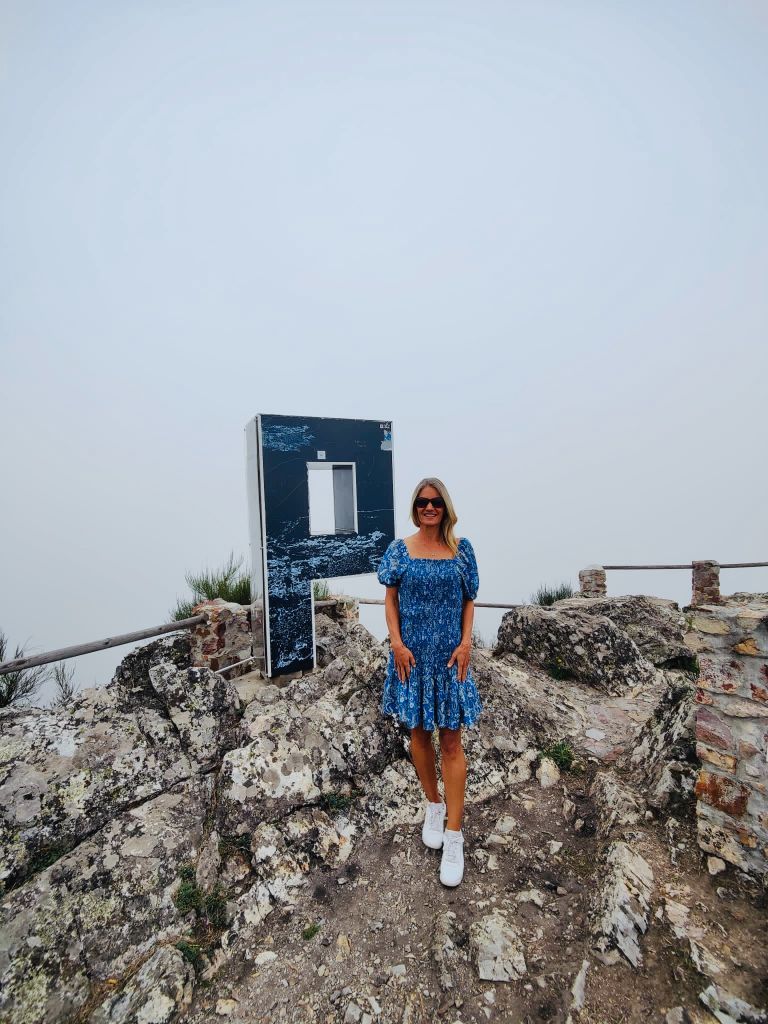


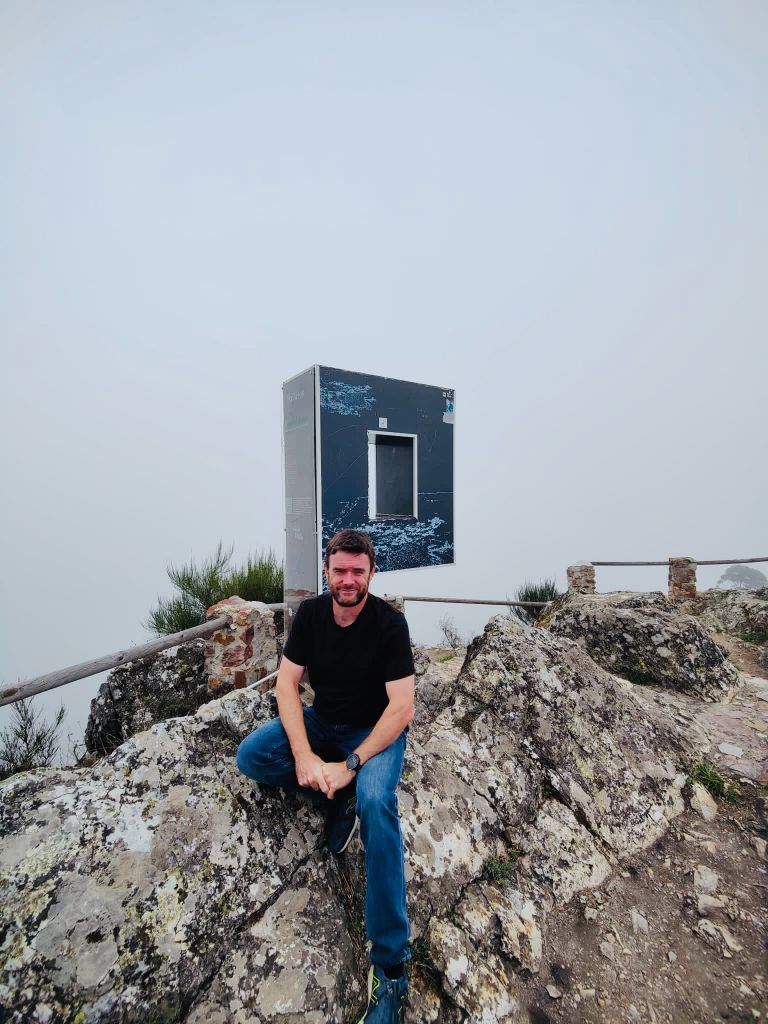


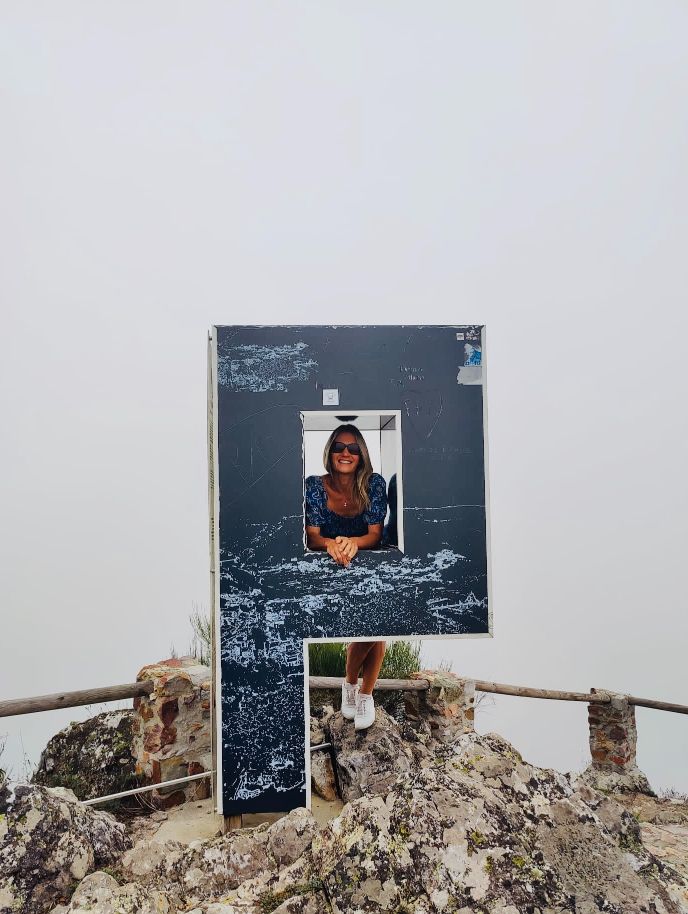


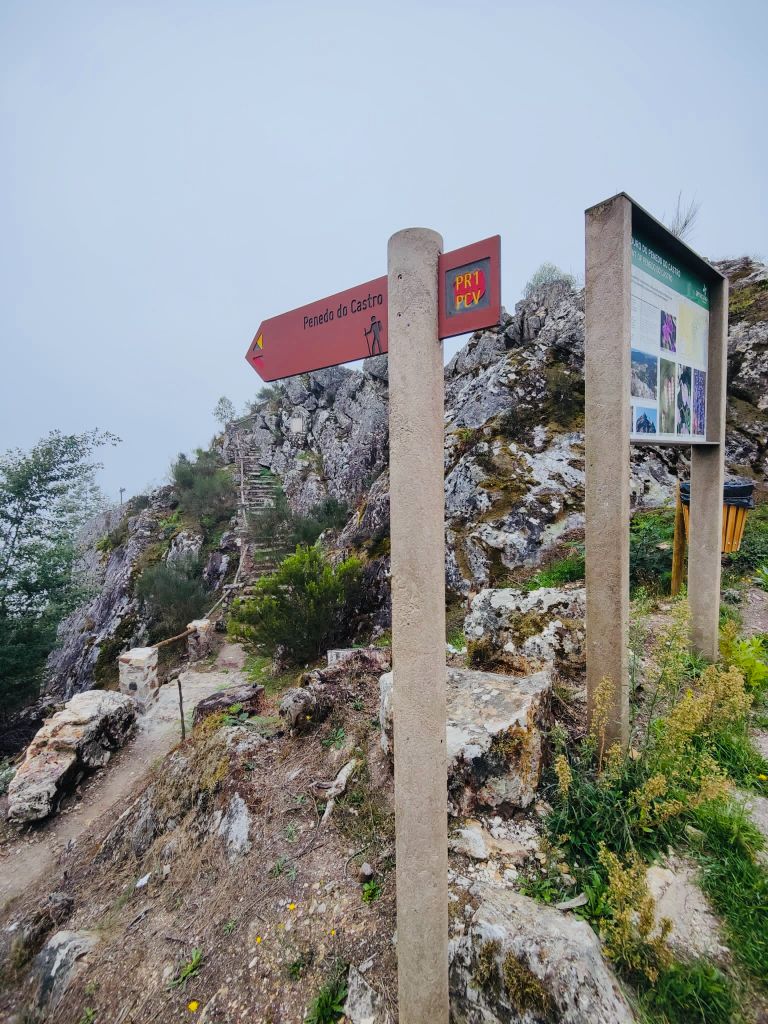


Passport to Paradise
Here is the Passport and the 3 places we visited today that are part of the trail:
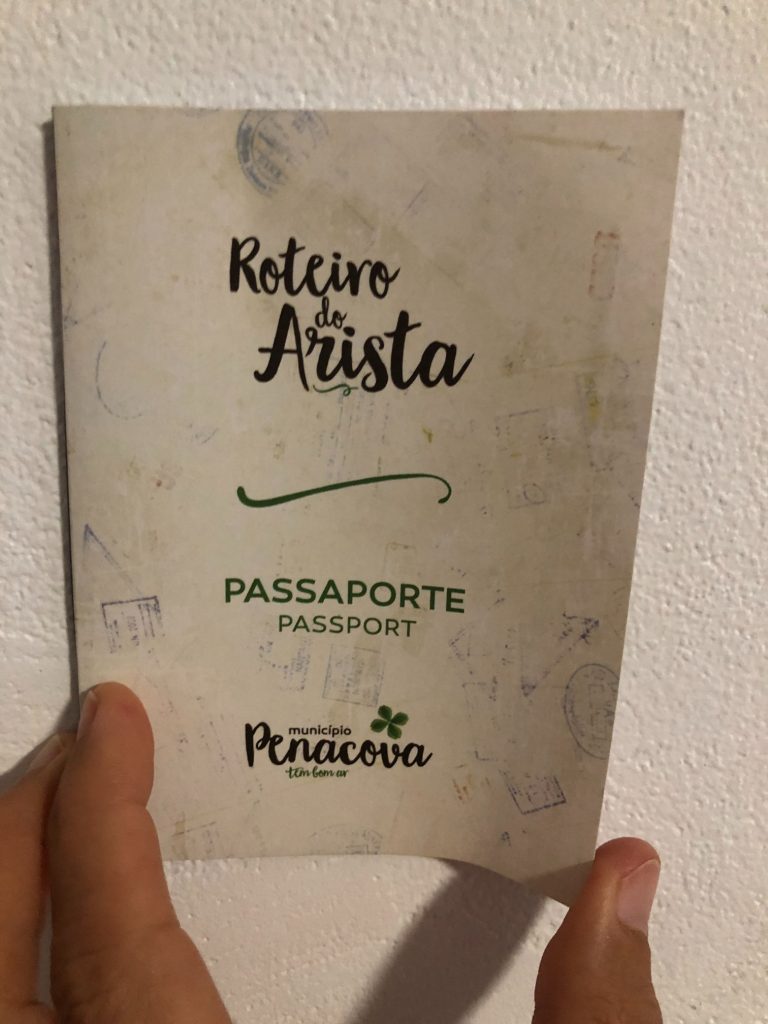


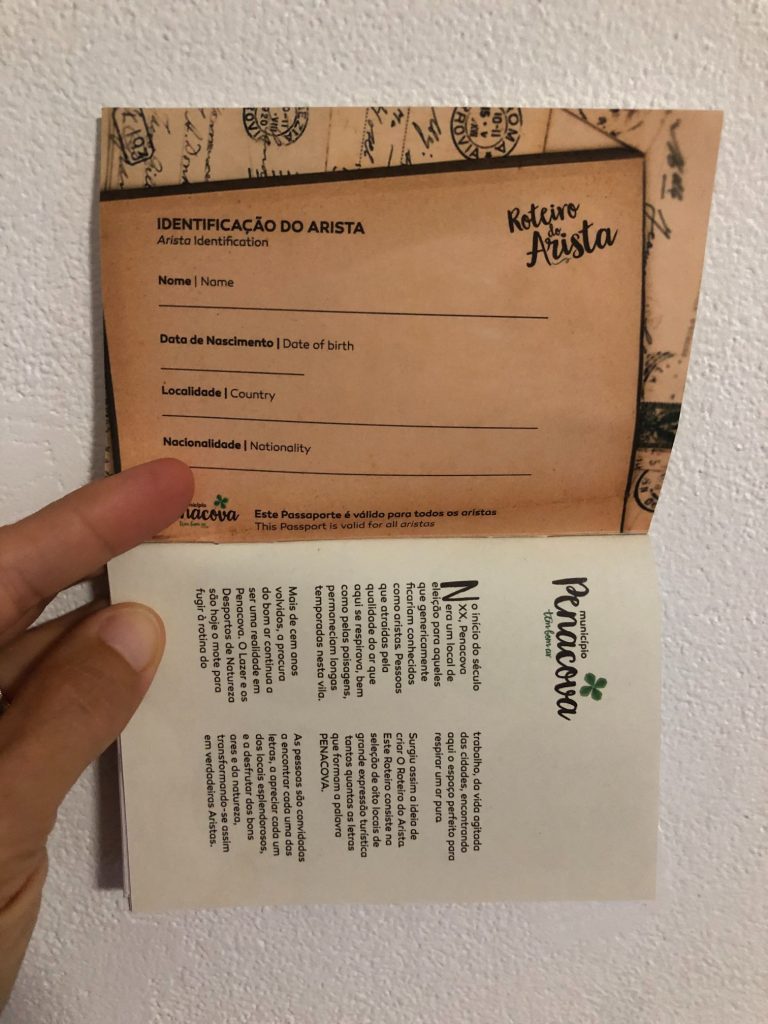


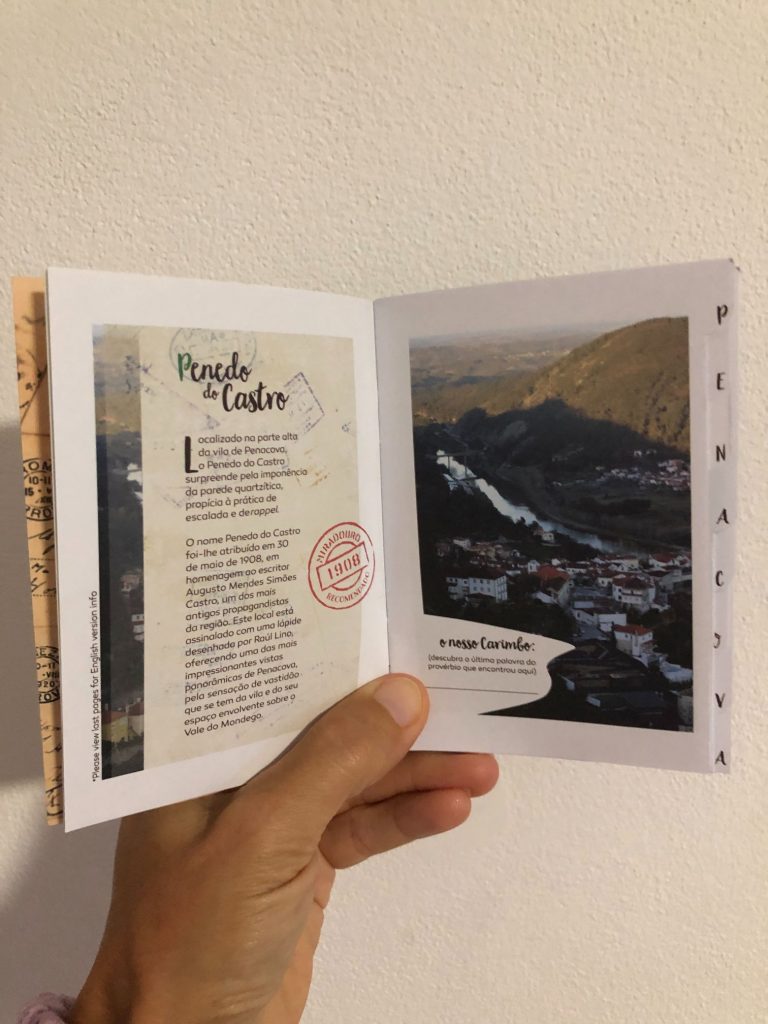








All Aboard the Crazy Bus – Pérgola Raúl Lino
With the weather hiding the serene landscapes on the horizon we decided to visit this wonderful ancient Monastery in nearby Lorvão. It closes during lunchtime and re-opens at 14:00 so we visited the heart of Penacova to see the sights and make a quick visit to the Tourist information Centre. The lady in the office only spoke a little English which I always find strange. If there is any form of employment or place that speaking another language would help you it’s a Tourist Information Office. We did have a laugh as the staff love to circle an attraction on a badly executed map, here it is, and they draw a little circle around it. We always rely on our GPS which is 99% accurate when we don’t loose signal. They also love to ask you where you live apparently for market research reasons. We always say Arganil which confuses them and the last bloke just said “I’m going to write U.K” I don’t think he believed us that we live here permanently. I had our usual couple funny dare all planned out and hubby was supposed to say “Shitterton” when they asked for our address location but due to the language barrier we decided to abolish our middle age fun on this occasion. Just in case your intrigued Shitterton is a hamlet in Dorset, U.K and I even have a similar West Country accent (Bristolian) to make it authentic. I’m not sure what hubby was going to do as his accent is 51% Essex and 49% Stroud (ha ha). I took a huge selection of leaflets as there are so many cool places to visit in the future. There are also some lovely PR Hiking trails which start from here and I found an Information Board right outside of the Tourist Office. I quite fancy the PR4 PCV Ribeira de Arcos.
We stumbled across a gorgeous viewpoint completely by accident and I fell in love with the charming pergola located right next to the City Hall building. “Pérgola Raúl Lino” was designed by the architect Raúl Lino and ordered to be built by Sociedade Propaganda de Portugal and was offered to the people of the village in 1918, since then, all those who visit it have enjoyed a pleasant balcony covered with old vines of wisteria that allows them to see the river, downstream, to the curve of the ridge. I loved the quirky additions, all aboard the crazy bus! The views from here are spectacular and are lower in altitude so no fog and way more impressive. It’s a good job that I don’t want to visit Faro anytime soon as I don’t think my thighs would manage 500 km and our old banger of a car might give up the ghost half way there (ha ha).
Here we encountered our 2nd brush with the GNR (Police). Hubby accidentally parked on a bus stop without realising it whilst we checked our phones for GPS directions and they politely moved us on. I have to admit that when they first asked us to wind down our window I nearly shit a brick (ha ha). The Police always send me into a sheer panic, I’m not sure why. Then I always have the theme tune from the American T.V show Cops in my head on a loop: “Bad boys, bad boys whatcha gonna do? Whatcha gonna do when they come for you?” (ha ha). This was a brief conversation and not like last time when we got pulled over on a busy roundabout as they were doing stops on random cars. They never checked our documents but asked us to pop the trunk of our car. I was panicking as I knew that there were 3 semi-inflated lilo’s and several wet towels in there and once opened it was never going to shut again without a fierce struggle. I tried to explain but I think they thought I had a dead body in there and low and behold, the Policeman popped open the trunk and was hit directly in the face with a couple of inflatable lilo’s. I didn’t know if to laugh or cry! I still blame my daughter (Teanna) for being stopped as she was sat in the back seat and I think the Police assumed she had drugs stashed in her huge afro pom pom (ha ha).
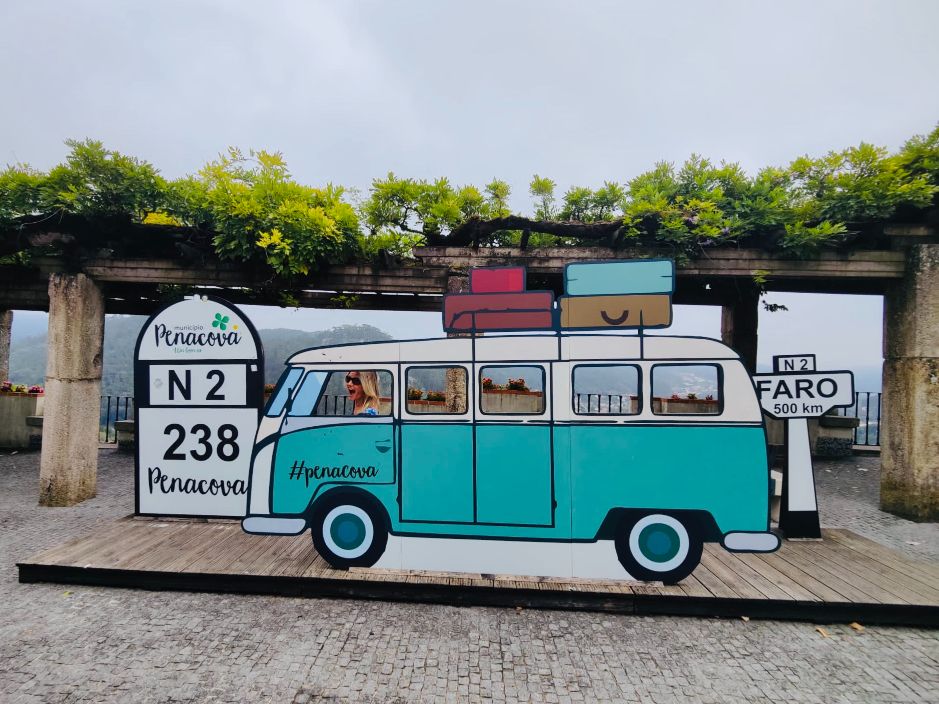


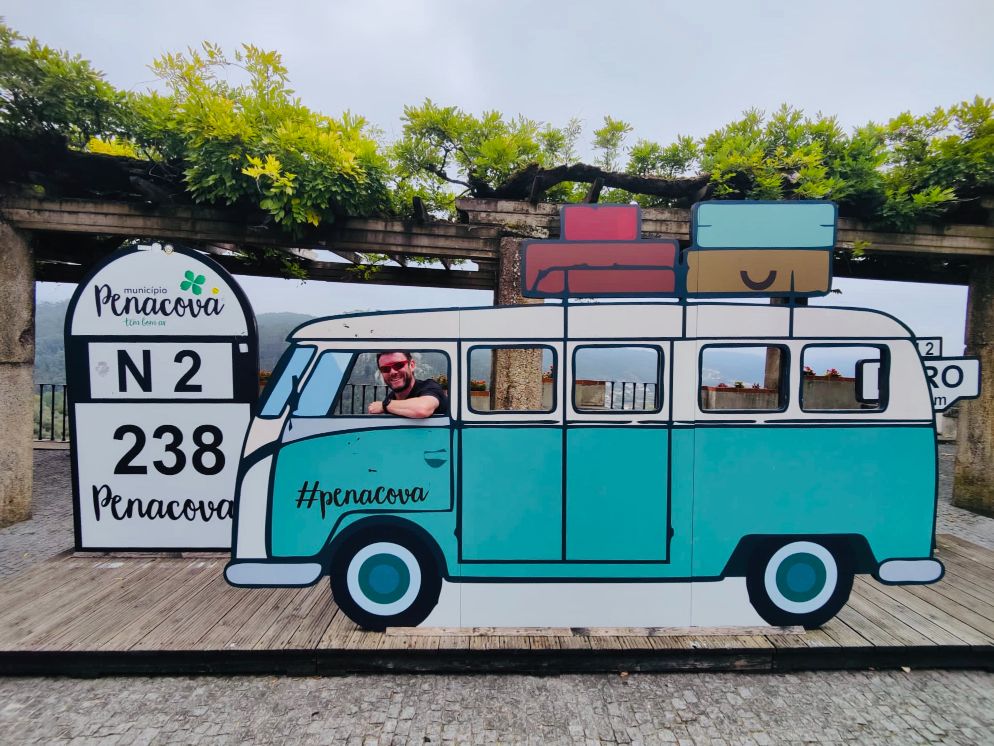





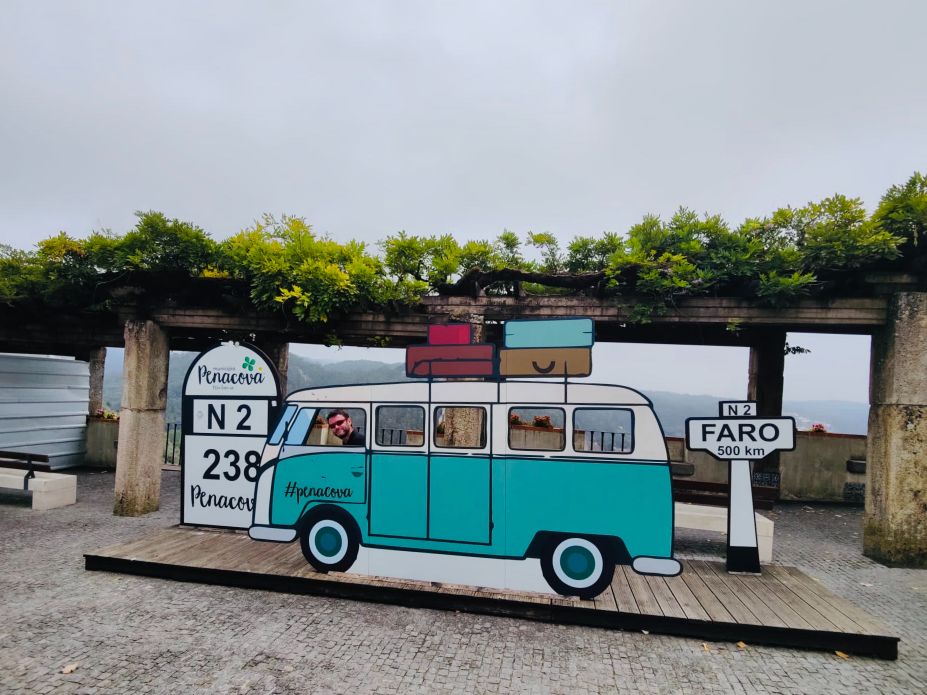


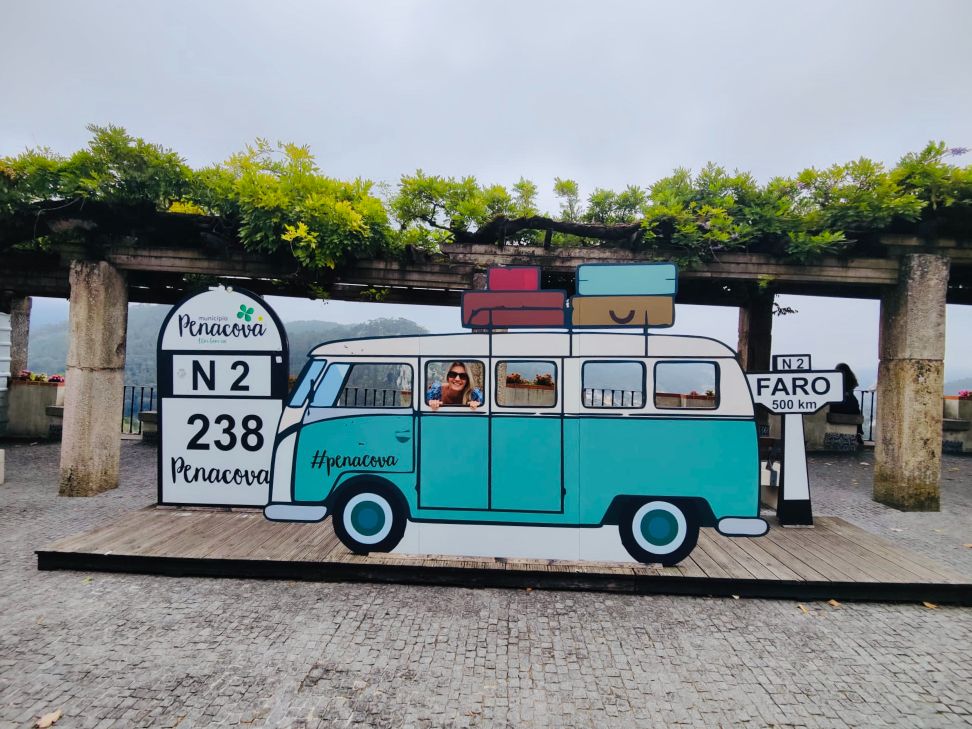

















Picturesque Penacova – Pérgola Raúl Lino
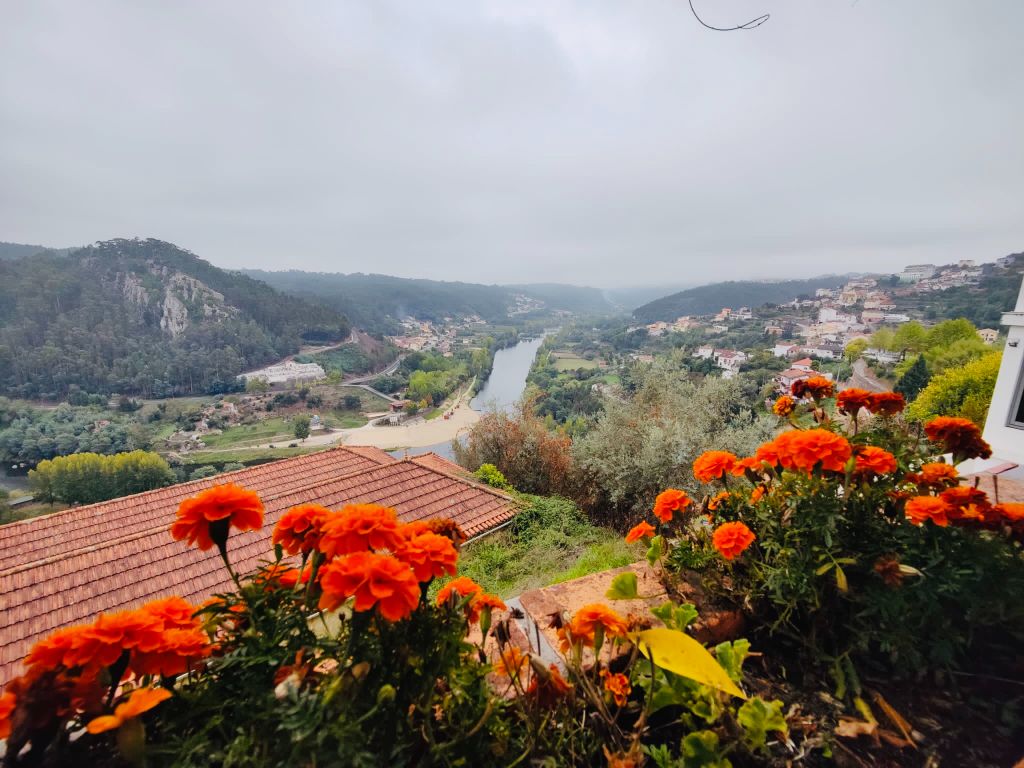





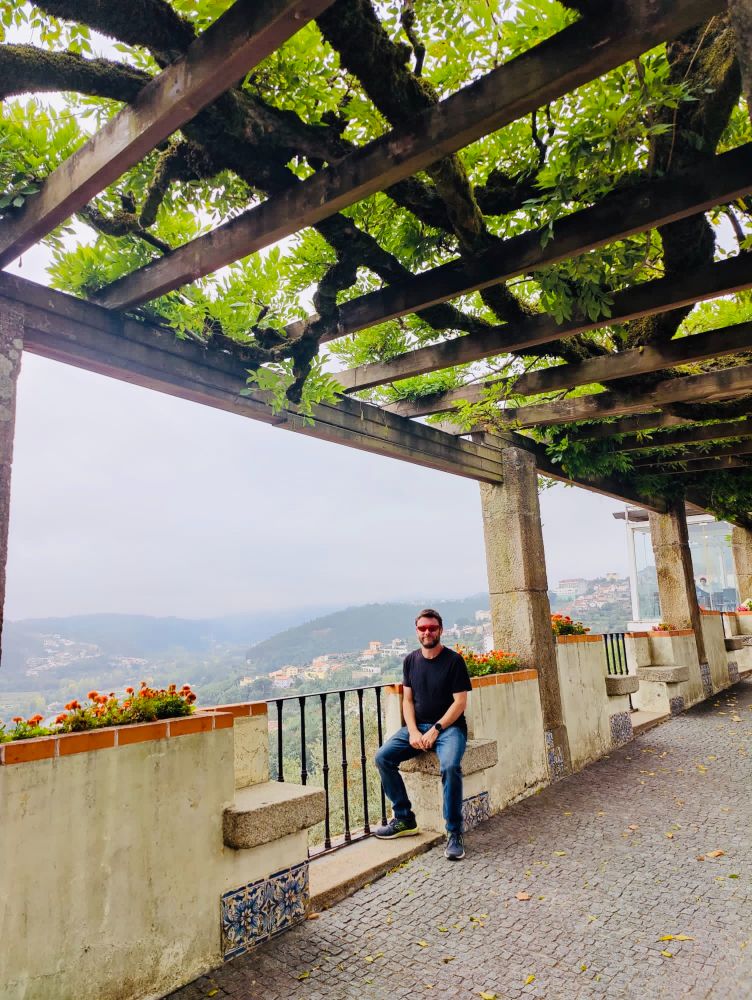


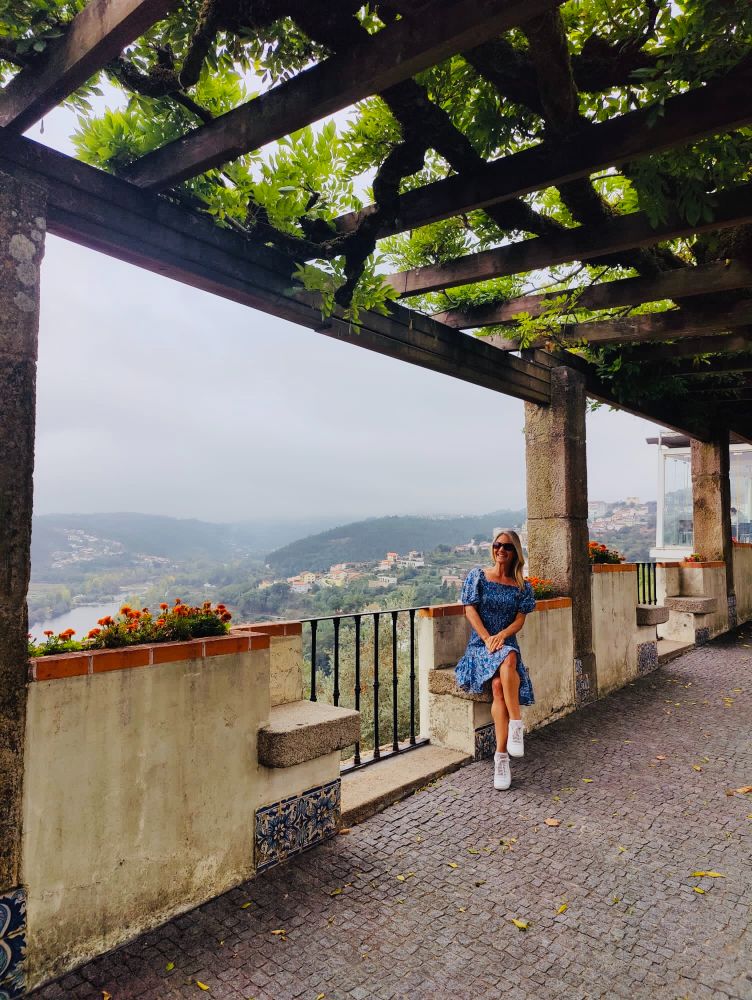





Peckish in Penacova – Gastronomy
If you are feeling a little peckish Penacova has many main delicacies such as Lamprey rice (Fish dish) made with “Malandro” rice which includes ingredients of wine, garlic, bay leaf and carolino rice. Other dishes to try are: Chanfana (Goat dish), Miscaros rice (Wild mushroom), Serrabulho (Pork dish) and plenty of fried river fish. Are you hungry yet?
Mosteiro de Lorvão
GPS Coordinates: N 40º 15′ 34.28” ,W 8º 19′ 2.57
Opening Hours
09:15-12:45 | 14:00-17:45 (Monday to Saturday)
09:15-10:30 | 14:00-17:45 (Sunday)
Mass: 11:30 (Sunday) 18:30 (Wednesday)
Last entry for the guided tour is at 12:15 and 17:15
Note: visits will always end one hour before any Religious Service.
Closed: January 1st, Easter Sunday, May 1st and December 25th
Price
Entrance – €3 Adult Ticket
Discounts
Groups 20+ people €2.50 per person
Groups 40+ people €2 per person
Free entry: Children up to 12 years old, Church Visits, Sundays and Public Holidays until 13:00
History
I picked up an impressive glossy leaflet at the Tourist Info Centre. Leaflets are also available at the Monastery. It was so glossy that I accidently picked up 3 because they stuck together in all their shiny and satin sheen glory. Information about the Monastery is written in English on the reverse of the literature and to save me typing it all out I have taken a photo of the leaflet as the history of this place is simply fascinating and in my opinion worth a read.






History Nerds
You can find out more about the history and legends on this Website:
https://mosteiro-de-lorvao.webnode.pt/
Lorvão Apocalypse
The Apocalypse of Lorvão and the Livro das Aves (Book of Birds) are illuminated manuscripts dating from 1189 and 1184 and produced by the monks of this Monastery. They consist of two medieval masterpieces, which are currently located in the National Archives of Torre do Tombo, Lisbon. The Lorvão Apocalypse was included in the Memory of the World Register in October 2015.
Our Epic Experience
We parked our car a couple of minutes down the road in the designated car park. There were a few cars parked right outside but the alleyways and streets are very narrow so we didn’t want to block any access or annoy the villagers so found a great spot in a free car park by the playground. As we were sitting in the car park waiting for the Monastery to re-open after lunch, hubby received his email from SEF to make an appointment for his WA Biometrics Card. We were both shocked as we didn’t know that SEF were already offering dates to the Coimbra region. Hubby is usually first dibs when it comes to pecking order as his initials are AA so he is always first alphabetically, lucky him. Shortly after I also got my invite so we booked our appointments for October 2022. Little did we know that our old banger of a car would break down days later so we would have to re-schedule and the only dates left would be December close to Christmas. Oh well, I feel a Coimbra City Christmas shopping spree on the cards. I found the Roteiro de Arista Letter E in the grounds of the Monastery so I took a photo opportunity (of course). The gardens are very pretty with a cute little fountain so we spent some time here hugging a few trees and admiring it’s glory and all the crazy crochet/yarn bombing on display, how wonderful! It was difficult to capture a photo of the whole Monastery exterior as it’s so big and wide, a bit like me after eating all the Portuguese cakes (ha ha).
Upon entering there was no visible ticket office but we were shortly approached by a pleasant man who was currently giving a tour to a small group of people. He started talking to us in Portuguese. Hubby is usually really good and immediately says “Falas Ingles” (Do you speak English) and they usually reply with “A little”. For some unknown reason hubby never asked the all important question. He just stood there next to me and let the man ramble on for a good 2-3 minutes. I was confused but got the gist of what the man was saying. We had to go in the direction towards the right and pay €3 entry fee and wait. It appears that you can’t just freely wander around and need to be escorted in small groups with an official tour guide. We waited by the desk and a few minutes later the same man returned and we joined his small group but not before the usual routine of him asking us if we speak Spanish or French. I’m not sure my GCSE grade E in French is going to be of any assistance and I never understand why they always ask us this, I find it weird. I can’t remember the man’s name but he was awesome and very knowledgeable indeed and said that we could ask him questions if we liked. The funny part was that although he spoke to us in English it was only about 25% English and the rest was Portuguese but I kind of understood some of the information thankfully. We visited 2 secret locked rooms on the tour which had various interesting artefacts. Our tour took about 1 hour and we were a small group of 8 people.
The Monastery is also known as The Monastery of Santa Maria de Lorvão. It is one of the most ancient Monasteries located in Europe and dates back as far as the 6th Century. It is located in the majestic Lorvão Valley amongst mountains and an abundance of fresh air to breathe. It was once a male monastery for Cistercian monks, then a female monastery for nuns, then eerily a psychiatric hospital which closed in 2012, which brings us to the present day: A beautiful restored Monastery and Museum od Sacred Art. It was declared a National Monument in 1910 and there are plans to transform the wings of the Monastery where the psychiatric hospital was into a five-star hotel. It was an important Monastery and production centre for illuminated manuscripts in the 12th Century. There were so many interesting features to see, where do I start! It is home to the magnificent silver Tombs of Sancha of Portugal (Lady of Alenquer) and Teresa of Portugal (Queen of León) made in 1715 by the Porto goldsmith Manuel Carneiro da Silva. I fell in love with the altars, all the gilded bronze, gold and wood. My firm favourites were the unique ornate wrought iron and gold grille (railing) that separates the church and choir. Above it there is an organ with 2 extraordinary rococo style façades built by António Xavier Machado Cerveira in 1795. I also have a thing for wood and doors so I was impressed by the main black wood and bronze entrance door and the delicately sculpted handmade high backed choir chairs made from walnut and jacaranda wood from Brazil with figures of the Holy Saints surrounded by foliage intricately carved into them. There is also an impressive figure of the Virgin Mary and a 14th Century statue of Nossa Senhora da Vila located on one of the side altars of the choir, also known as Santa Maria de Lorvão and Our lady of Life.
The Renaissance style Silence Cloister is spacious and oozes serenity with its graceful columns, harmonious centre stage fountain and ancient inscriptions carved on the floor. I can imagine that the monks spent quality here meditating and reflecting on life. The different types of architecture including my favourite: Baroque, is out of this world and literally took my breath away. The stonework, statues, cherubs and angels, rich and vibrant tapestries, traditional Portuguese tiles, inscribed and mosaic floorings, manuscripts, interesting works of art/paintings including one by Pascoal Parente all tell a different story and there is a spectacular collection of grand artefacts to view in every nook and crannie. I nearly fell over as I got dizzy from looking up at the amazing vaulted ceiling. There are pretty white flowers dotted all around the church which adds to the ambience. The Museum was unfortunately closed for a refurb when we visited but we were led into 2 secret locked rooms to view various pieces of sacred art with a fascinating history. One smelt really musty which one lady seemed to have a problem with. I just think it adds to the character and experience but I’m used to bad smells as hubby farts way too much and more than the normal average person. It’s something I’ve learnt to live with and I semi-grin and bear it as he has many other positive qualities but I just can’t think of any at this precise moment (ha ha). It’s Century old furniture and old wooden ceilings Karen, it’s not going to smell like a bunch of roses or an Ikea Billy Bookcase (ha ha). Our tour guide was extremely knowledgeable and helpful I just wish I could understand more of what he was saying. I was a little lost in translation.
Outer Beauty Attracts but Inner Beauty Captivates
It appears that Monasteries are very similar to people: Outer beauty attracts, but inner beauty captivates!
Monastery Interior
I had to make these photos LARGE, you will see why. One word: WOW!
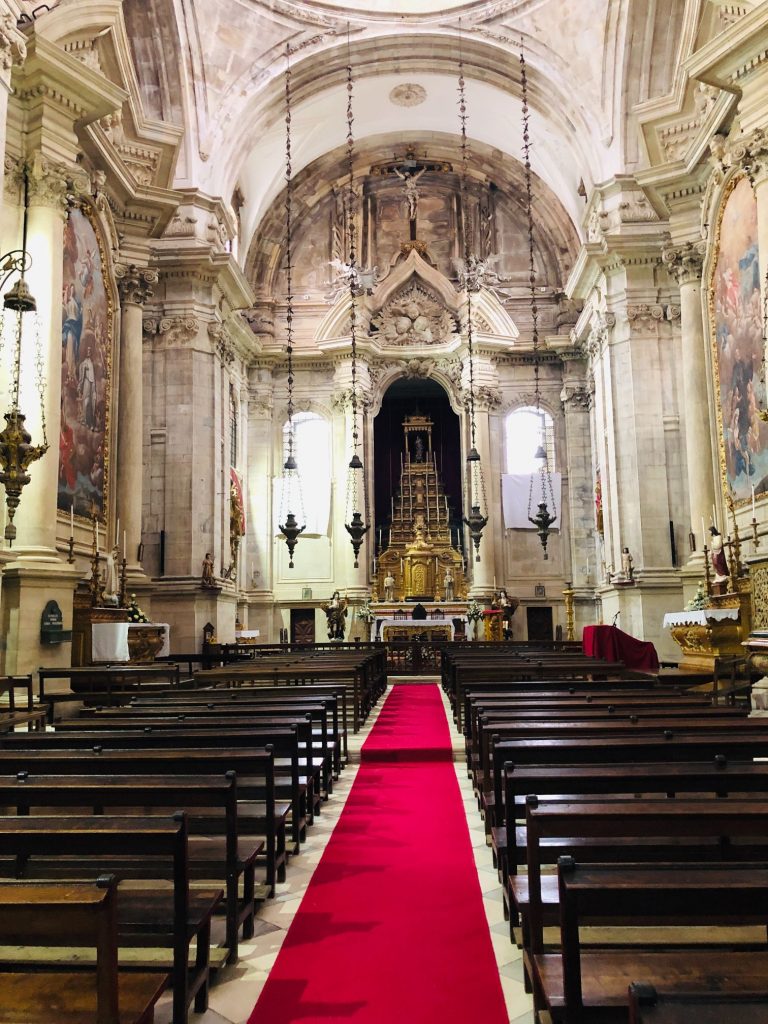





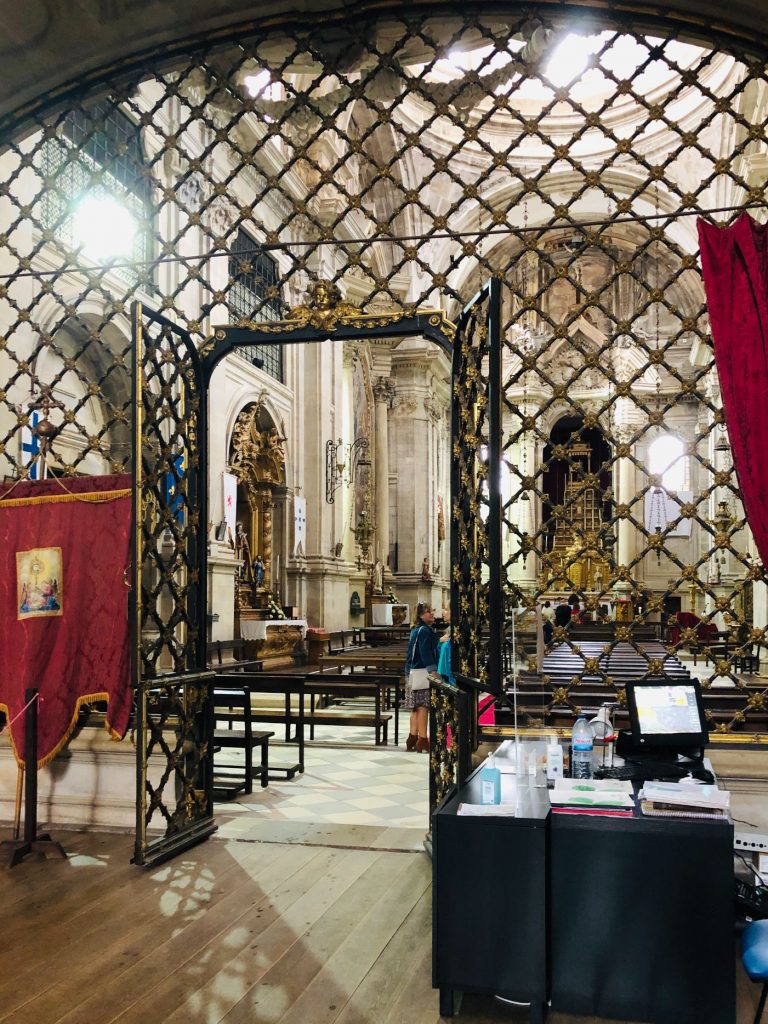


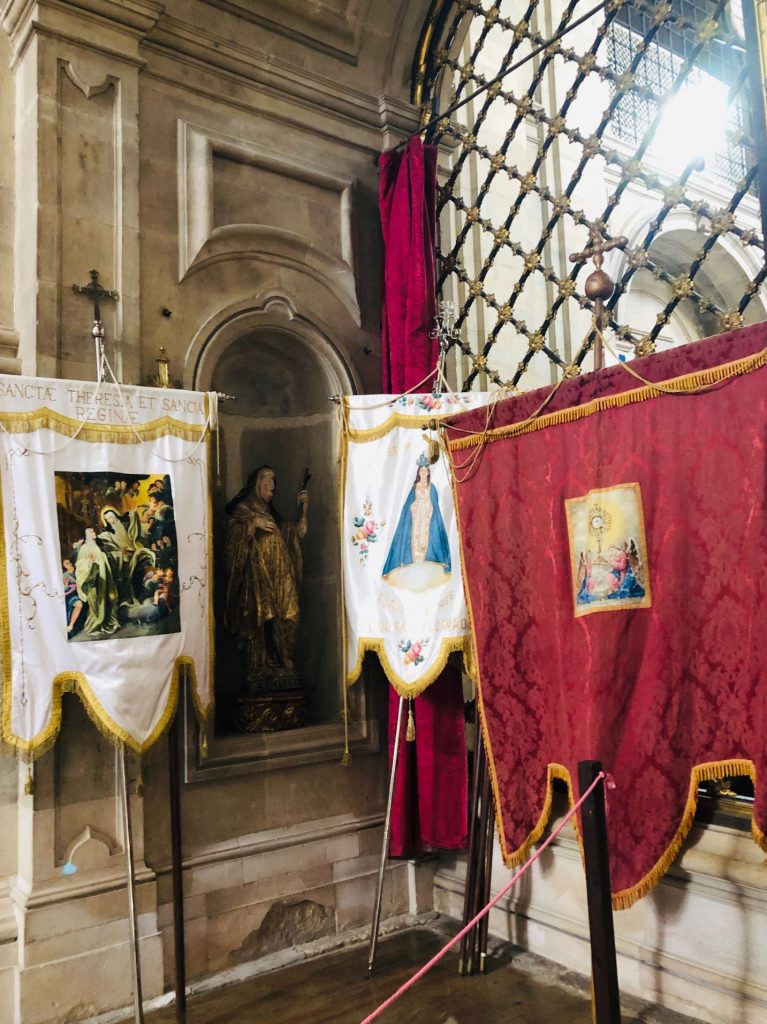


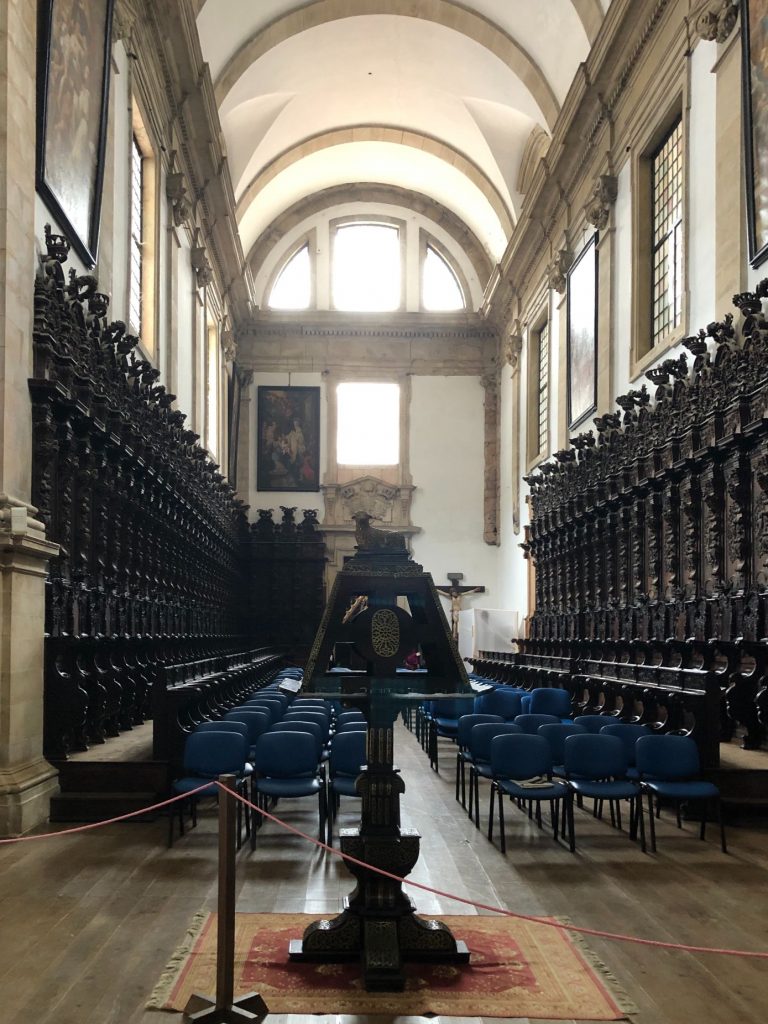


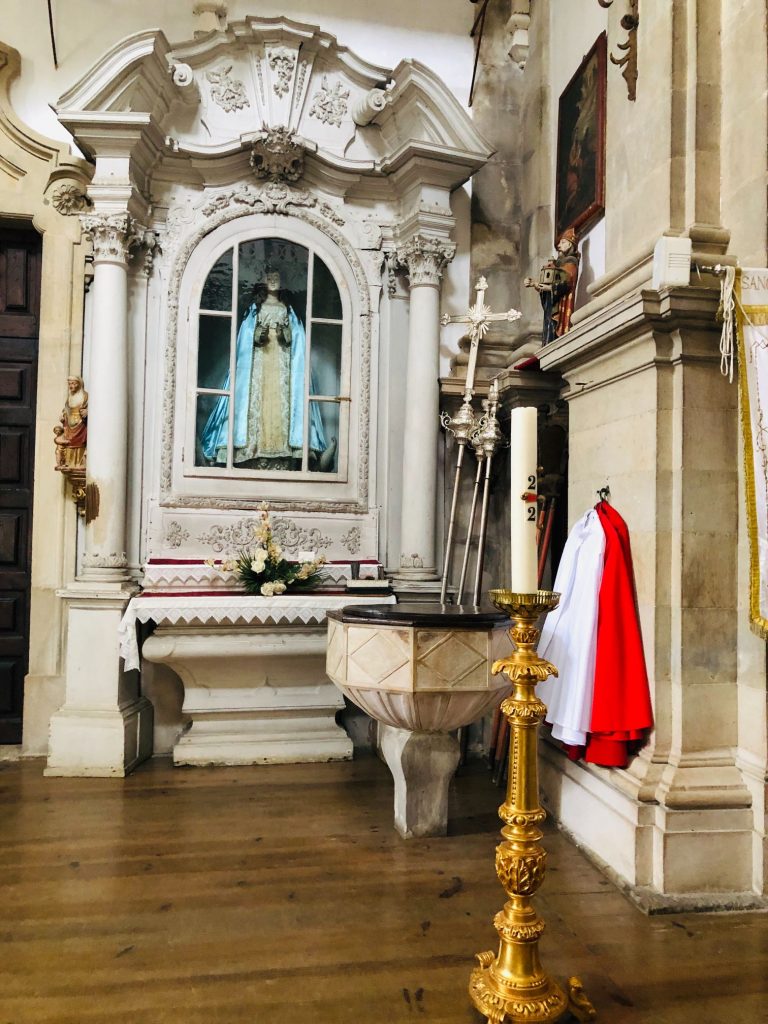





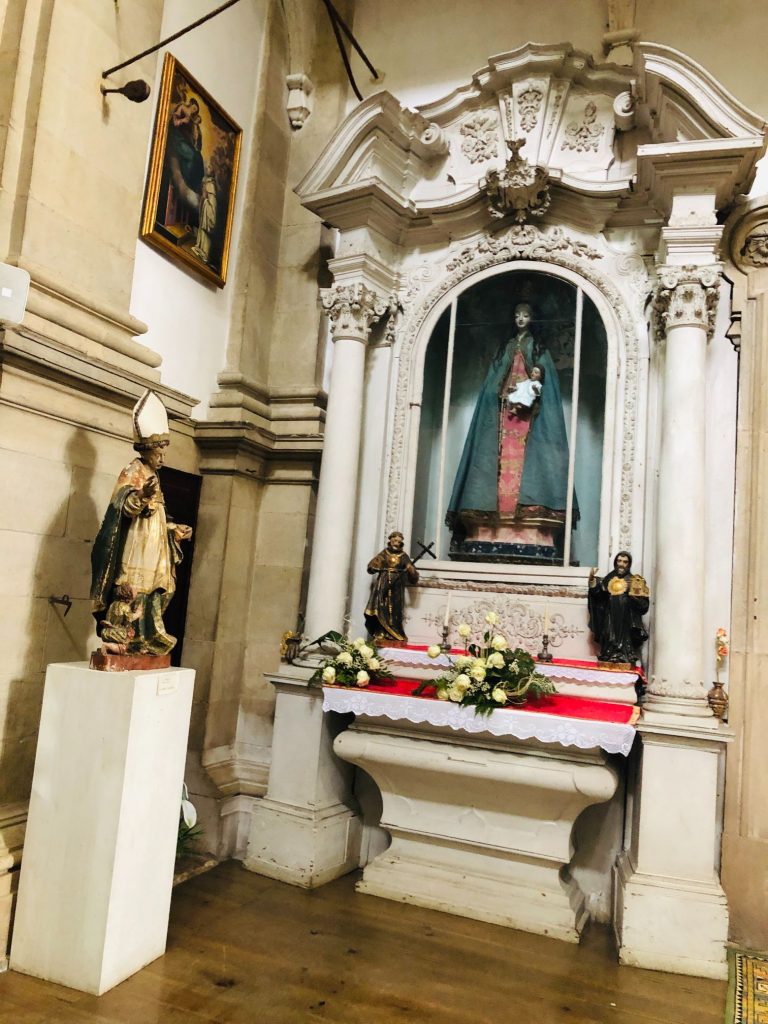











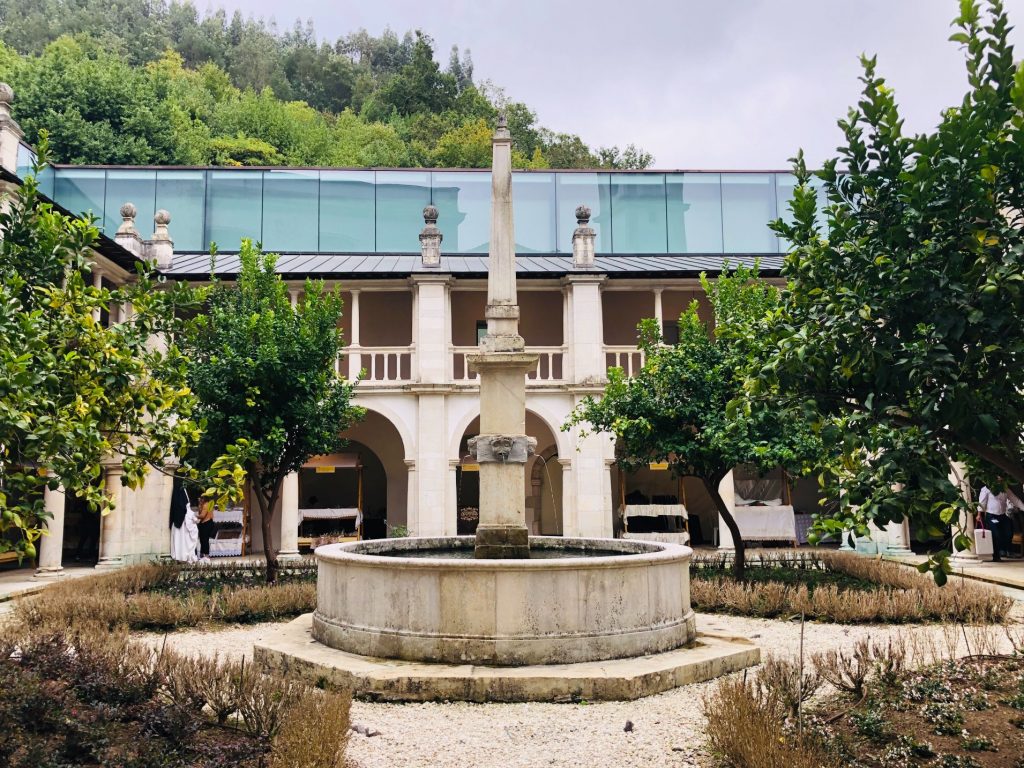


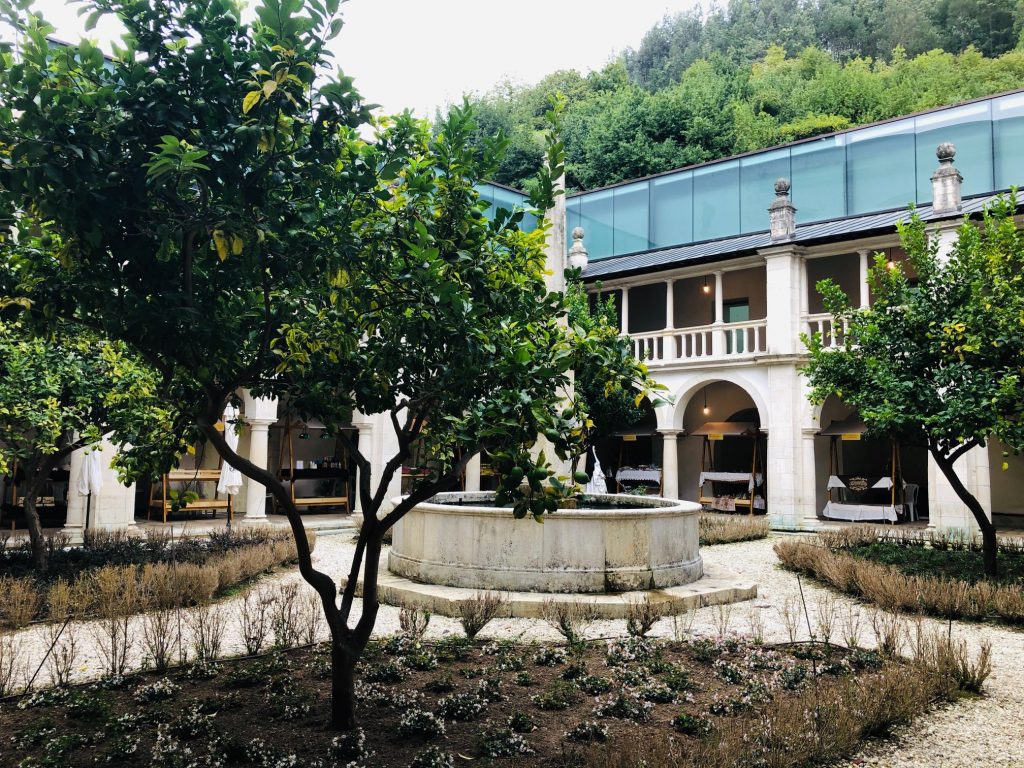





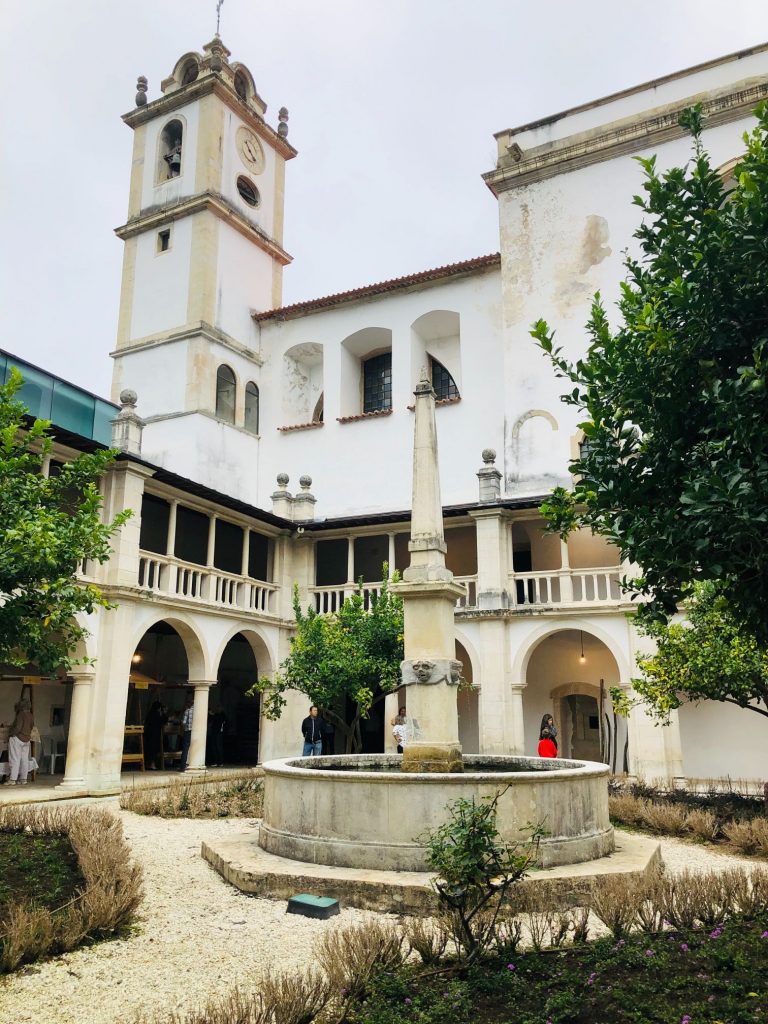


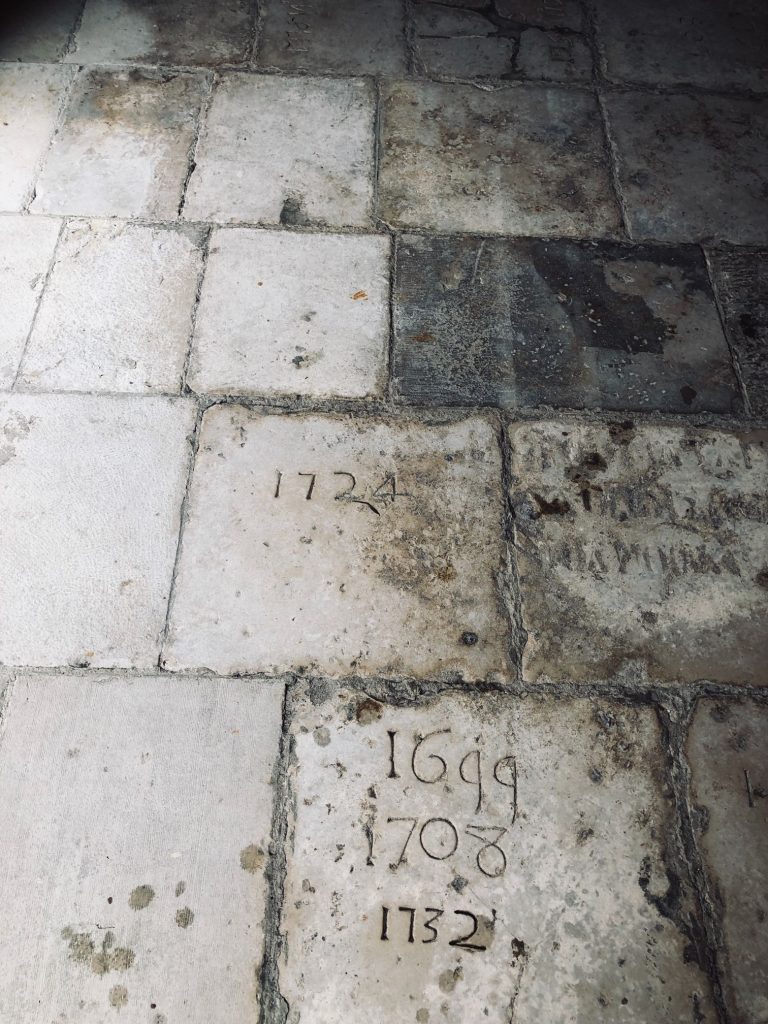


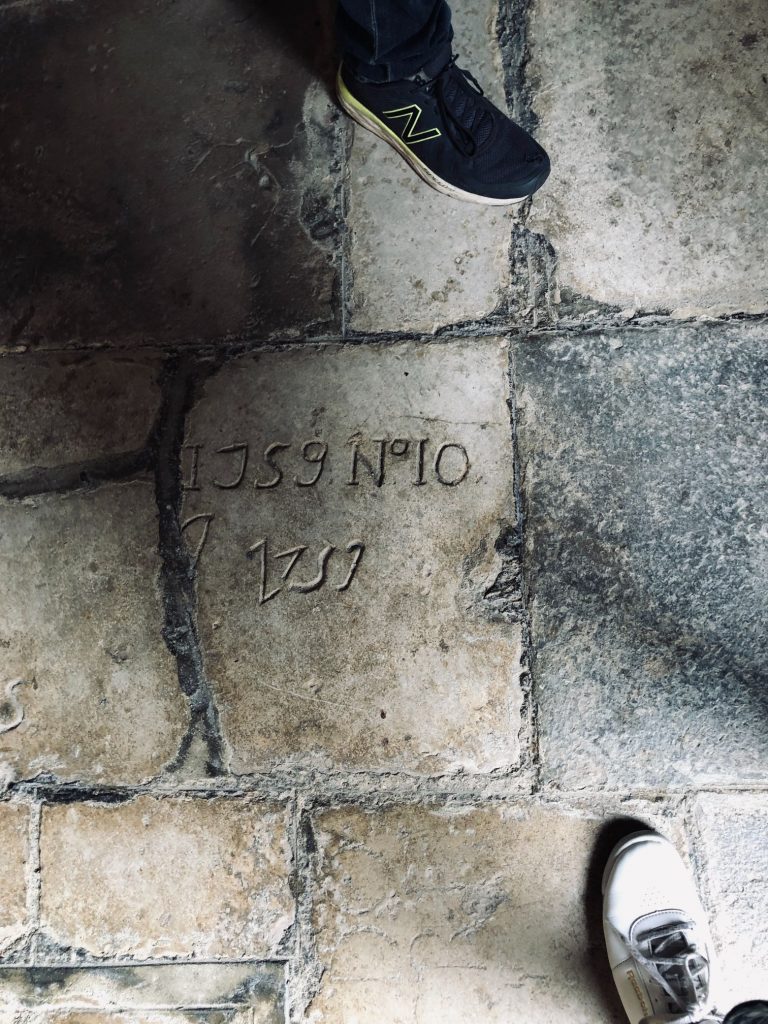


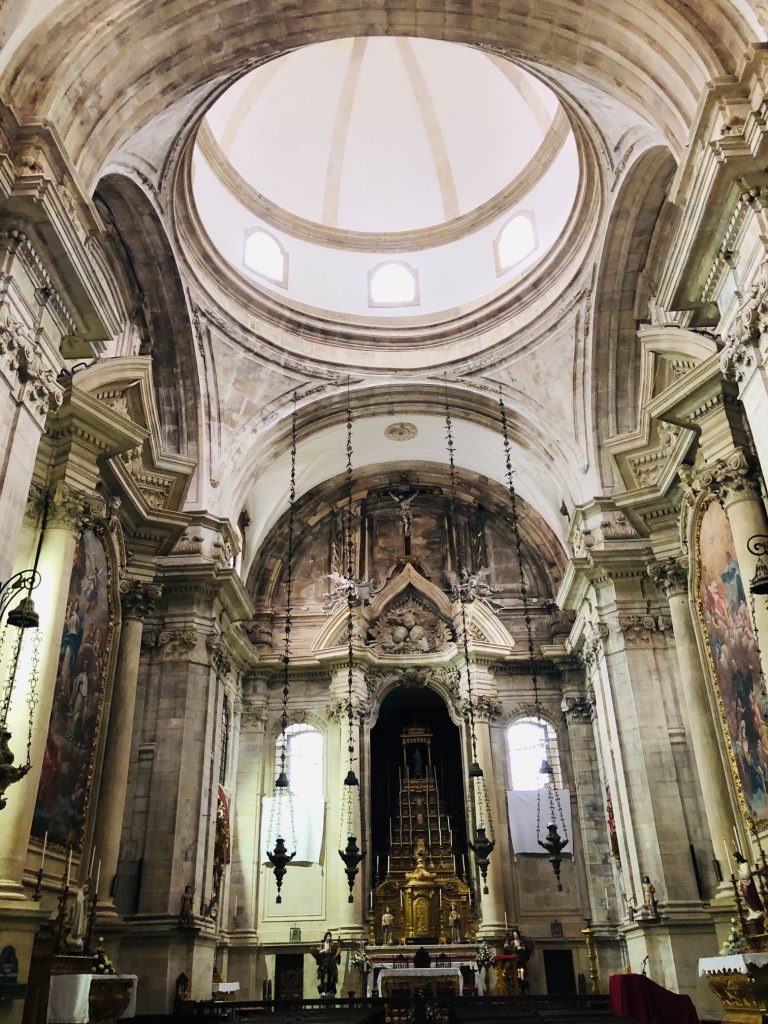





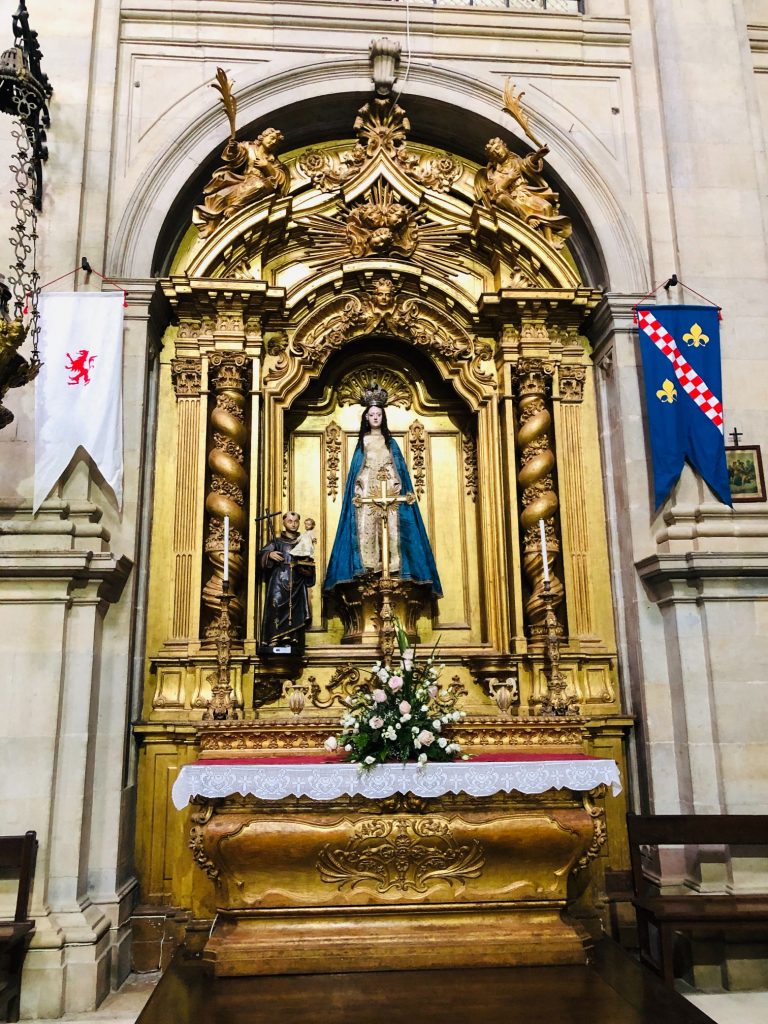








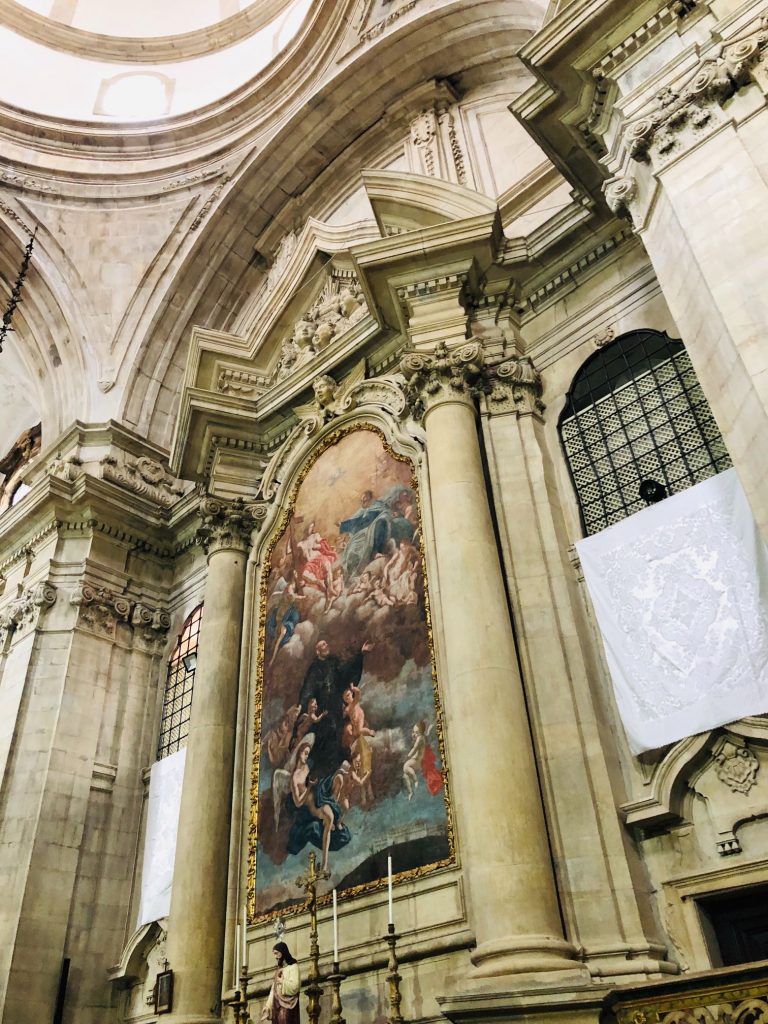


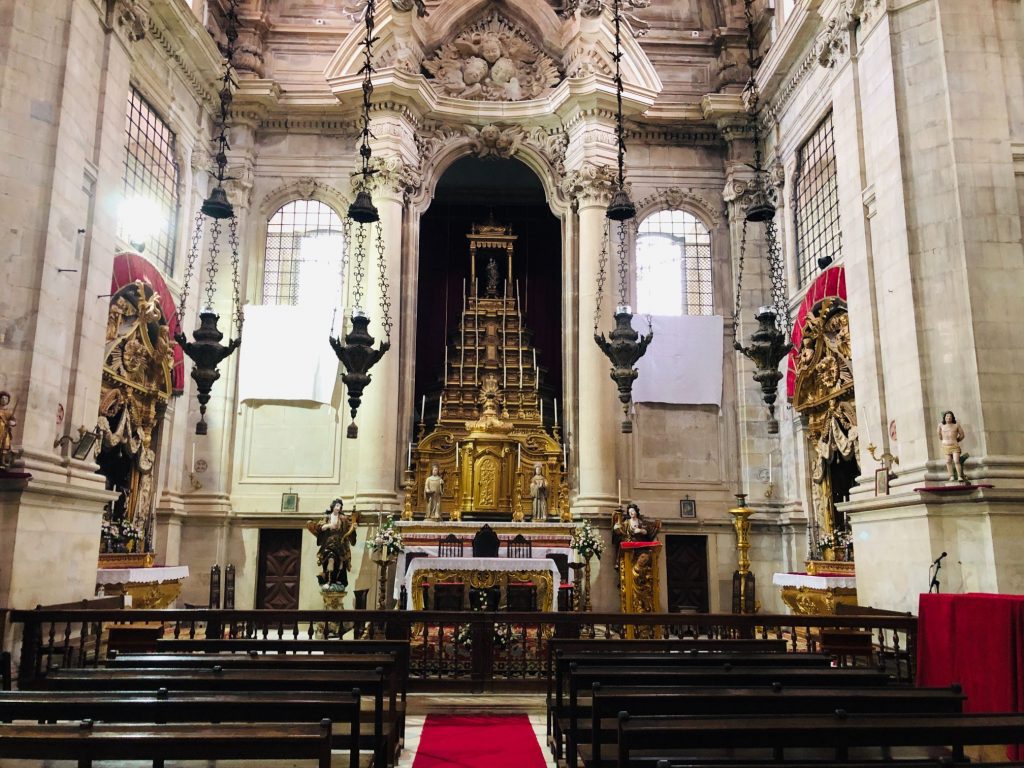


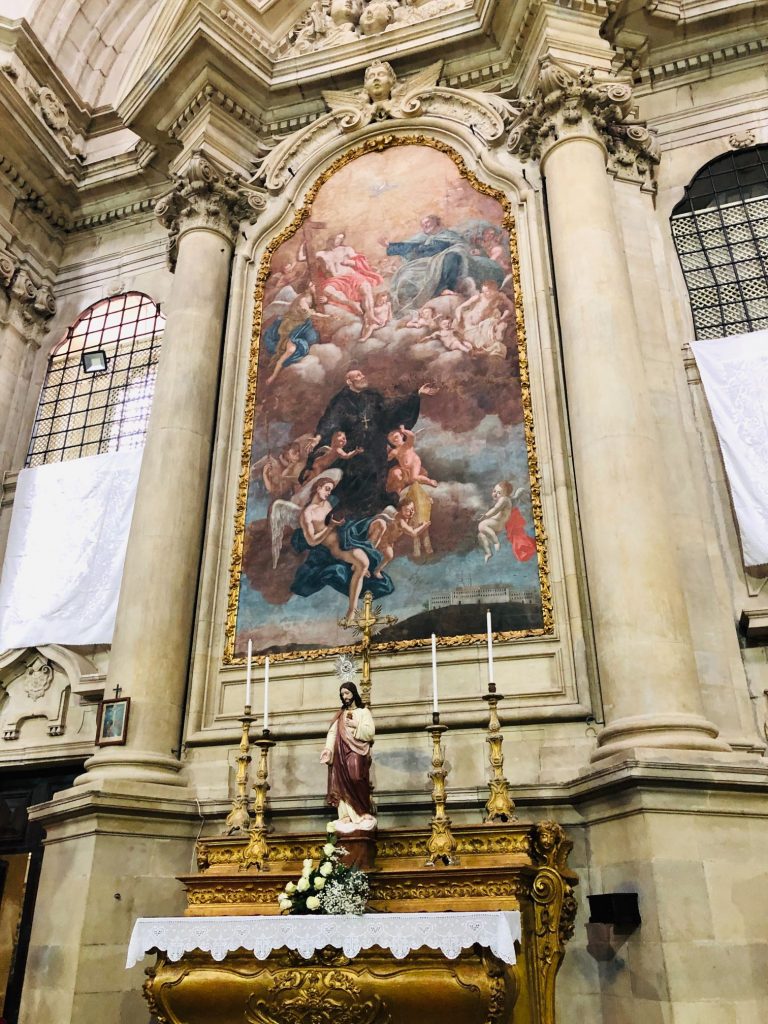





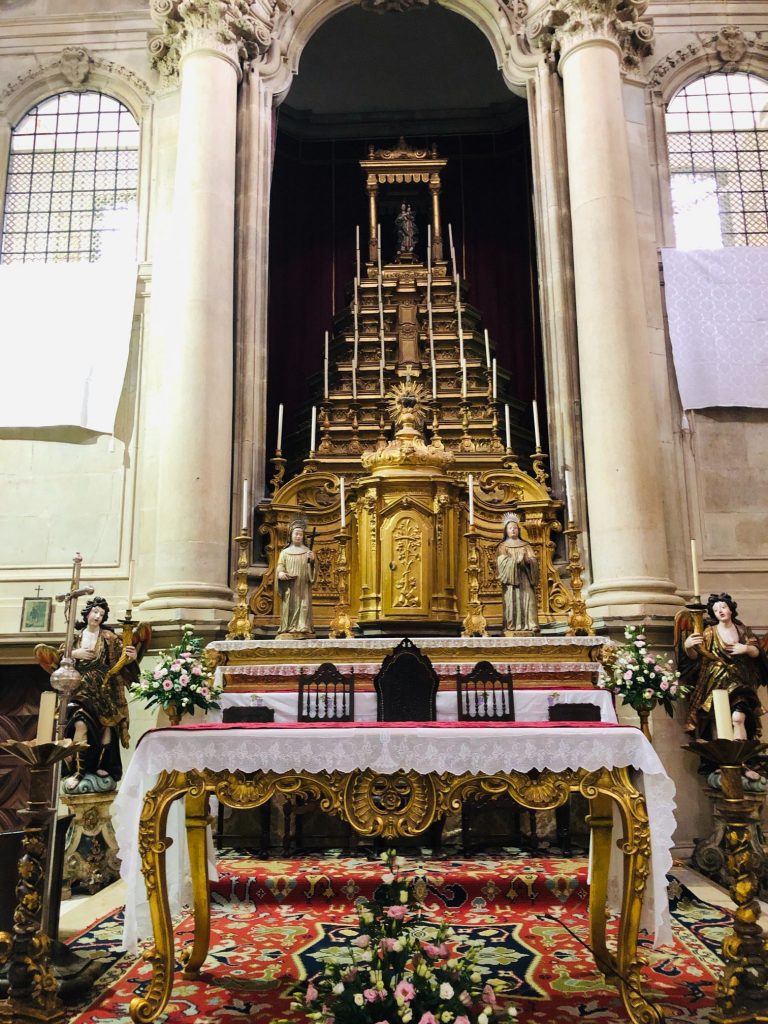


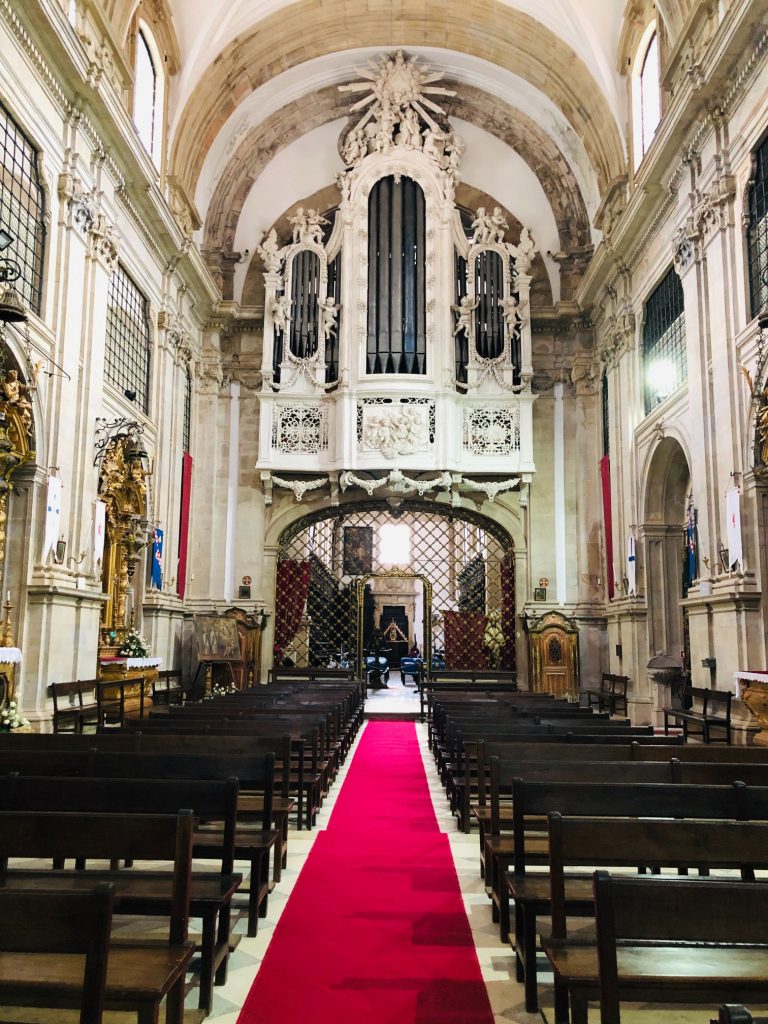





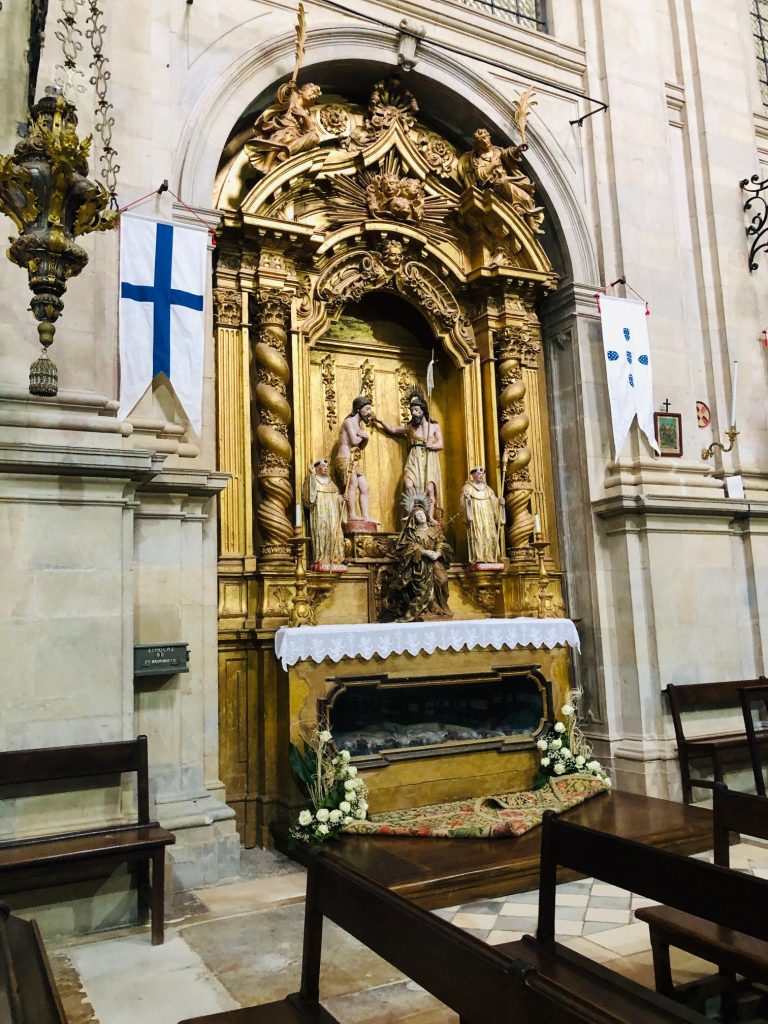


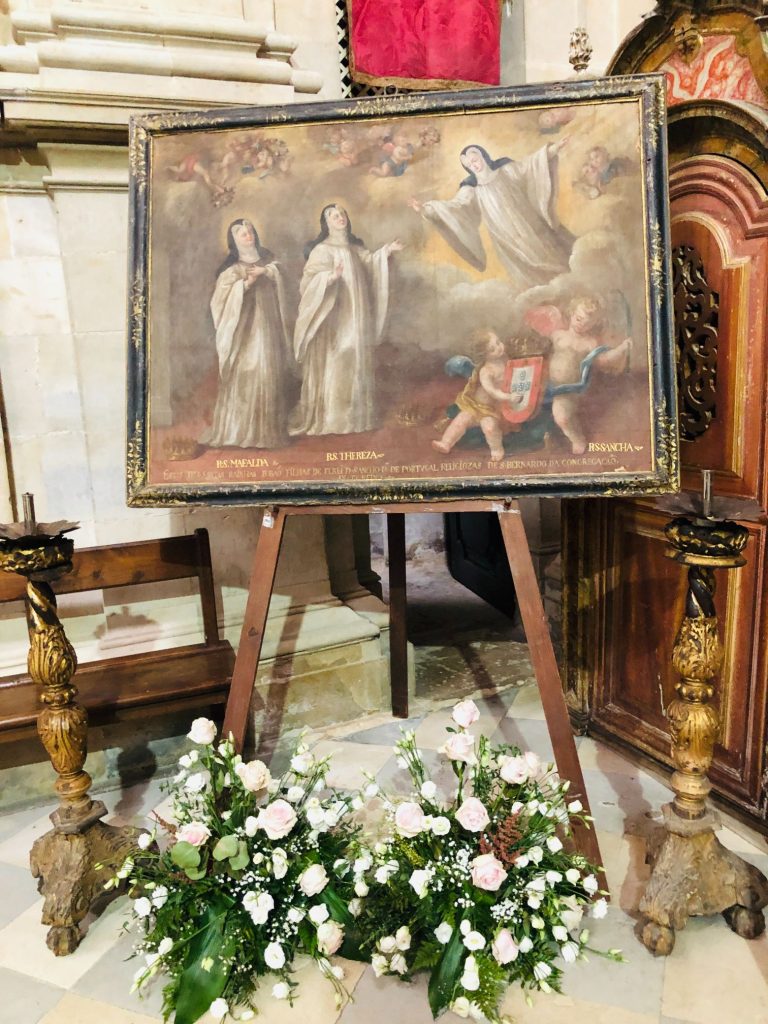


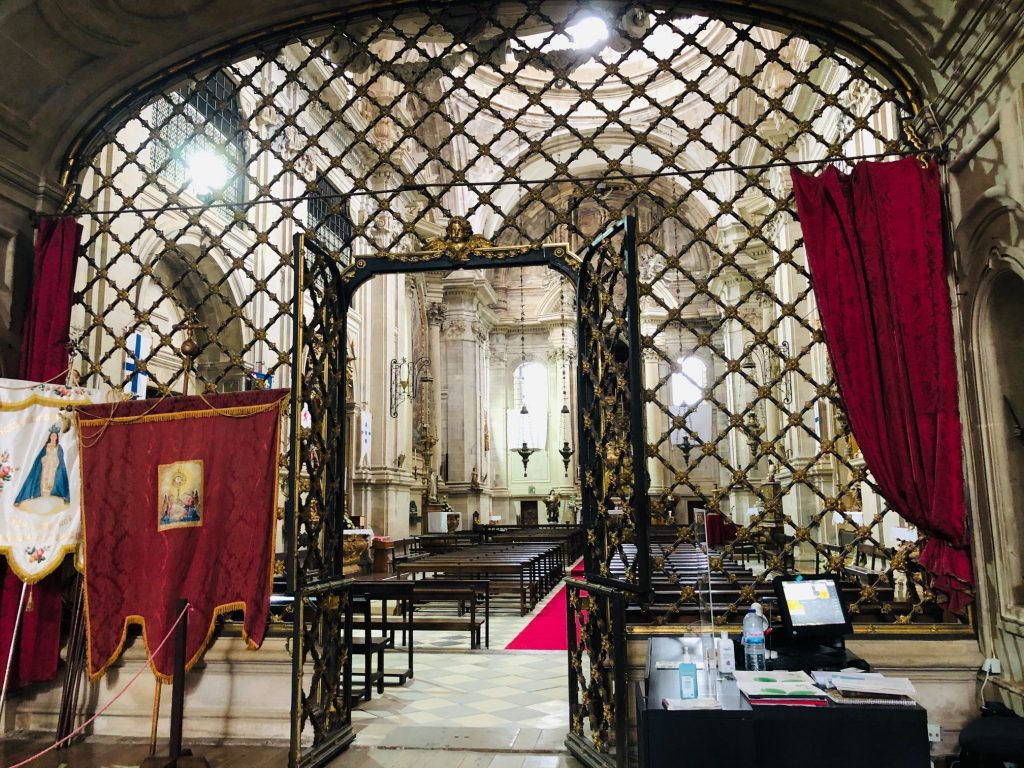


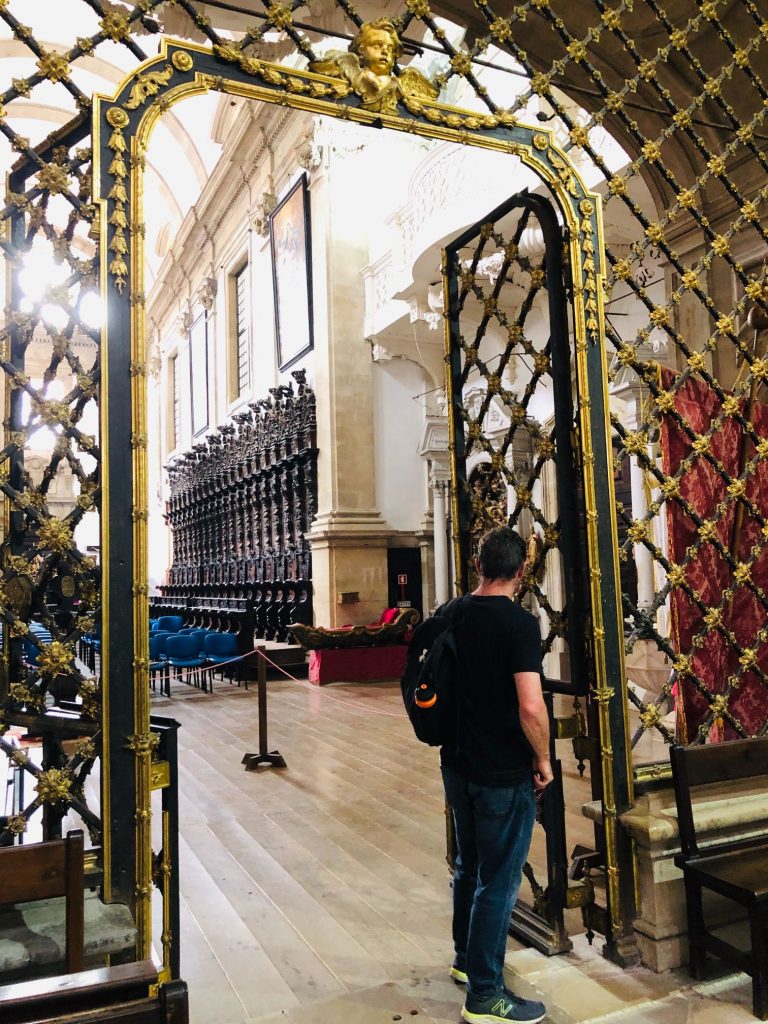


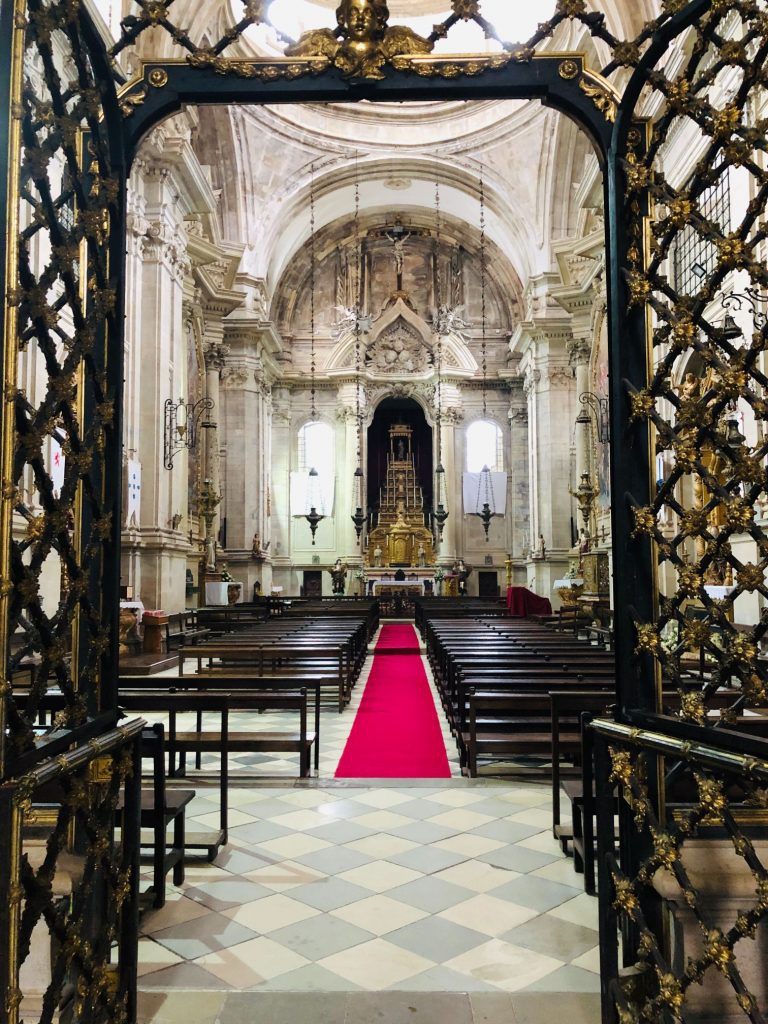


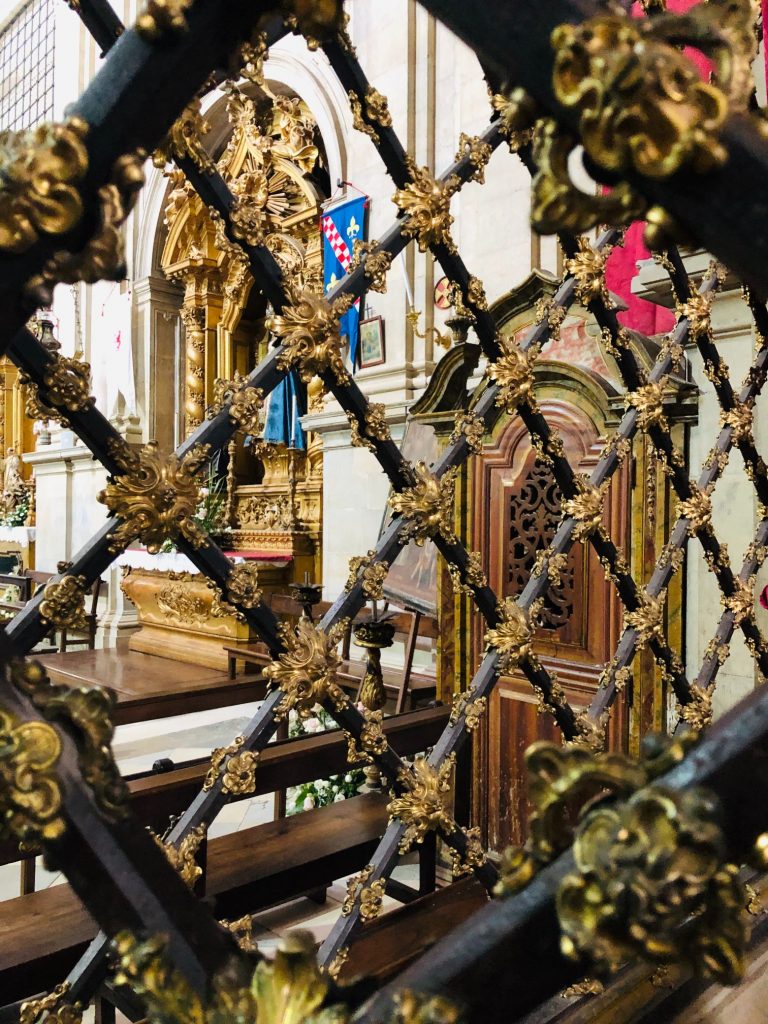


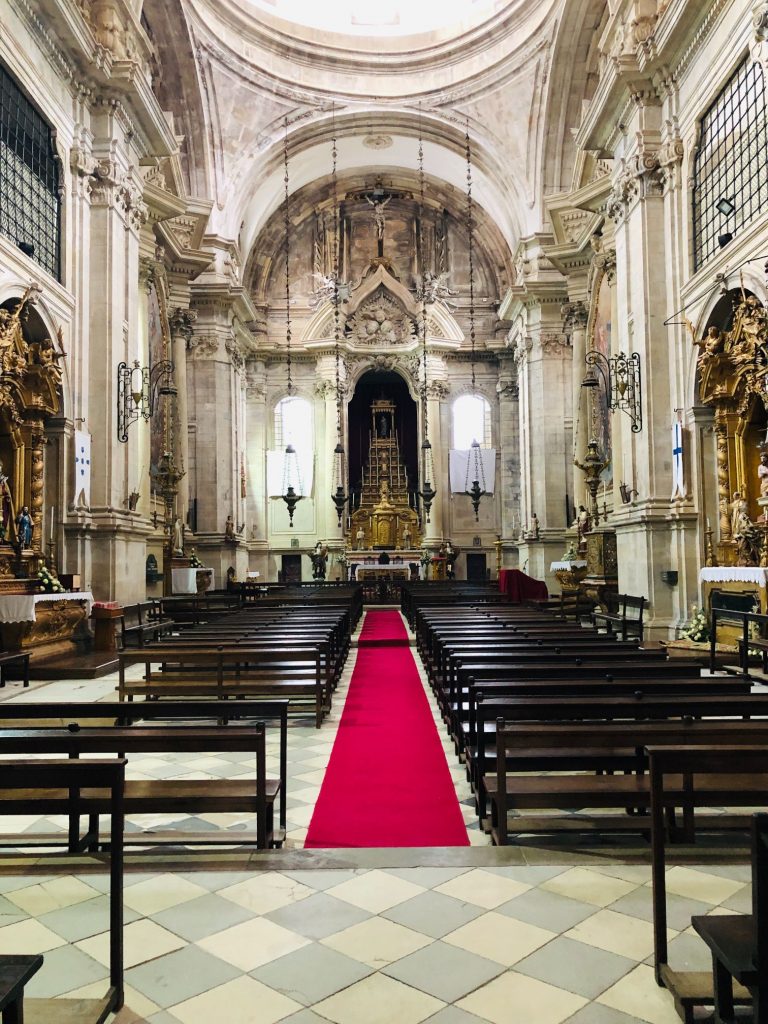


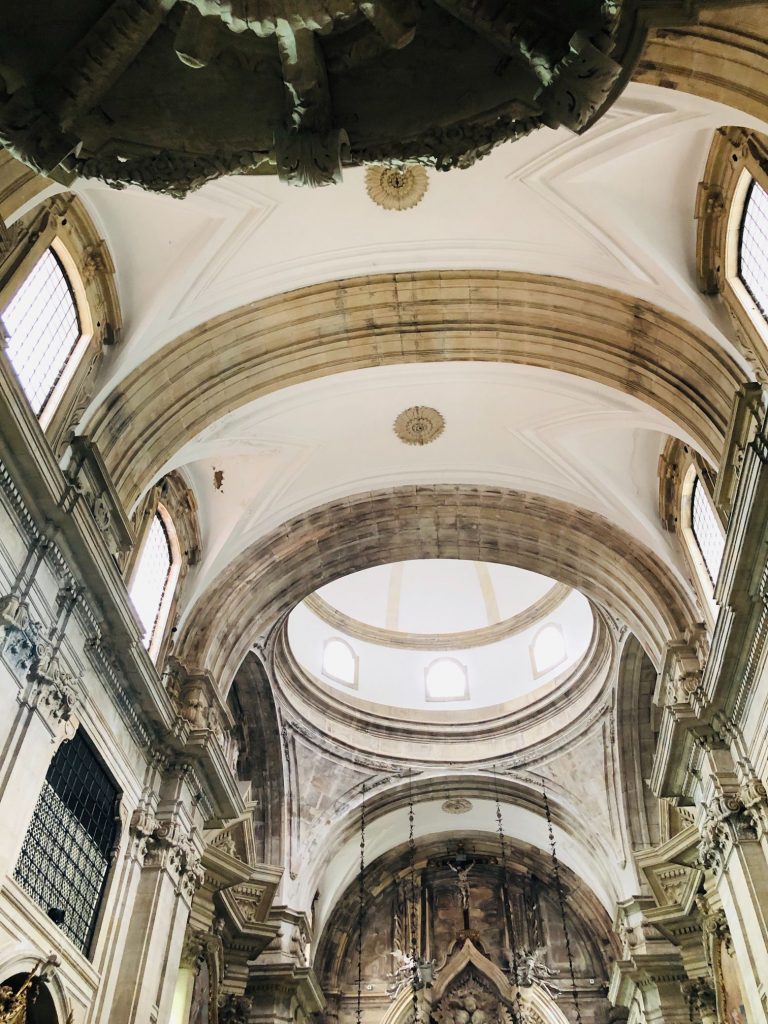


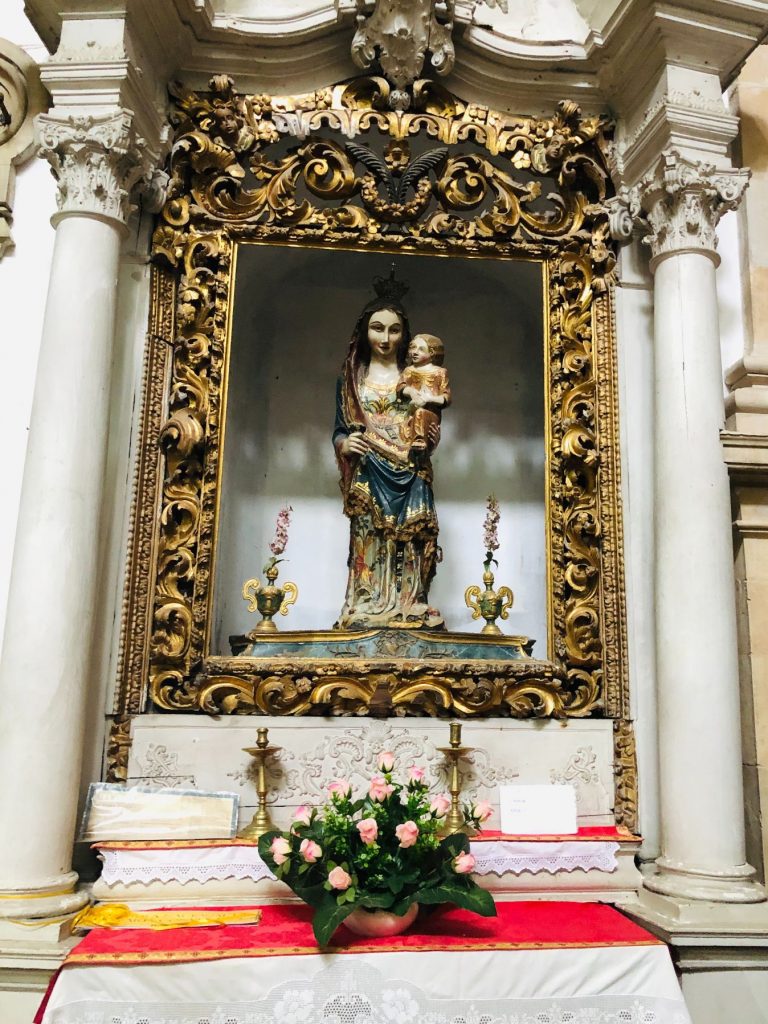


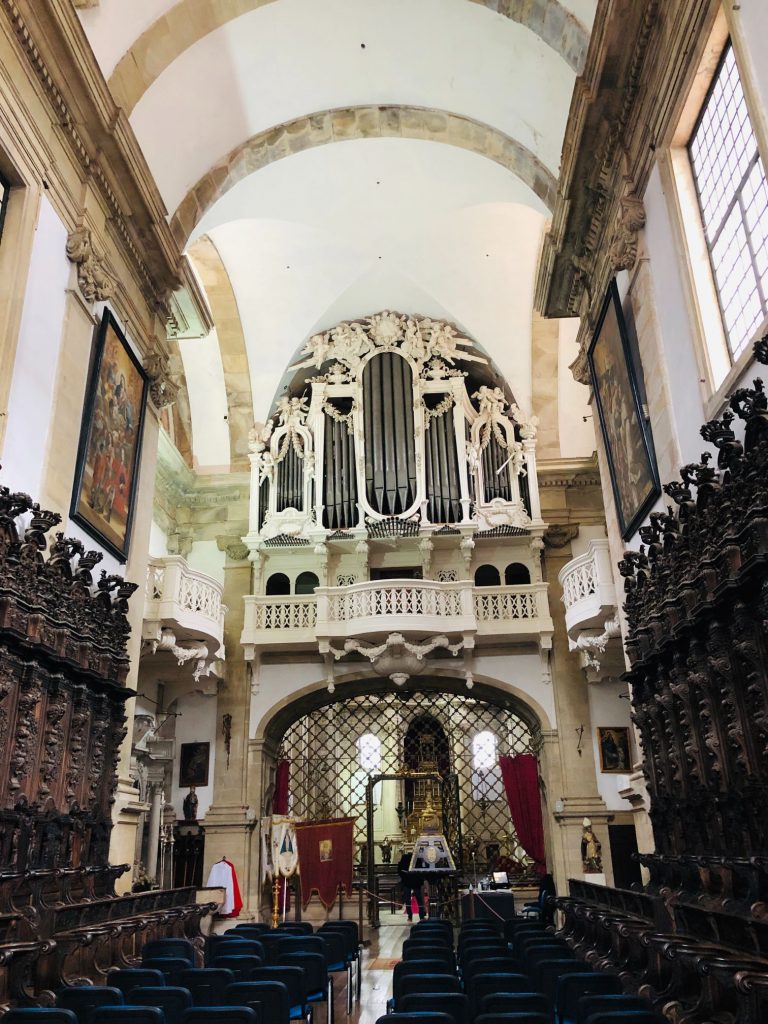


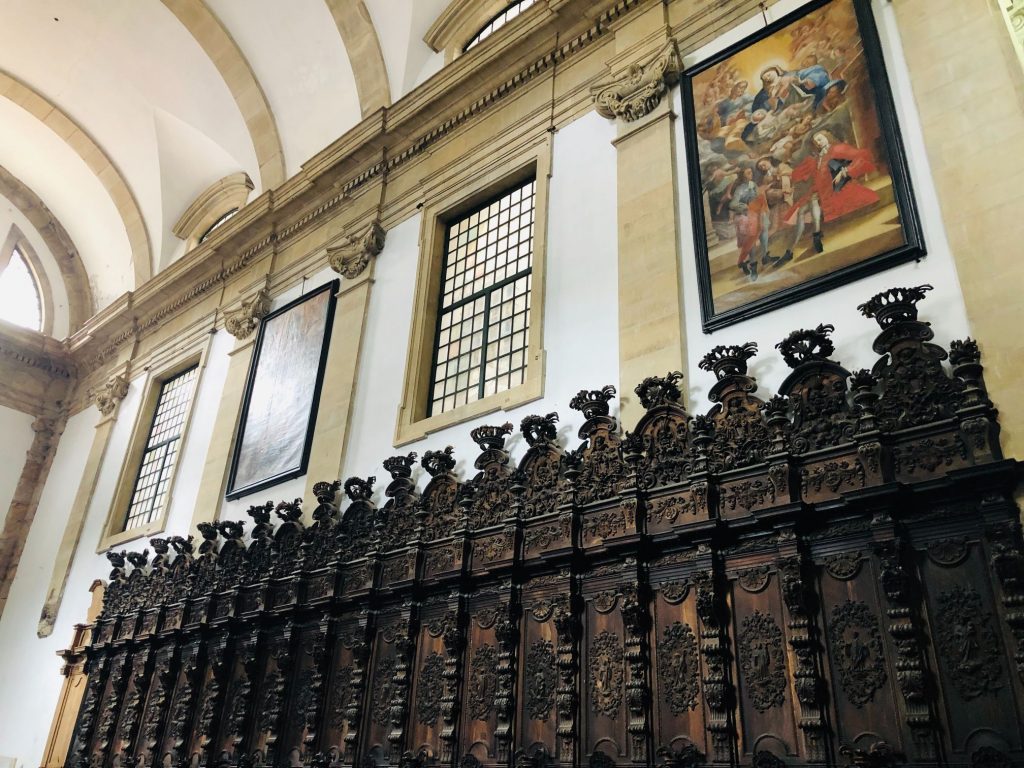


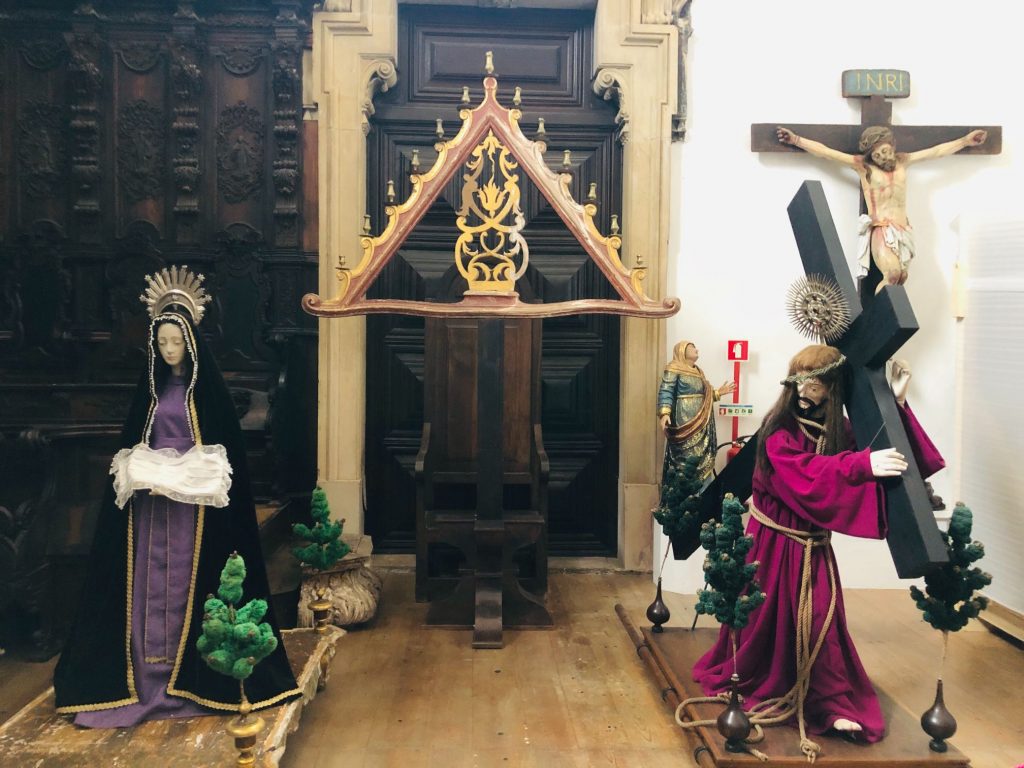


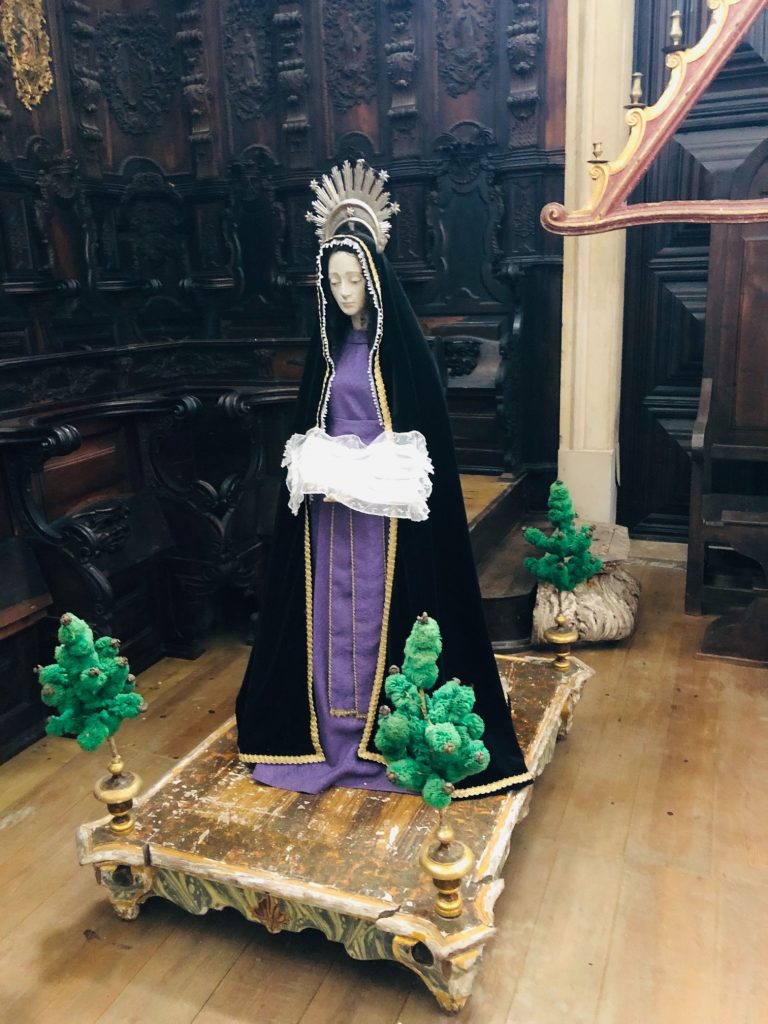


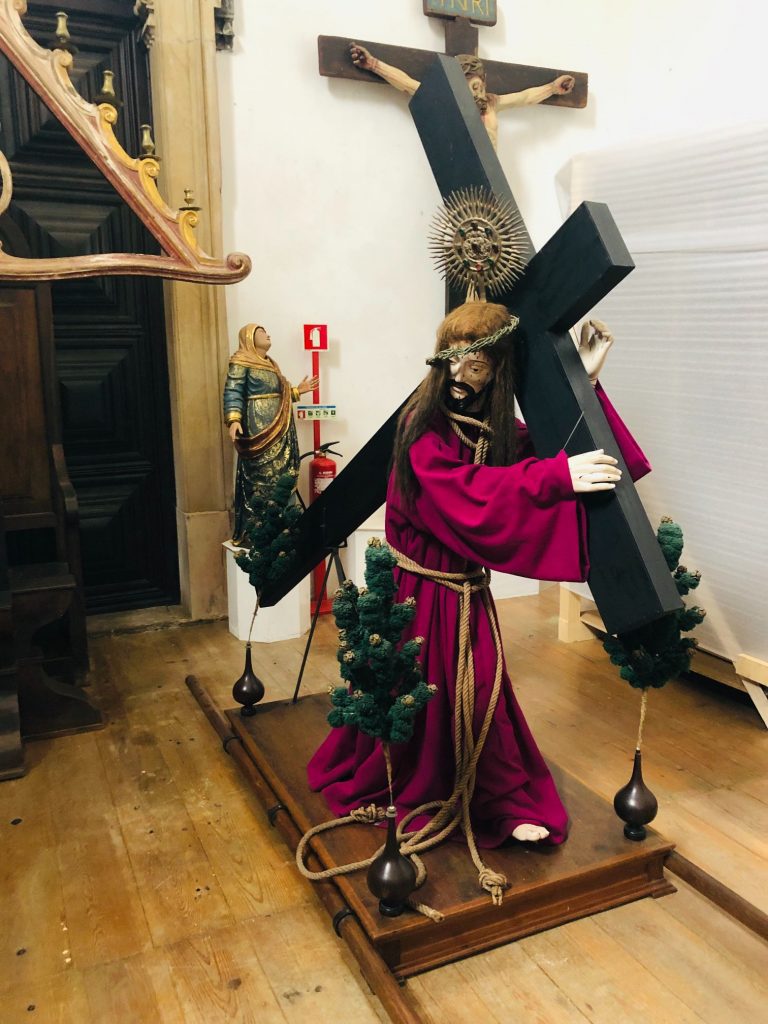


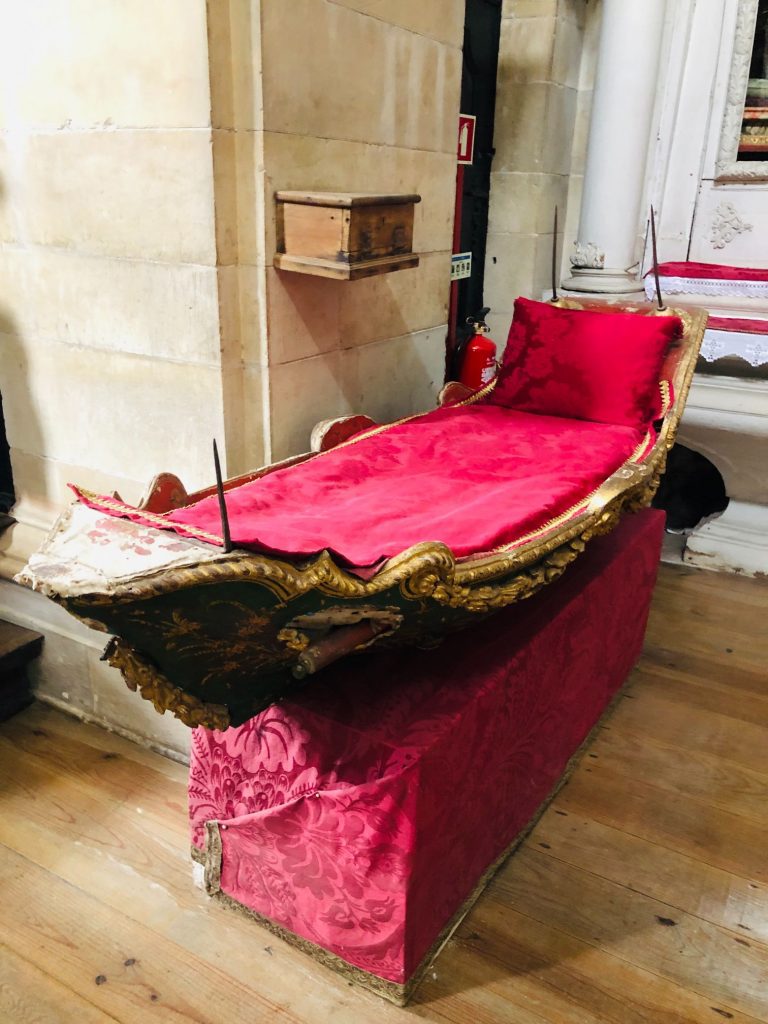


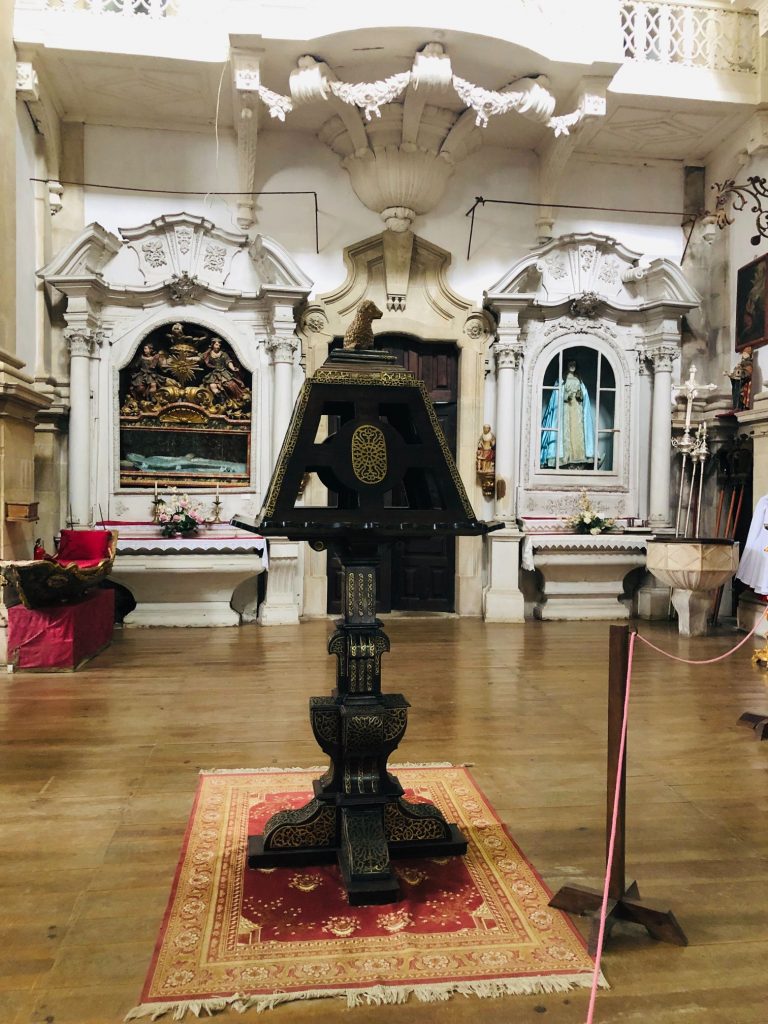





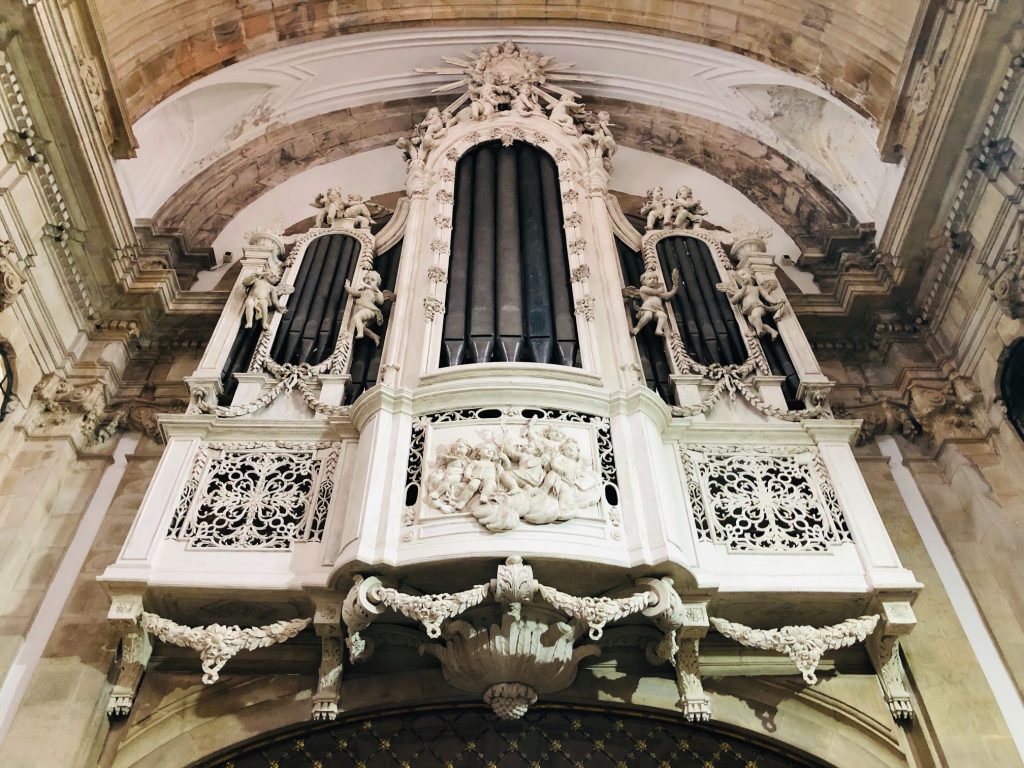


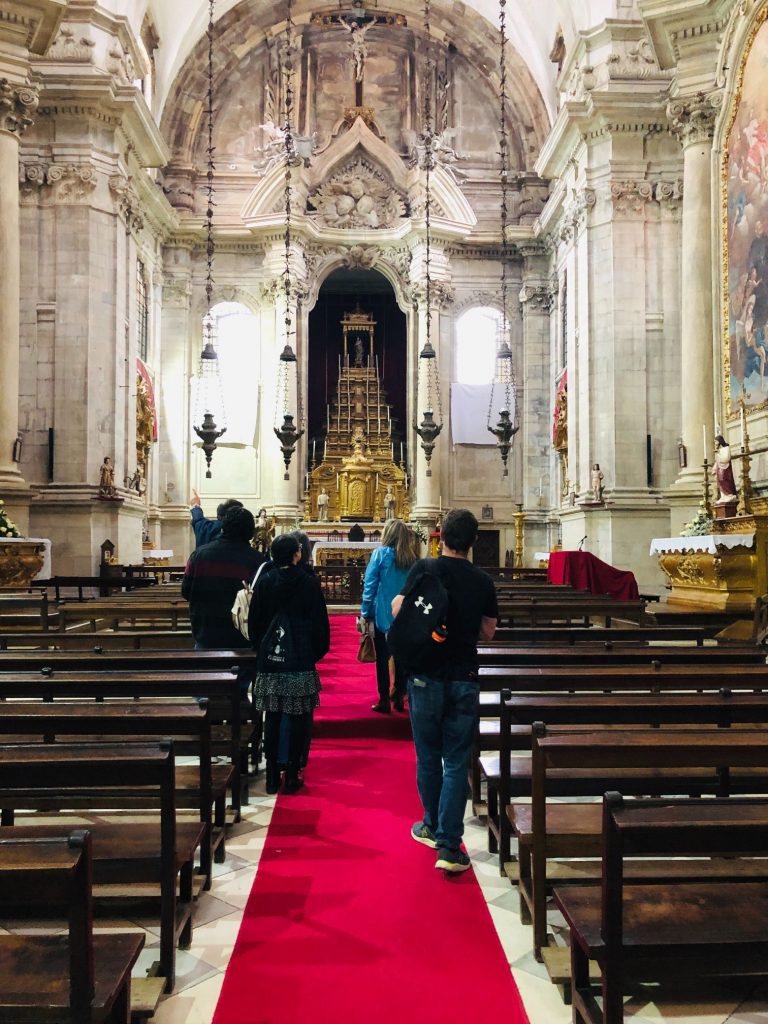





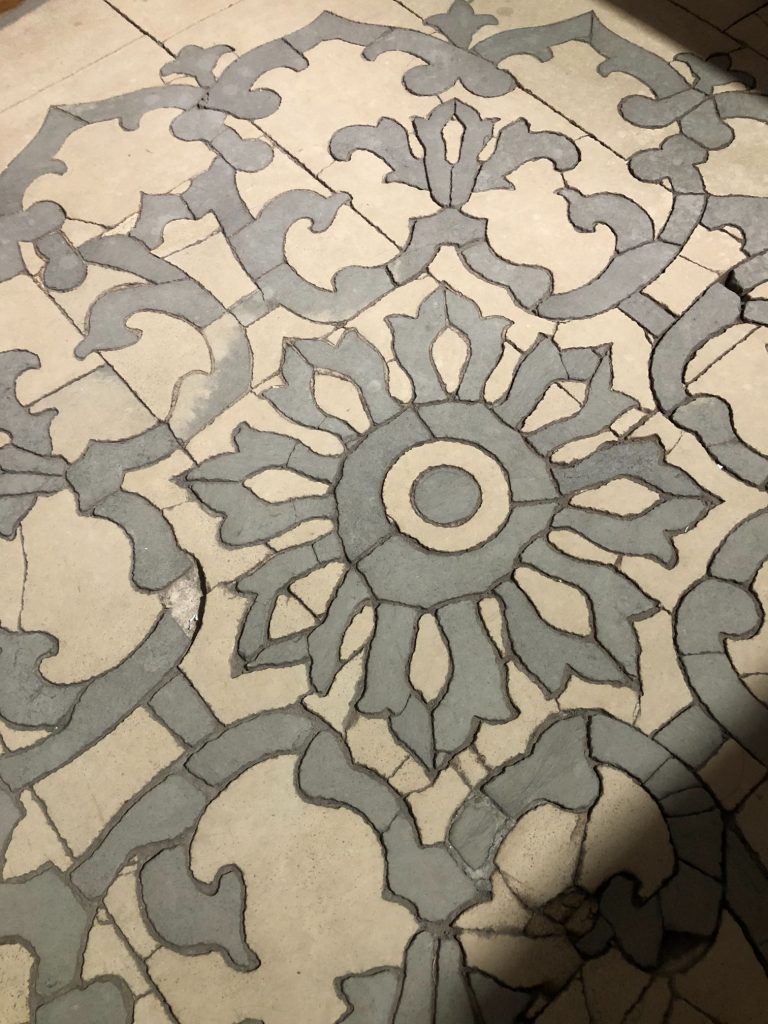


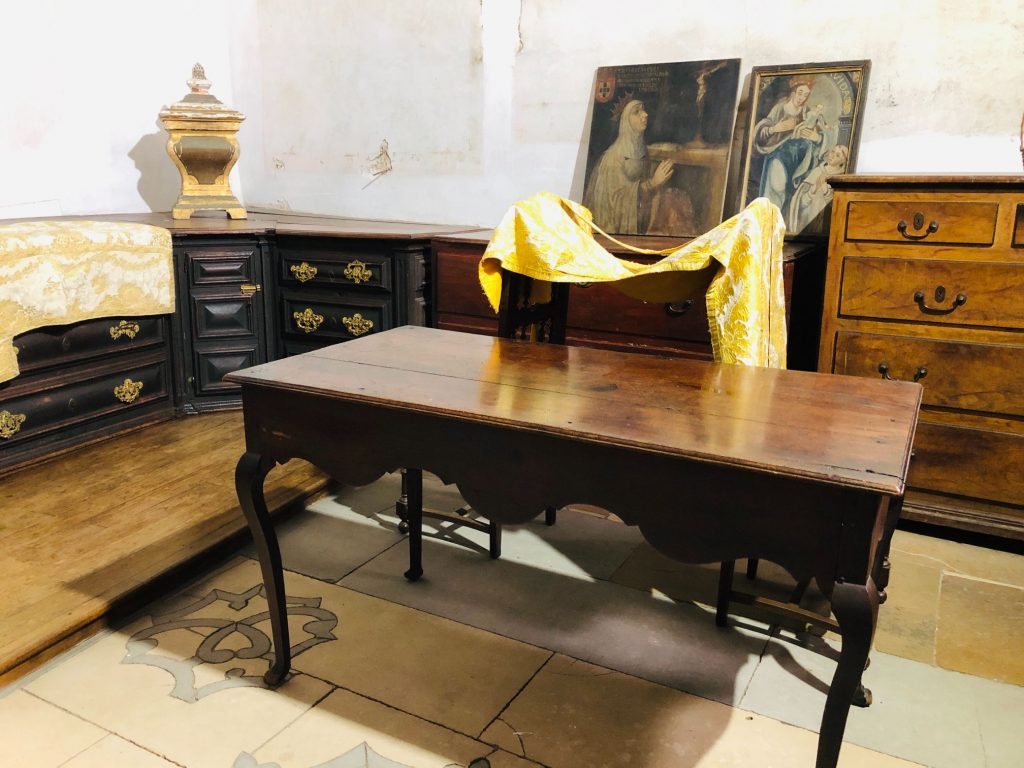


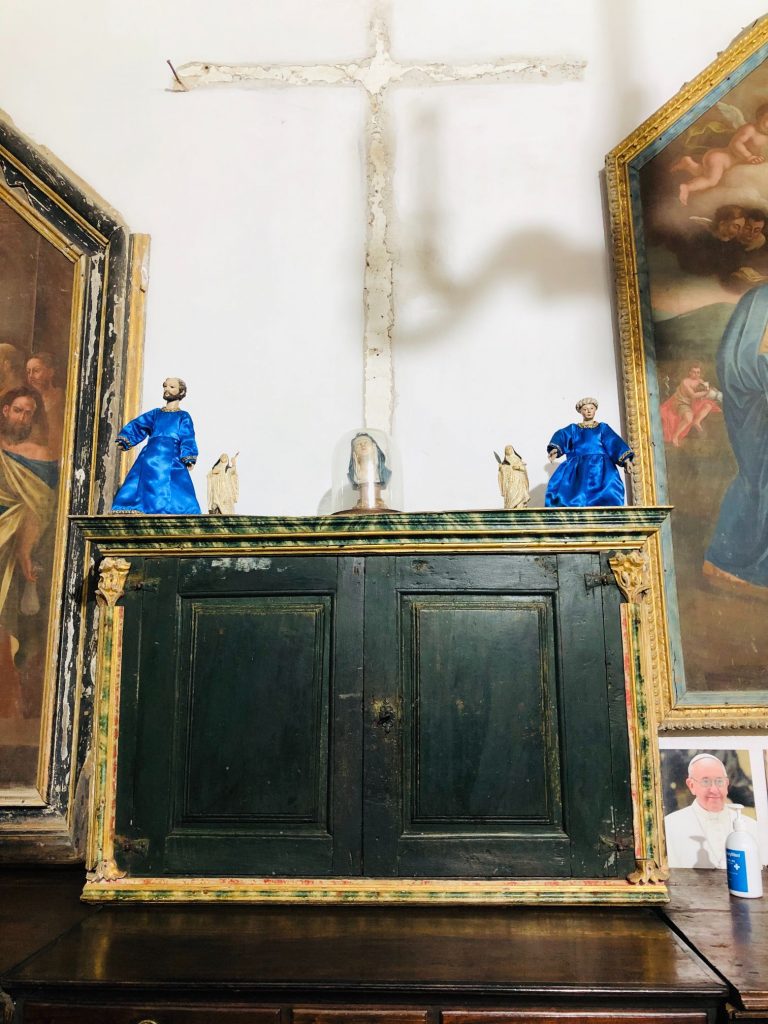


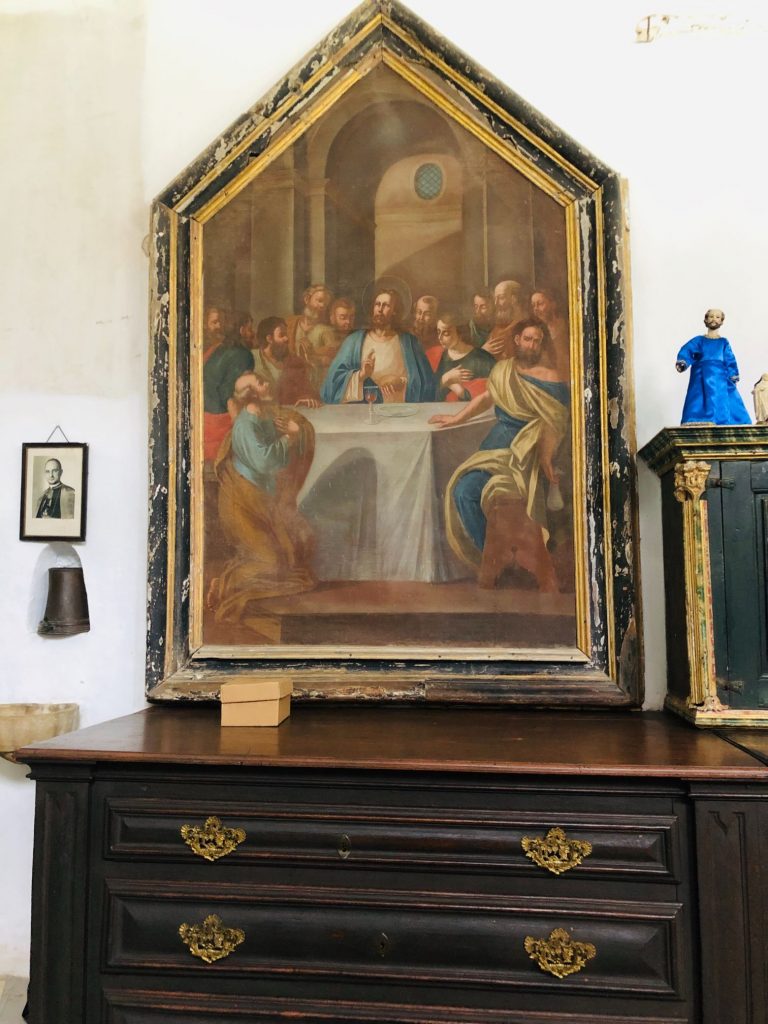


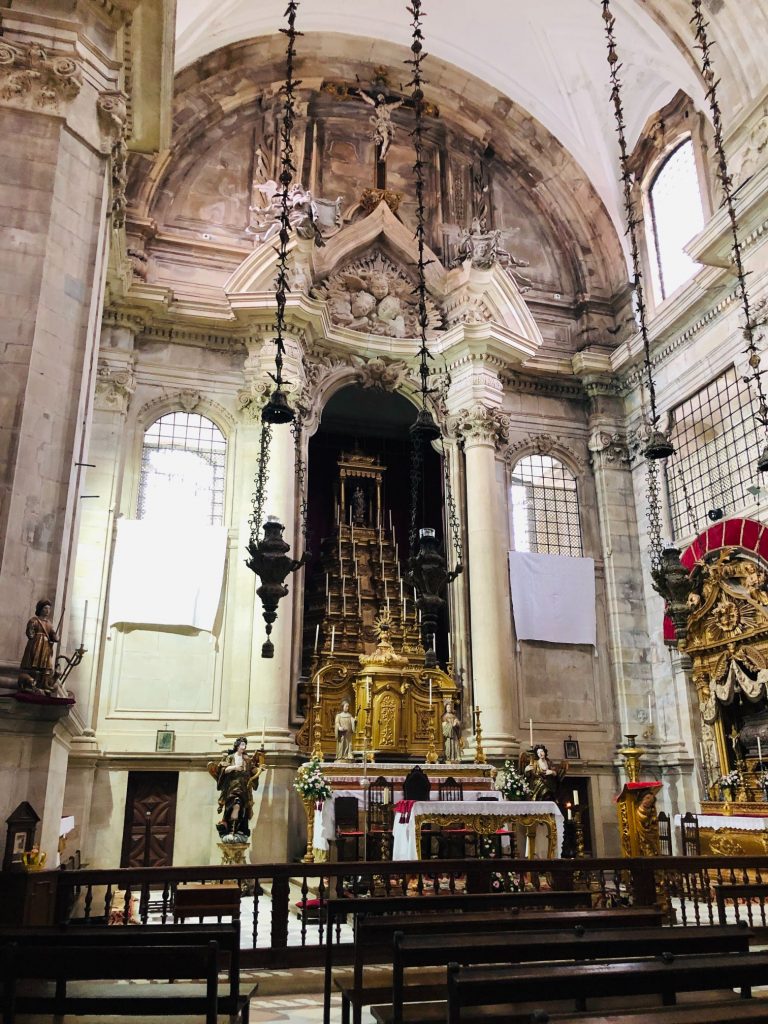


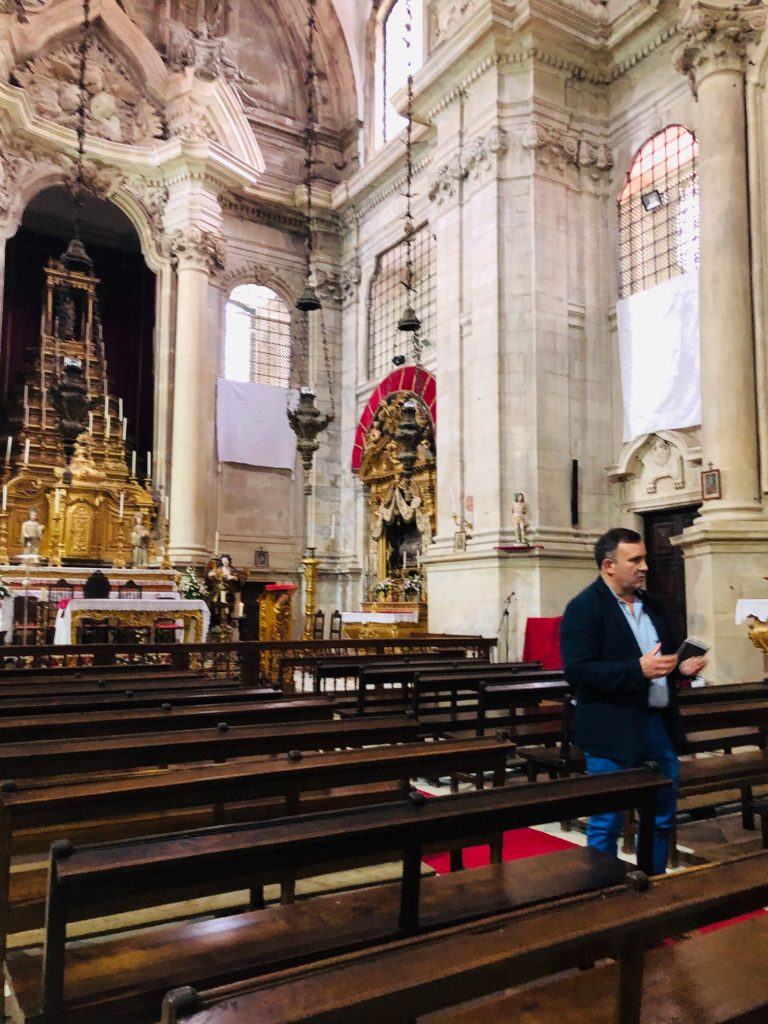


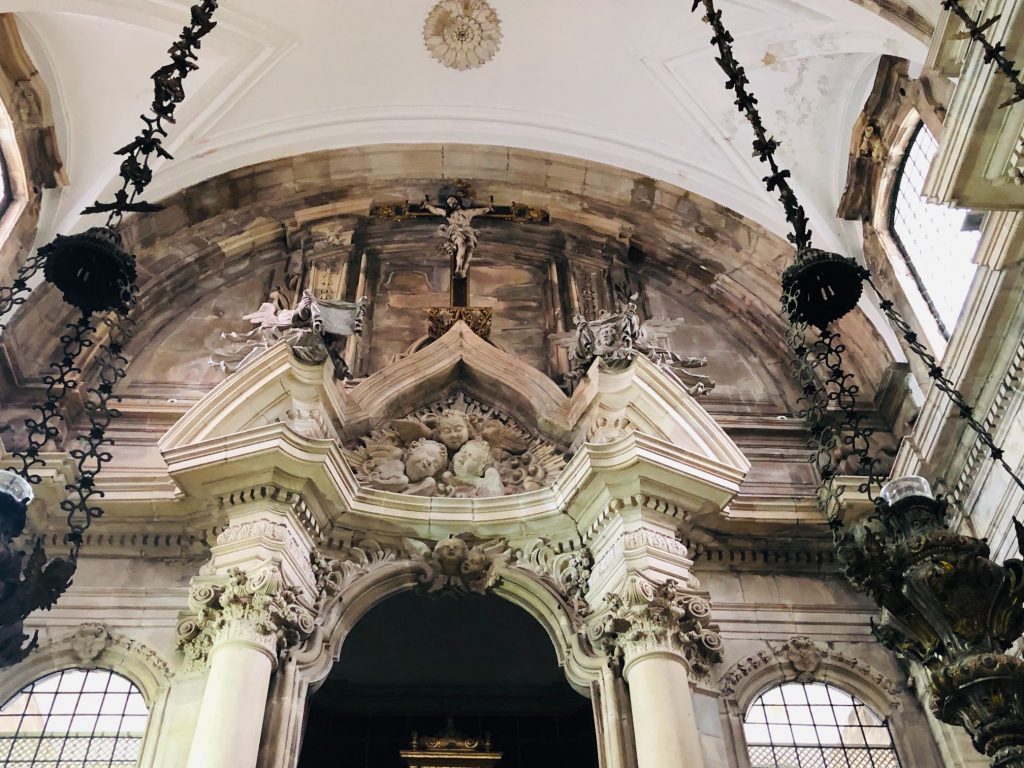


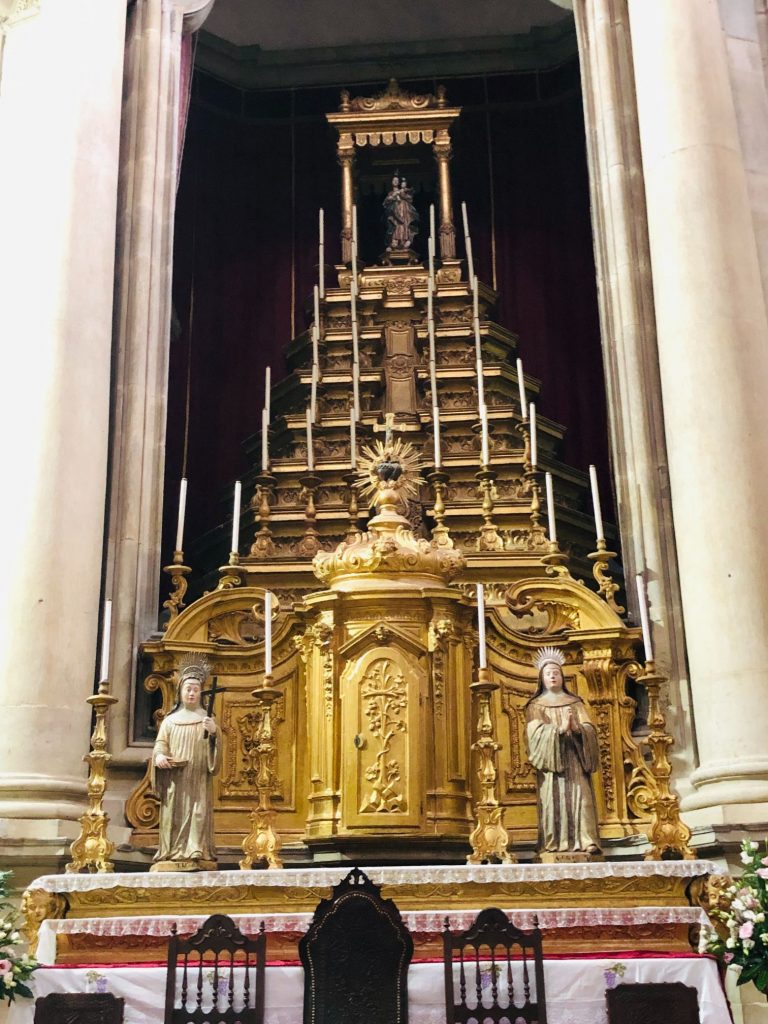


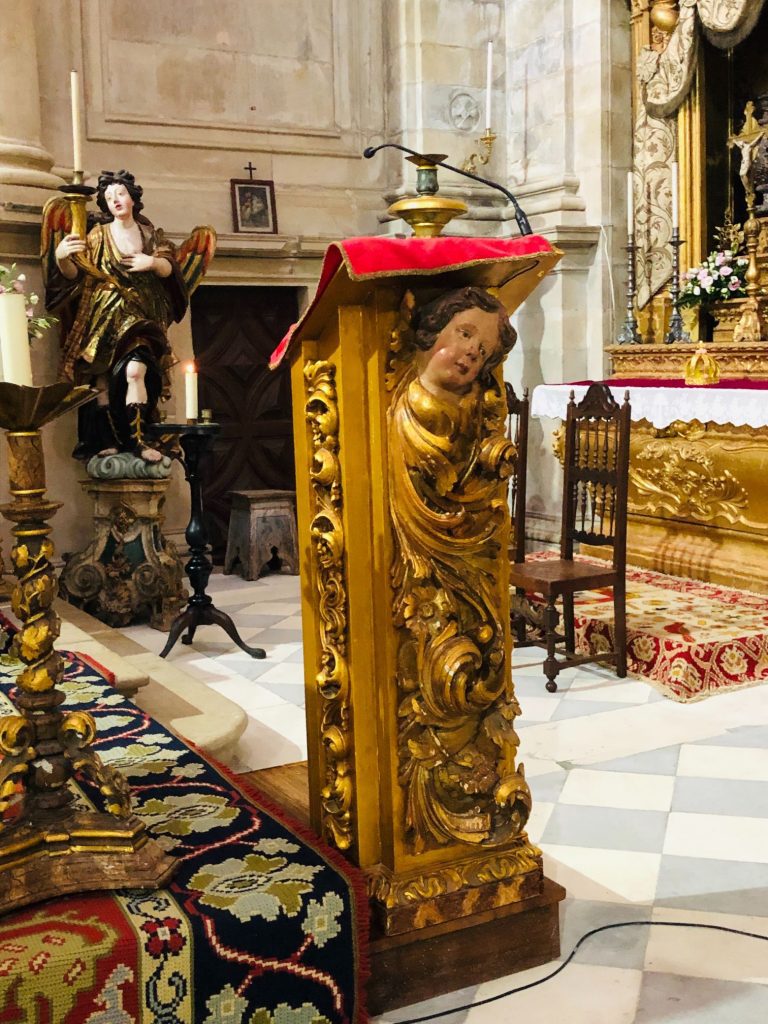


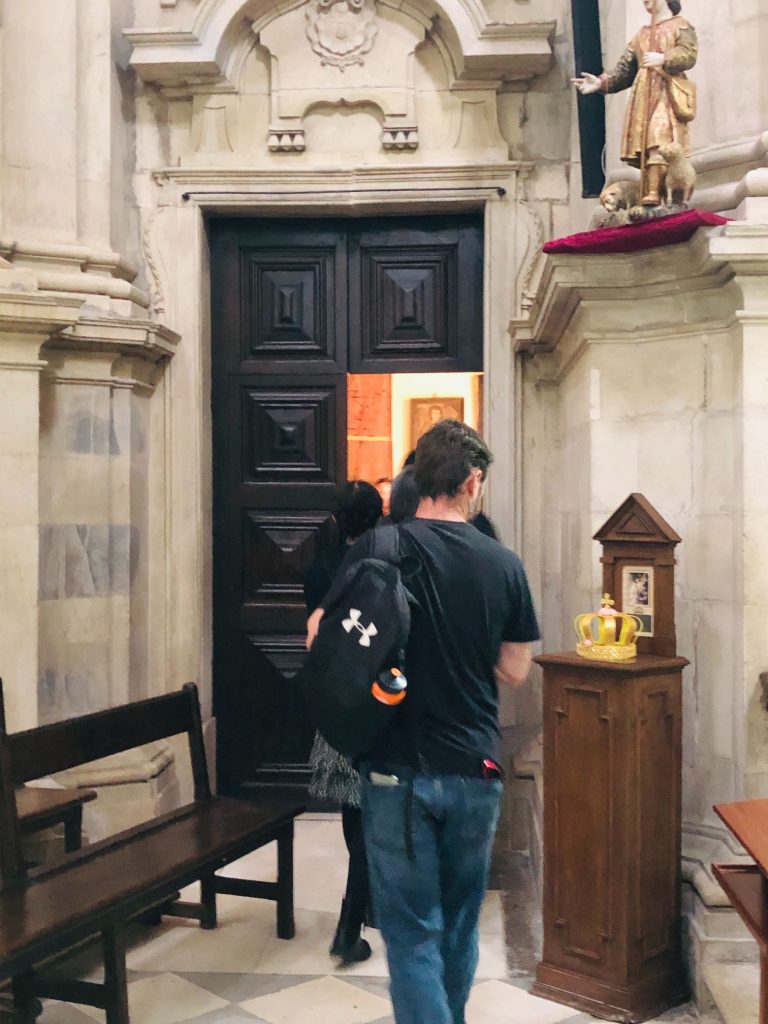


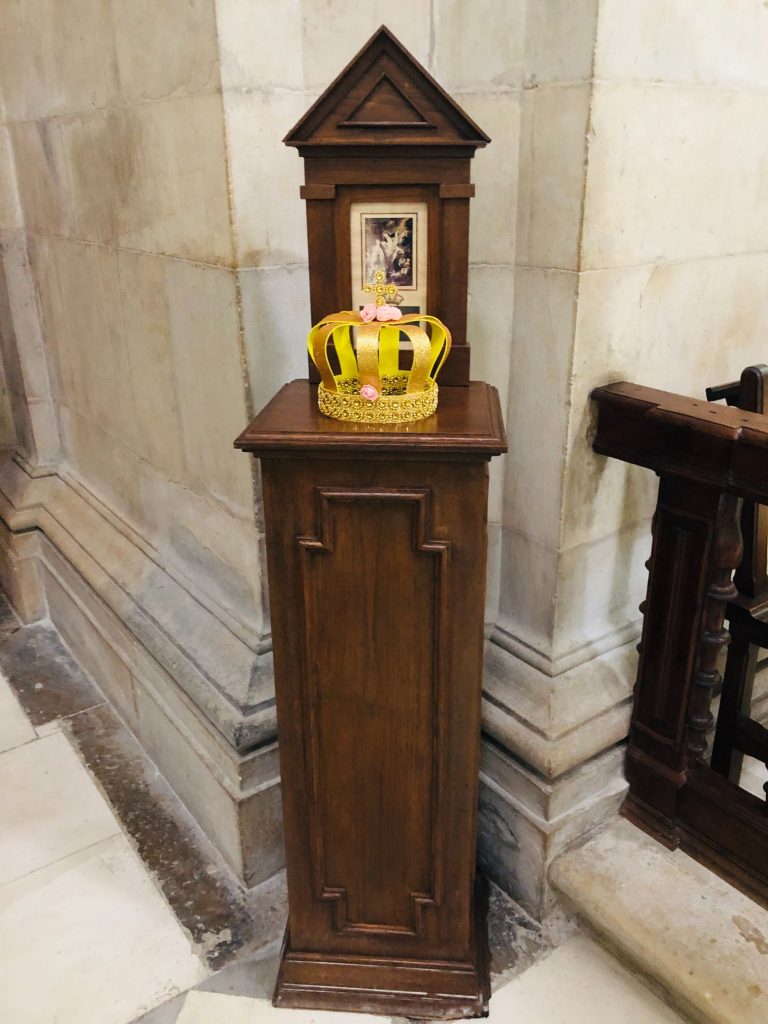





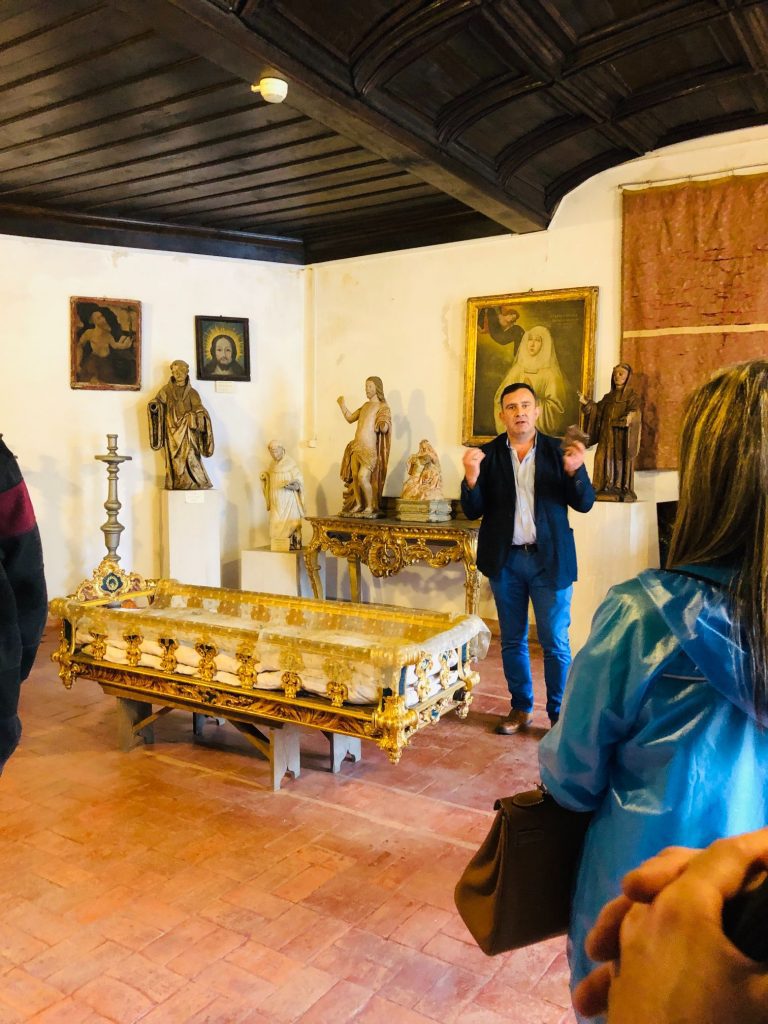


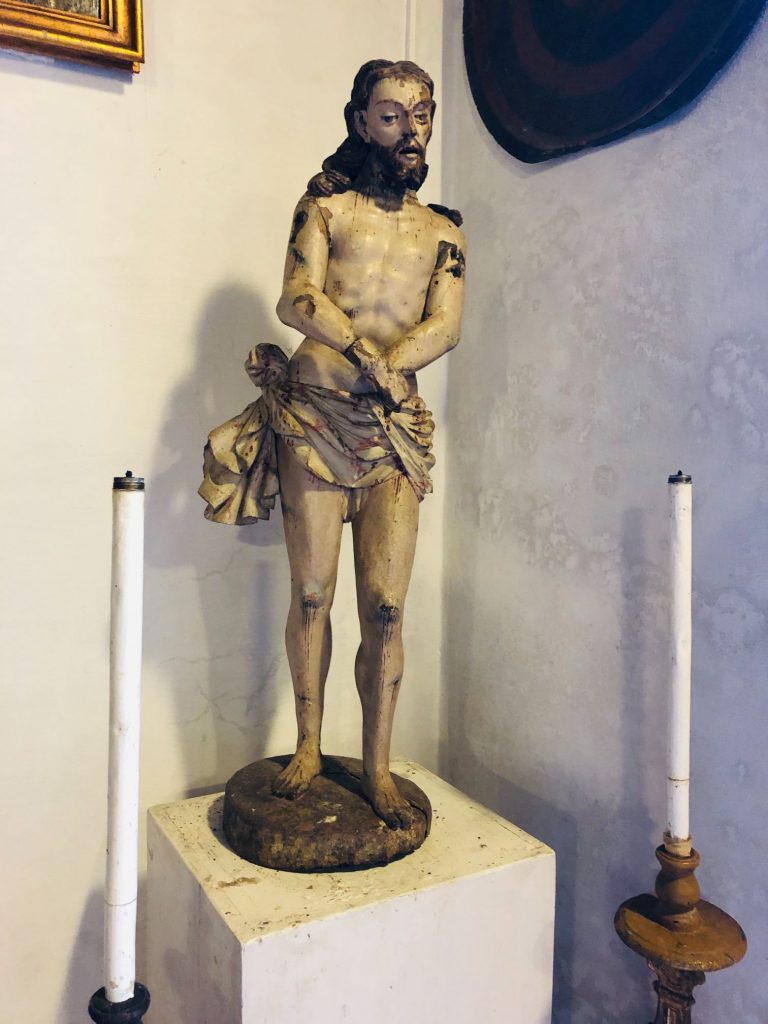





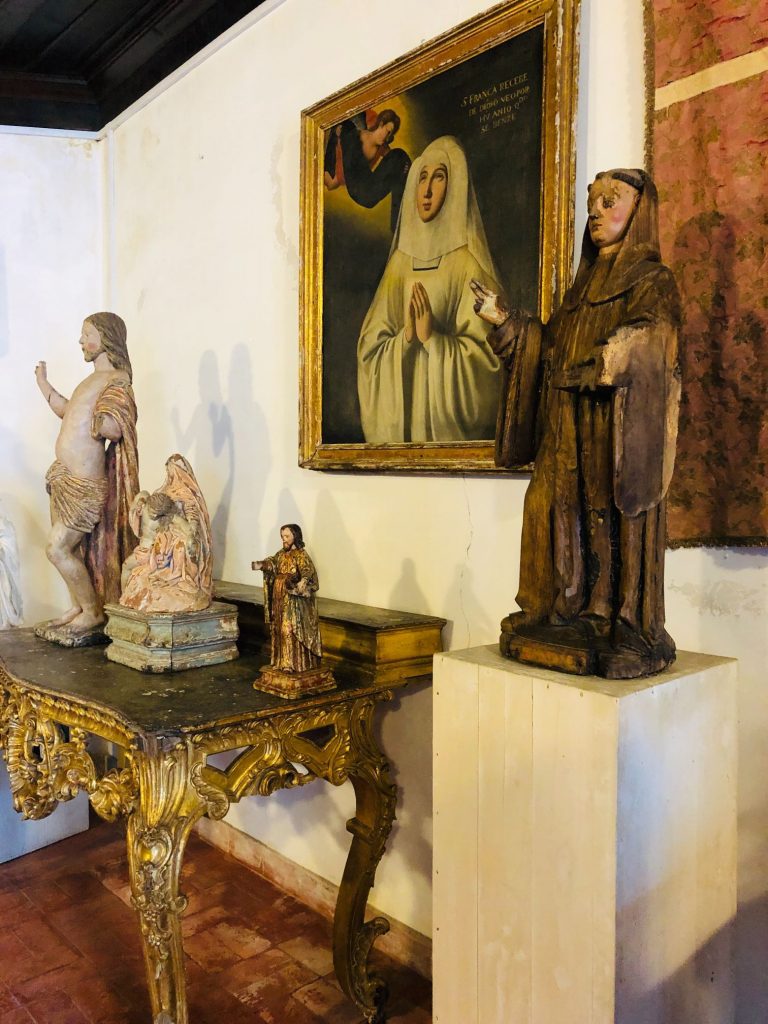


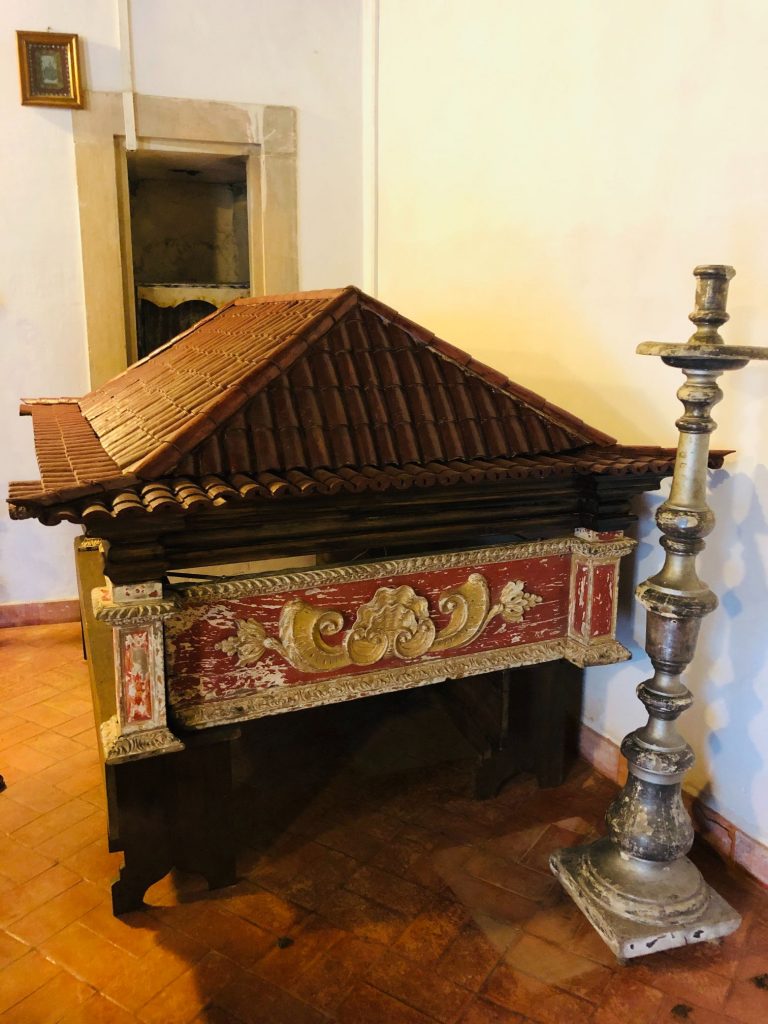


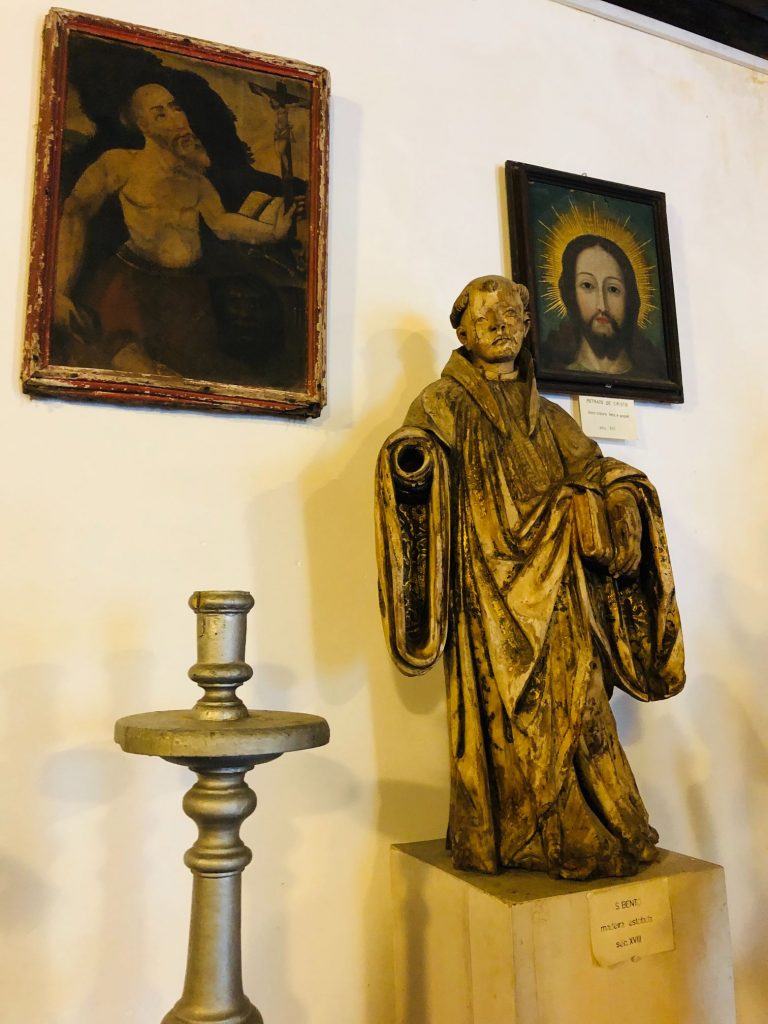


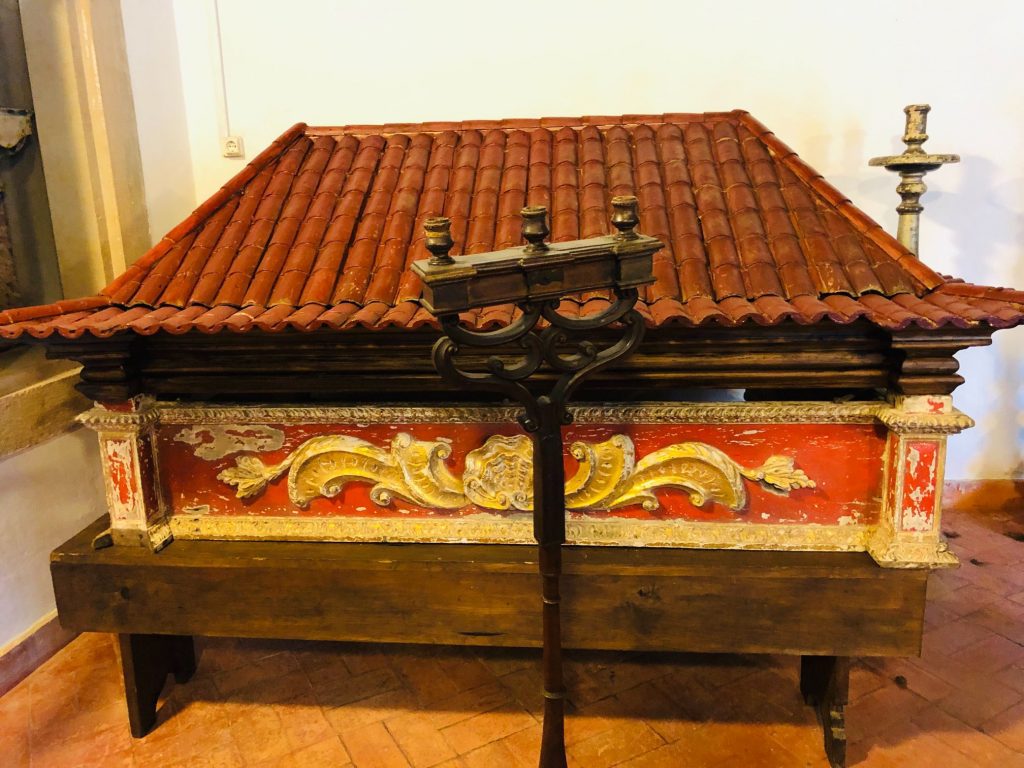


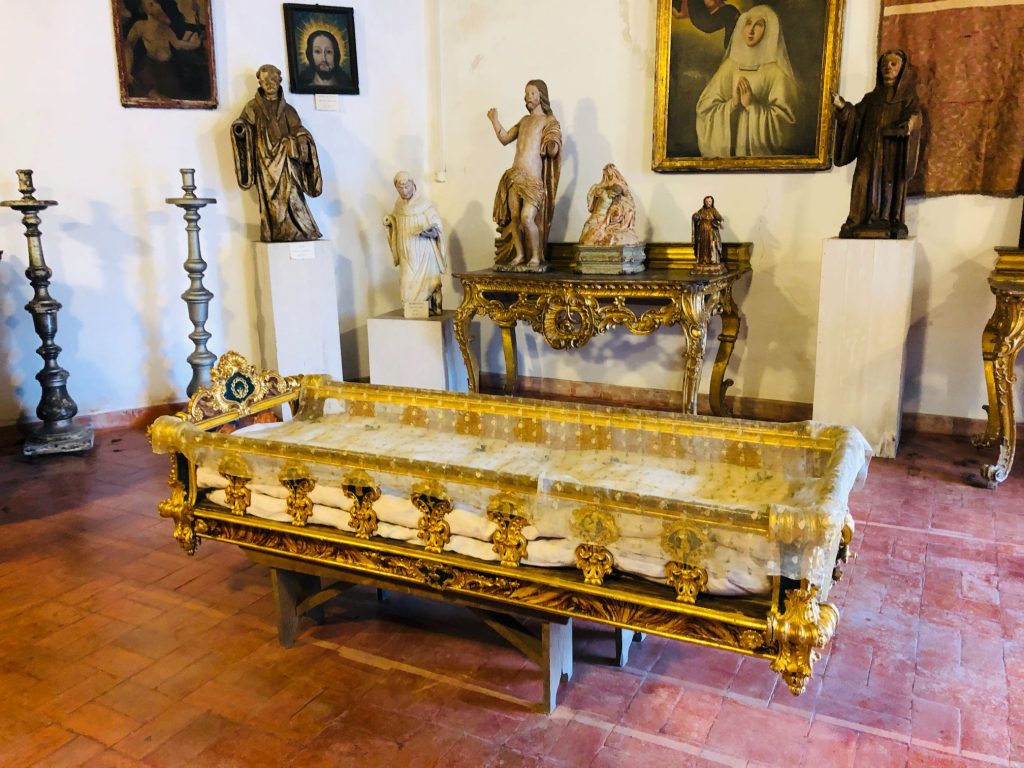








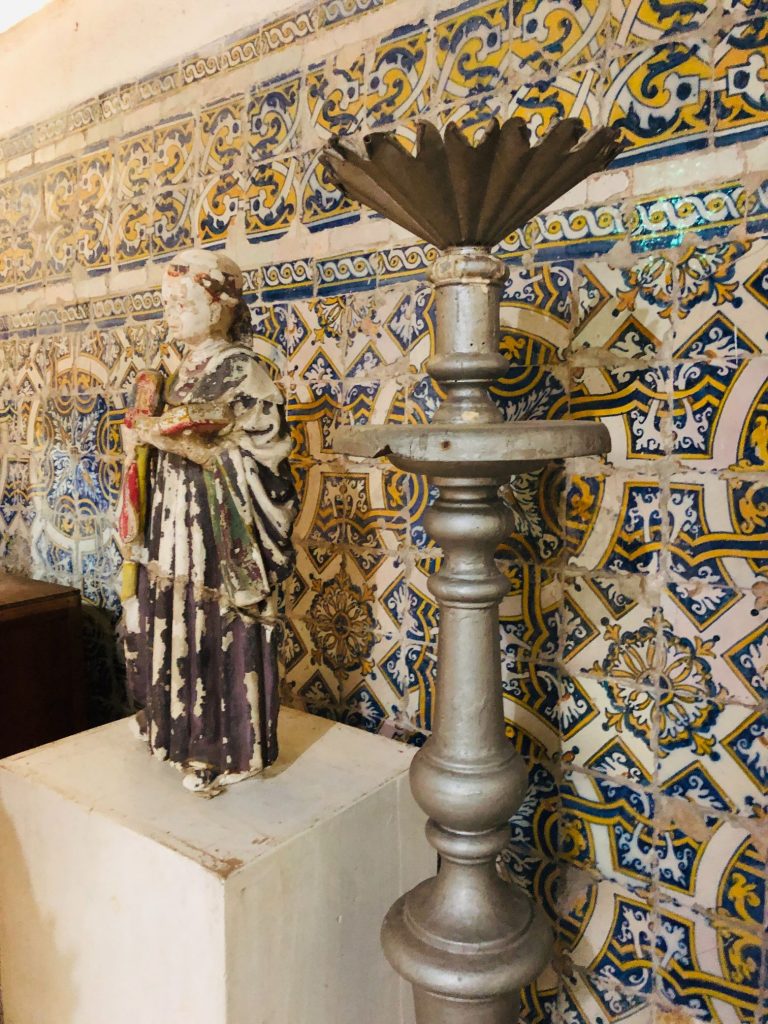


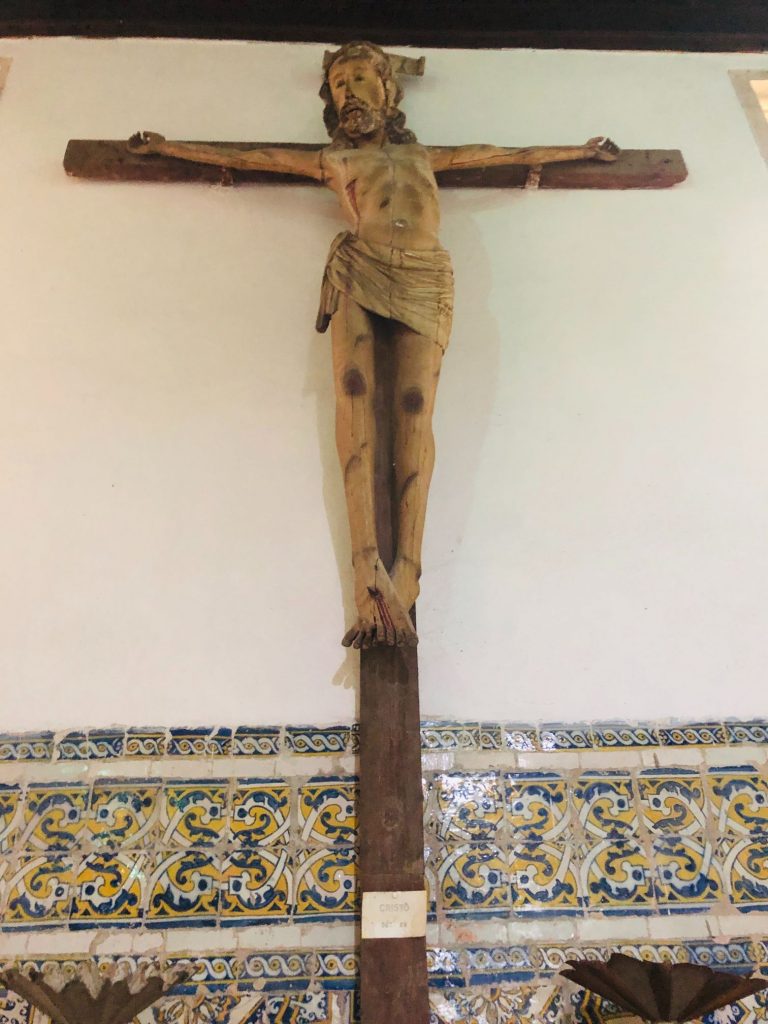


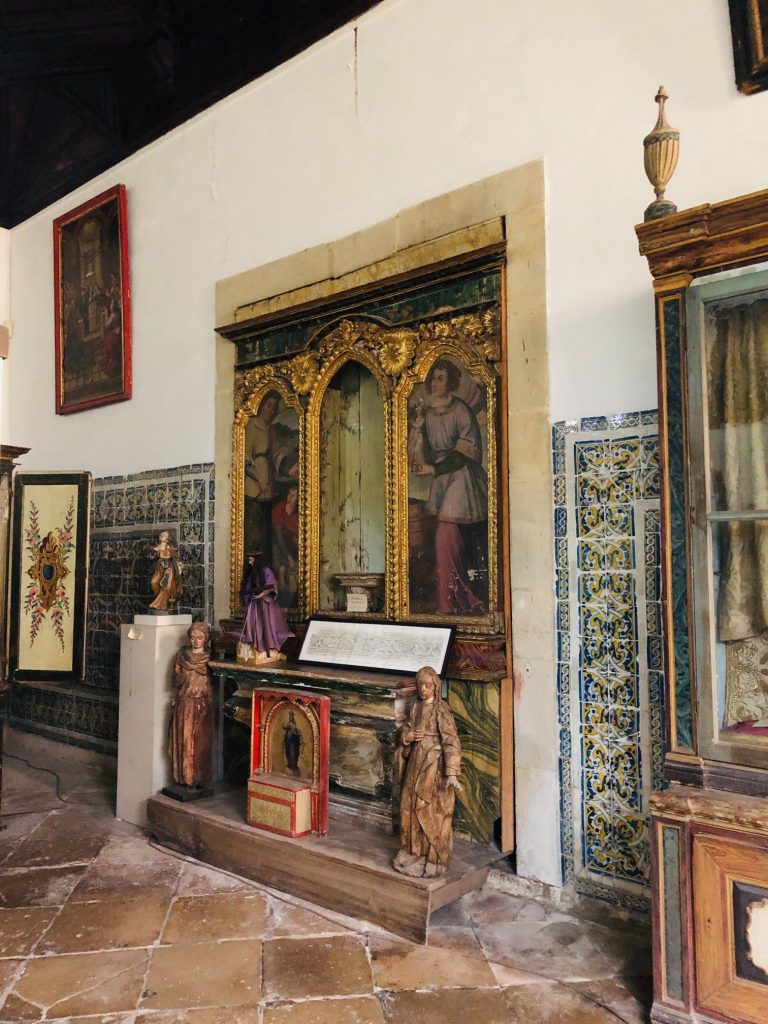





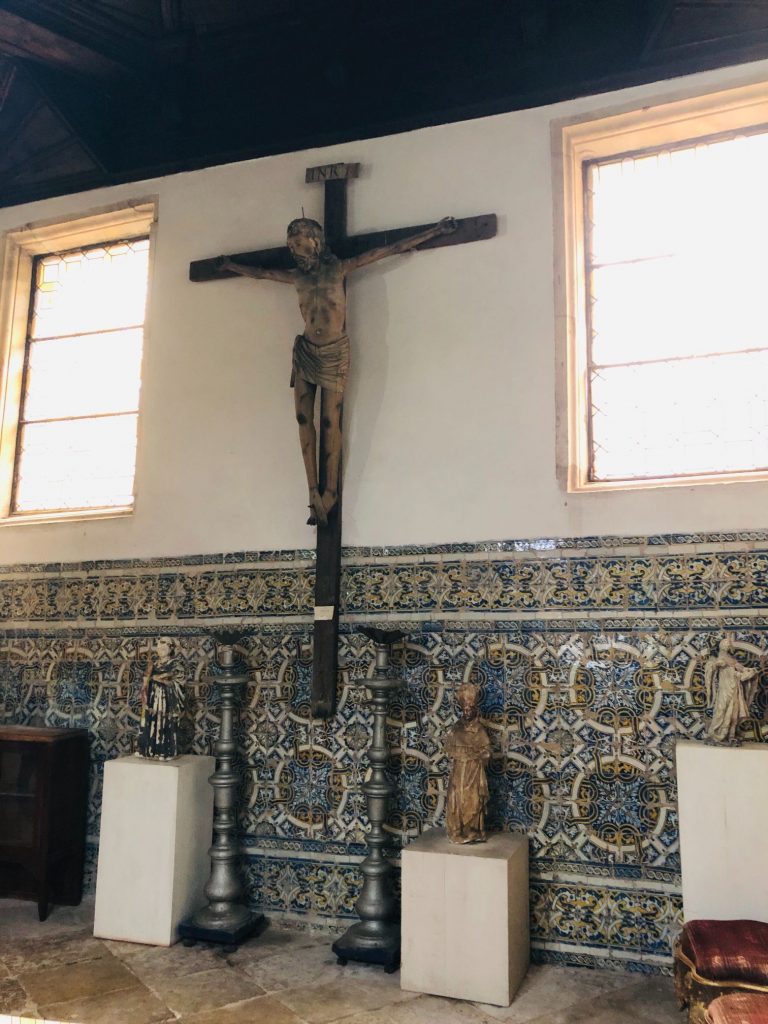


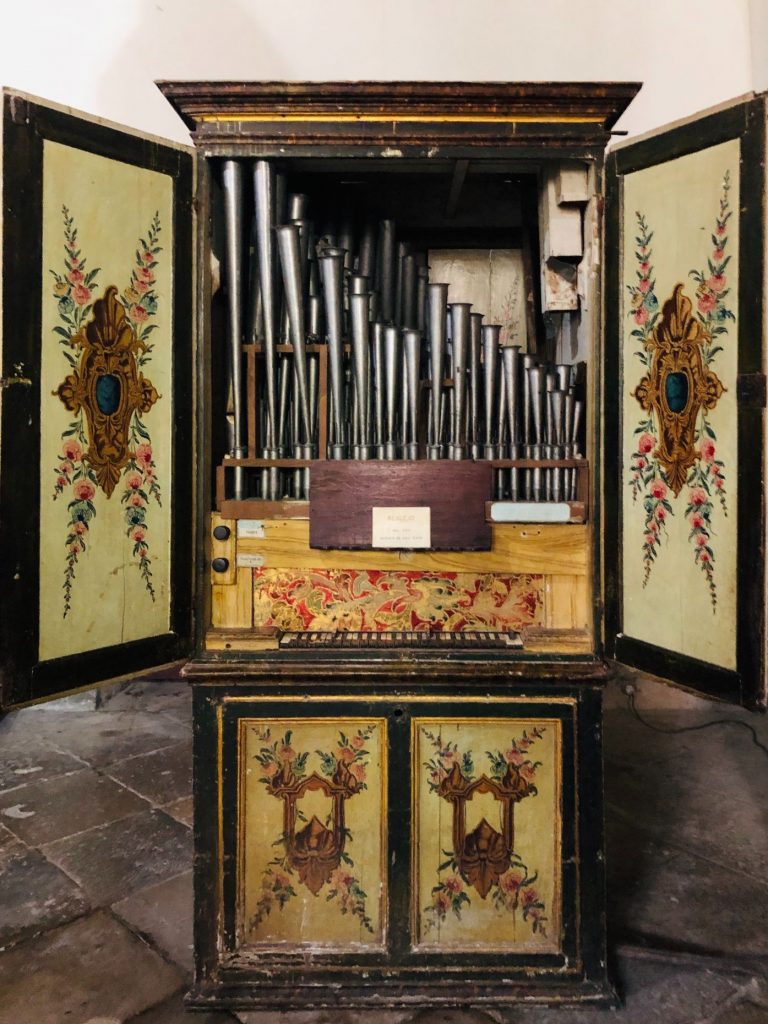


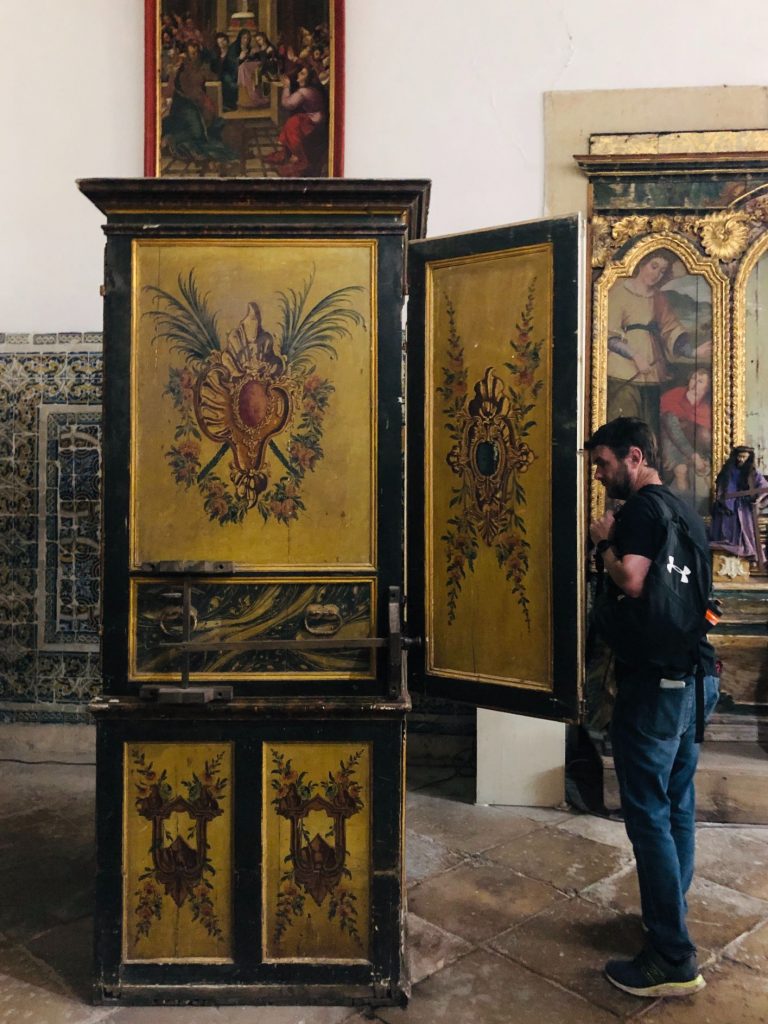





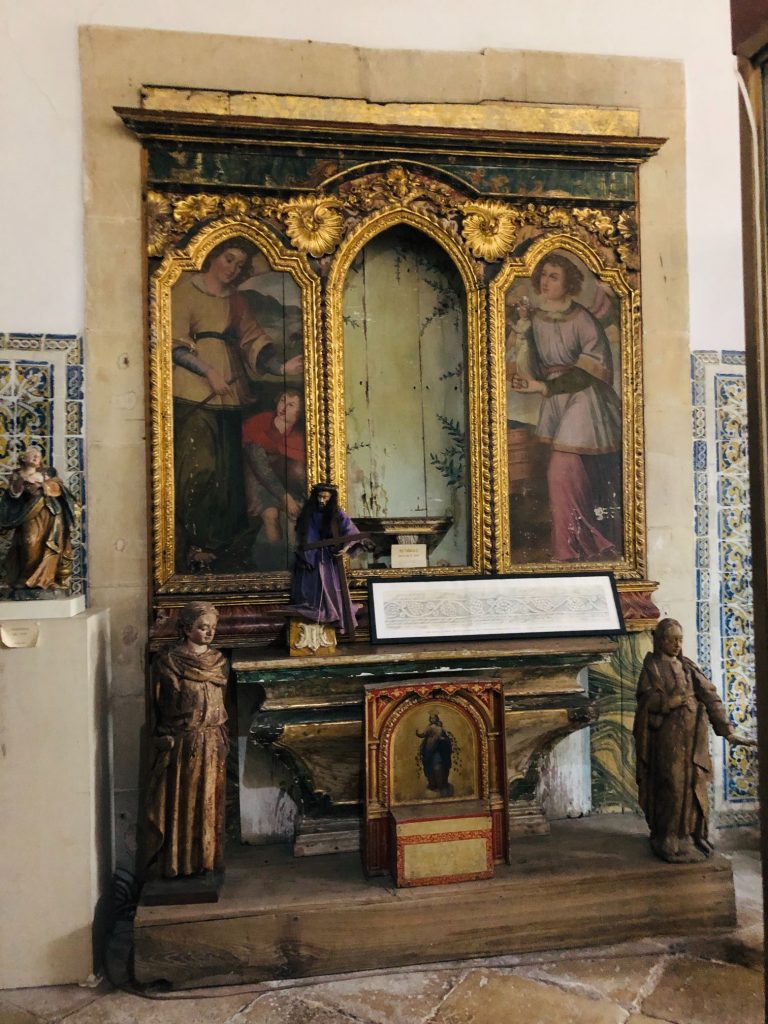


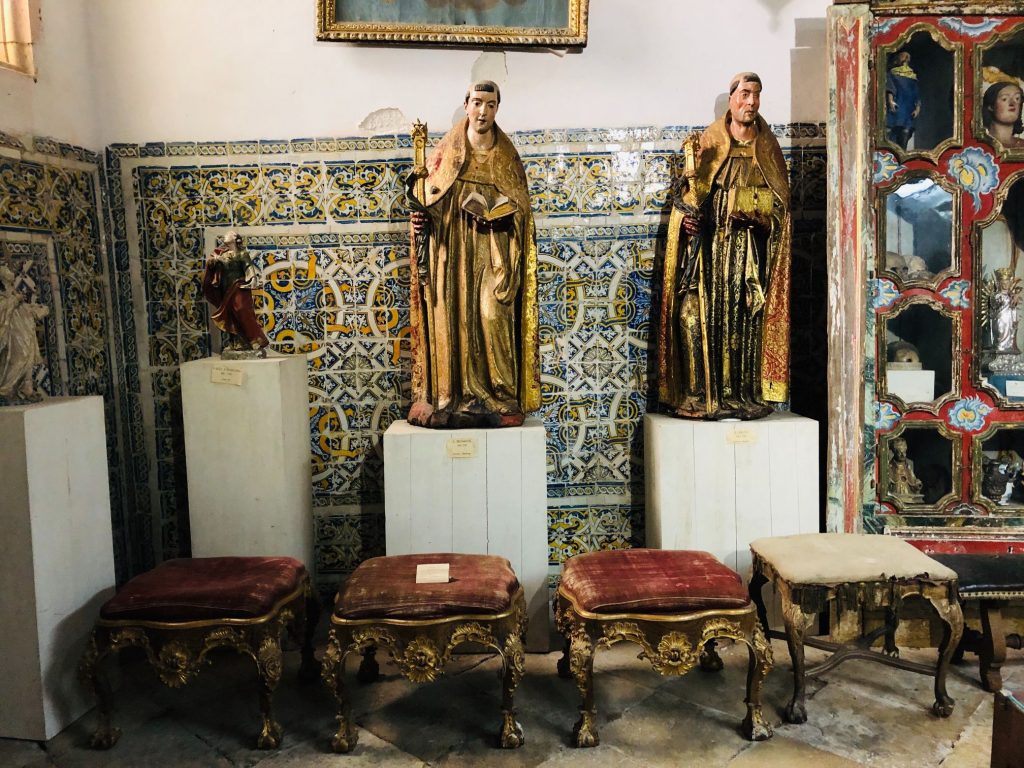





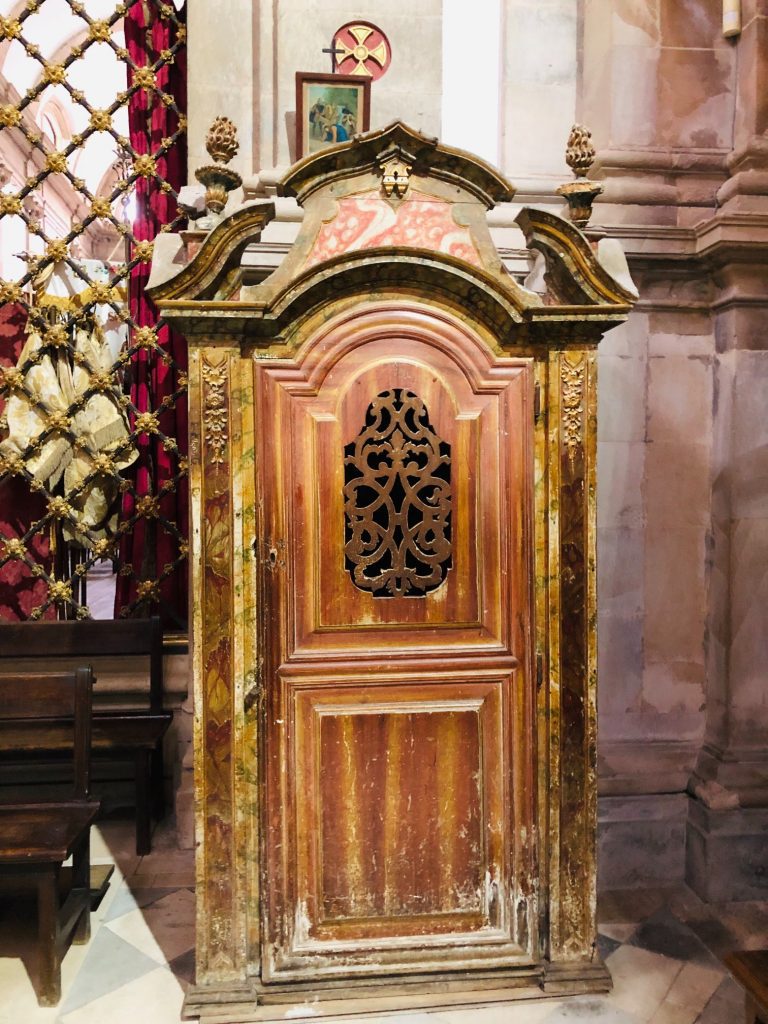


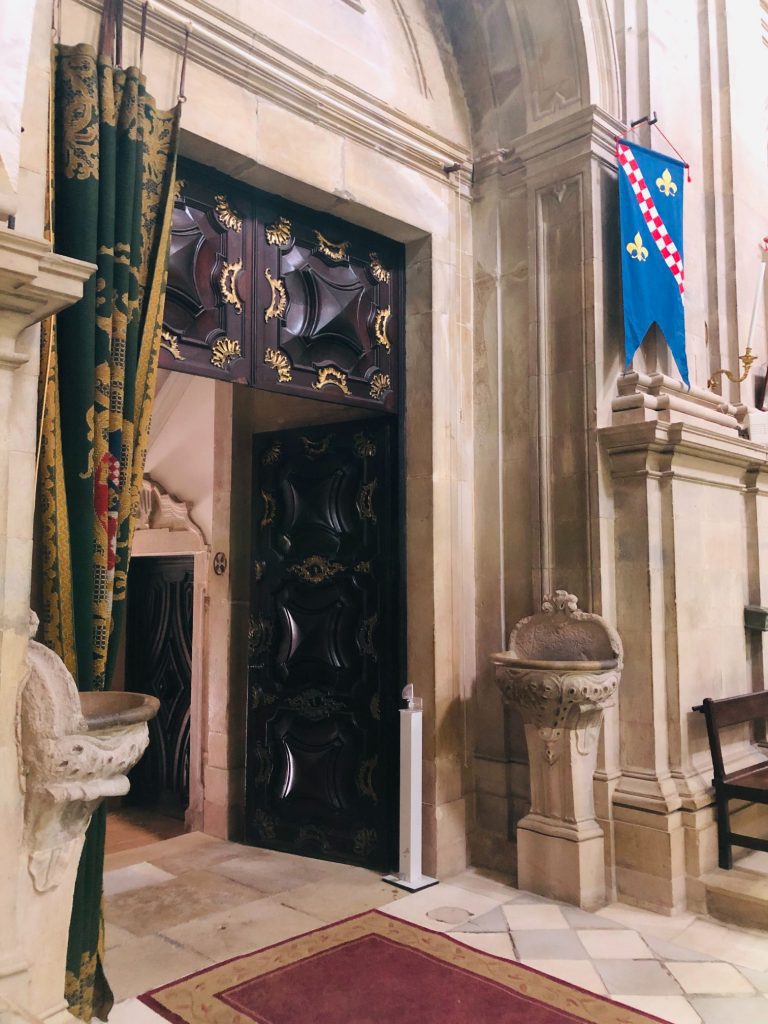


Freddo the Frog Boy – Weird and Wonderful
There was one statue which made us giggle. I have no idea what is poking out of the child’s mouth! It might be a frog. I really wanted to ask our tour guide what the story was behind it but my lack of Portuguese and his lack of English prevented this random conversation from happening so it will just have to be a mystery. I did get uncontrollable giggles when hubby spotted this bizarre marvel. I nearly wet myself laughing. It’s almost like the boy is looking up and the Bishop priest is saying “WTF are you doing now Freddo” (ha ha). I did a little investigating when I returned home and a Google search reveiled that Saint Blaise was a Martyr, Bishop and Catholic Saint who became famous because after a short prayer he removed a thorn from the throat of a child. For this reason, he is the Patron Saint of throat diseases. I’m not sure how that works and I’m slightly confused as I see a frog not a thorn.



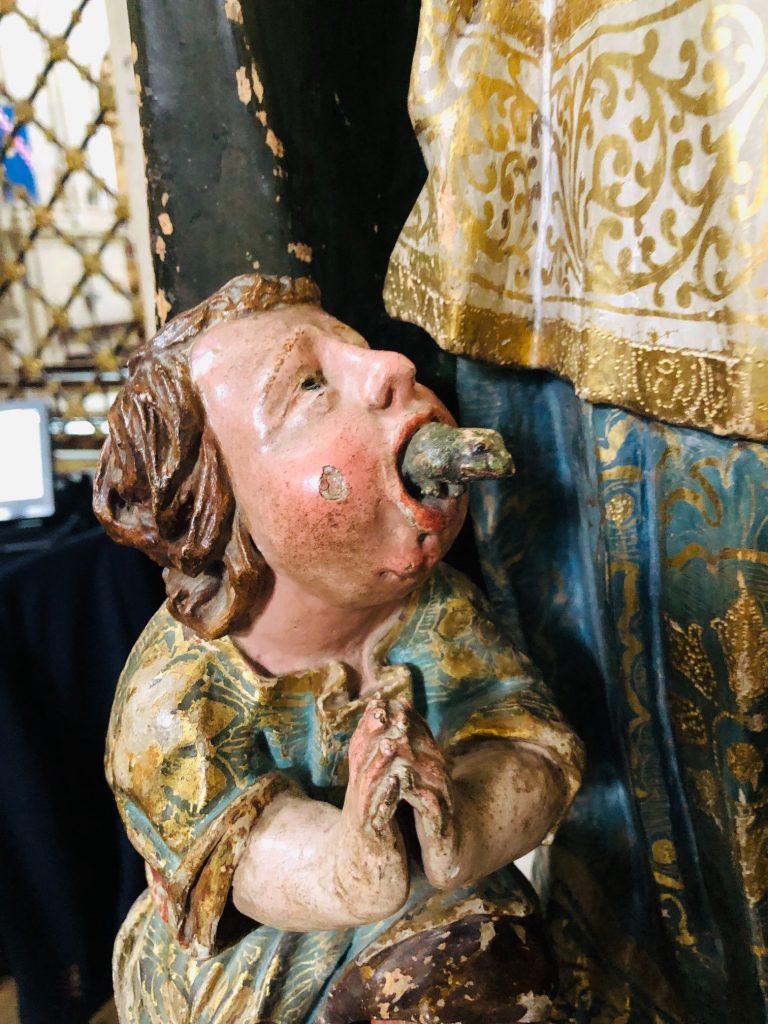


Monastery Exterior



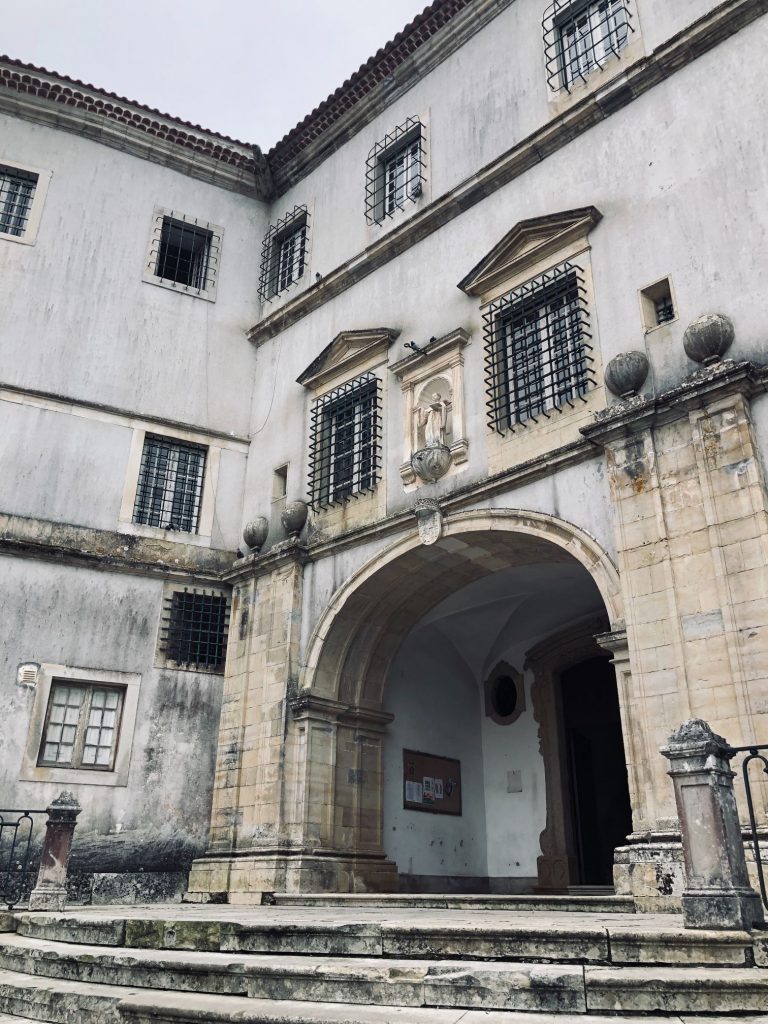


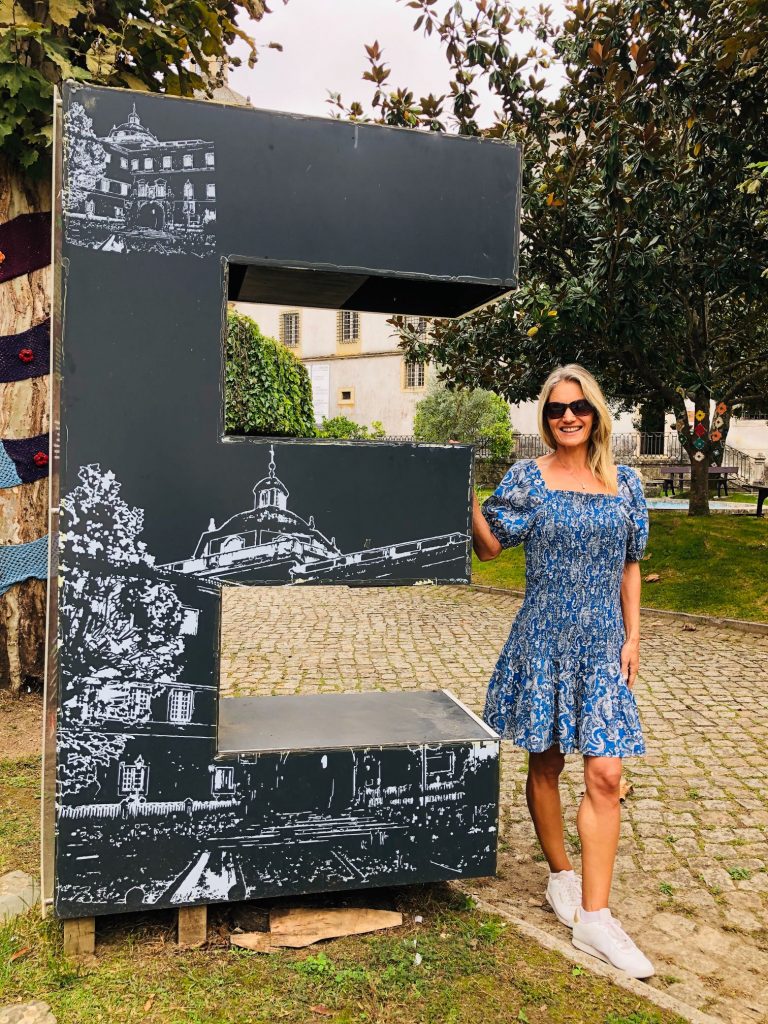


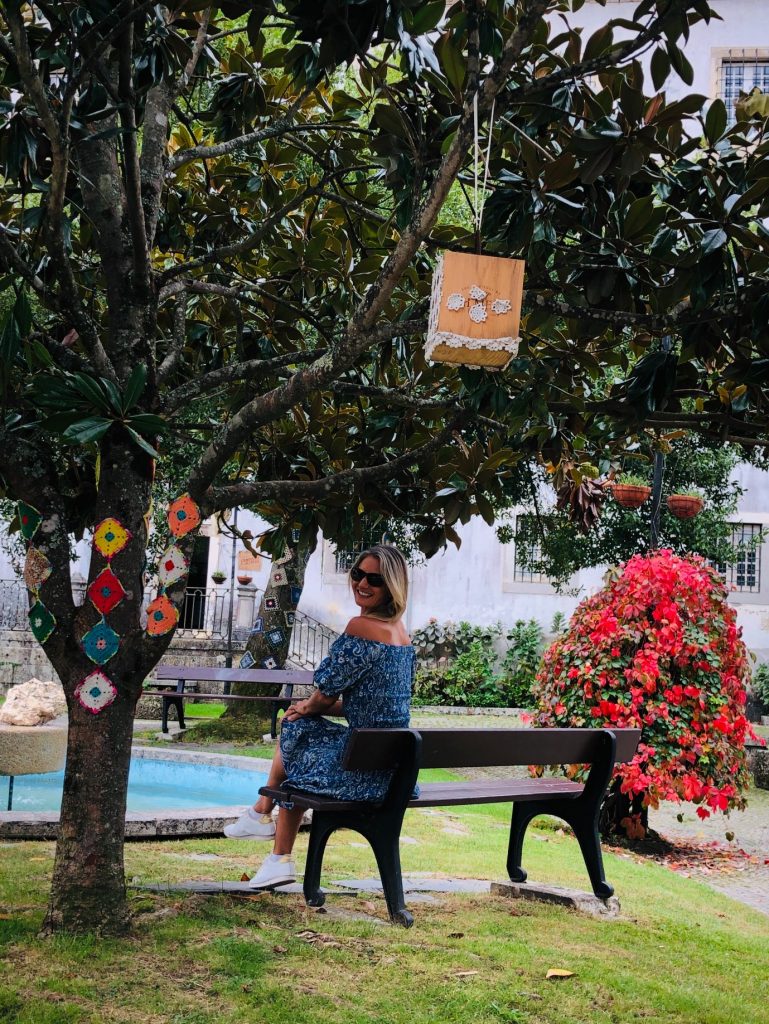


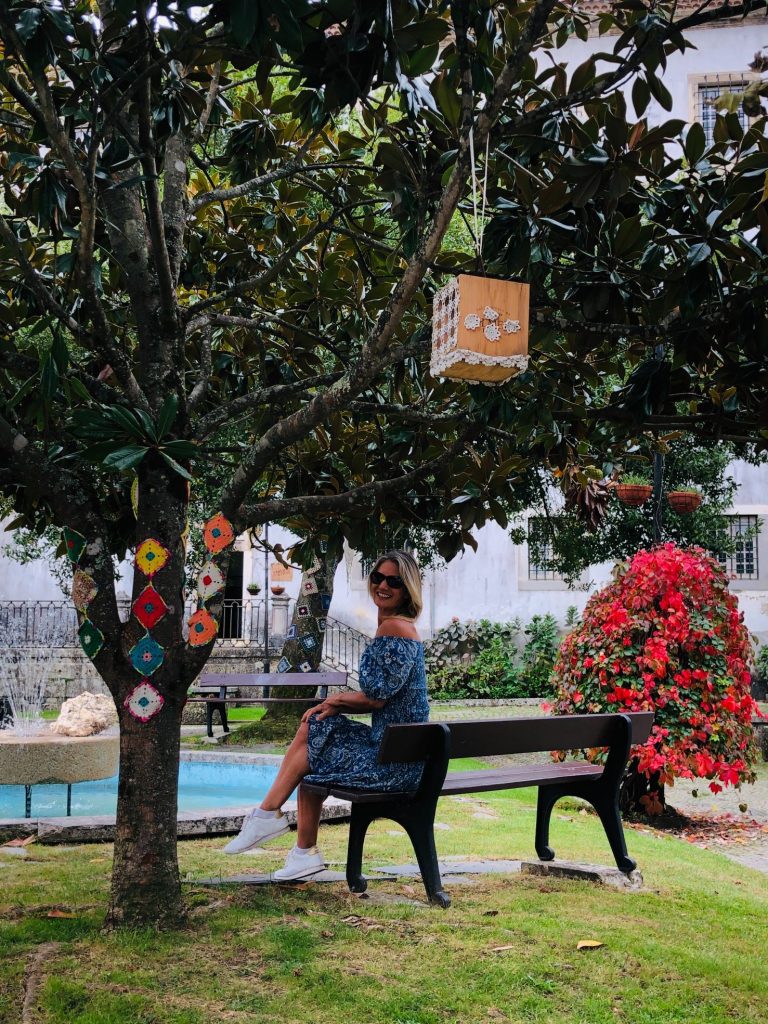





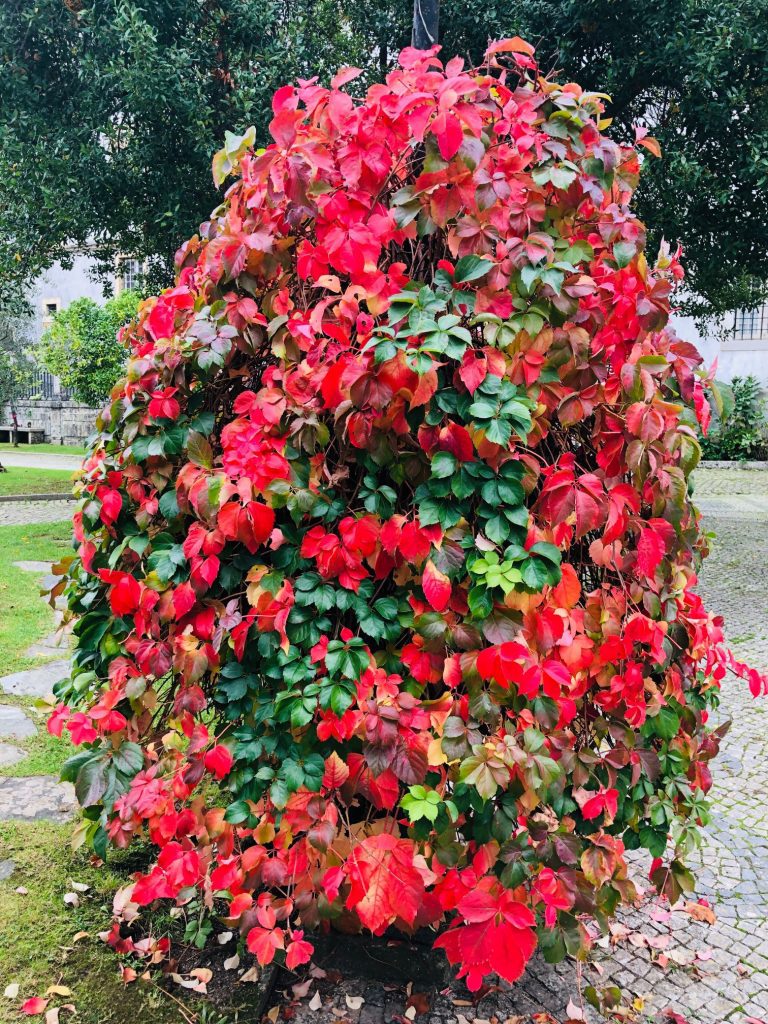


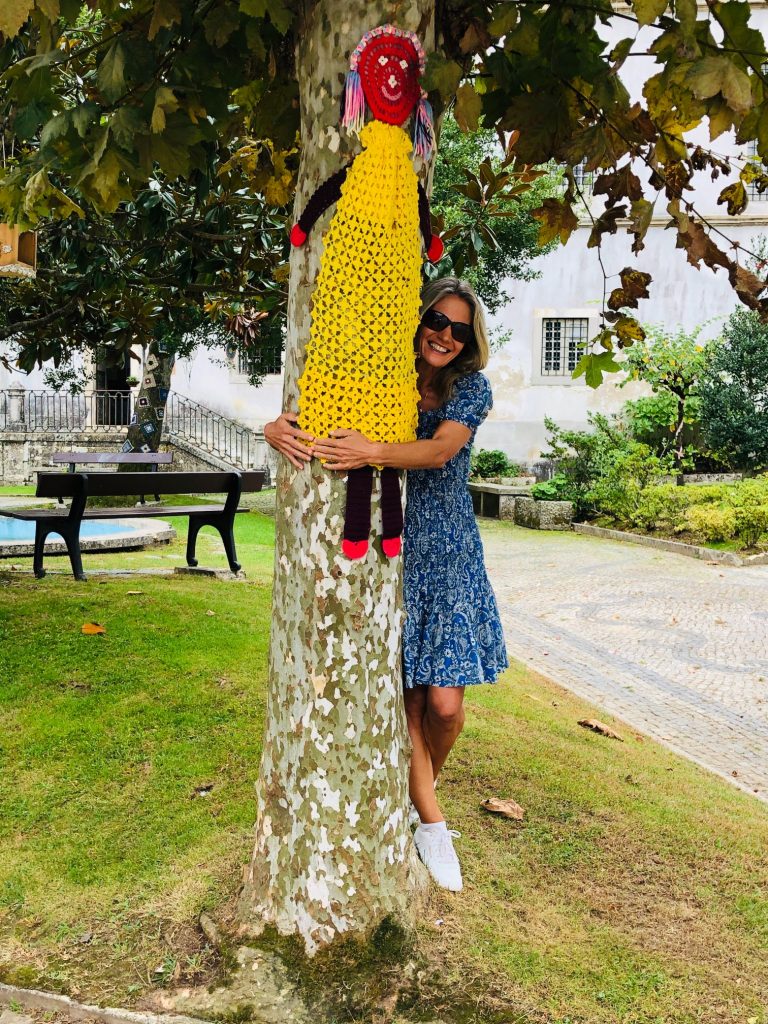


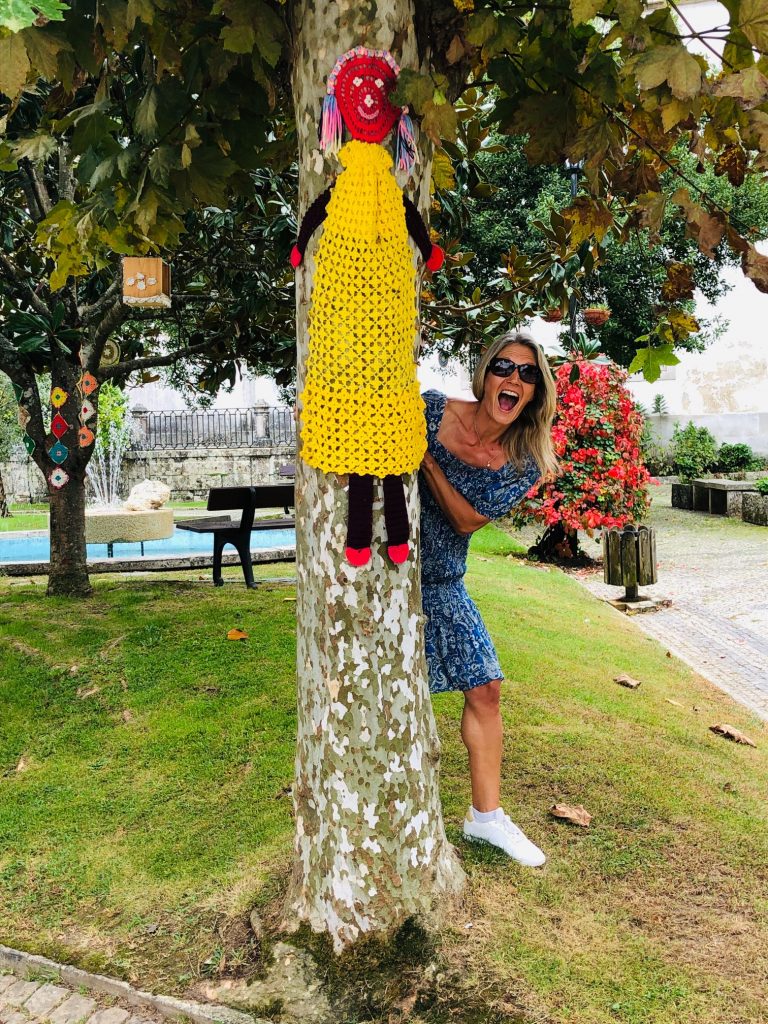





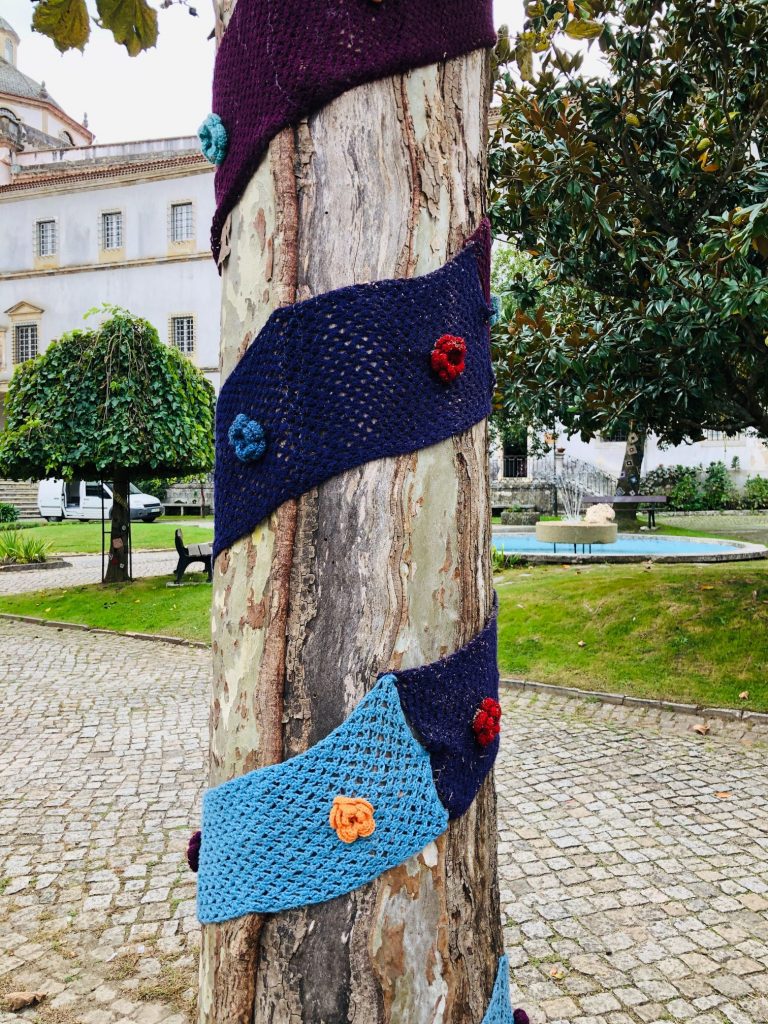


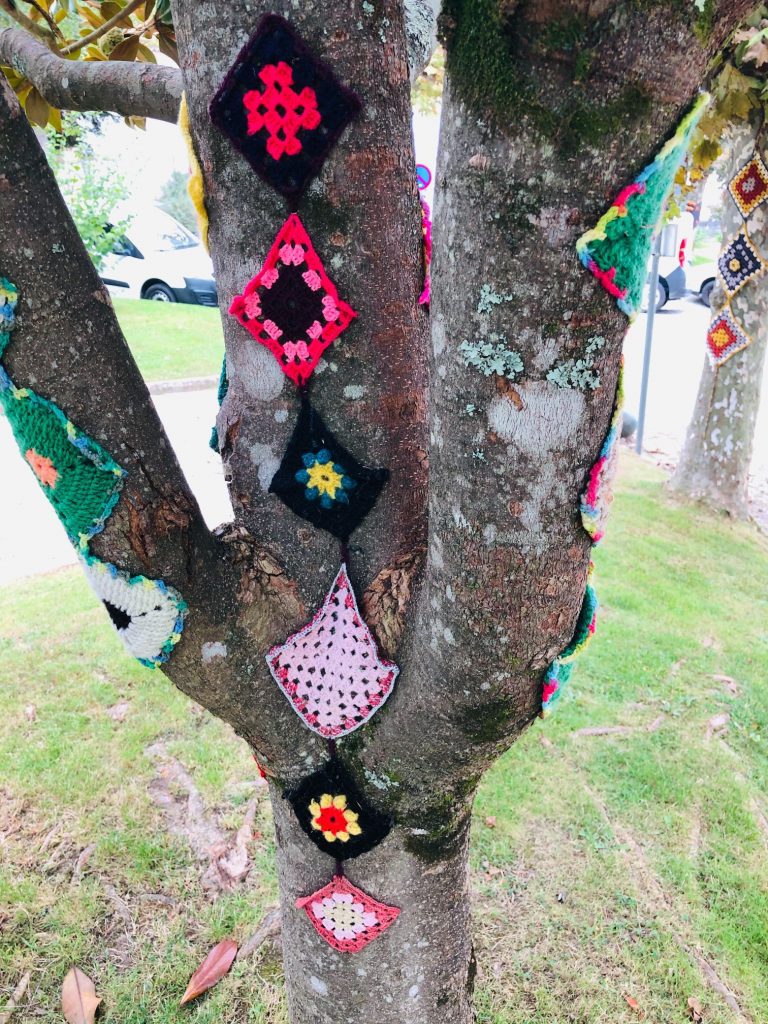


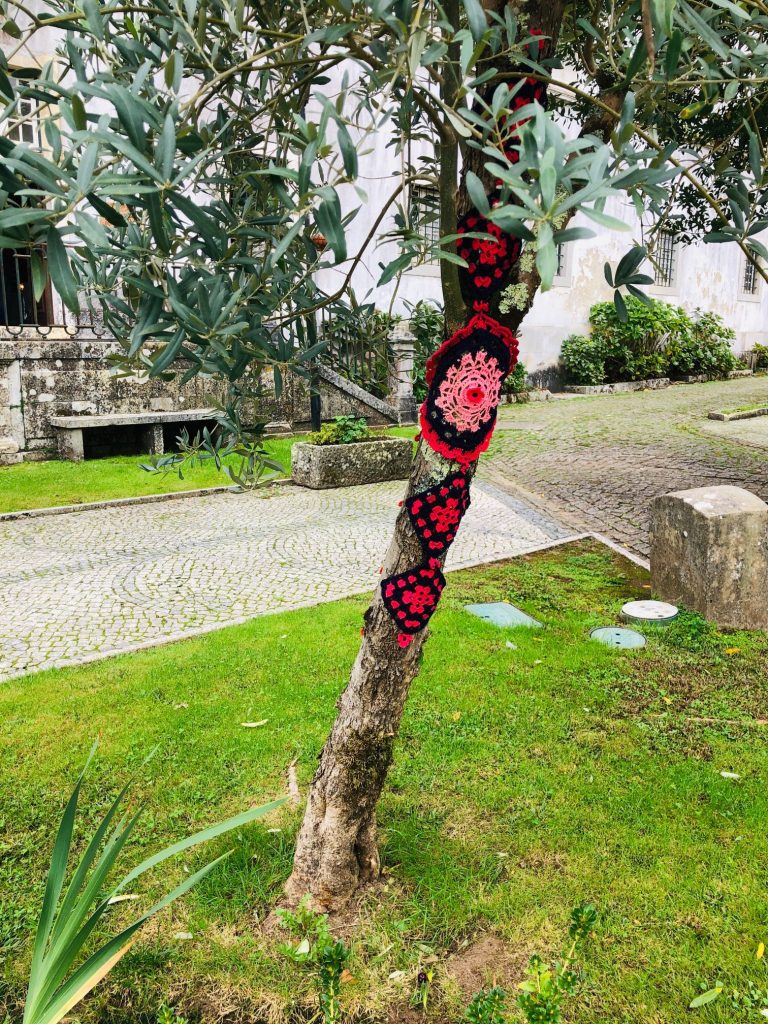





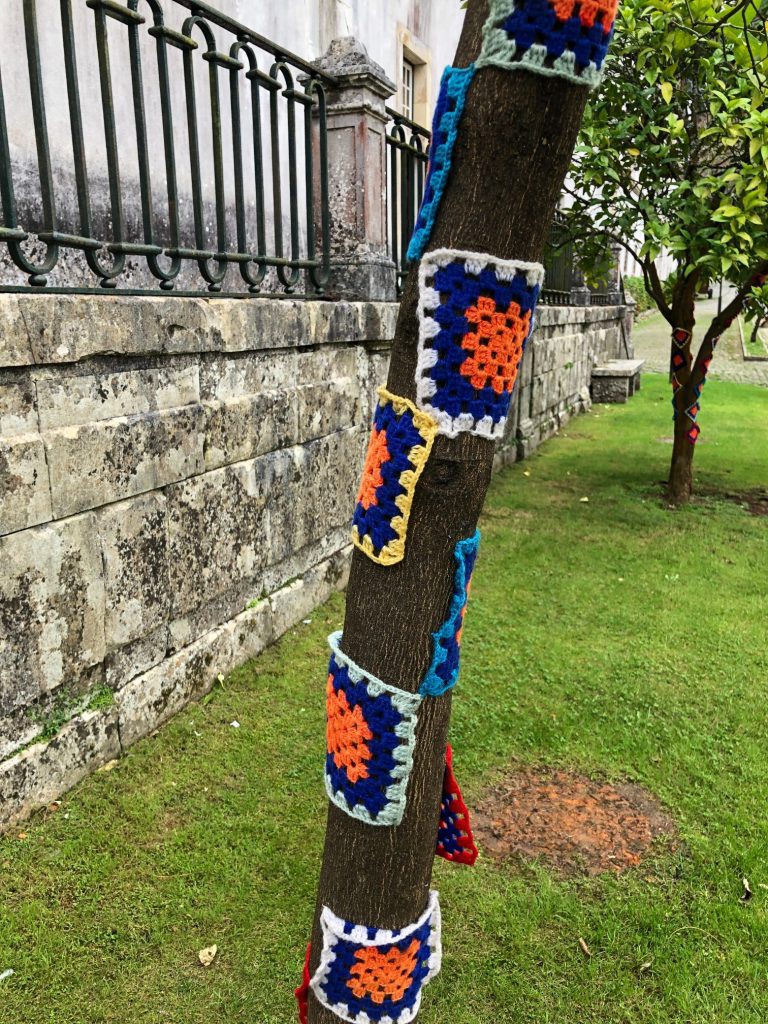


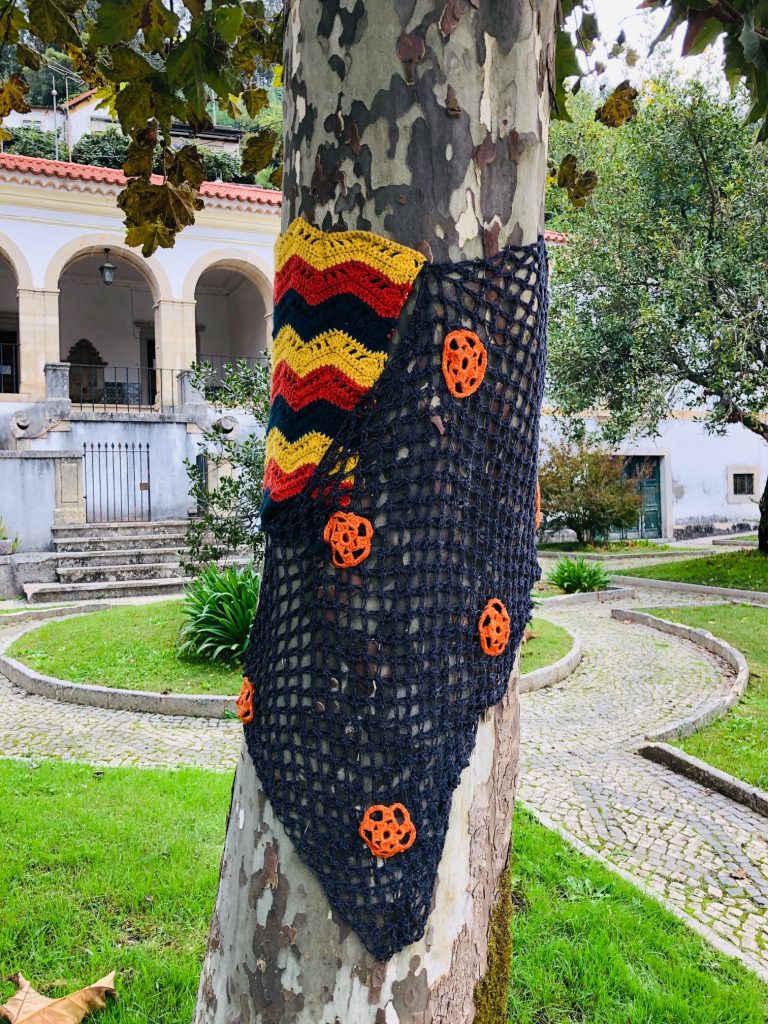


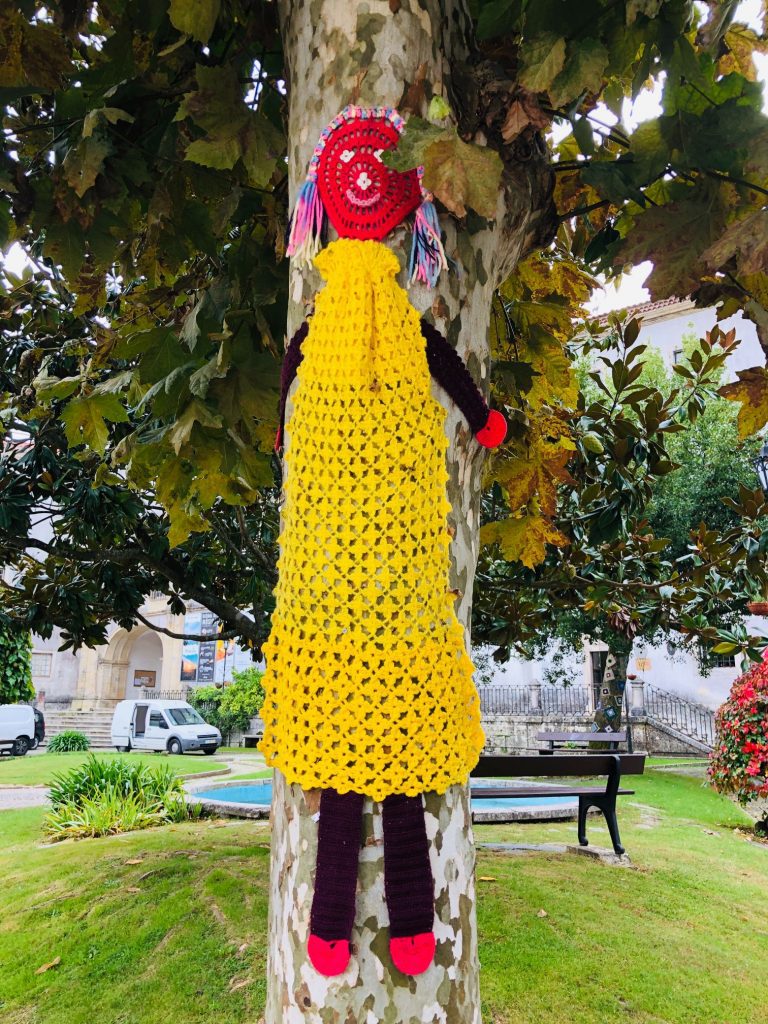


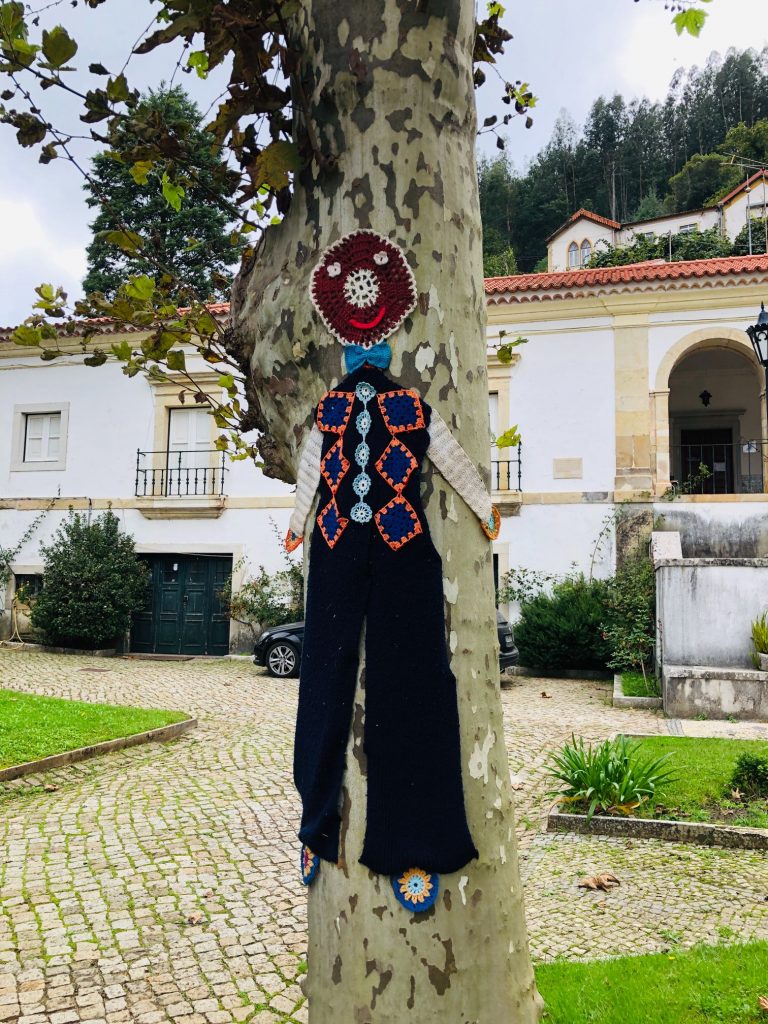


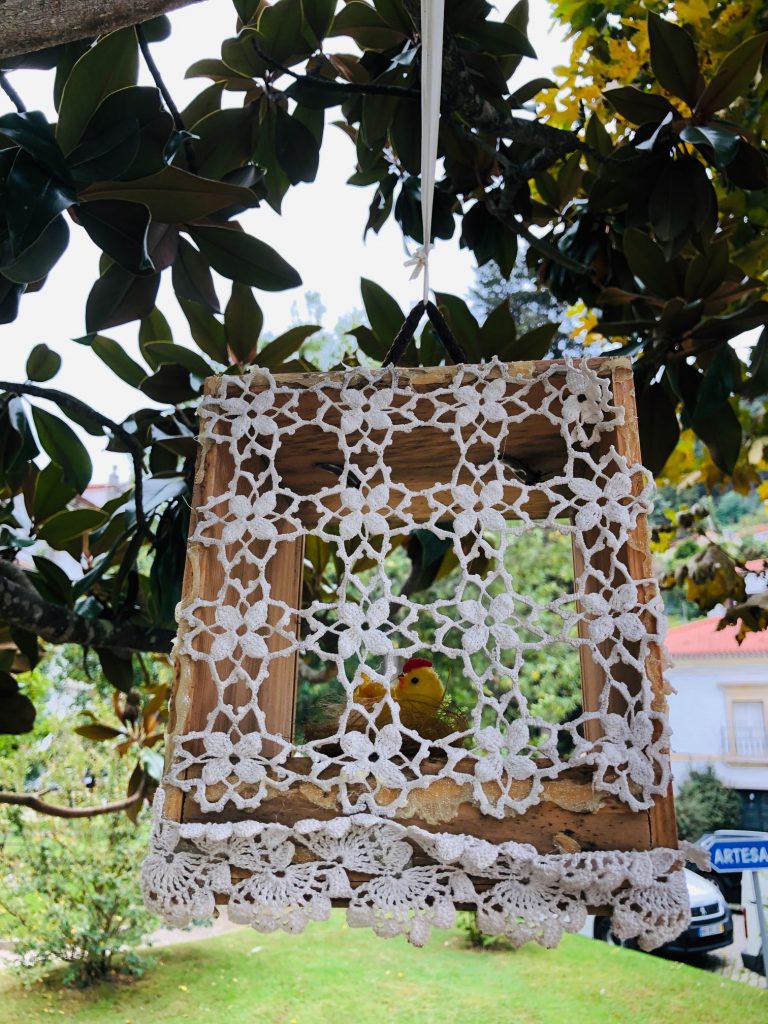


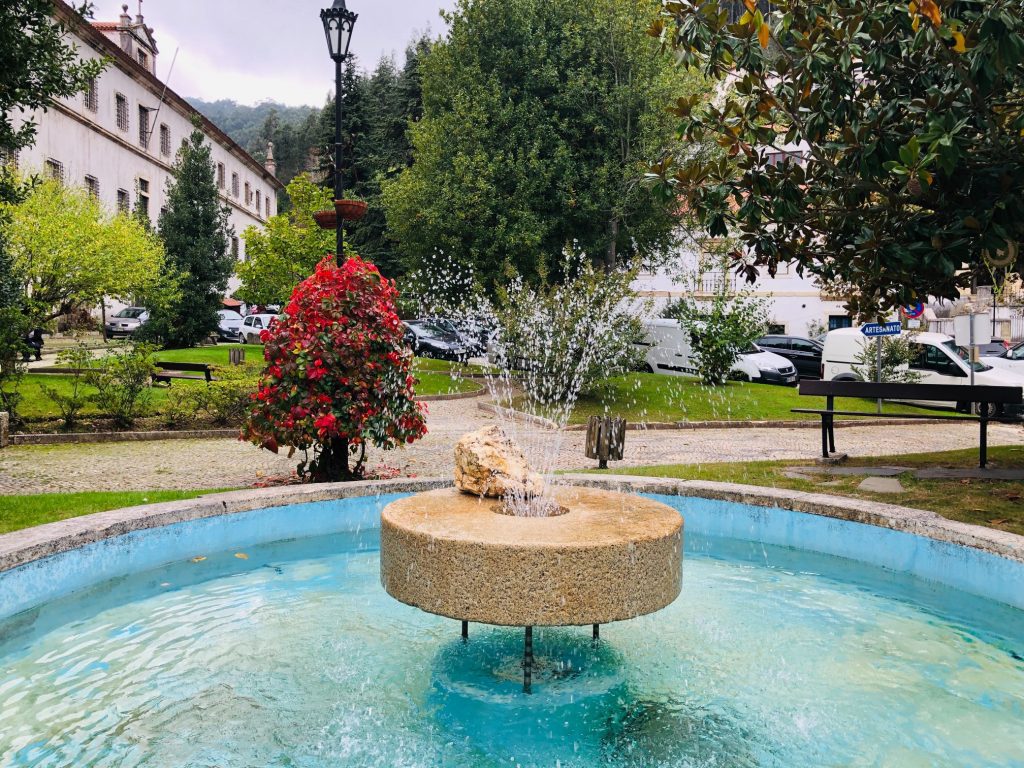


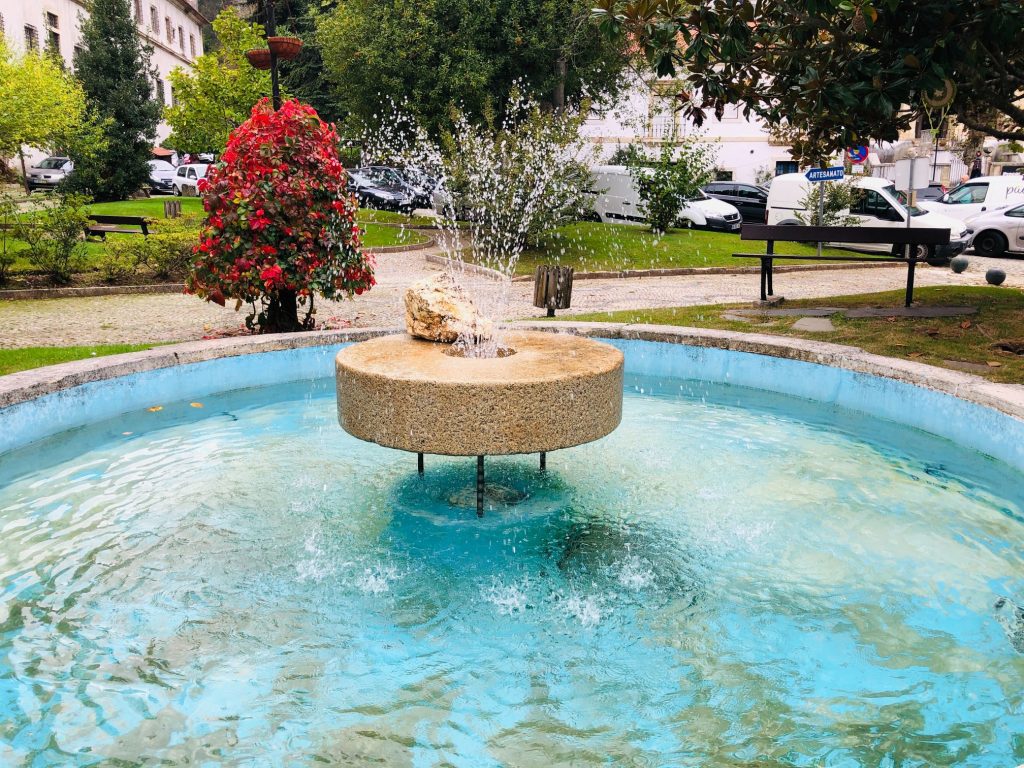





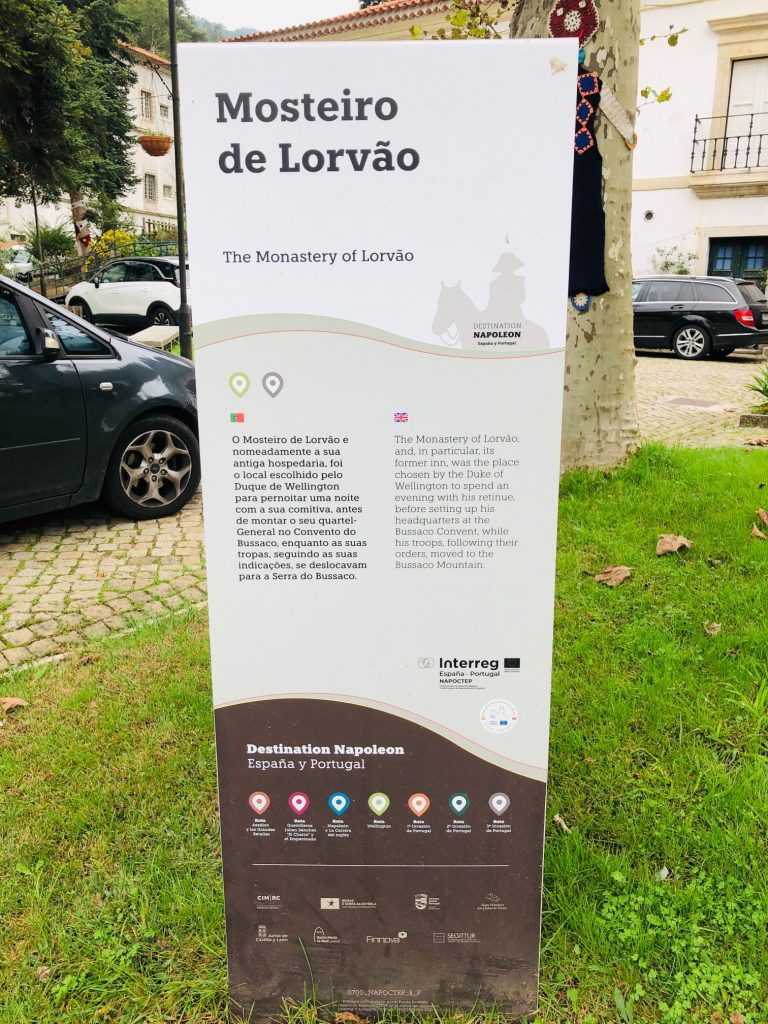


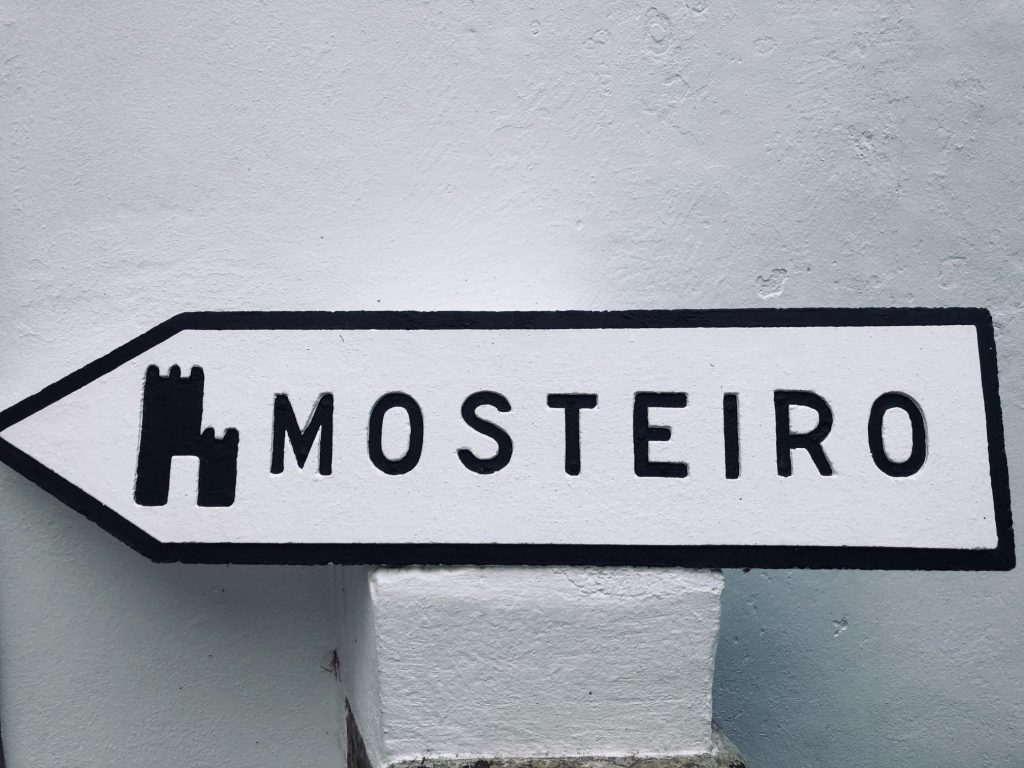


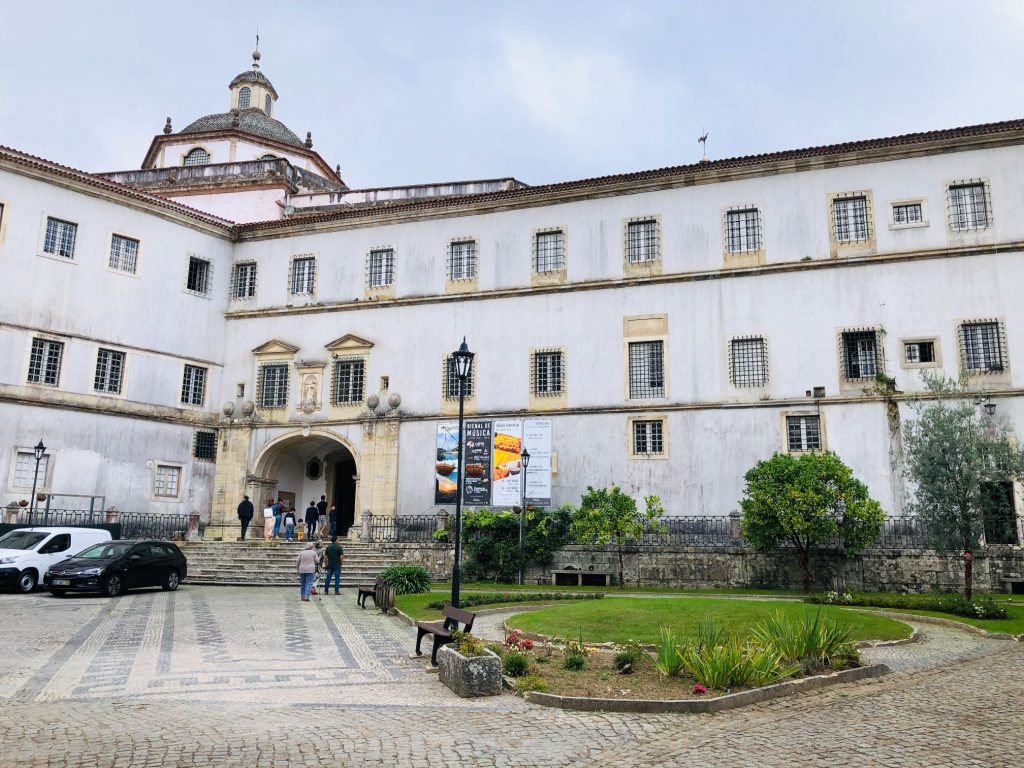





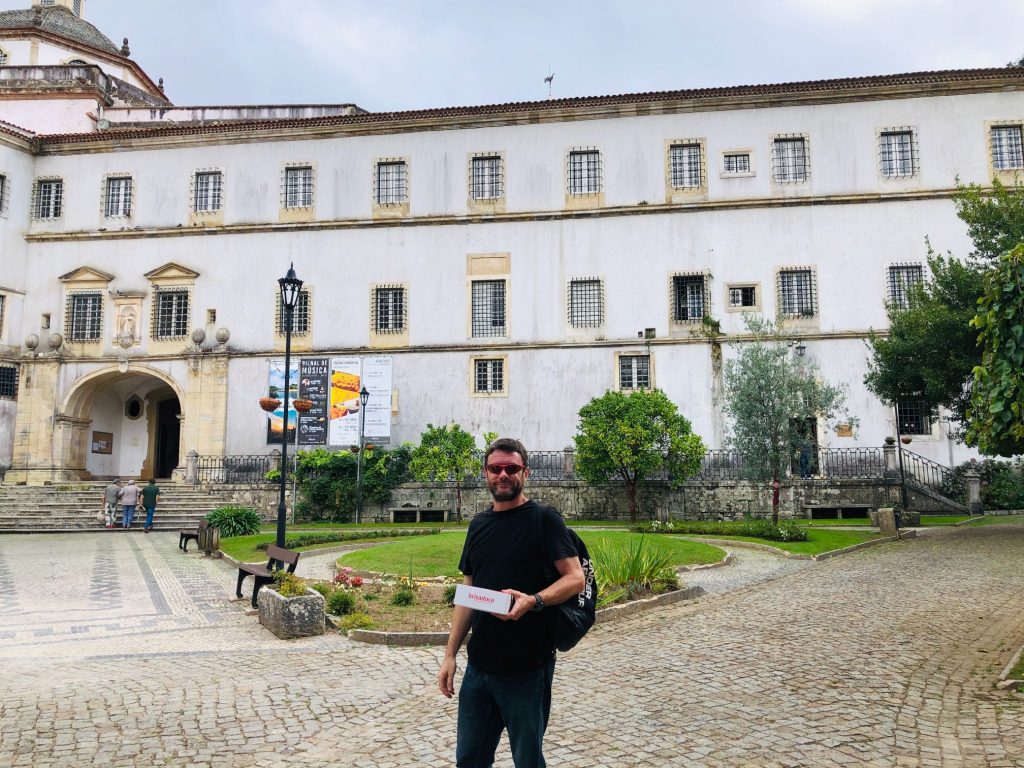


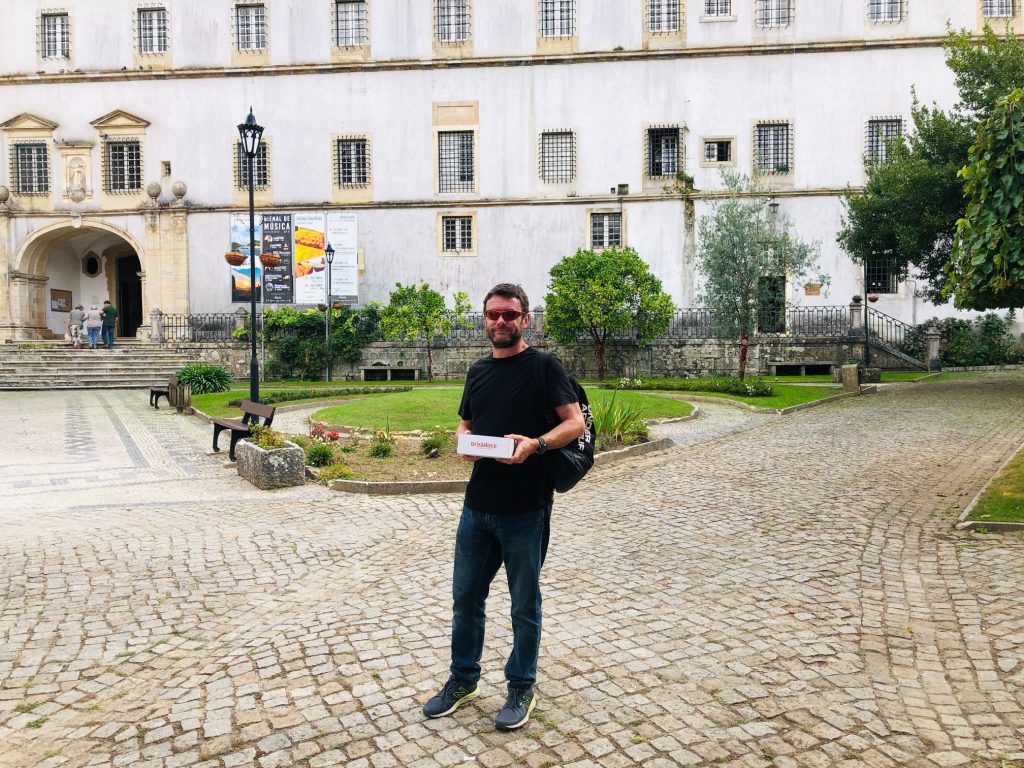


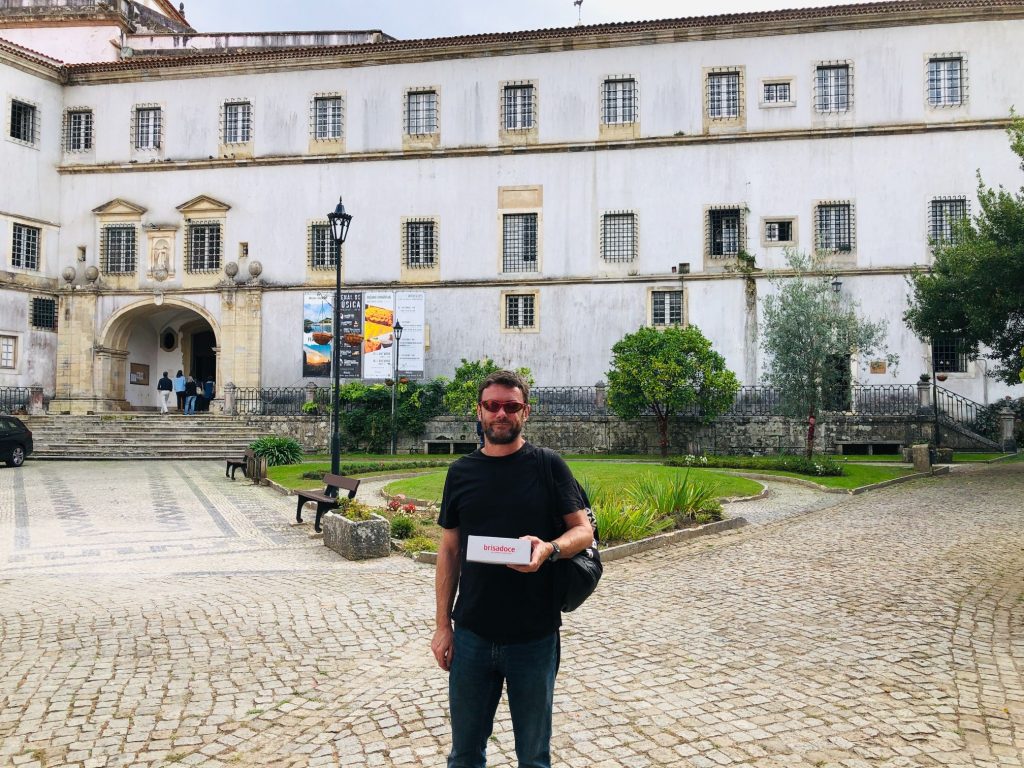


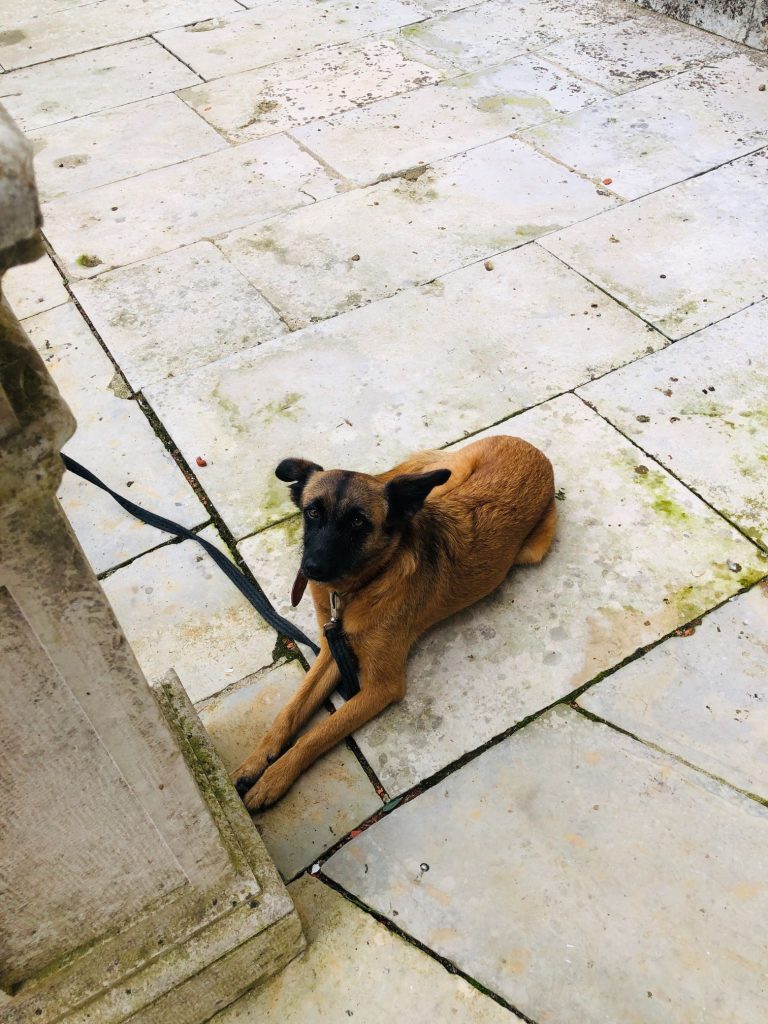


Mostra Nacional de Doçaria Conventual
We couldn’t have timed our visit any better as this weekend the Monastery was hosting “Mostra Nacional de Doçaria Conventual” located in the Cloister. A yummy convent sweets and cake convention. I just had to buy a “Doce Fálico de S.Gonçalo” Penis shaped pastry! There is a story behind why it’s shaped like a male anatomy, the nuns aren’t being saucy mares (ha ha). My heart is split about this F convention. Firstly it was awesome but it was located in the Cloister which meant we couldn’t explore this area and the fountain due to all the stalls, sellers and visitors. It was very quiet when we arrived but around 15:30 there was a large crowd of visitors for some form of champagne opening ceremony with an official speaker. A large group of people blocked the only exit which made it impossible for us to leave. We tried our best to squeeze through the crowd whilst shouting “Com licença” (Excuse me) but got a few rude looks as I think they thought we were pushing in and trying to reach the front to get first dibs on the champagne. My sole mission was to get out without crushing the box safely containing my penis pastry (ha ha)
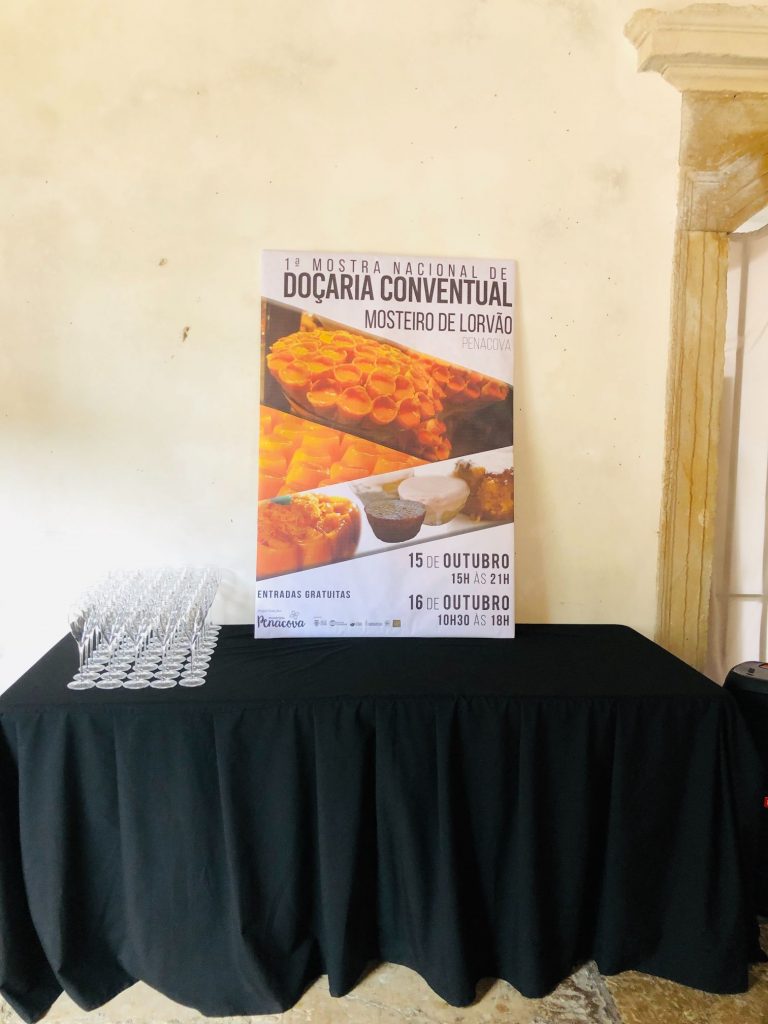


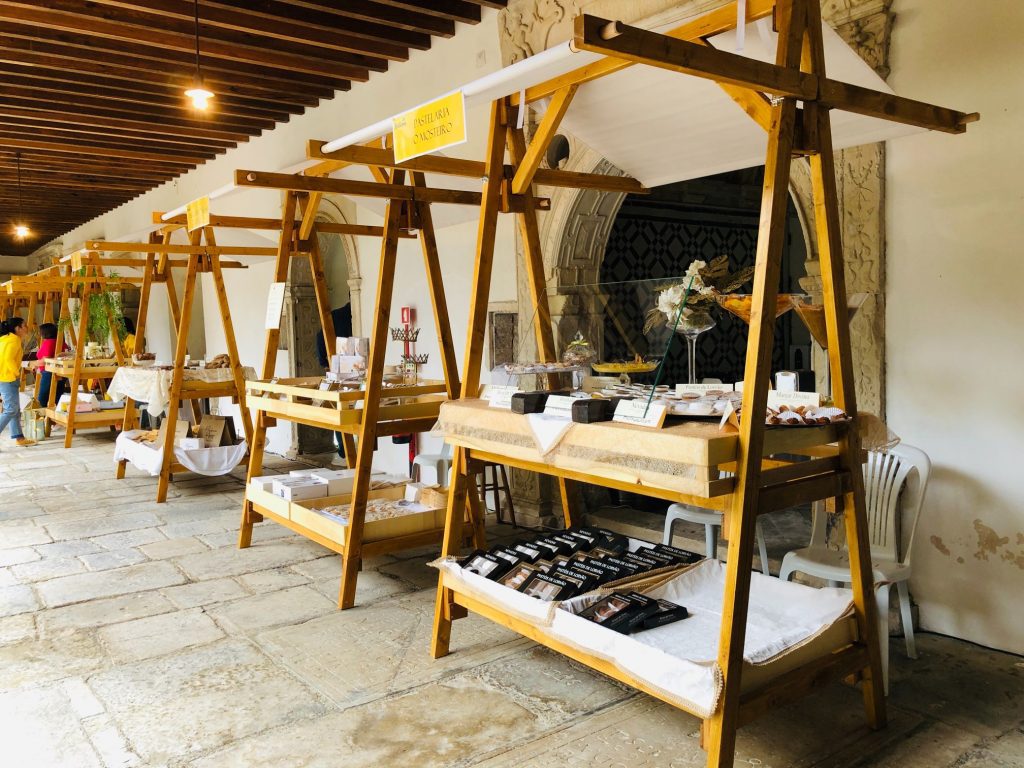


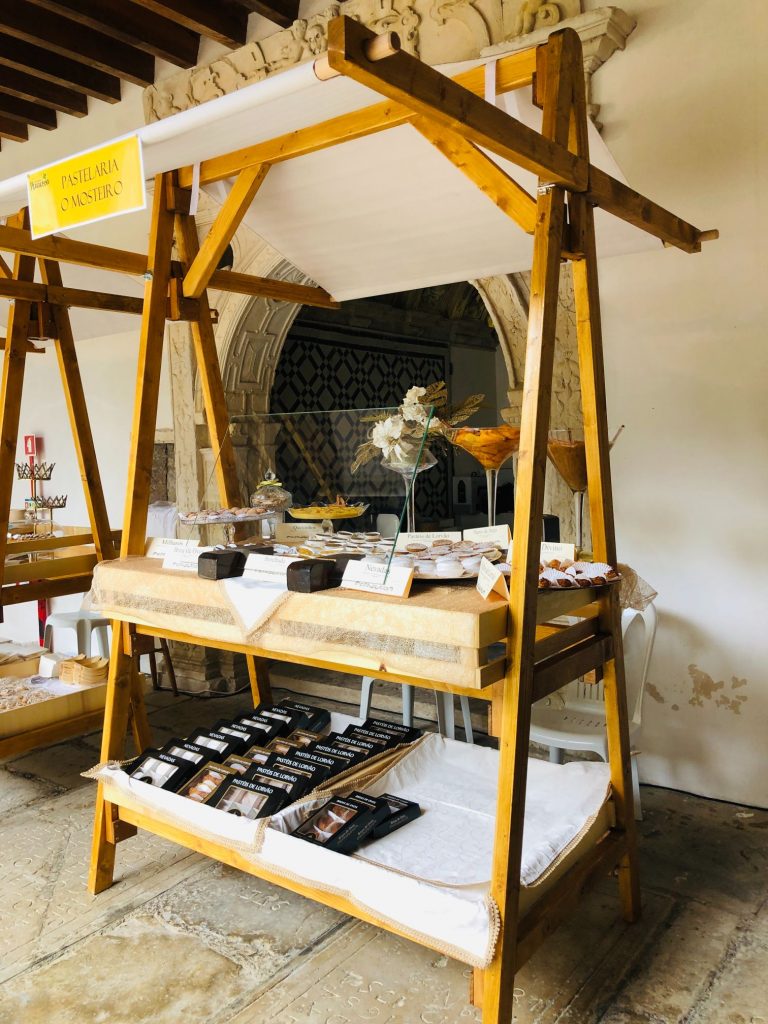


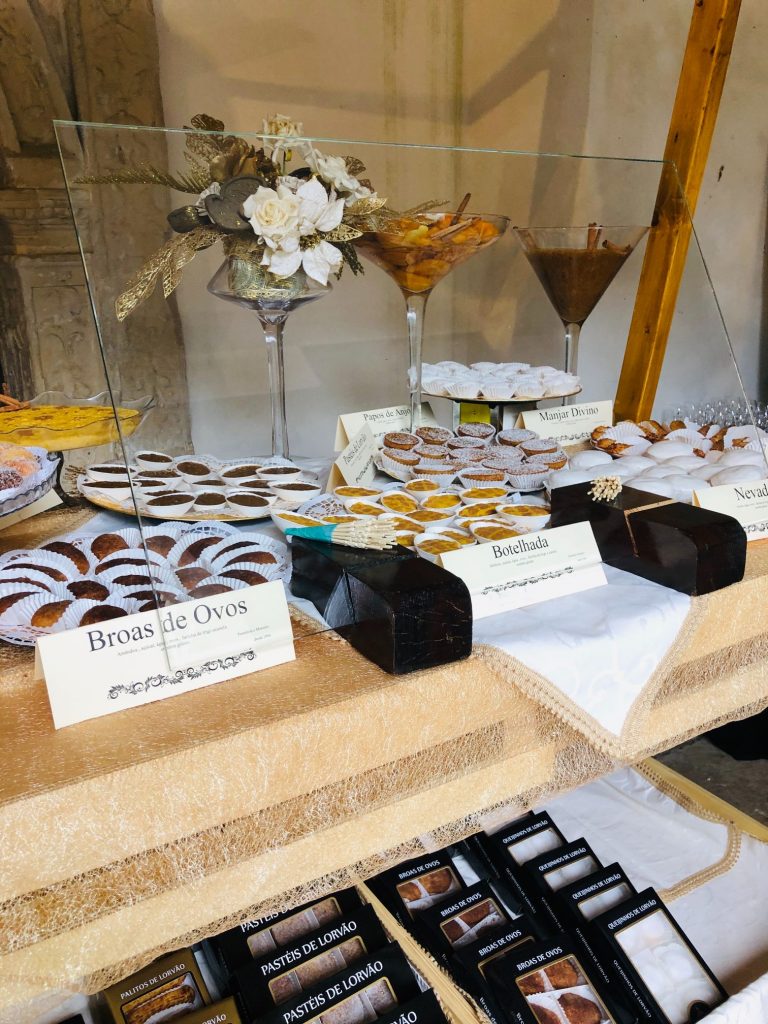


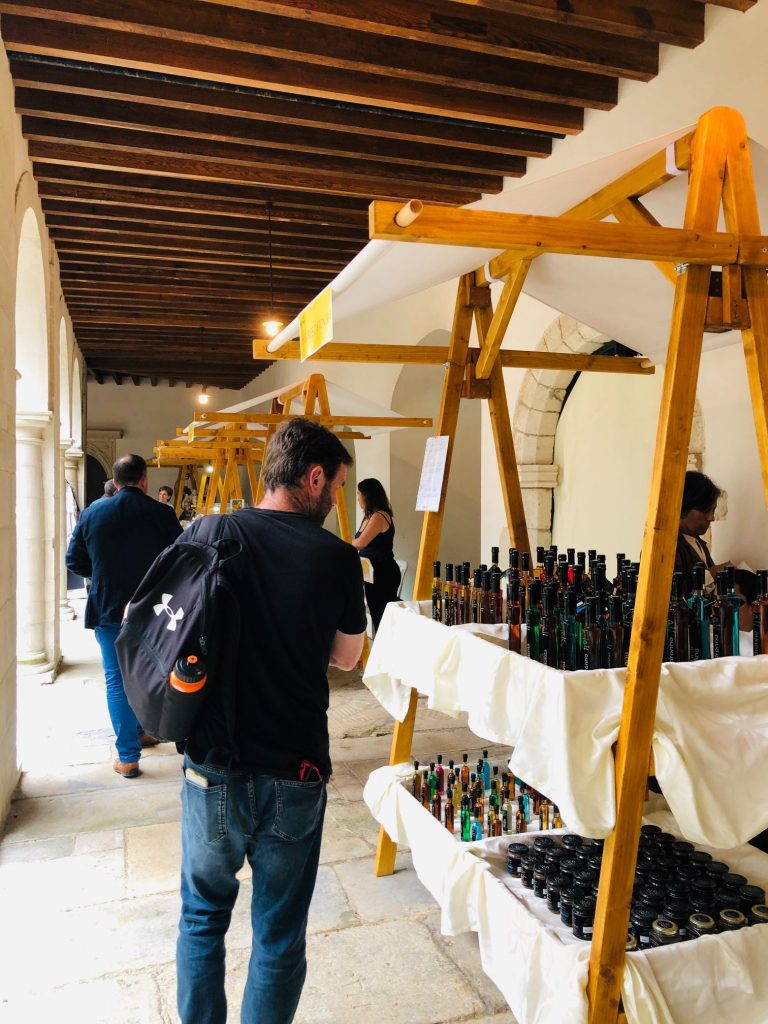


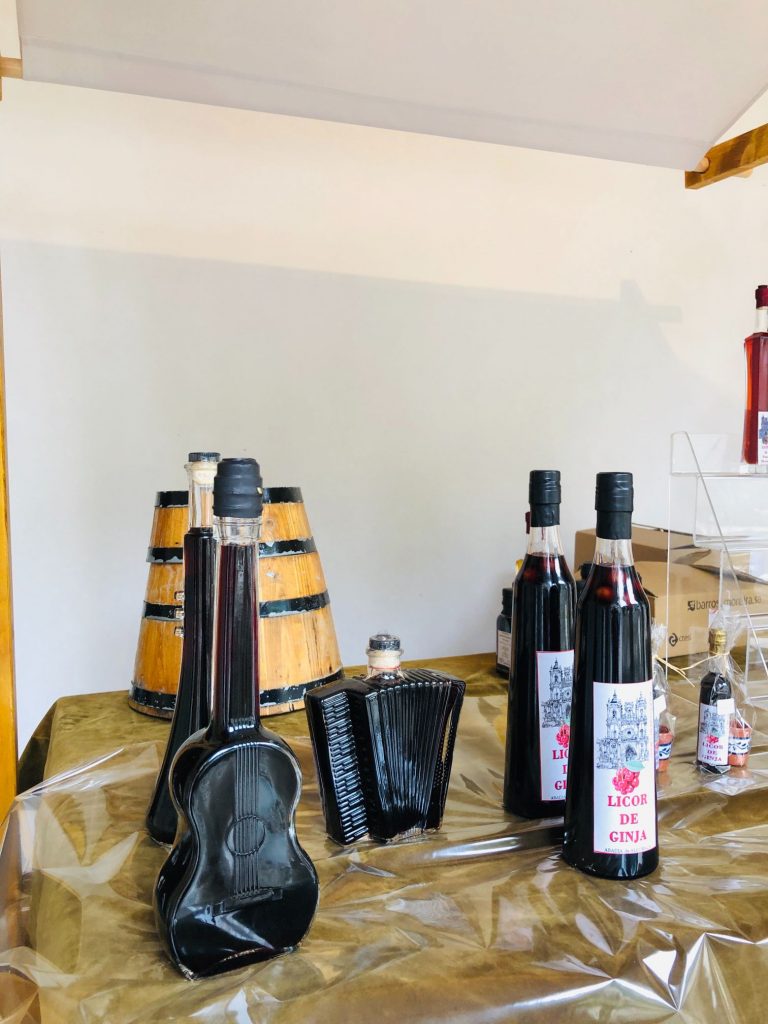


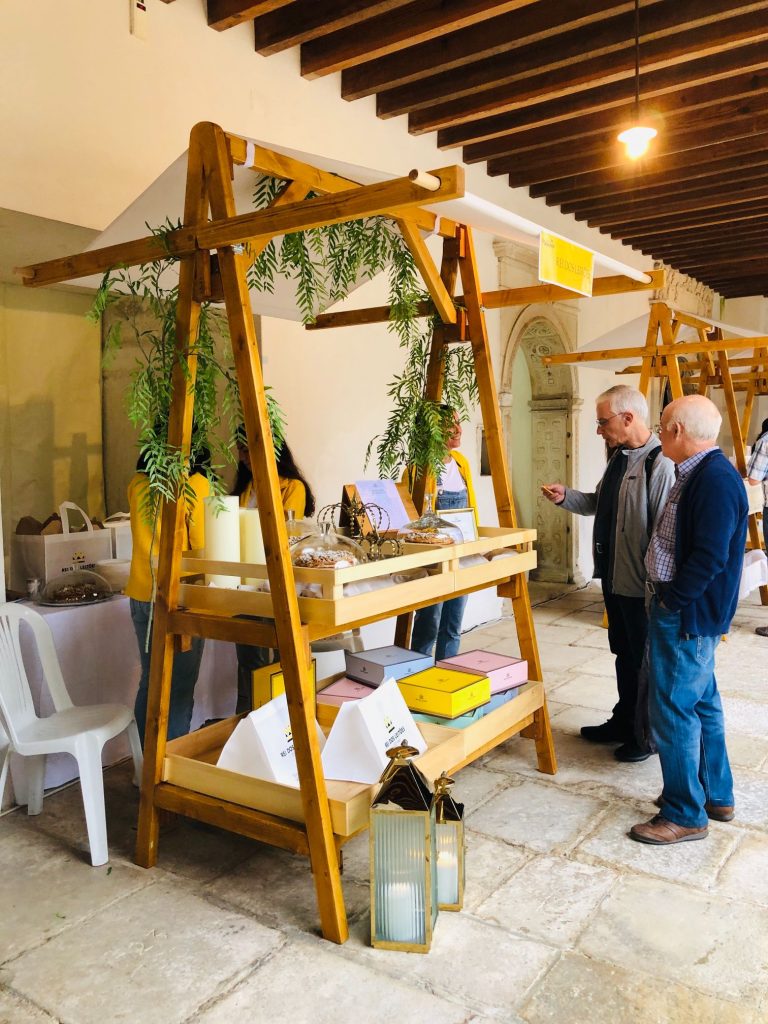


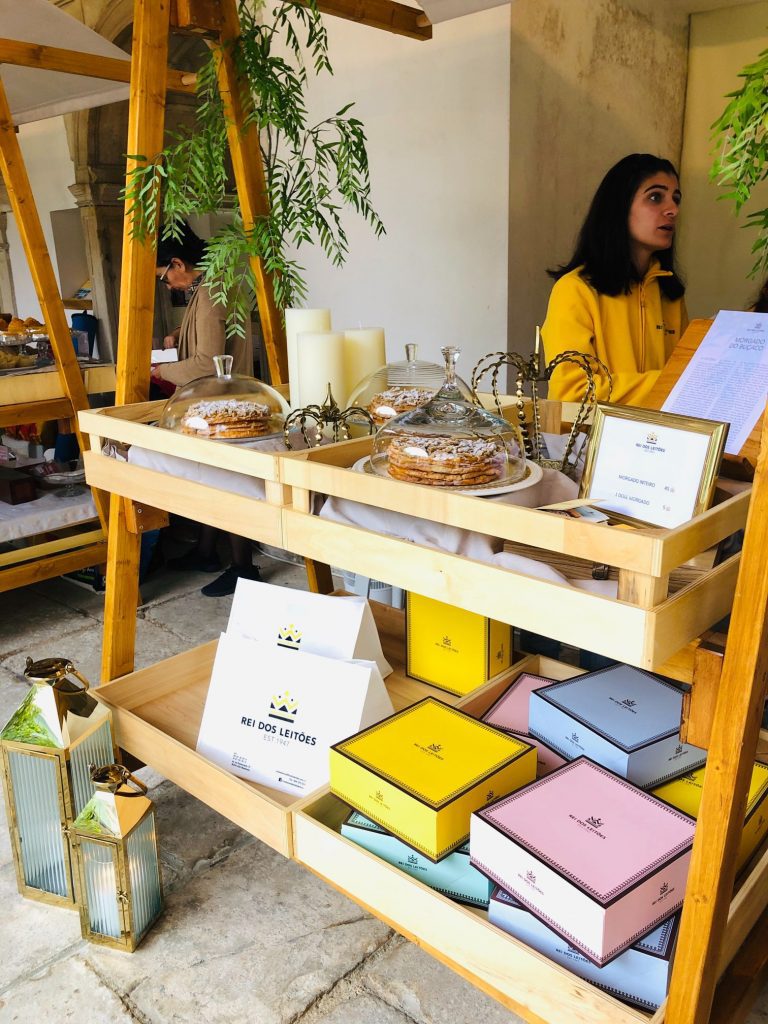


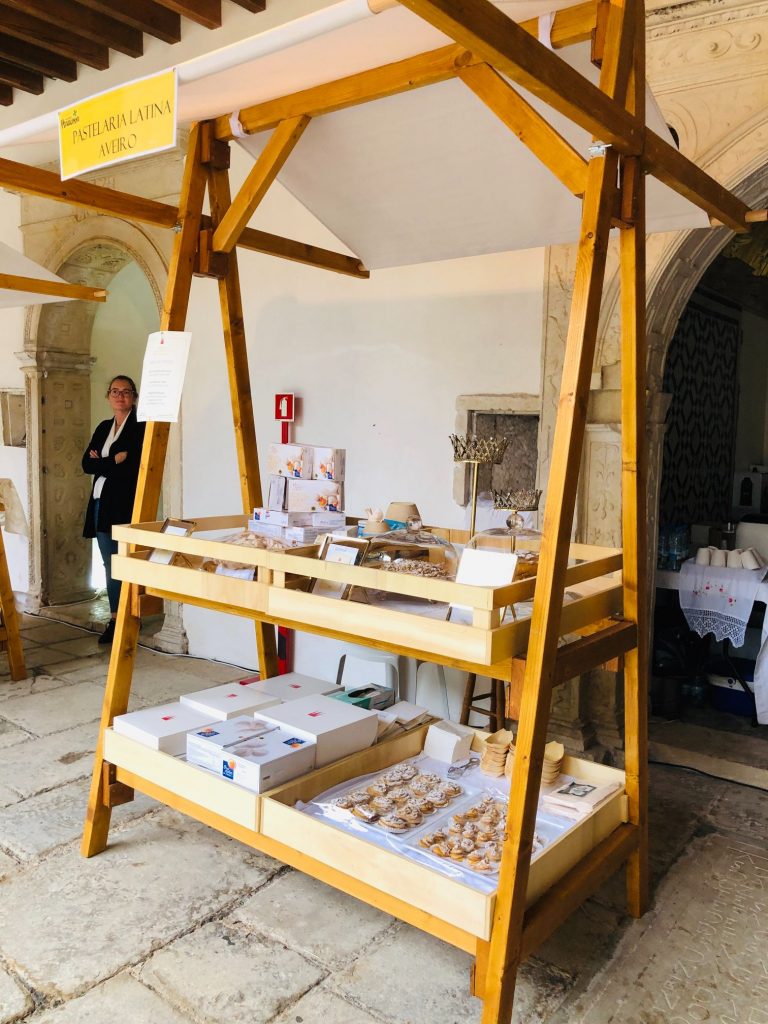





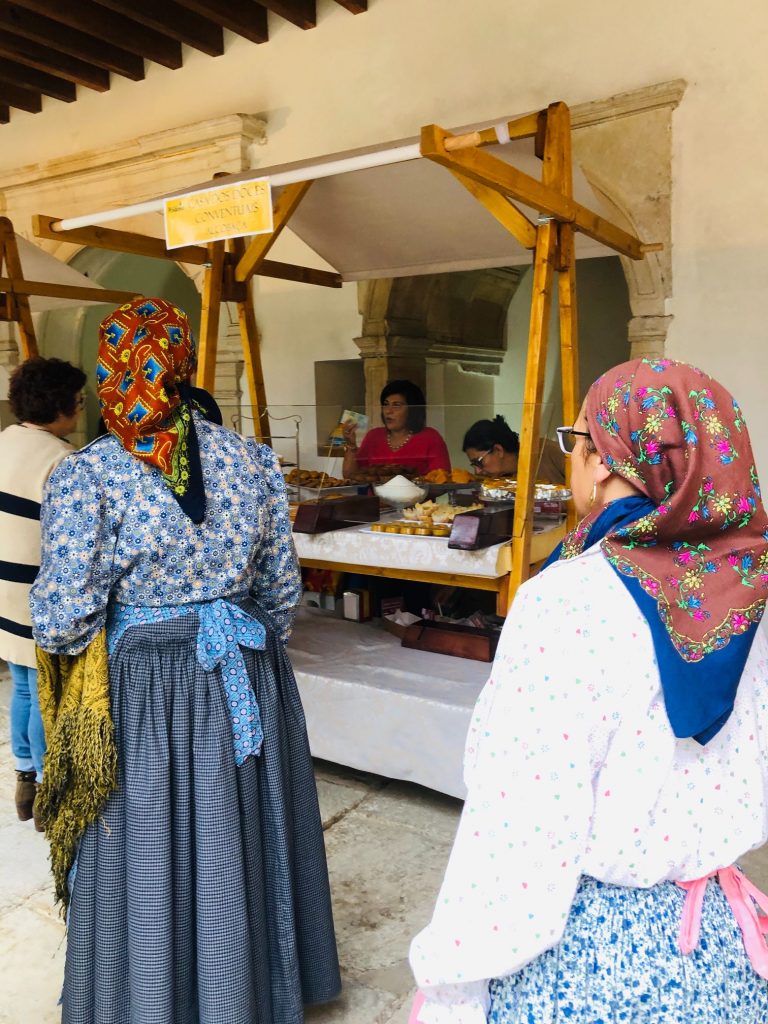


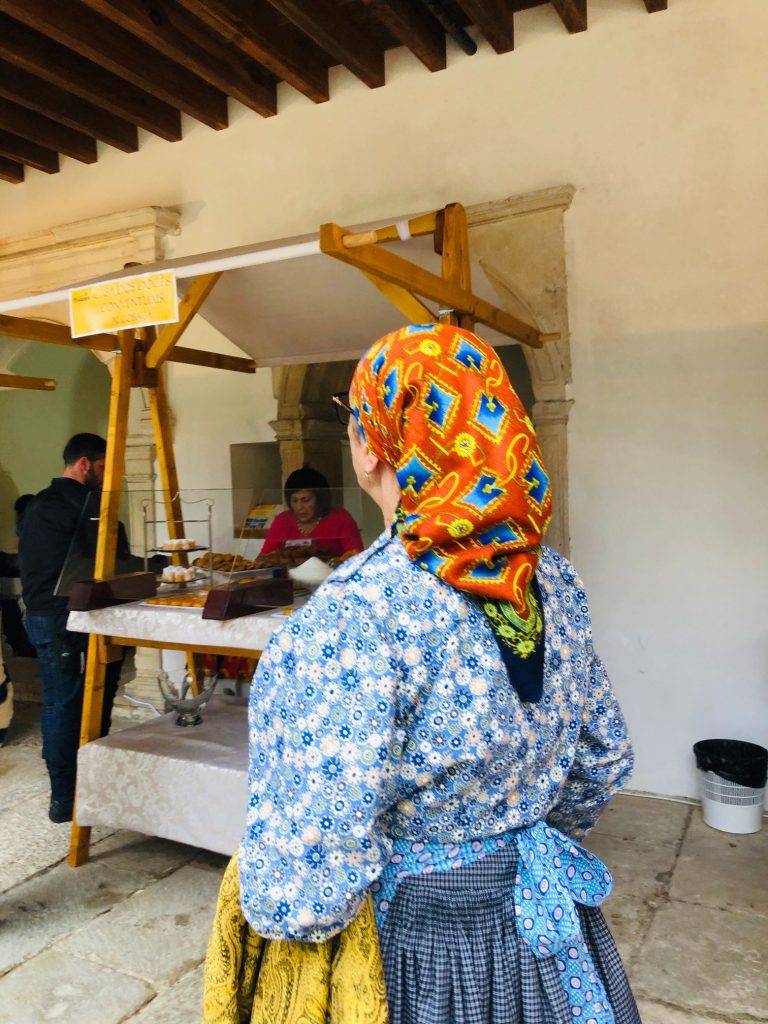





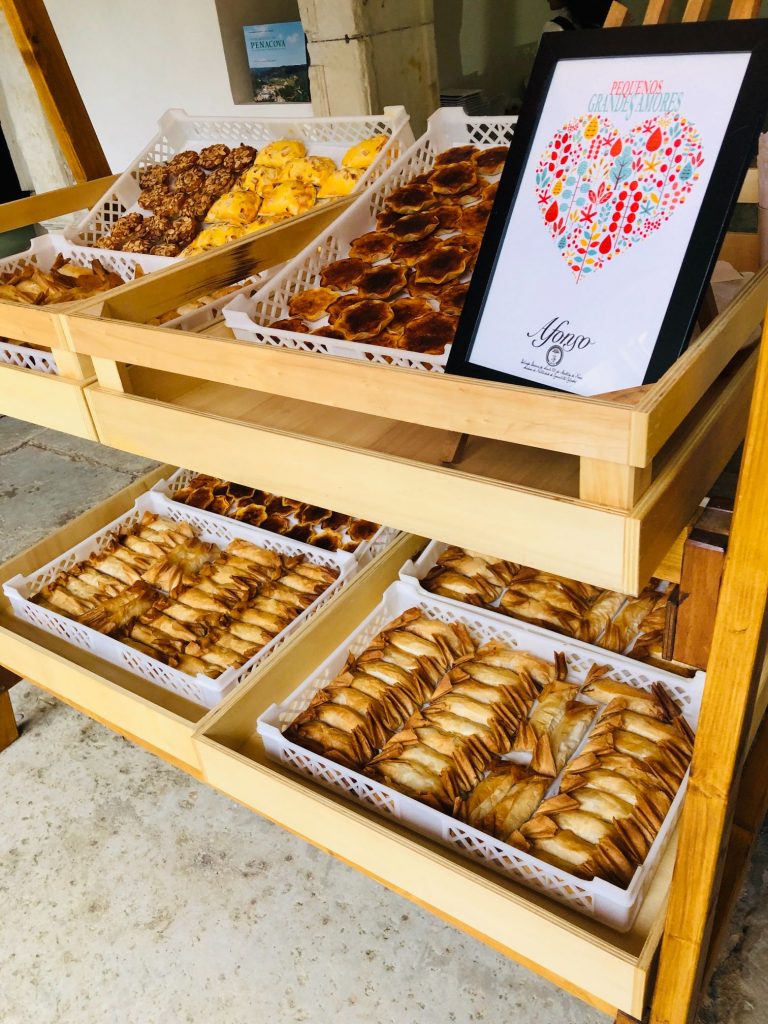


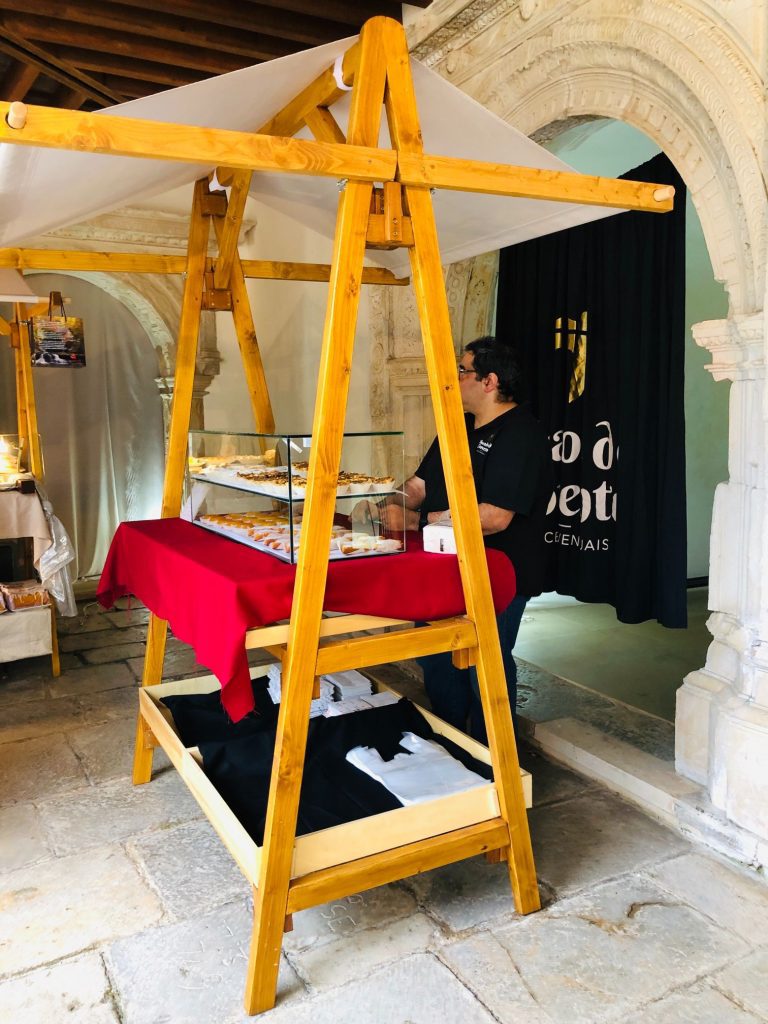


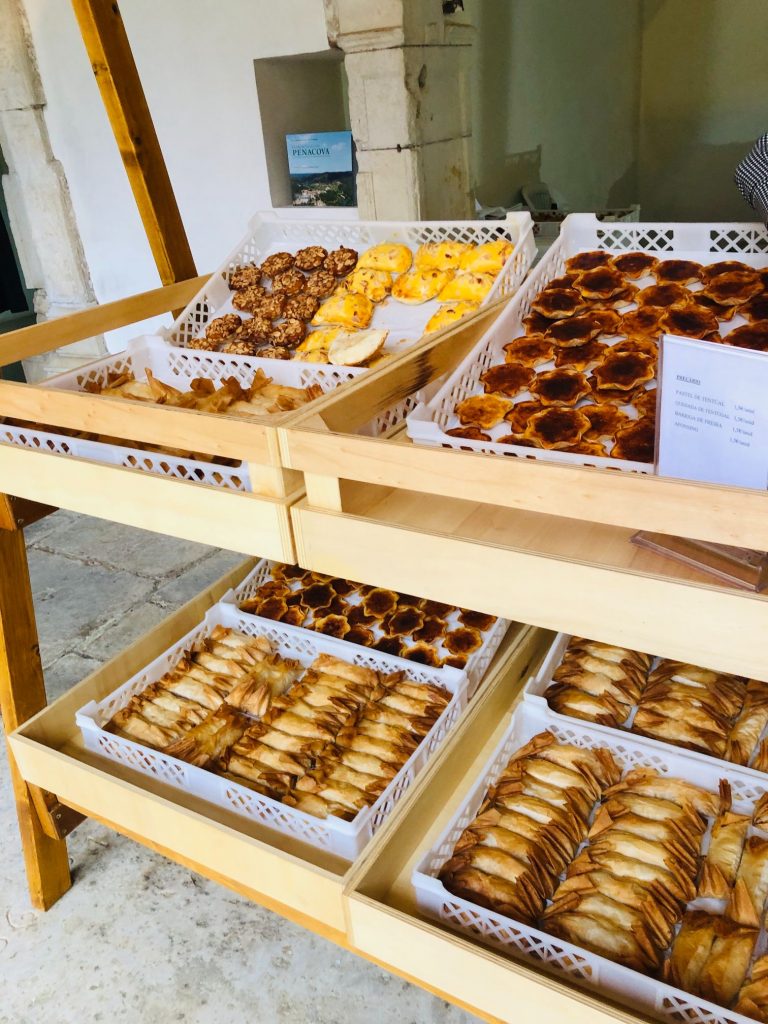


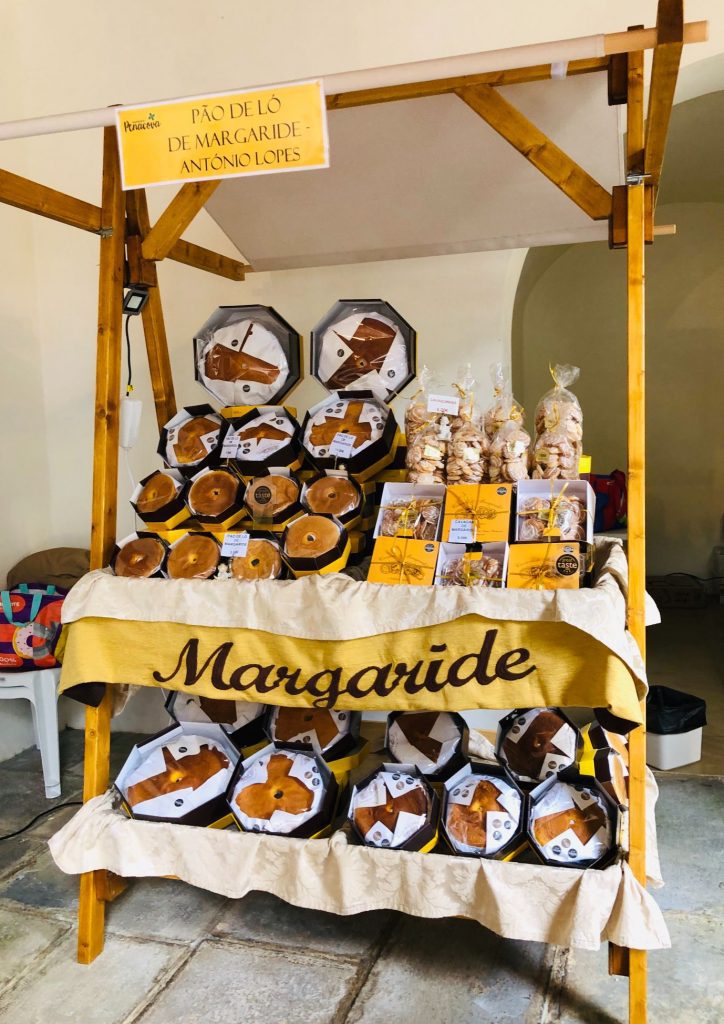


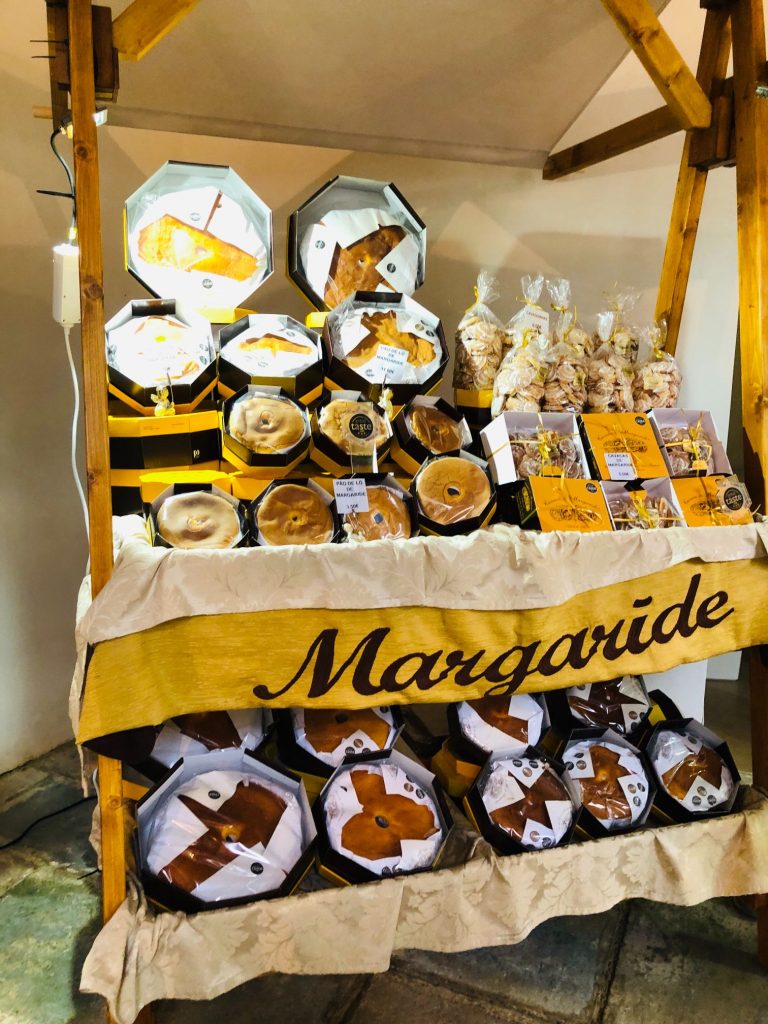


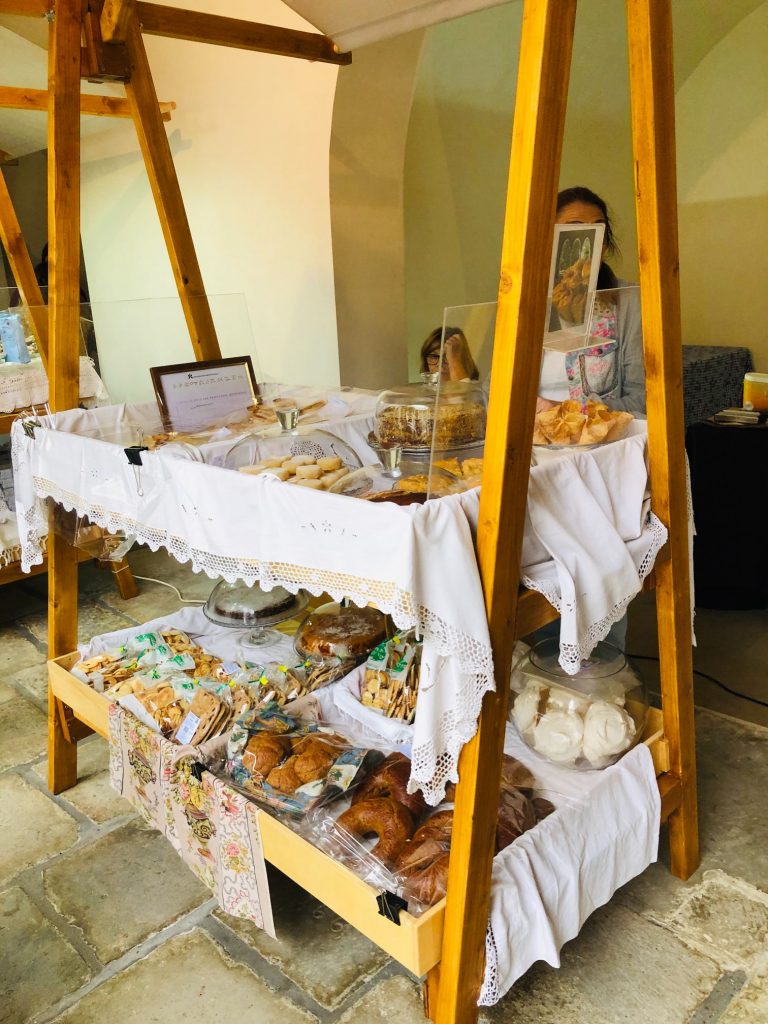





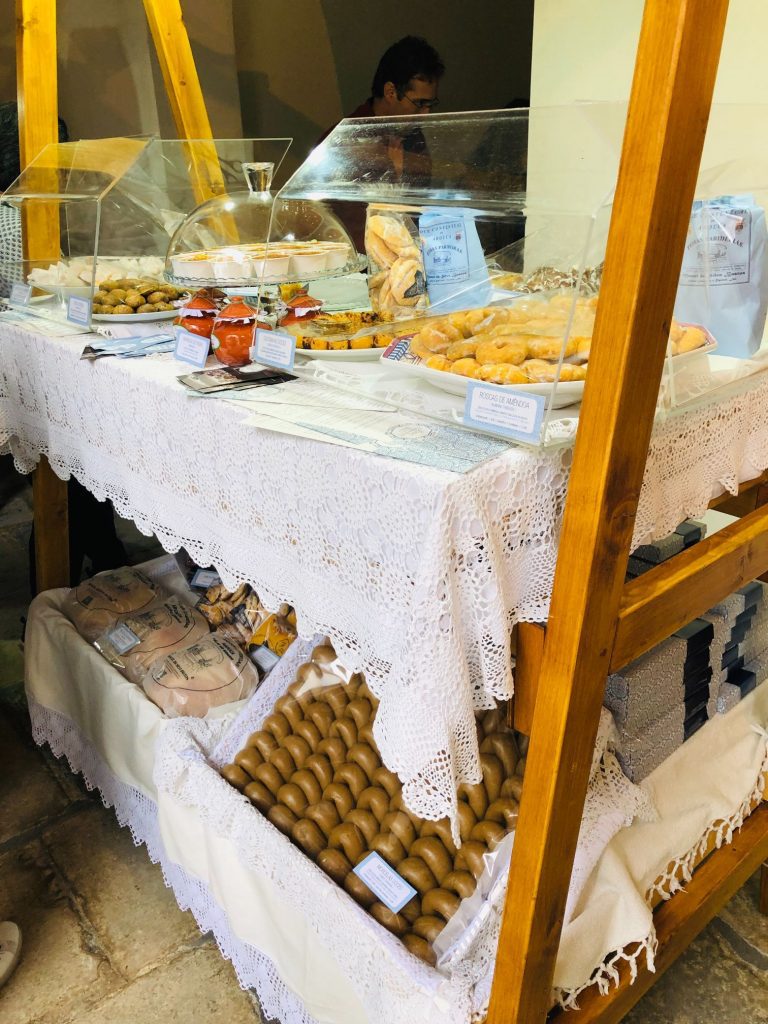


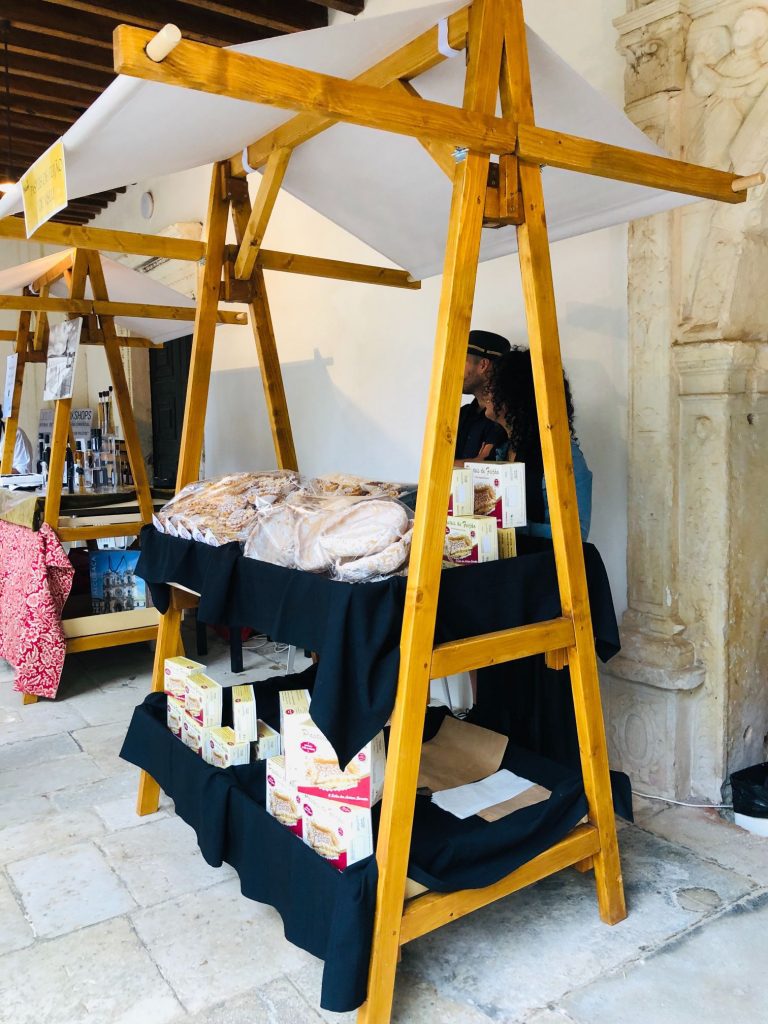


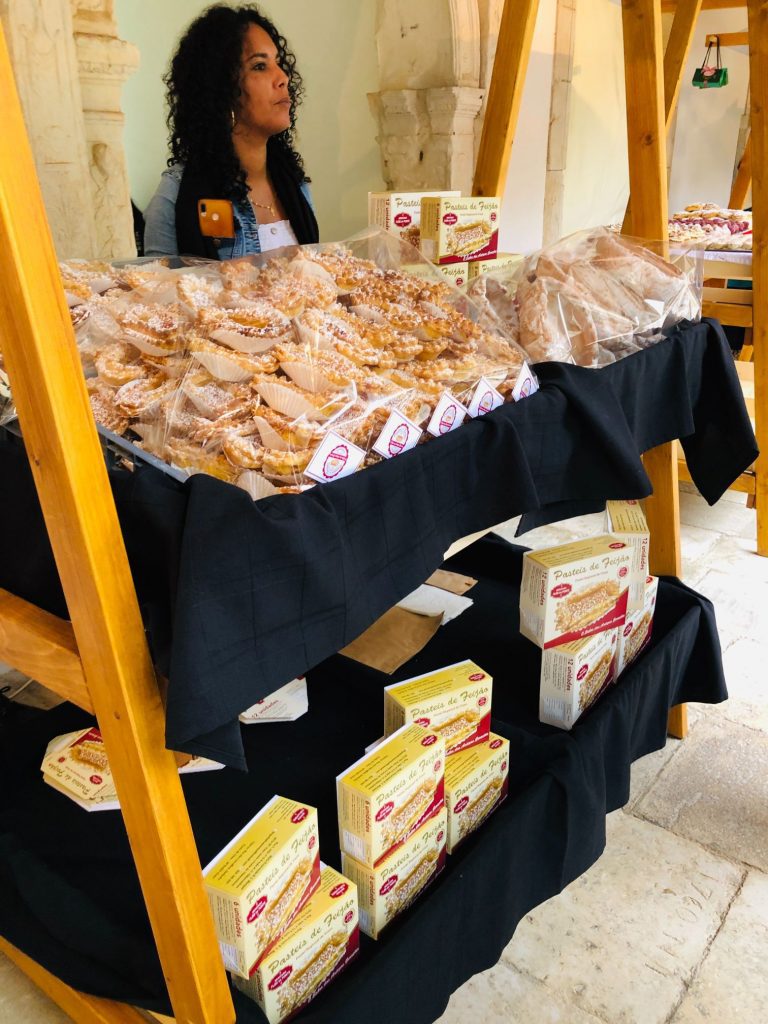











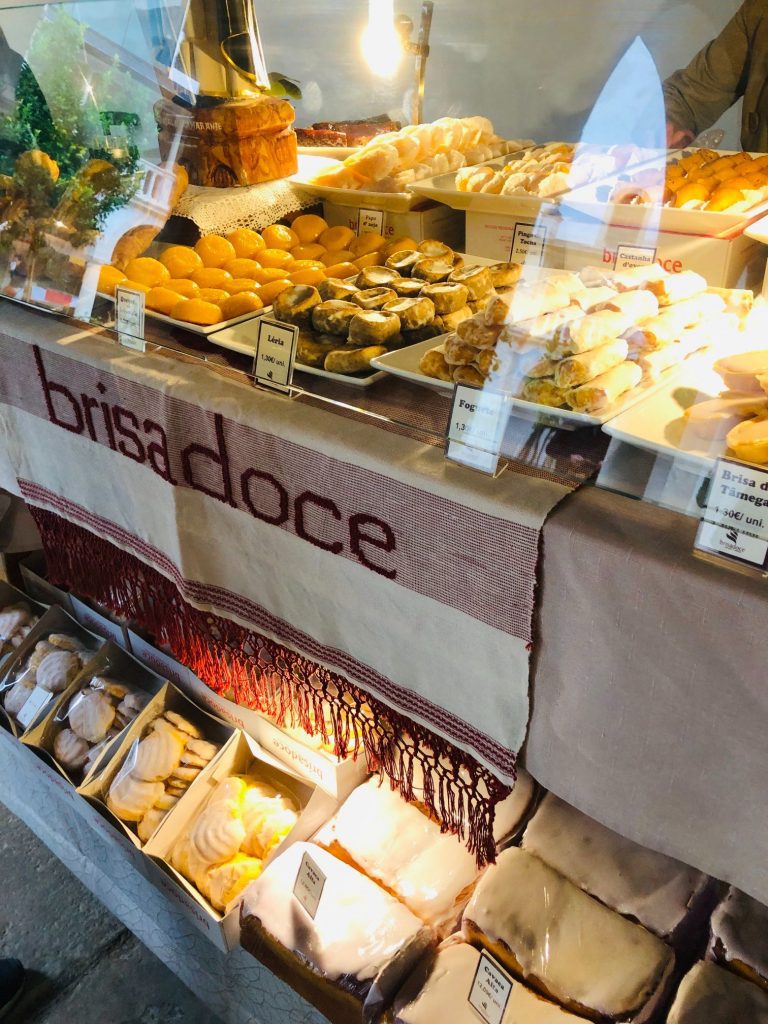


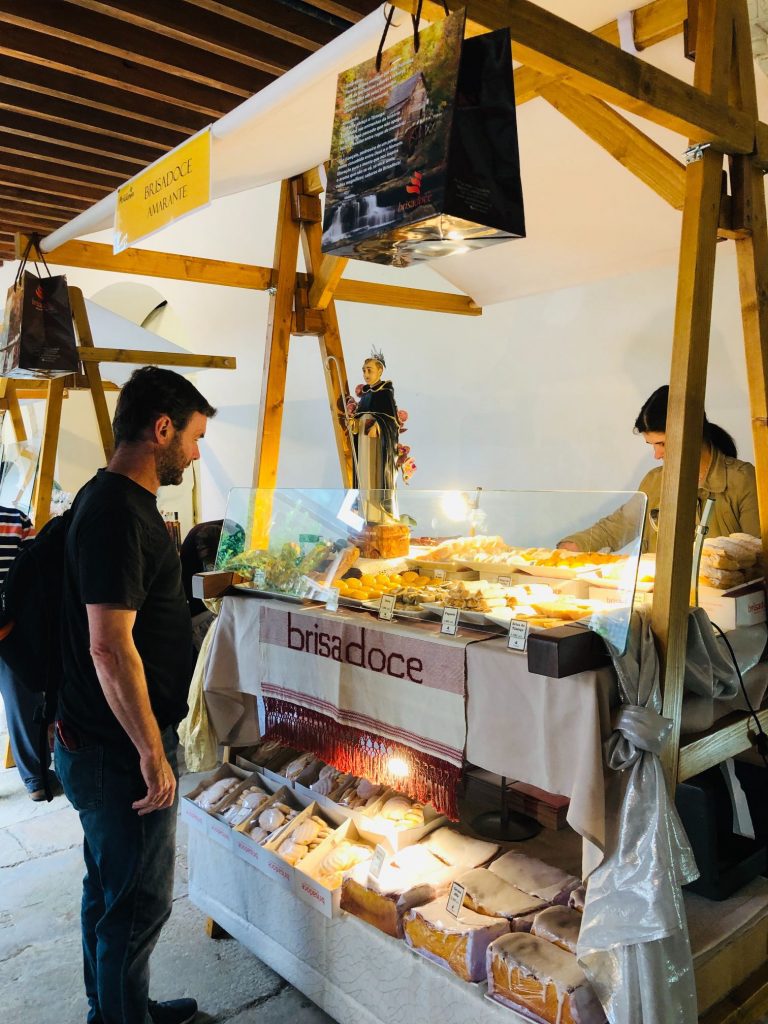


Heavenly Sweets
Portuguese cakes are so tasty and divine but did you know they originated in convents? Conventual sweets date back to the 16th Century and many have names with religious connotations for example Toucinho do Céu which translates to “Fat from Heaven” and contains almonds and pork fat! There is even a pastry named Morcelas Doces which is made from sweet black pudding, bread, jam, almonds, sugar, butter and cinnamon and Manjar de Língua de Arouca (Arouca’s Tongue) a sweet dish based on the ancient recipe for Manjar Branco. It is made with eggs, flour, sugar and cow’s tongue. I’m no vegan but all these animal body parts made me feel quite queasy (ha ha). Another is Cornucopia which is shaped like an ice cream cone and symbolises fertility and abundance. It is made from butter, lard, sugar, flour, egg yolks and almonds. There are many more: Queijinho do Céu (Cheese from Heaven), Fatias de Santa Clara (Slices of Santa Clara), Bolo do Paraíso (Cake from Heaven). Then there are the funny names: Charutos de Amêndoa (Almond Cigars), Barrigas de Freira (Nun’s Bellies), Beijos da Freira (Nun’s Kisses) and Garganta de Ferreira (Nun’s throat). Warning: Don’t Google Nun’s Throat as I got sadistic porno results! Is nothing sacred (ha ha). After daily religious practises, the nuns would make sweets, the majority of which was made from eggs and sugar, using the rich fruits and nuts of the region such as almonds. The nuns used egg whites as a natural fabric softener and to starch their habits (religious headwear) leaving excess amounts of egg yolk spare. They reused the egg yolks adding sugar and the wonderful sweets arose. They are still called “Doces Conventuais” in Portuguese which translates to “Convent Sweets” in English. If you fancy sampling the convent cakes of the region there is a lovely cafe right opposite the Monastery.
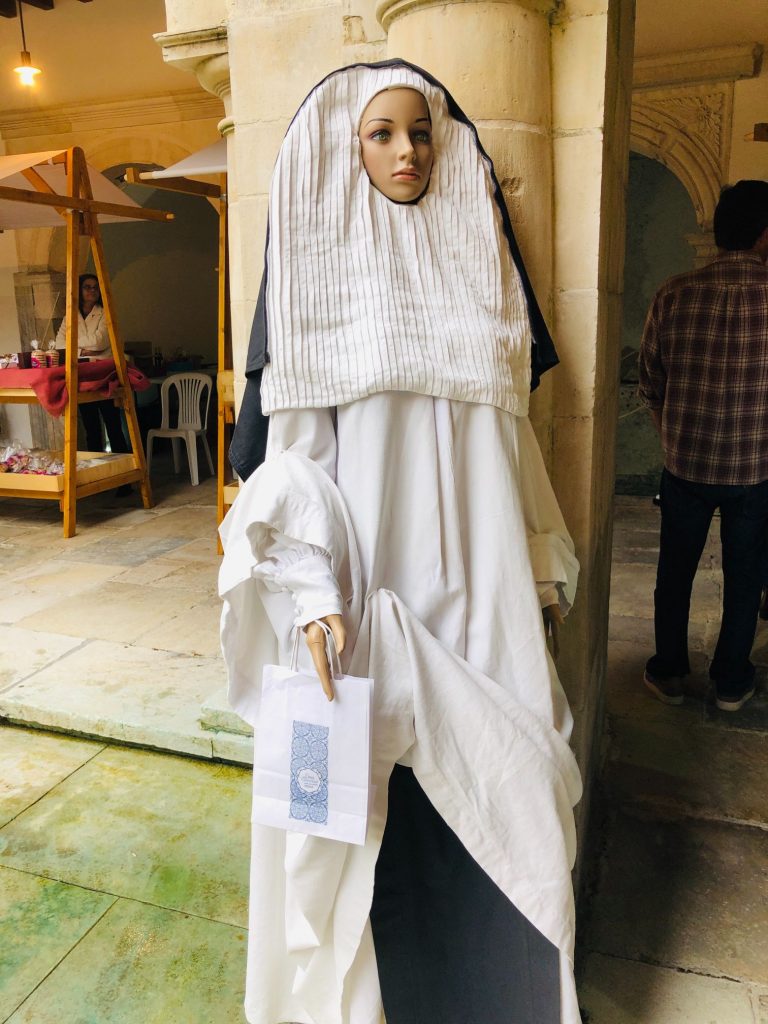


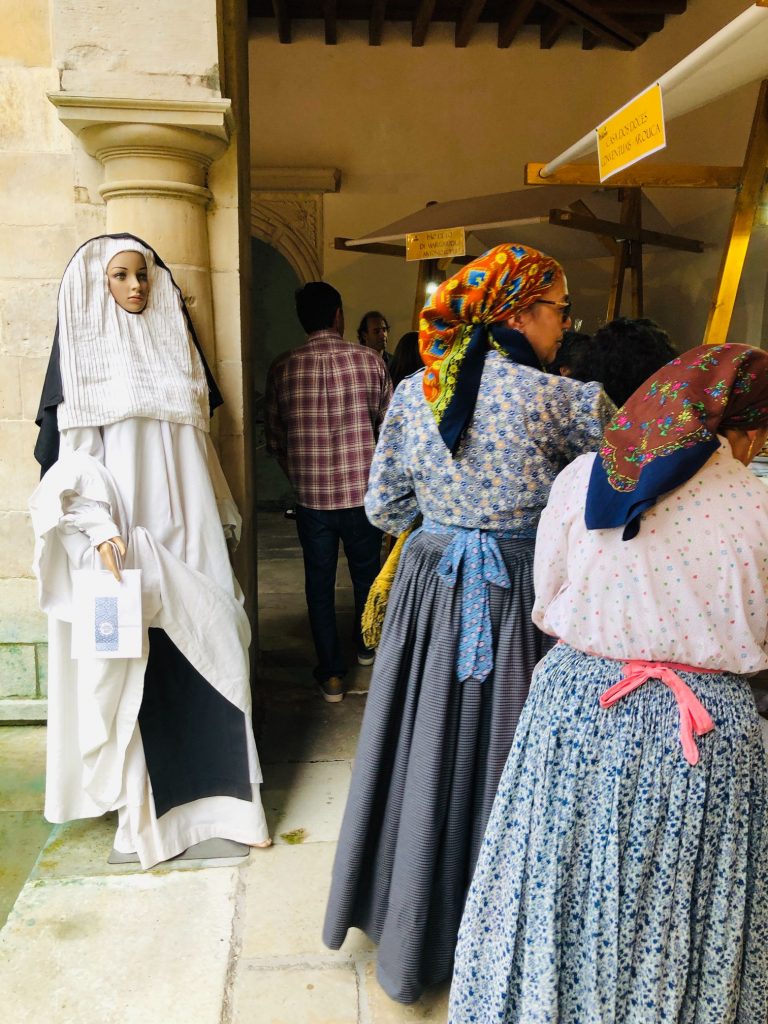


Pastéis de Lorvão
Pastéis de Lorvão (Lorvão Pastries) are a sweet convent of this Monastery. They are made from sugar, egg yolks and ground almonds. The texture of these pastries is dense, moist and is similar in appearance to the Queijadas. Traditionally, these convent sweets were offered by the nuns to guests and people visiting the Monastery. Another local cake to try is: Nevadas de Penacova, small round shaped cakes with a white sugar frosting that resemble a snowball, they have a yummy creamy egg filling. I usually sample the regional cake when I visit a new area but the penis pastry stole my heart and makes for a much better photo opportunity (ha ha).
Each Convent and Region will have their own cake and secret recipes. Here you can find more information on the different types of cakes that Lorvão Monastery are famous for: https://mosteiro-de-lorvao.webnode.pt/alojamento/



Doce Fálico de S.Gonçalo (Pastry Penises)
I nearly bought a selection of cakes from my favourite Convent cake shop in Arouca which just so happened to have a stall here. Then I laid eyes on the gigantic Penis pastry and there was no turning back (ha ha). “Doces Fálicos” (Phallic sweets) originate from the town of Amarante. The naughty shaped sweet treats are closely linked to the cult of São Gonçalo (Patron Saint of Amarante), a matchmaking tradition and rituals to get a groom. Luckily I don’t need to go through any rituals as I have already successfully bagged my groom and I am kind of fond of him so I think I will keep him for the foreseeable future (ha ha).
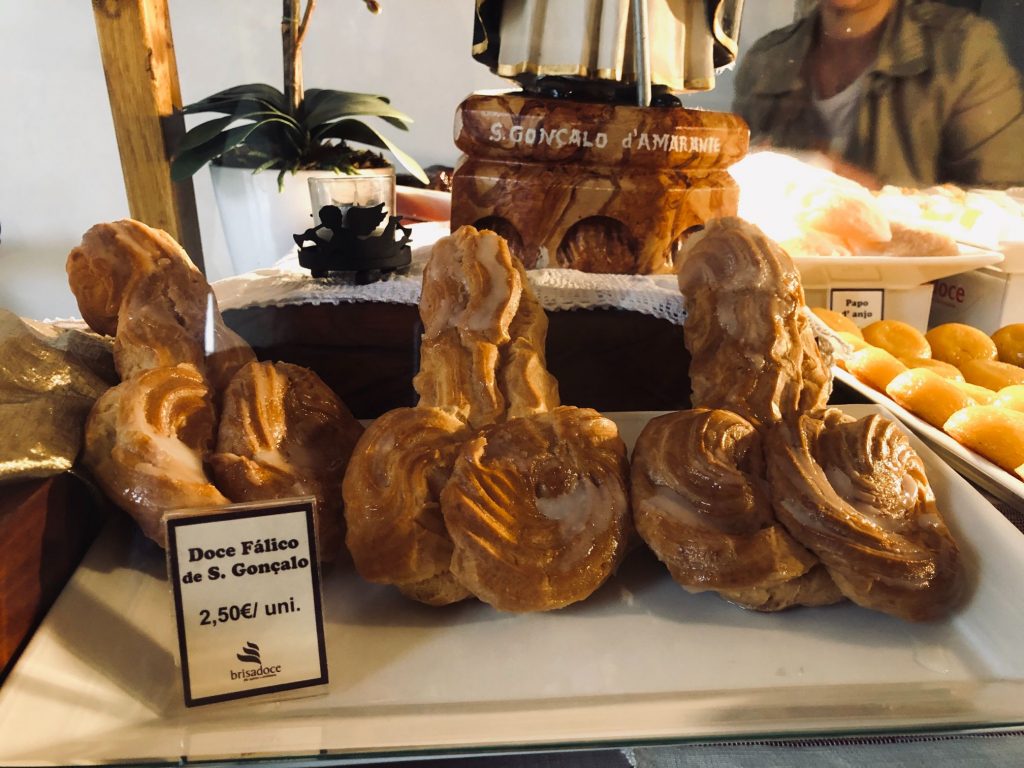


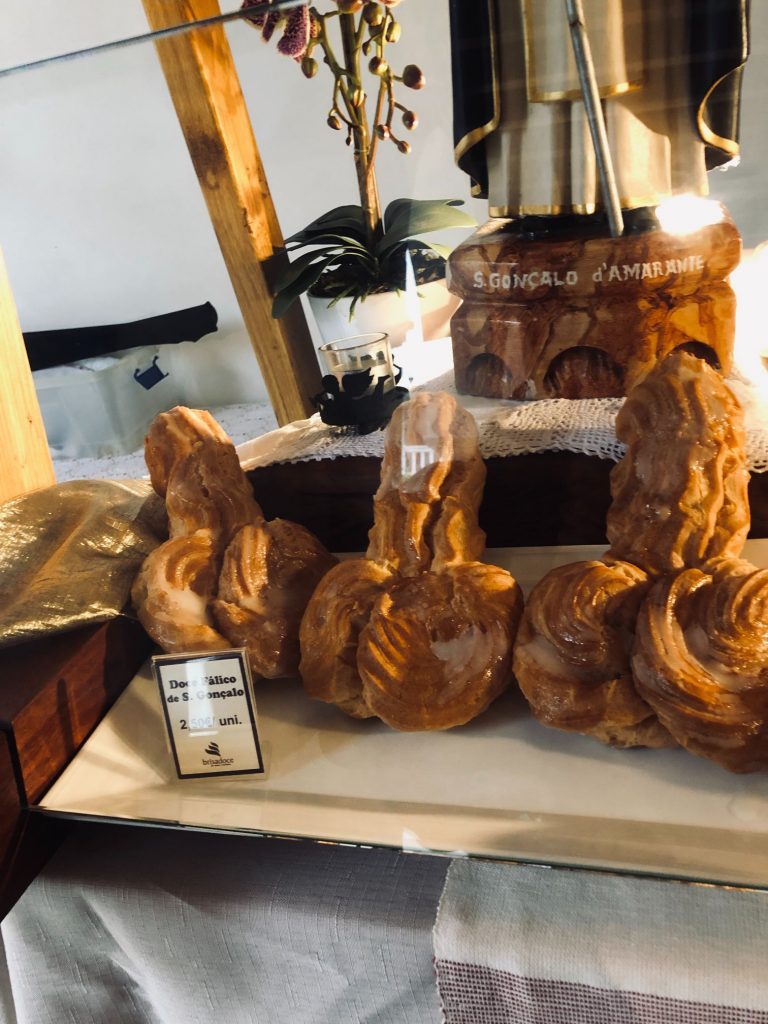


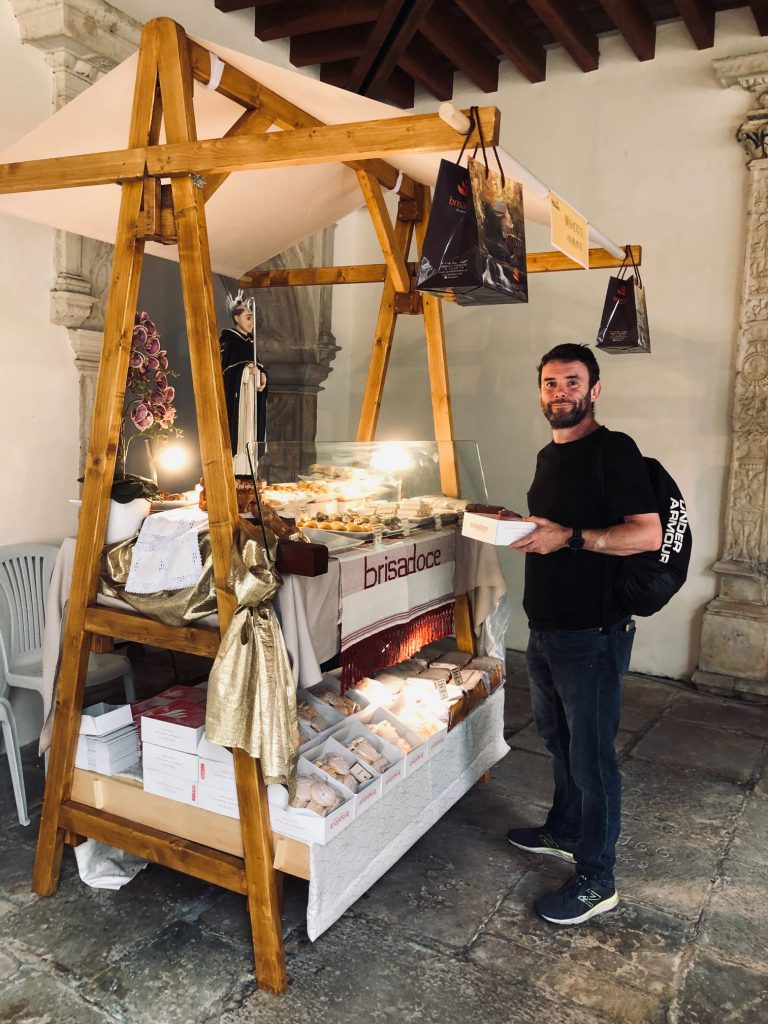


Casa dos Doces Conventuais
My favourite shop in Arouca had a stall at the fair! What I love about this place is the pastries are fairly small and not the gigantic size of most Portuguese sweet pastries which means they are less expensive, most cost just €1 each so you can afford and have room in your stomach to sample a various selection with the added bonus of not morphing into the size of a house (ha ha). I LOVE their motto: “There are secrets that are worth unravelling. There are sins worth committing”.
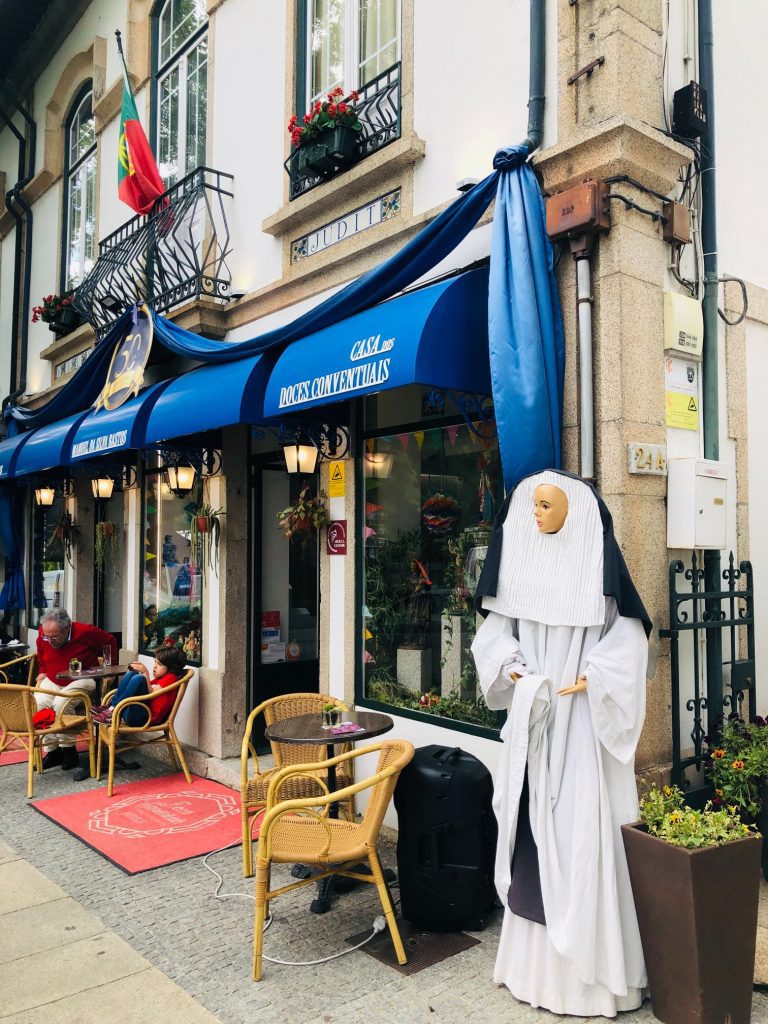











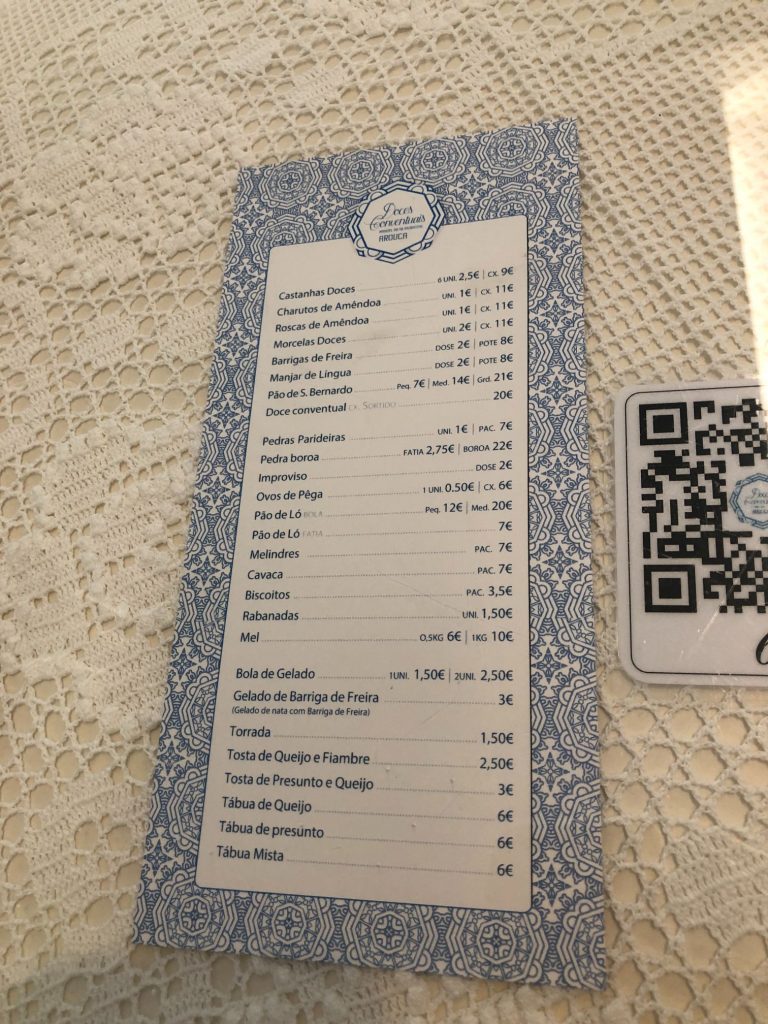


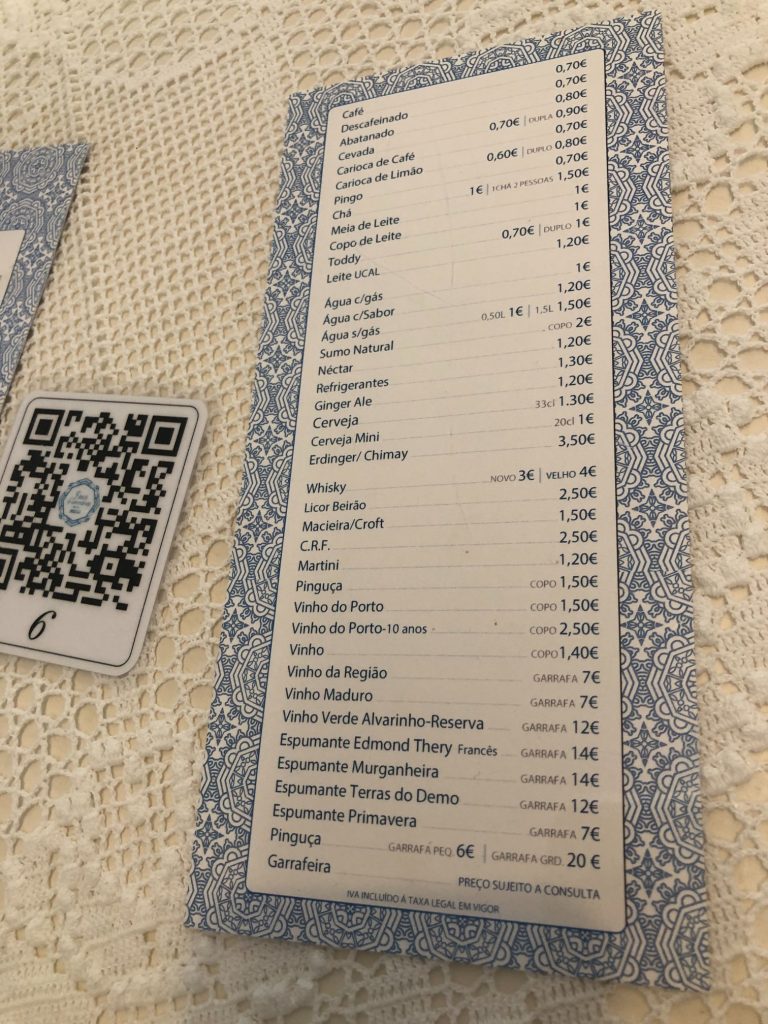


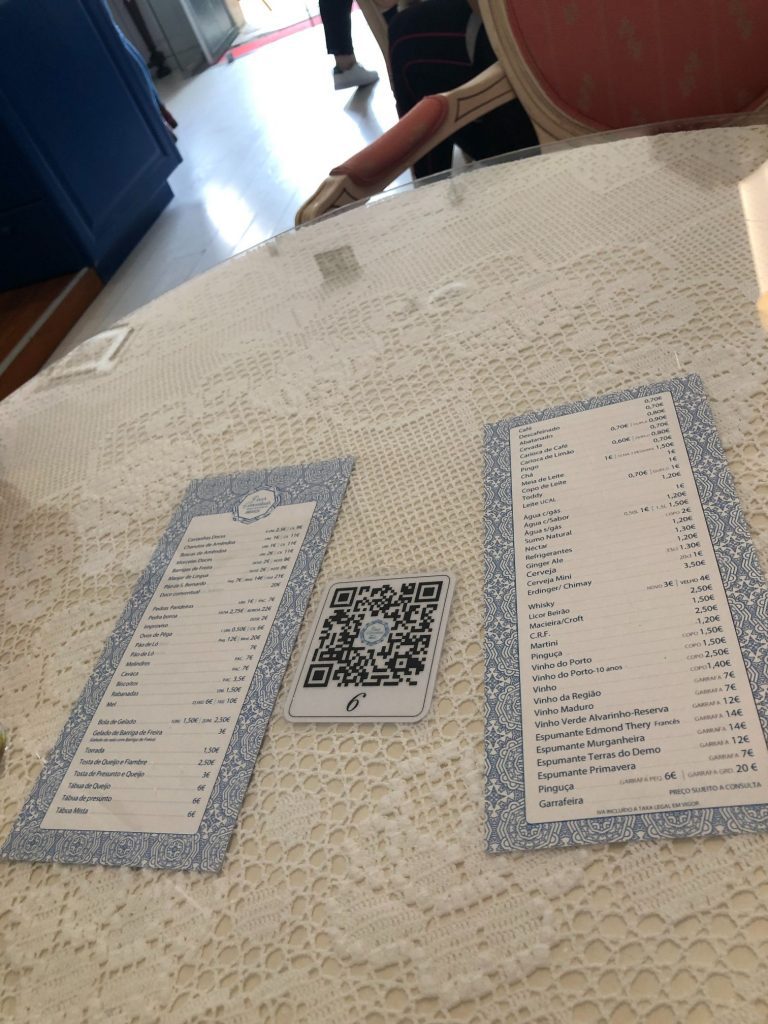


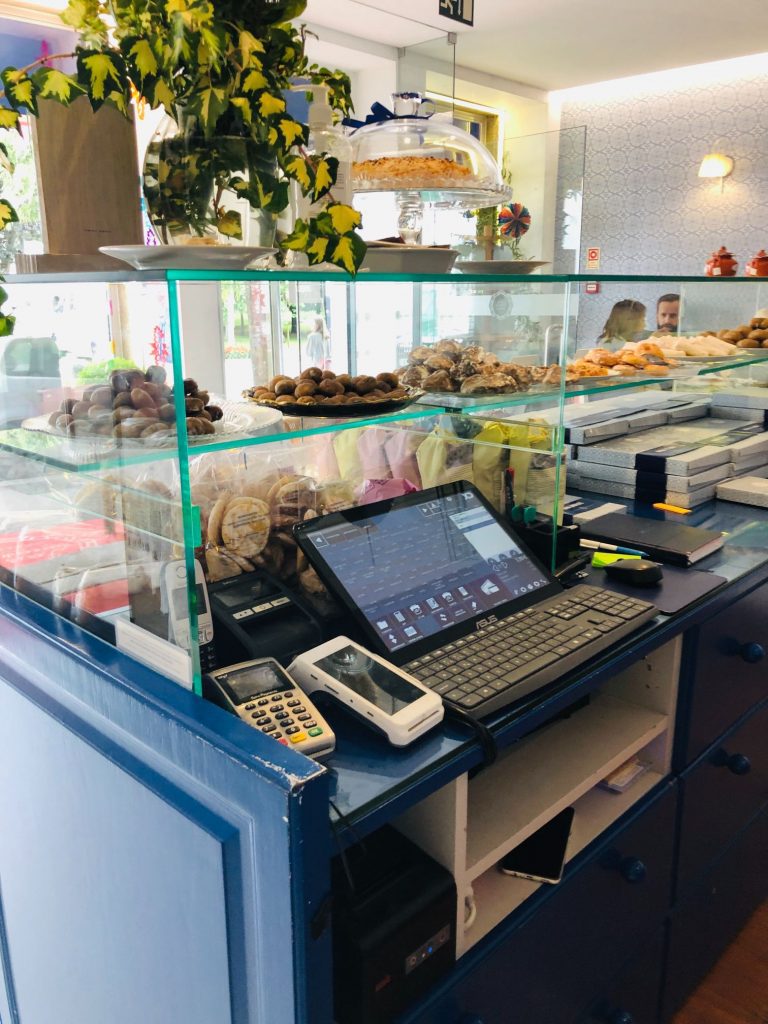


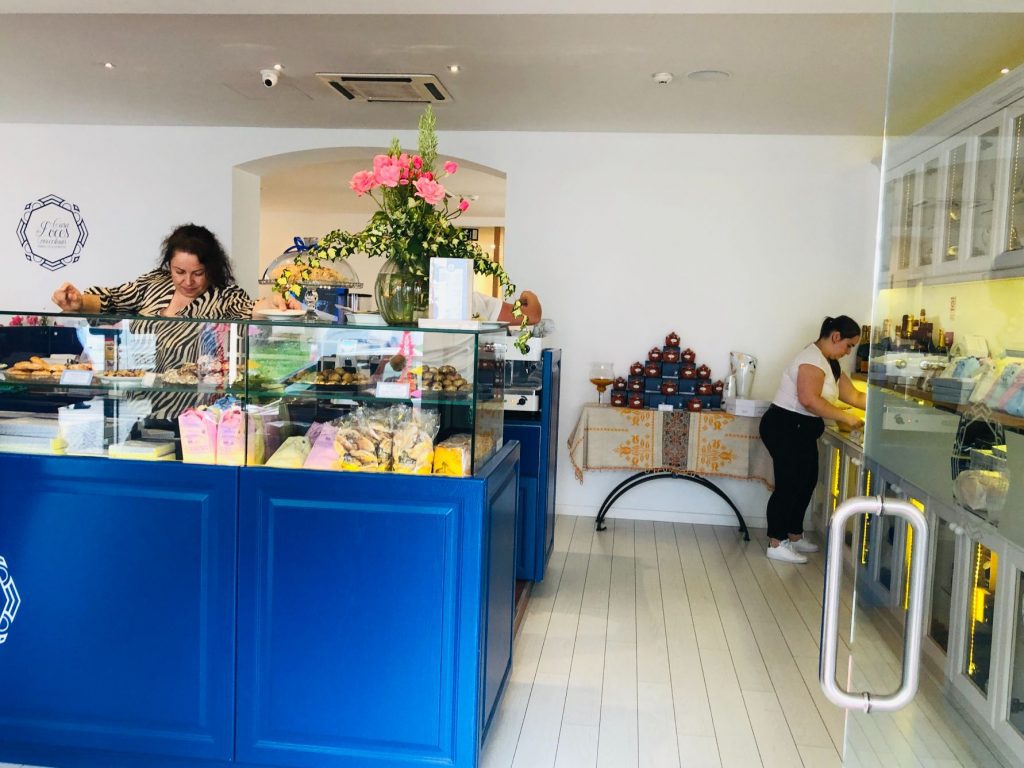


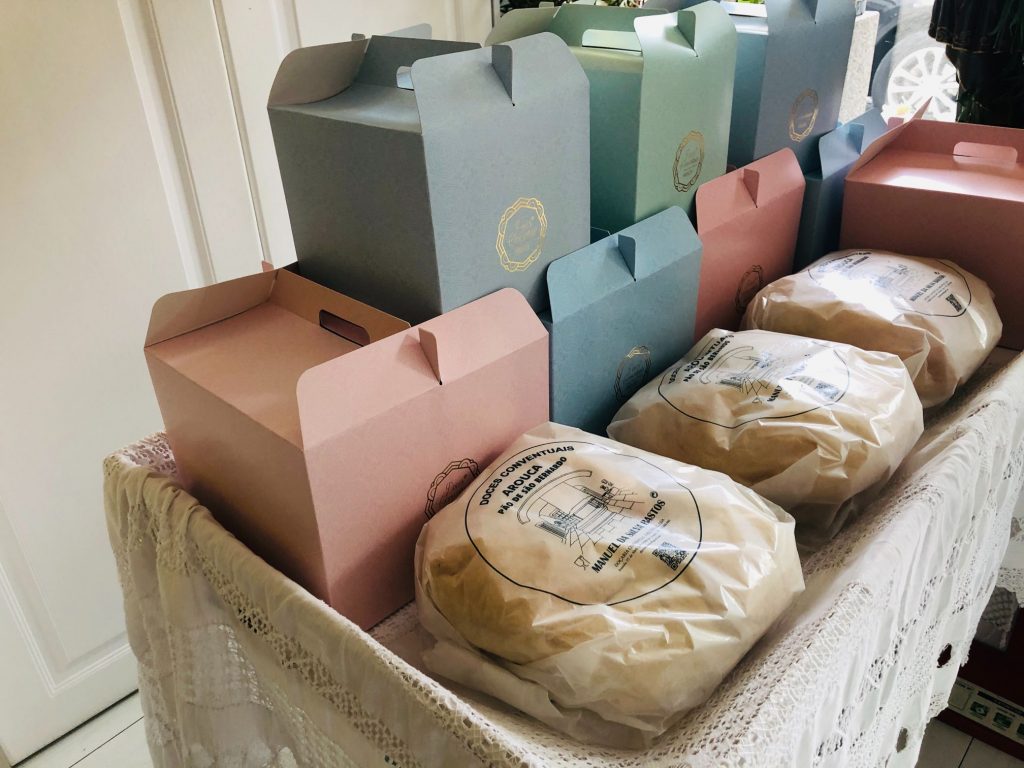








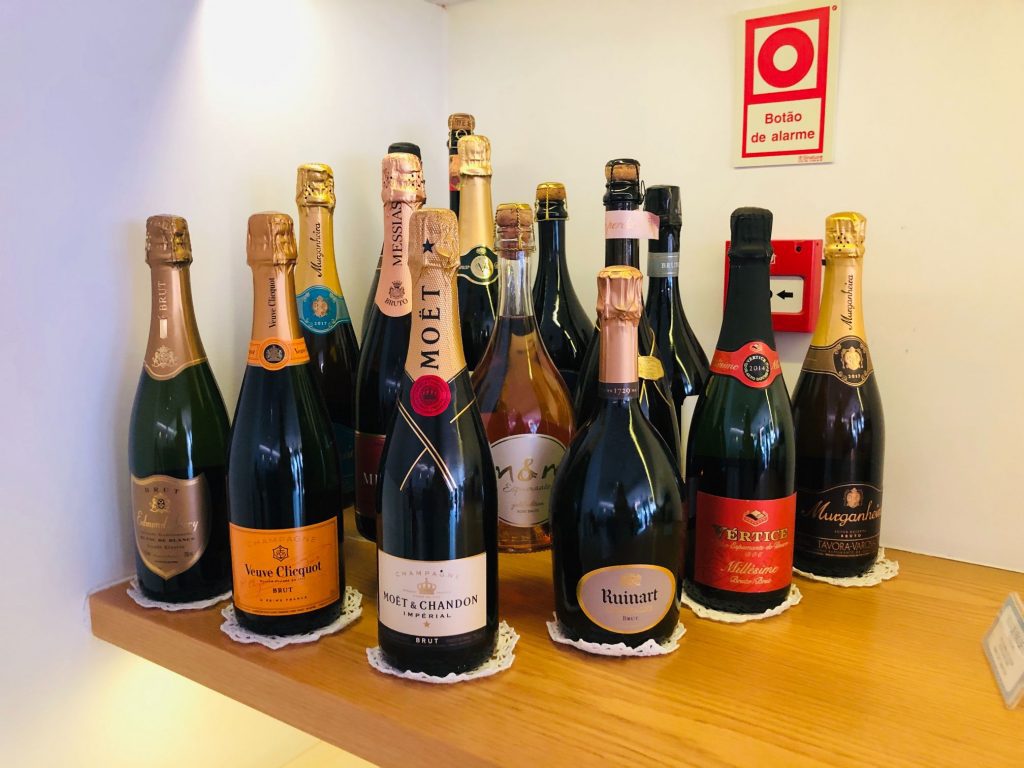


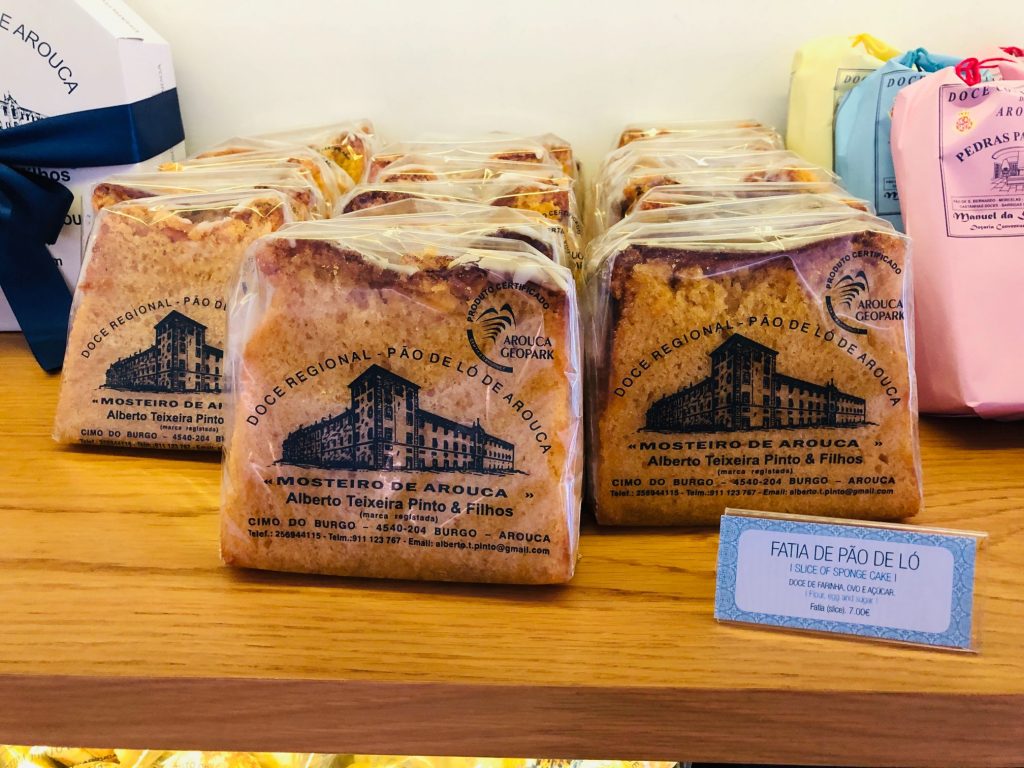











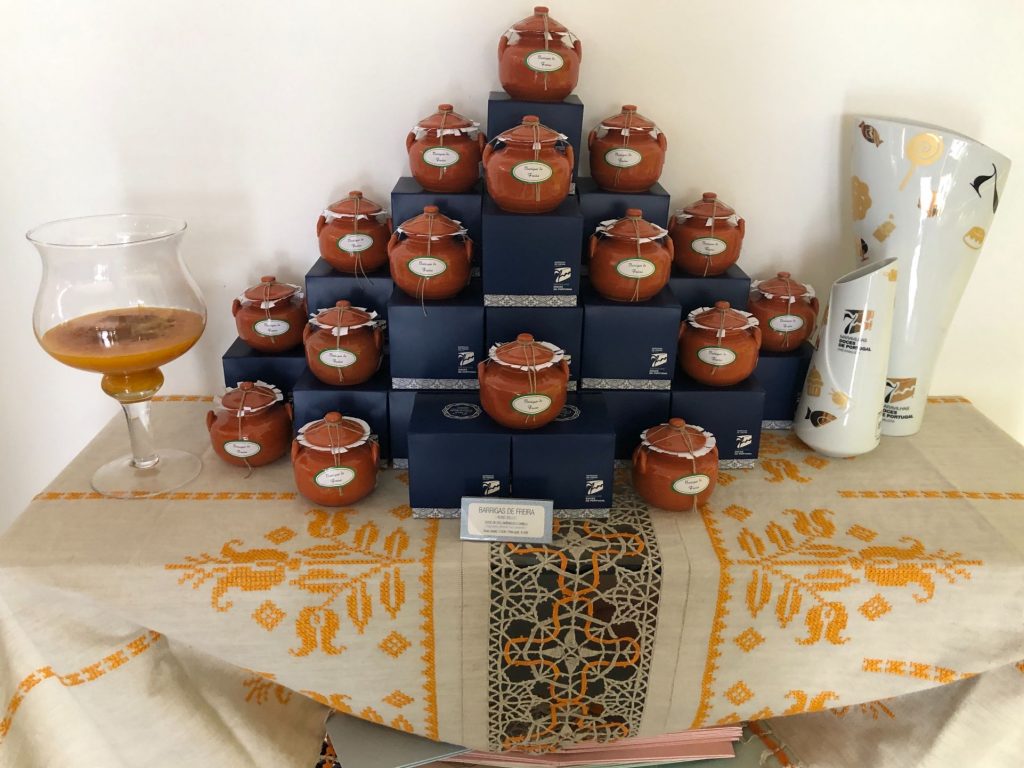


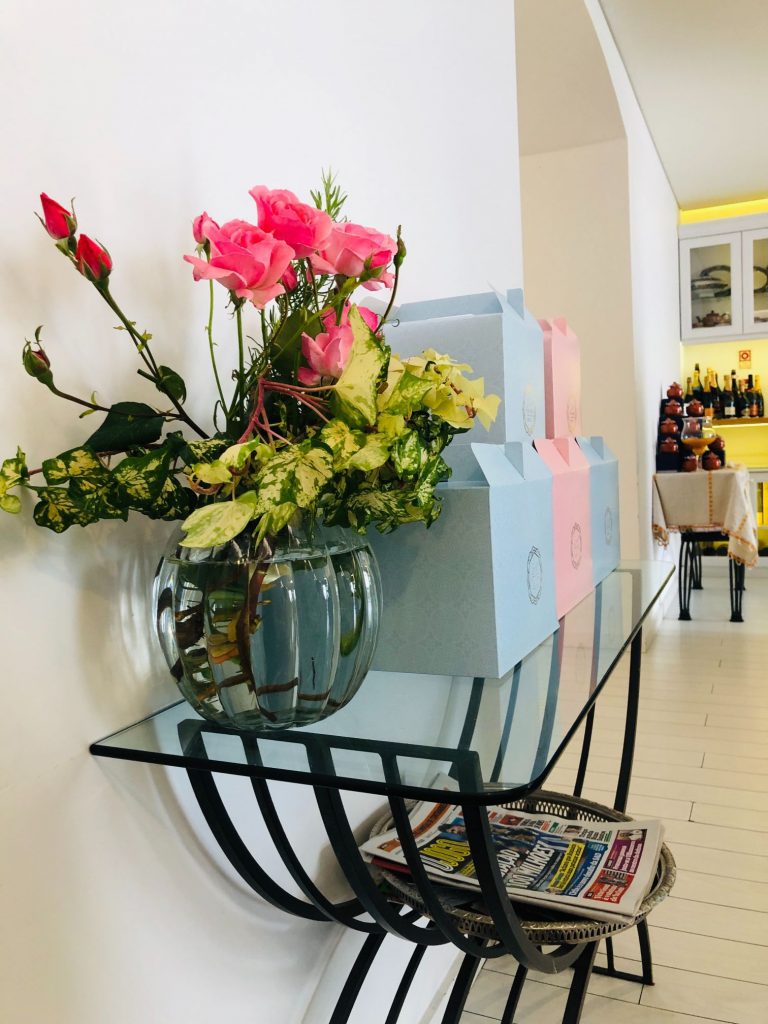


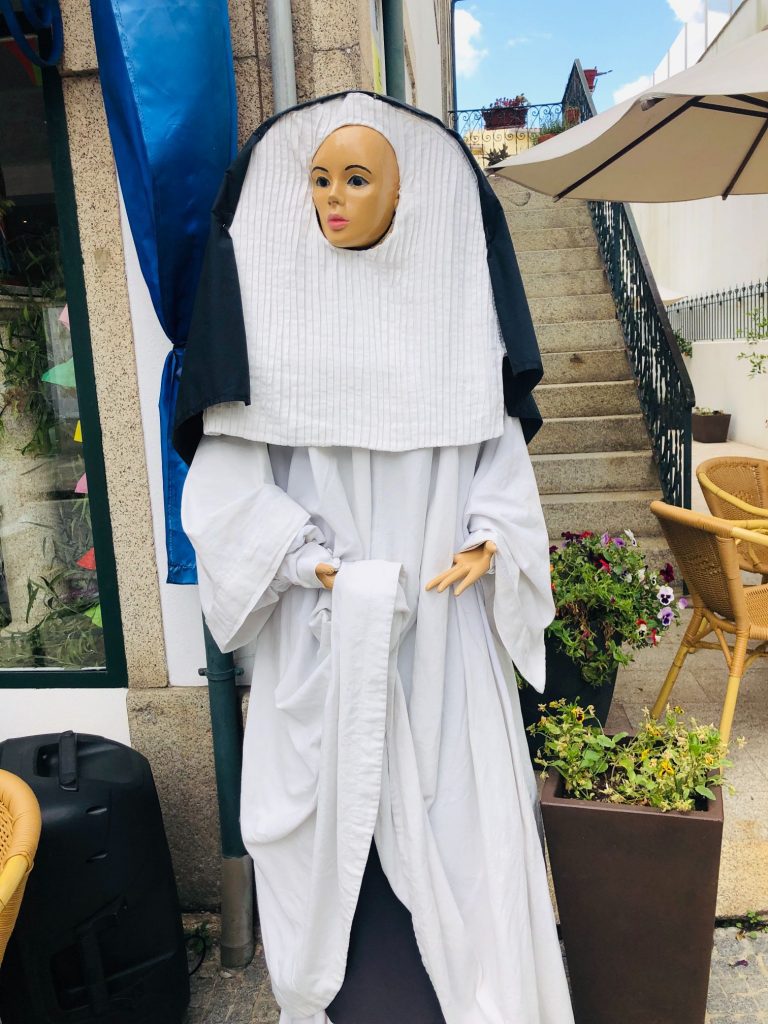


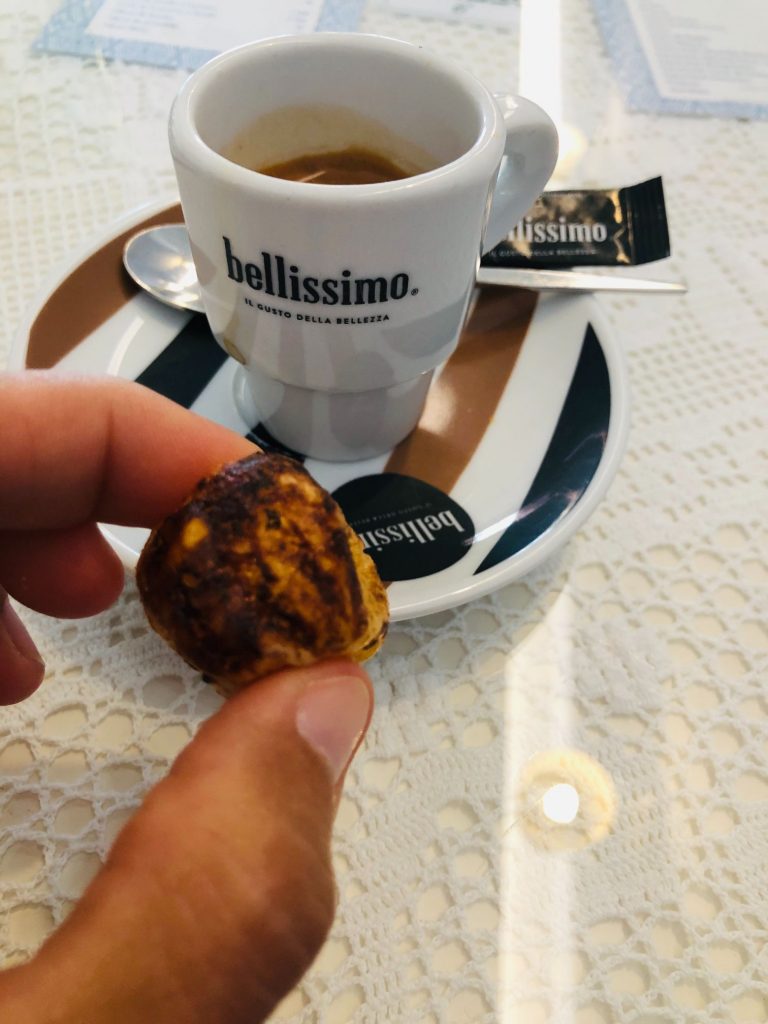


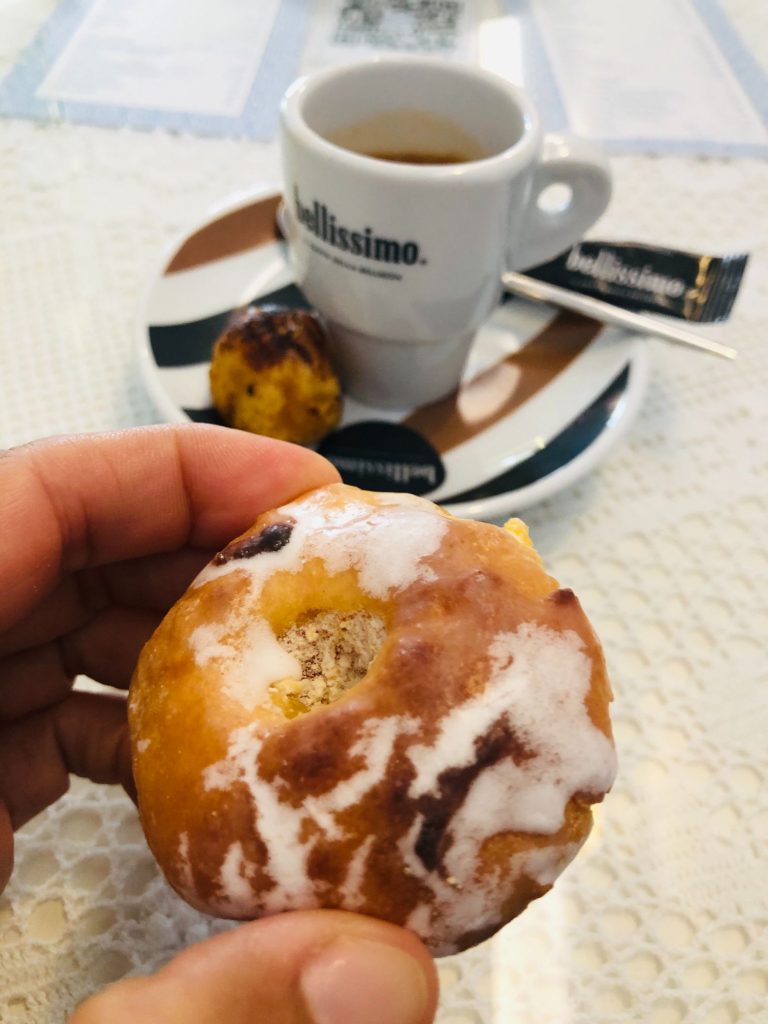





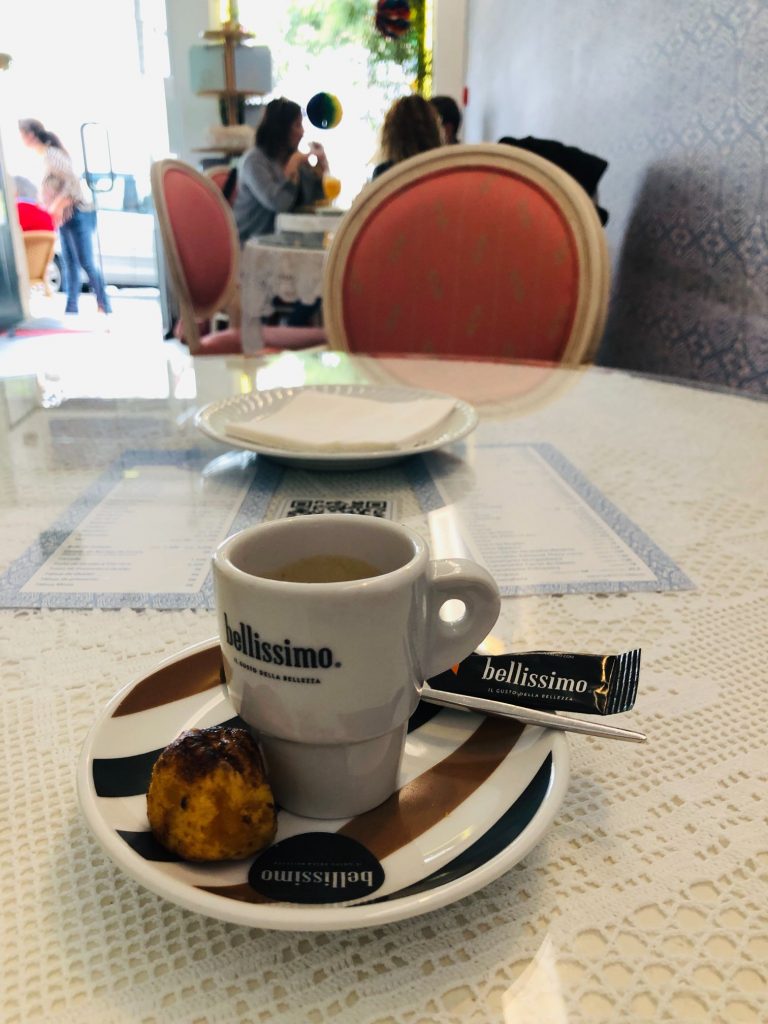


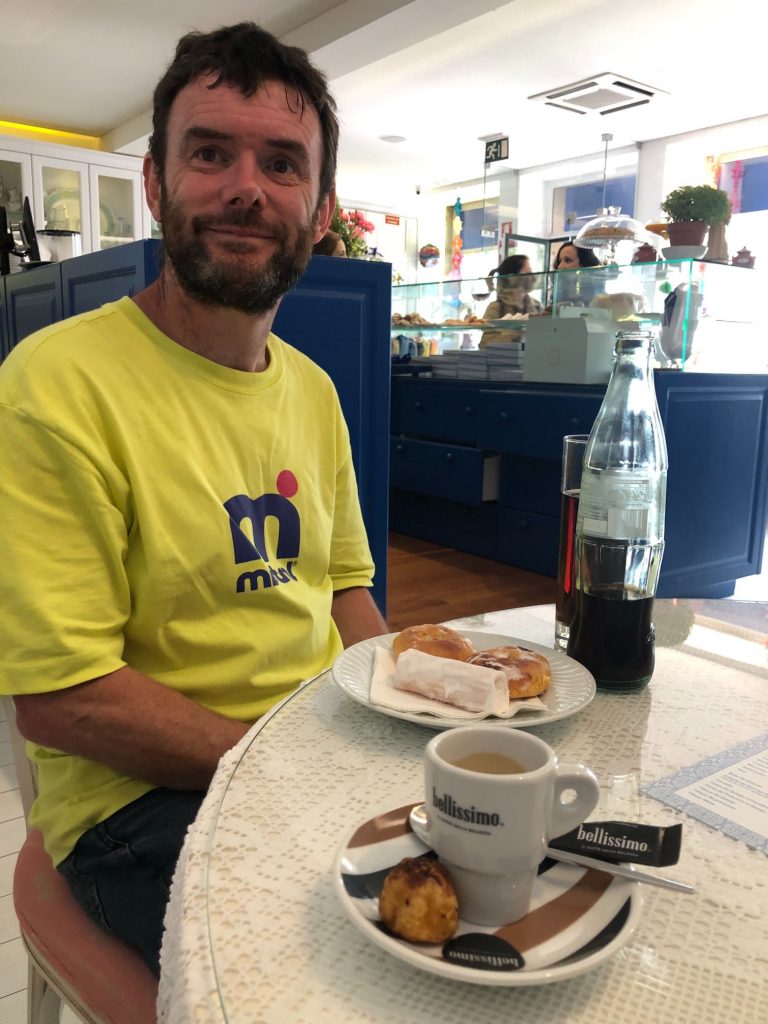


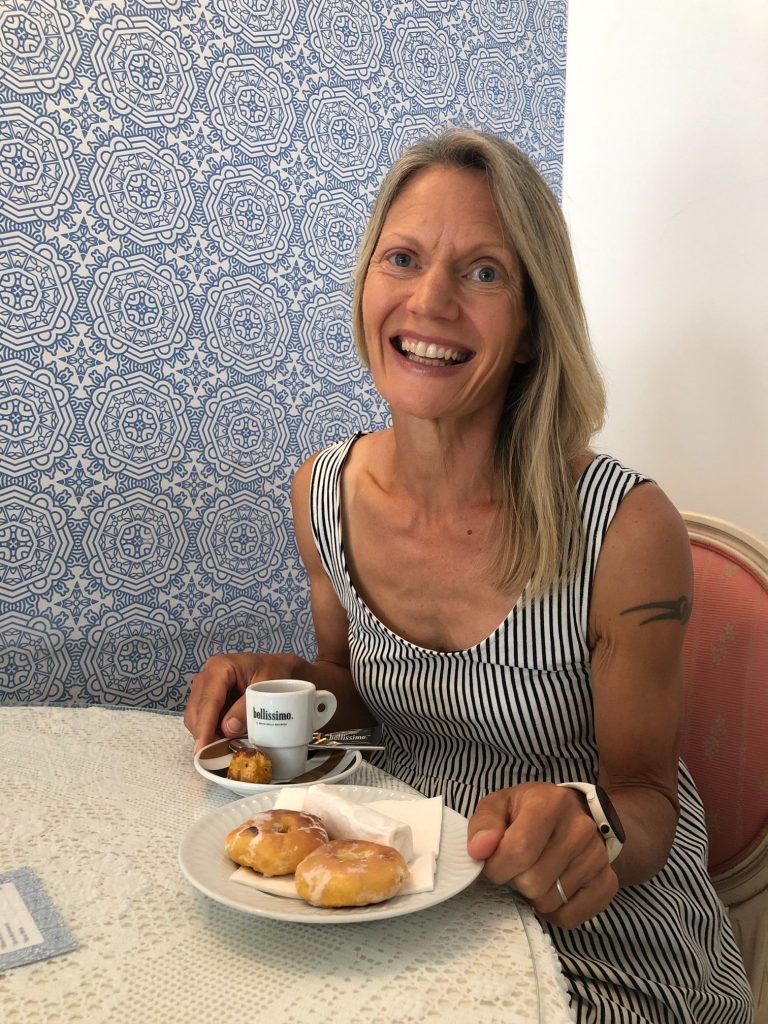


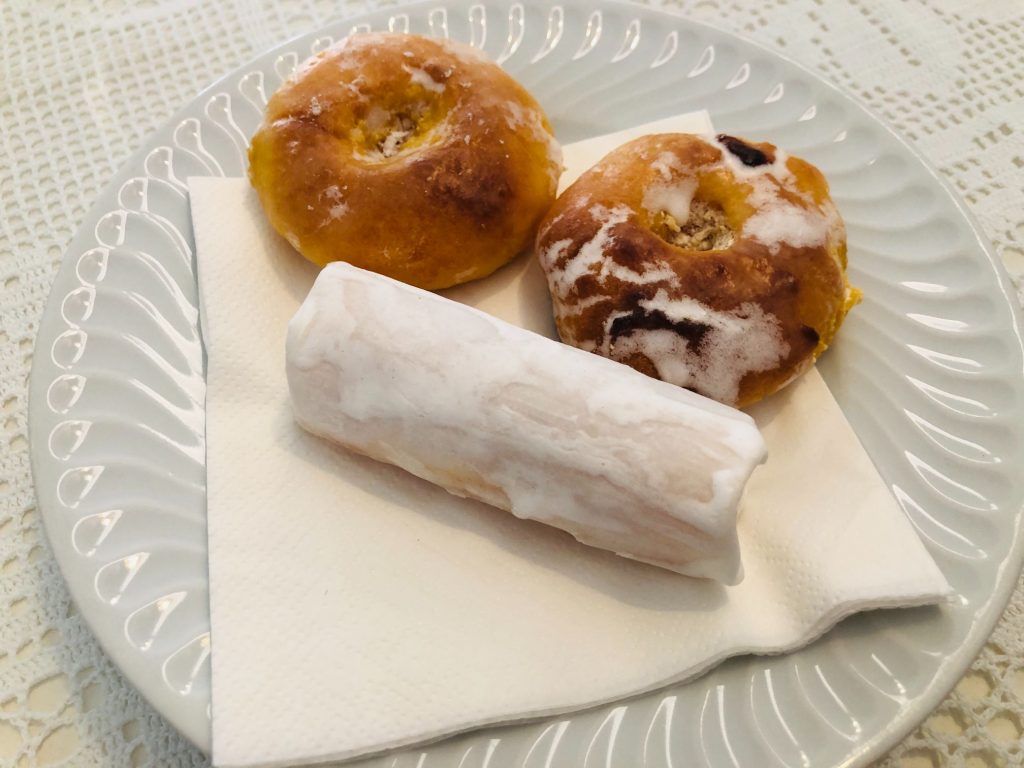


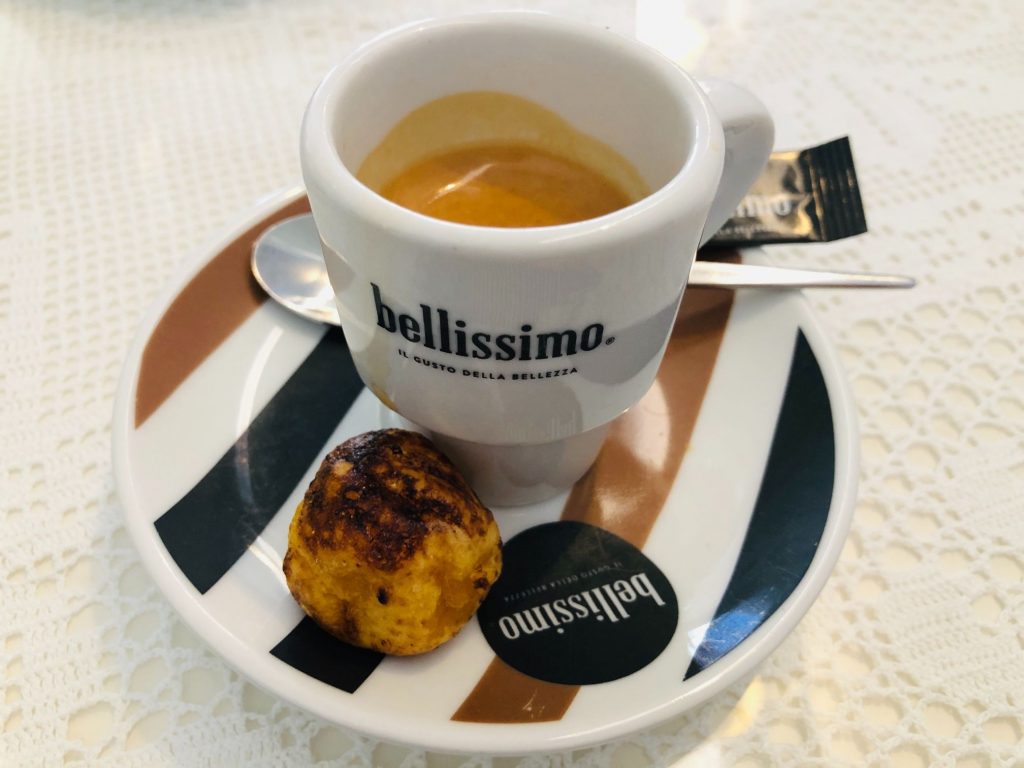


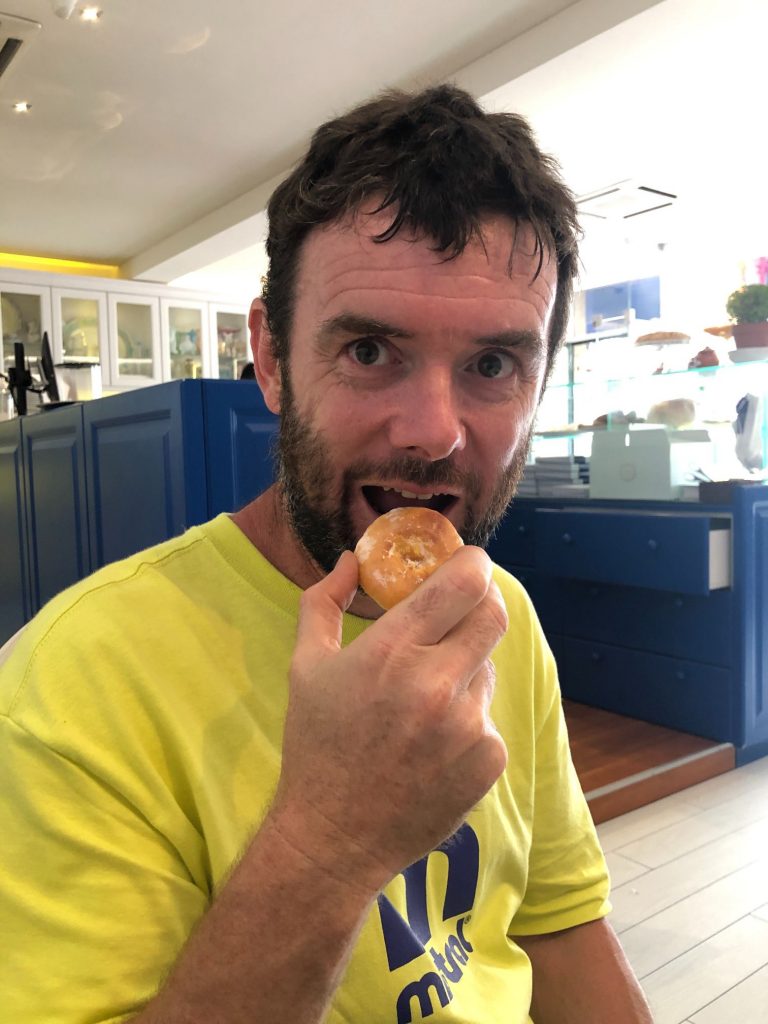


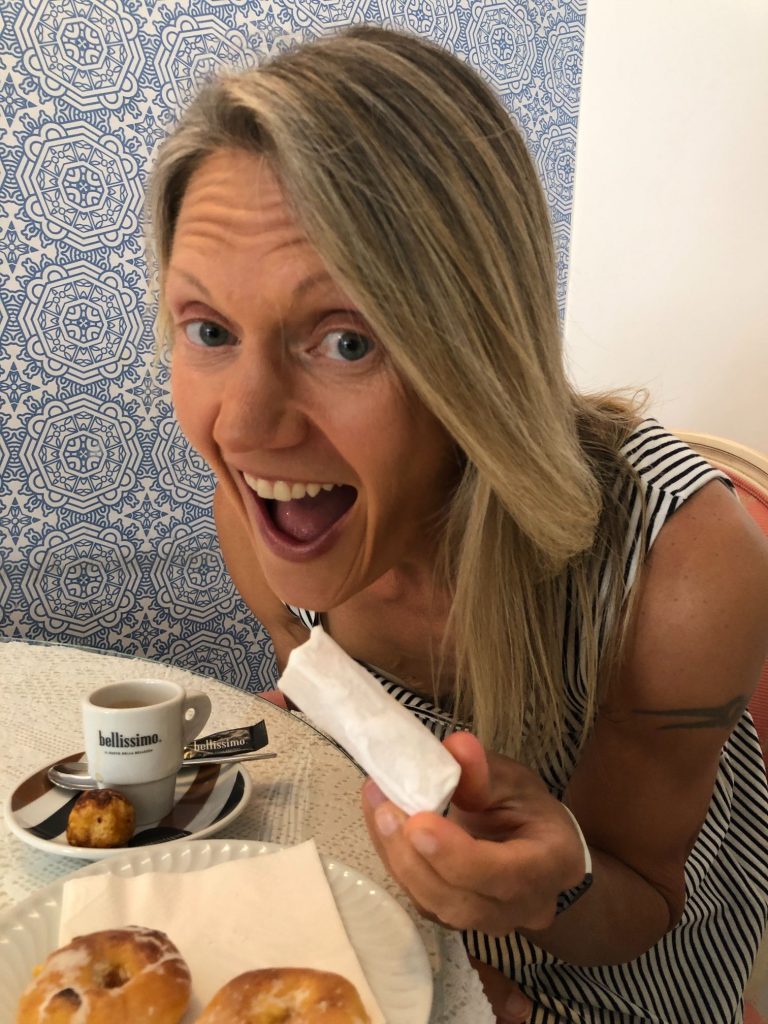


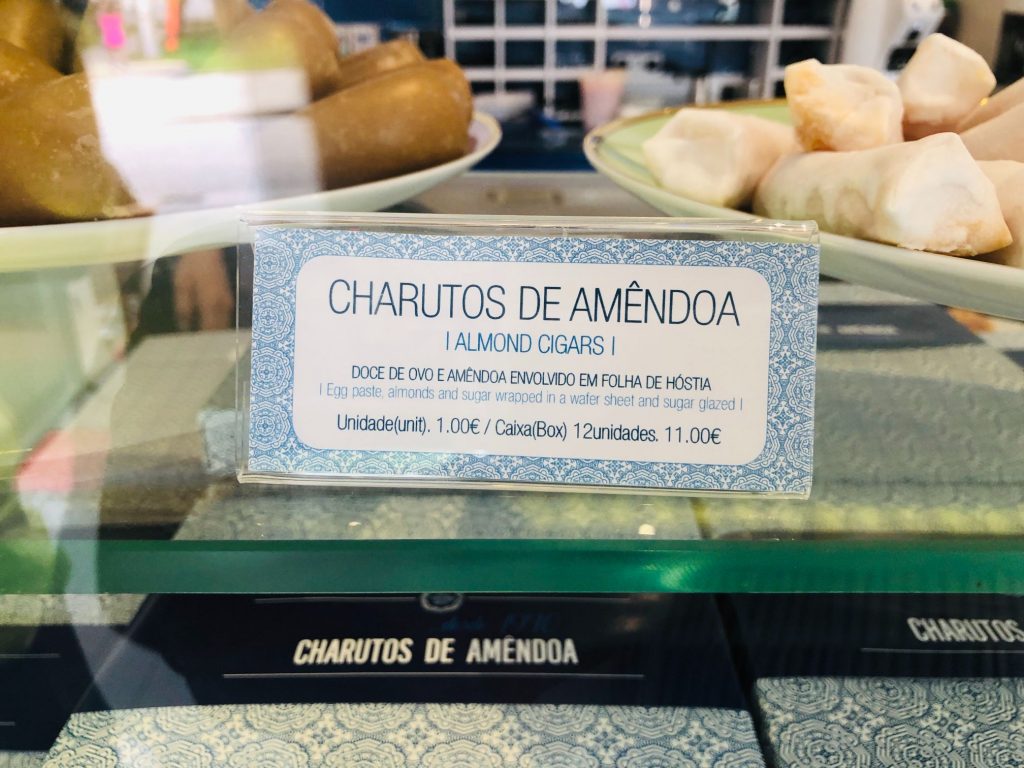


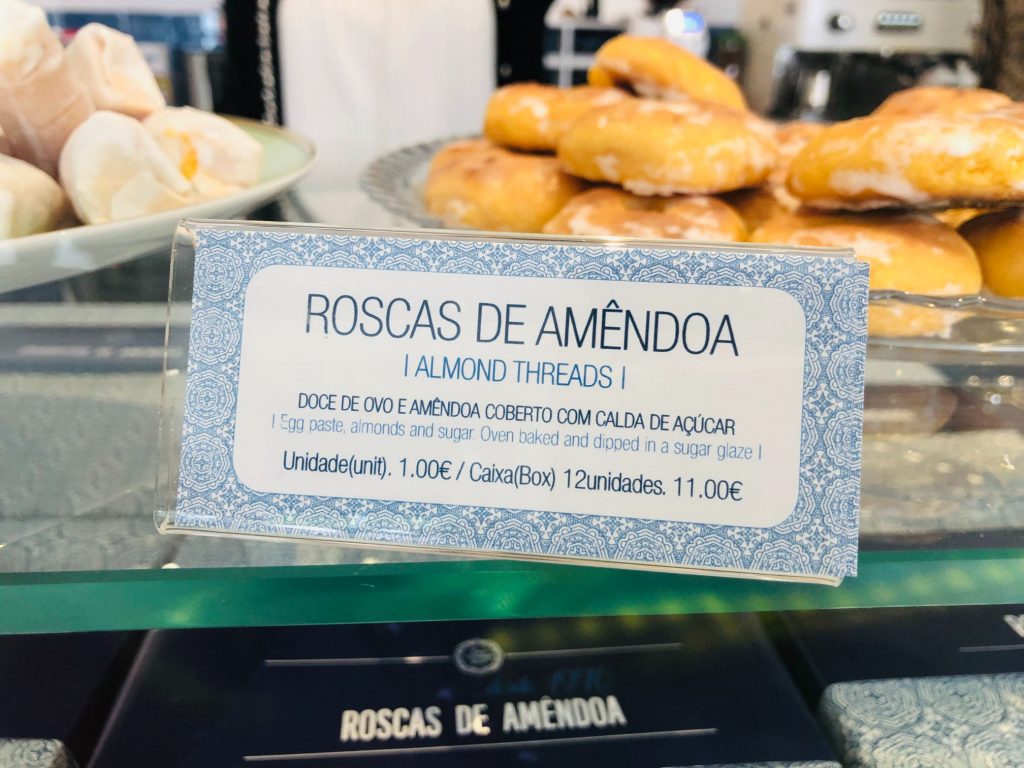


Toothpicks & Tradition
The manufacture of toothpicks originated, according to tradition, in the Monastery of Lorvão, as the nuns produced these artisan handicrafts to decorate cakes and sweets they made for sale. Lorvão is known as The Capital of the Toothpick. They are exquisitely carved from willow and poplar and the production is carried out in several stages. Toothpicks have become a local heritage. There was a stall at this fair with 2 ladies in traditional dress with examples of the willow and toothpicks to view. Other handicrafts from Penacova include the wooden miniatures of Barcas Serranas (ancient vessels), windmills, wheels and tiny stone houses are also made.
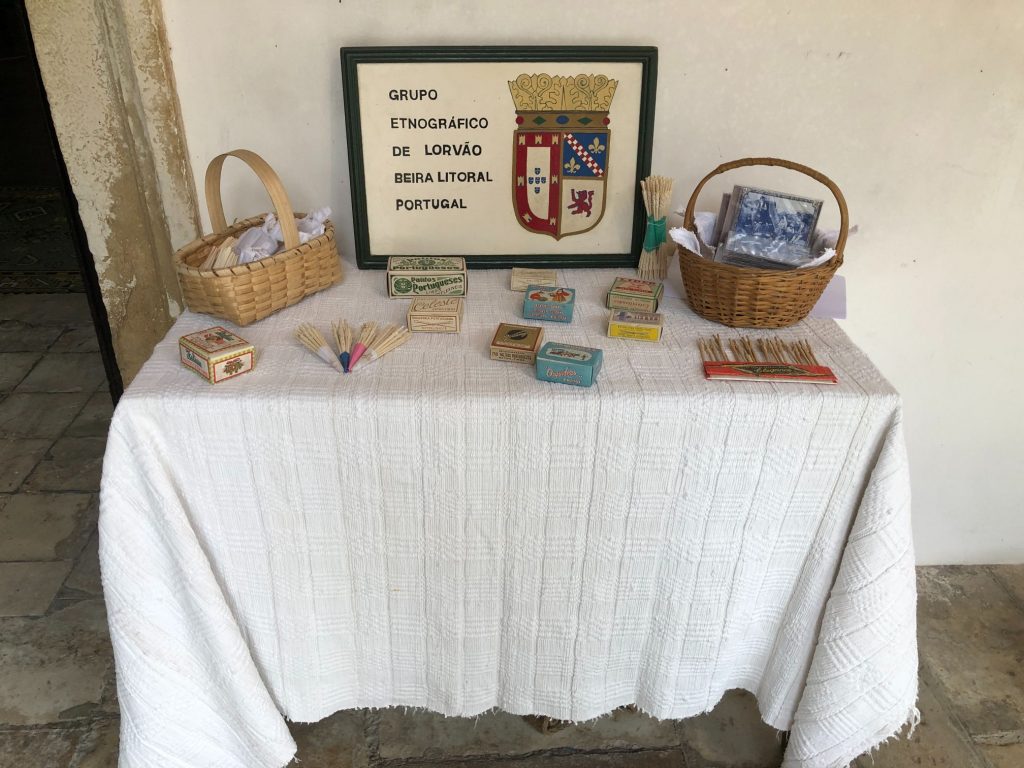


A Perfect Paradise – Praia Fluvial do Vimieiro (River Beach)
The sun came out so after our Monastery visit we took a short drive onto Praia Fluvial do Vimieiro for a tasty picnic. There are several picnic tables and an added bonus was that the toilets were open, clean and modern so I didn’t have to find a secluded spot for an old lady wild pee pee in nature. The ladies loo even had a toilet seat (A very rare occurrence in Portugal for some reason), toilet paper, paper towel to dry hands and hand soap, very surprising for it being out of season. I found another Roteiro de Arista Letter V here so more photo opportunities were taken. The restaurant emanated a beautiful aroma of fish and chips. I think I may have been hallucinating because fish and chips is not a traditional dish here and in hindsight I think it was just the waft of vinegar I could smell. I love all the cloud mirror images bouncing off the water, they are so pretty and the water wheels are very quaint. What a serene little oasis of tranquillity and we had the whole place to ourselves! As we were sat enjoying our food a heart shaped leaf fell from the tree above so I gifted it to hubby, a heart for my Soulmate. There were actually hundreds of heart shaped leaves all scattered on the ground, very cute. We found a lovely inscribed wooden bench too. A perfect paradise and a penis pastry, what more could a girl ask for (ha ha).
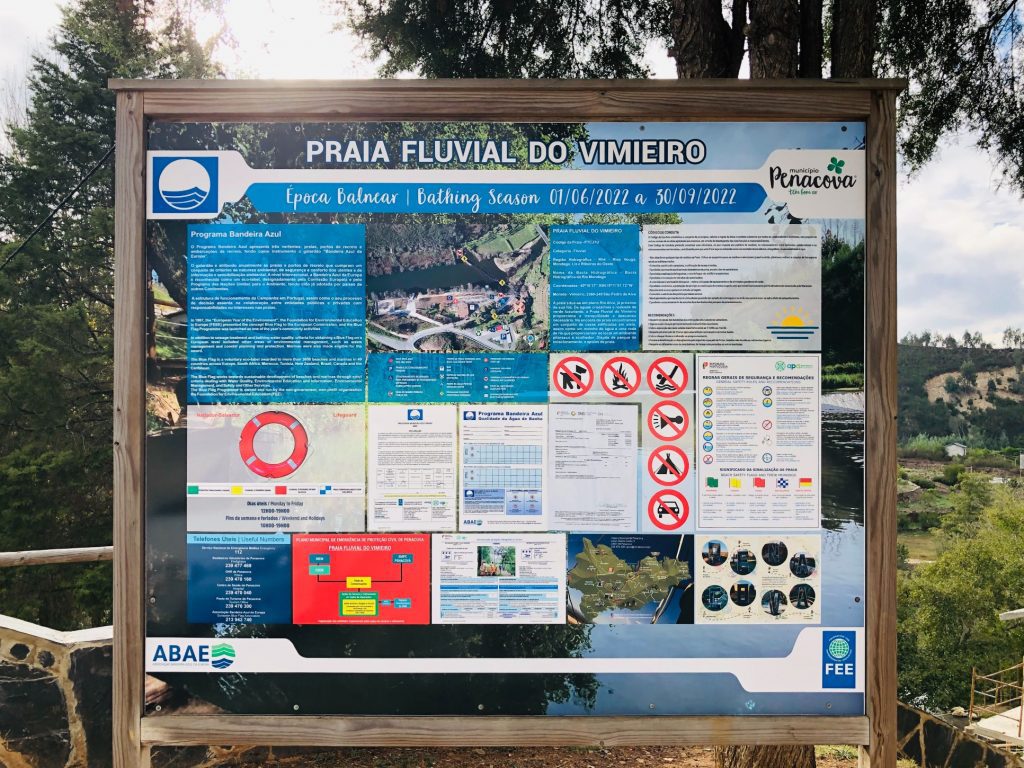


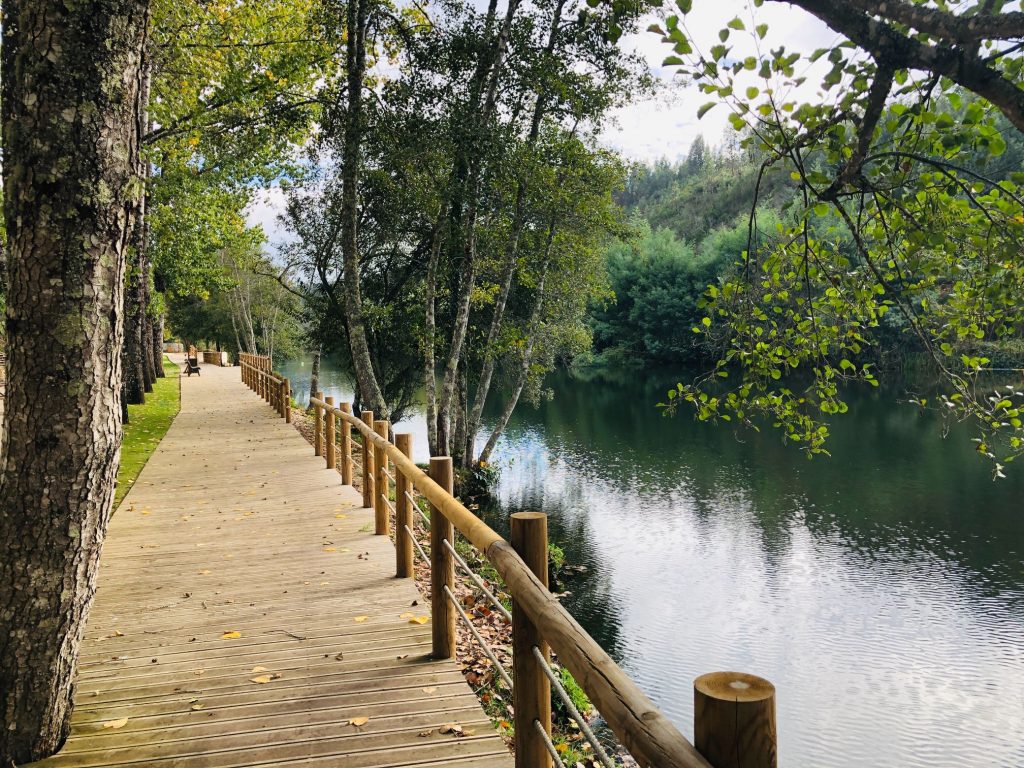


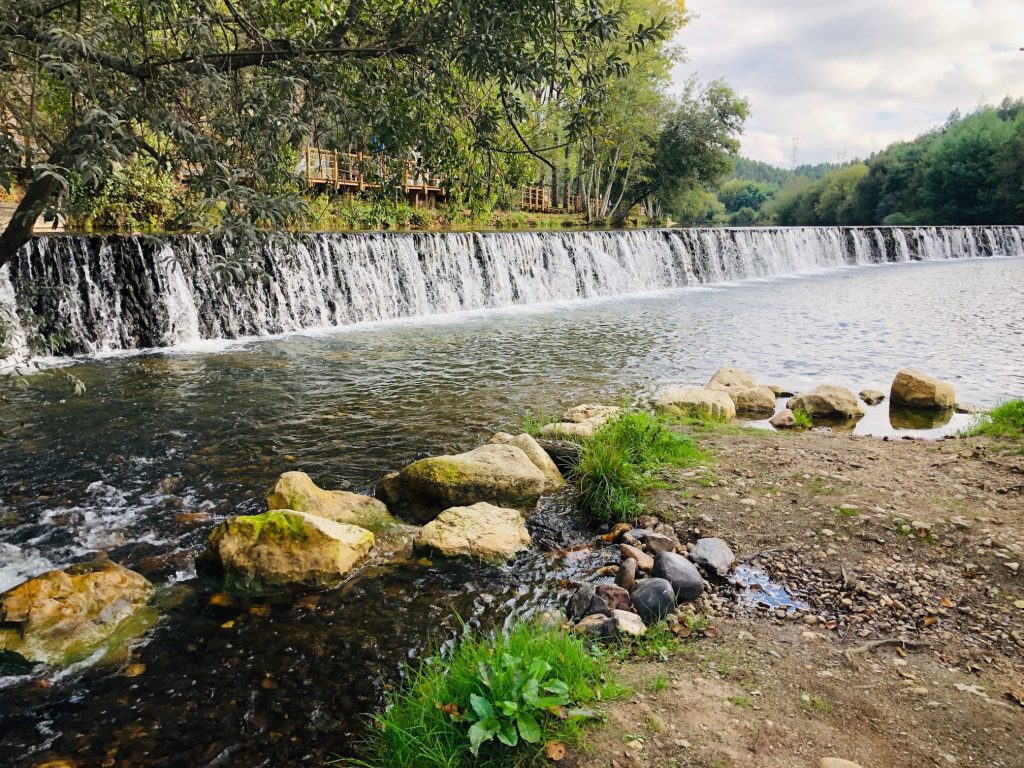


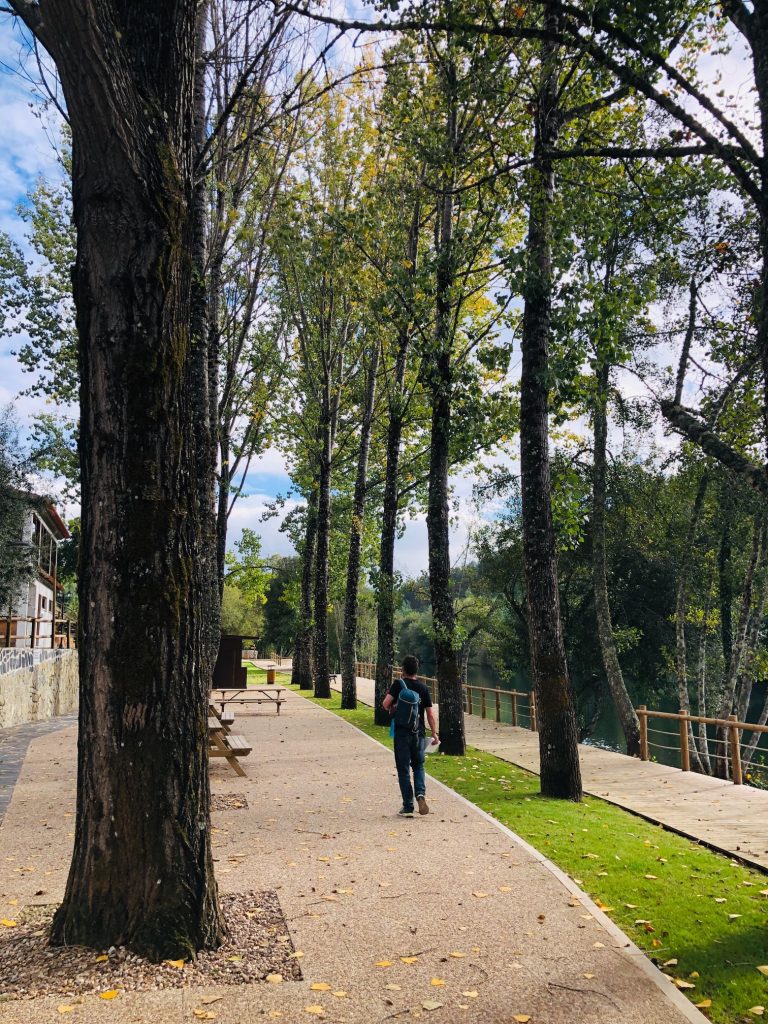


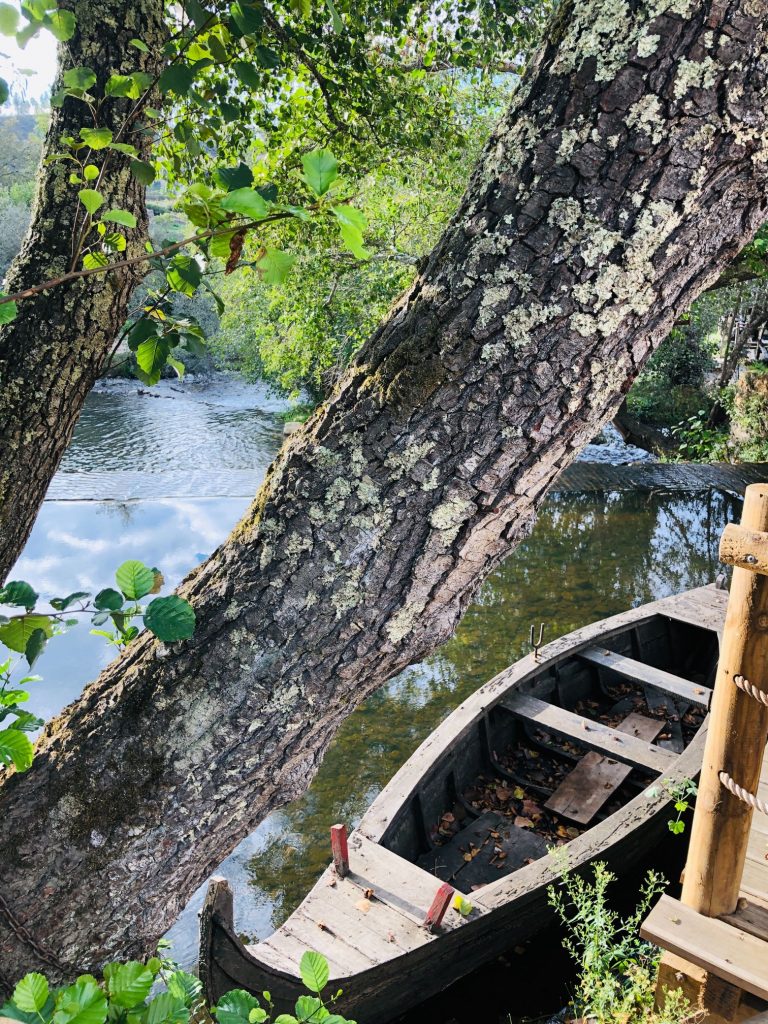


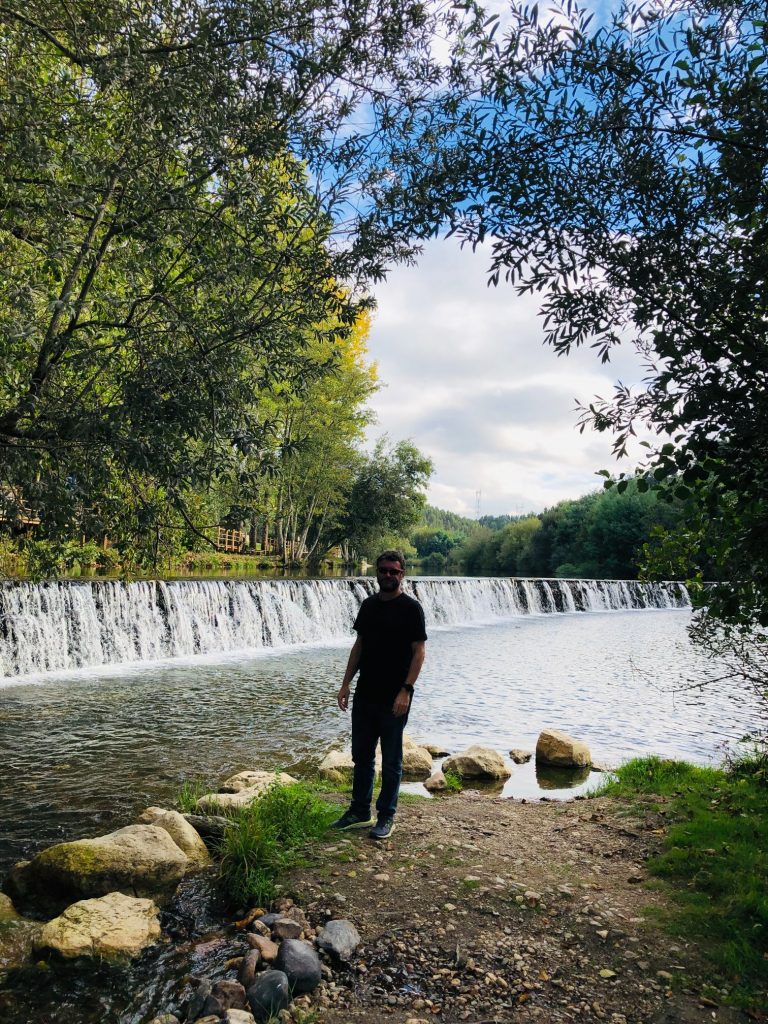


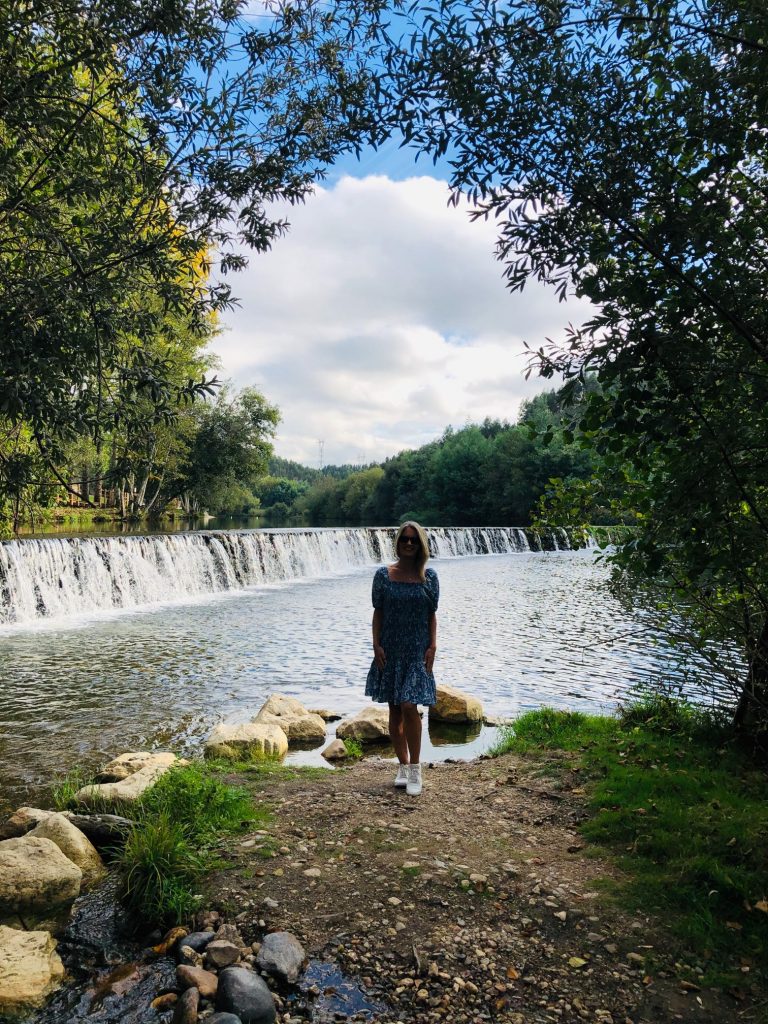


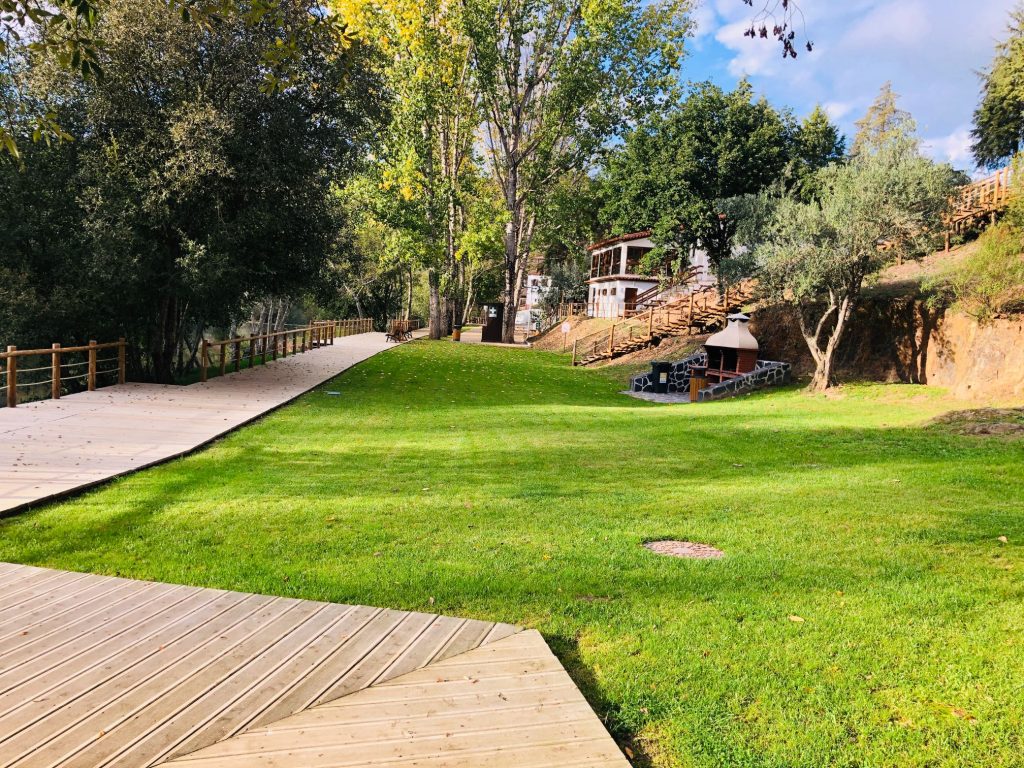





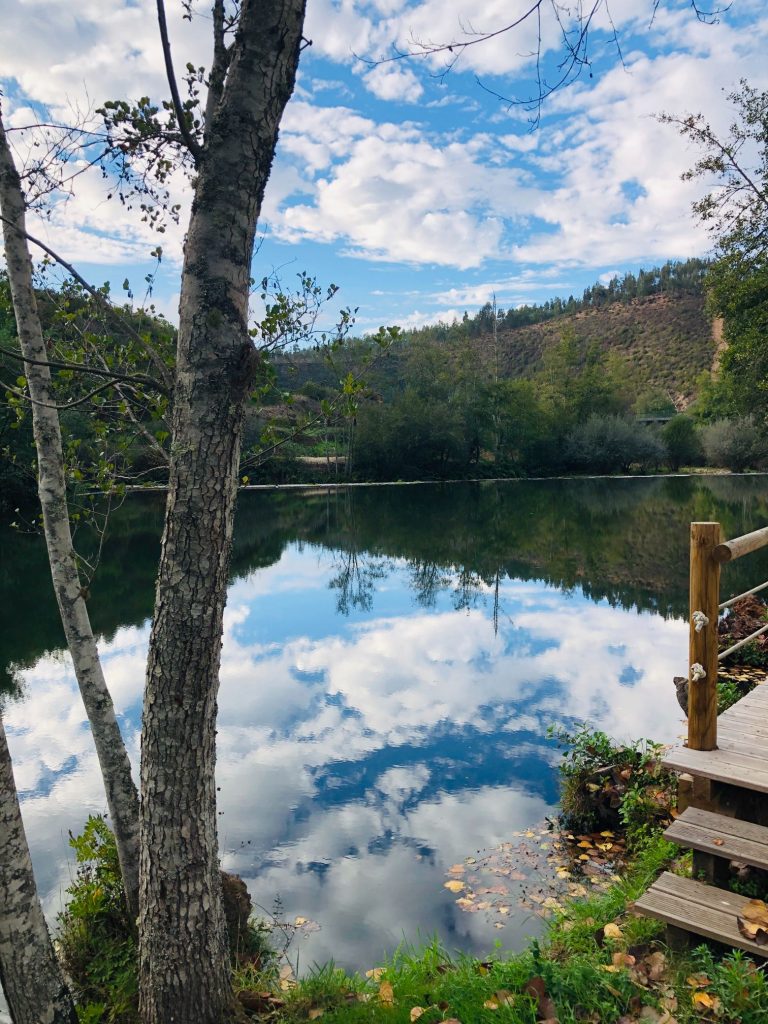


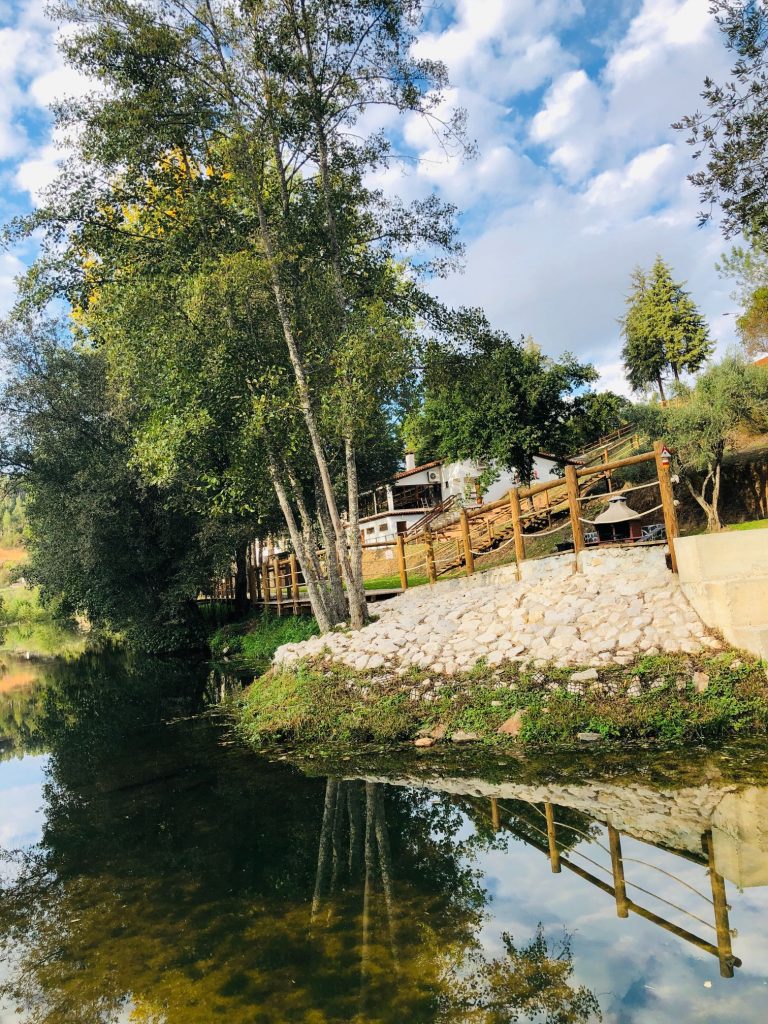


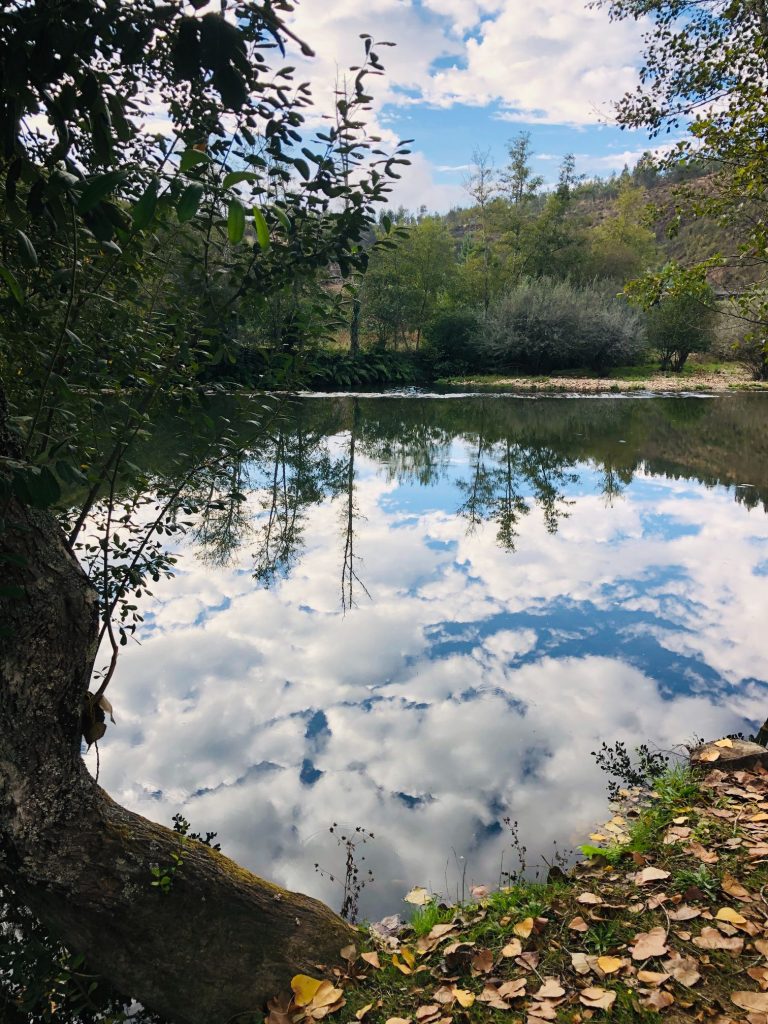








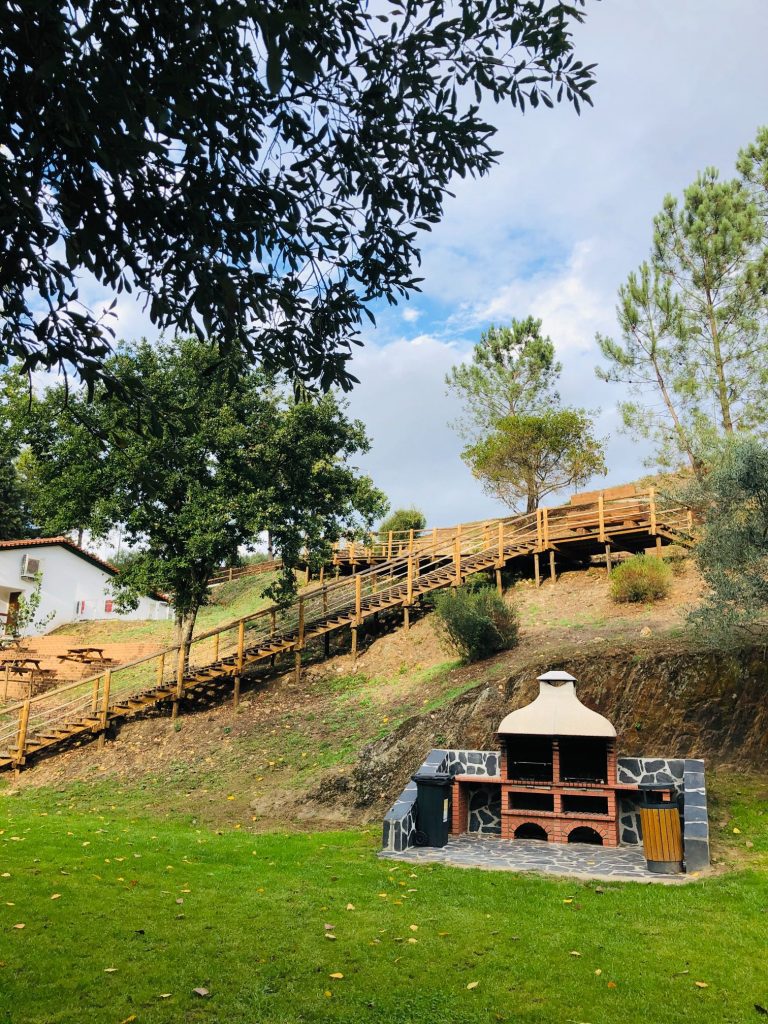


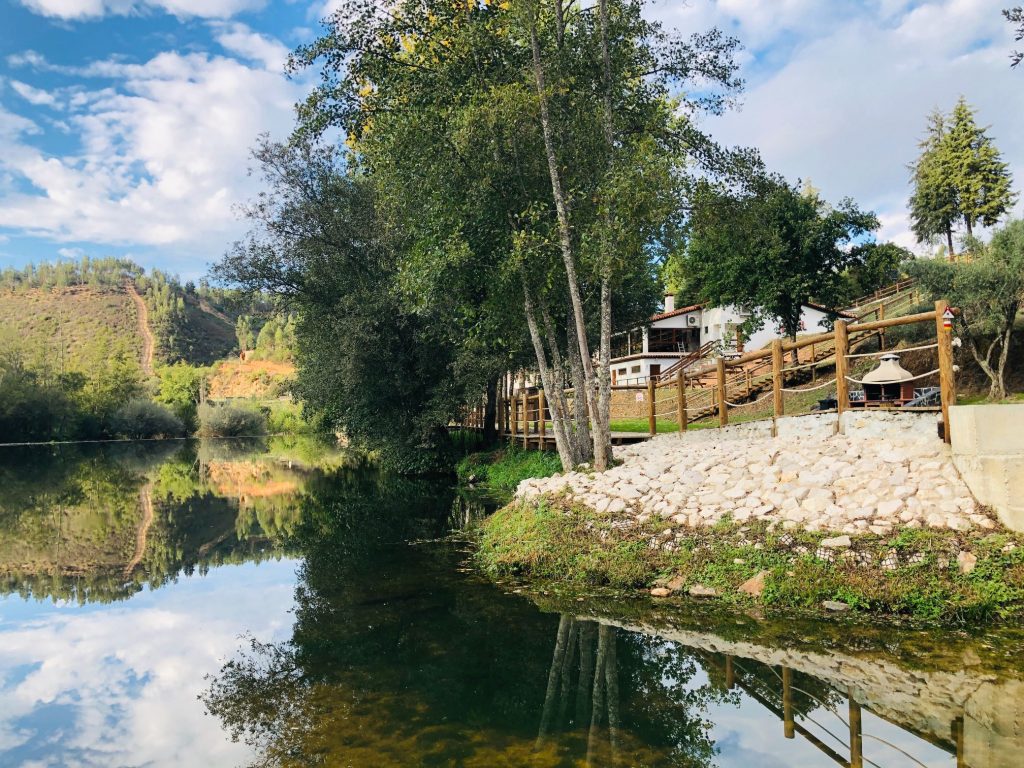


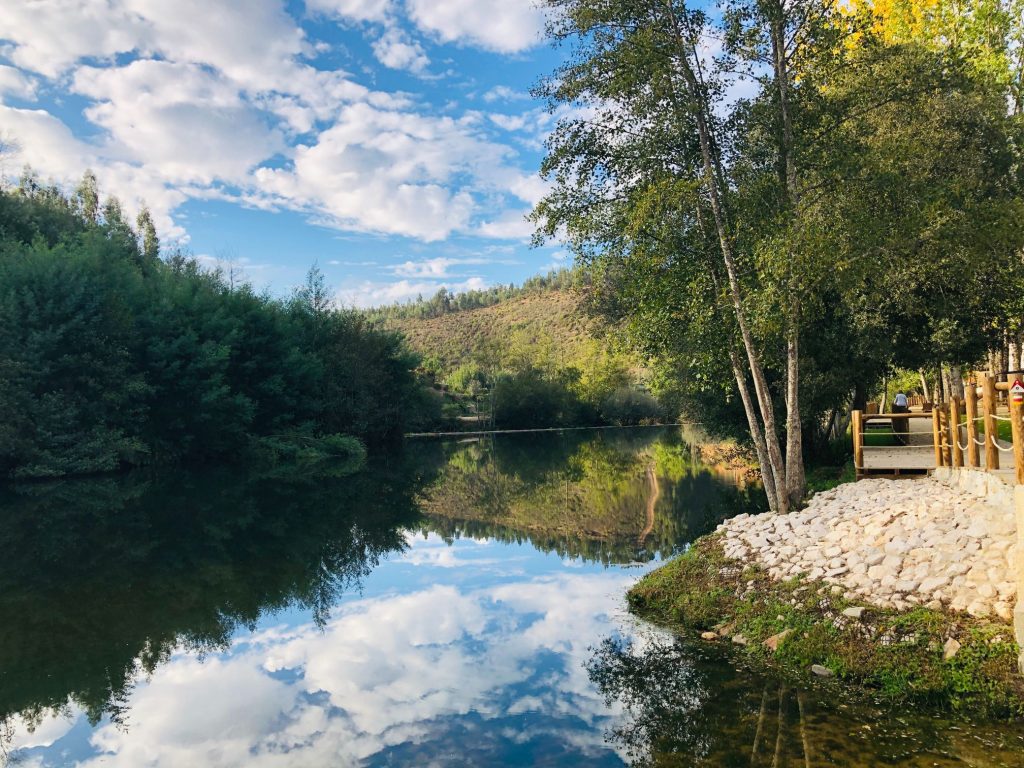





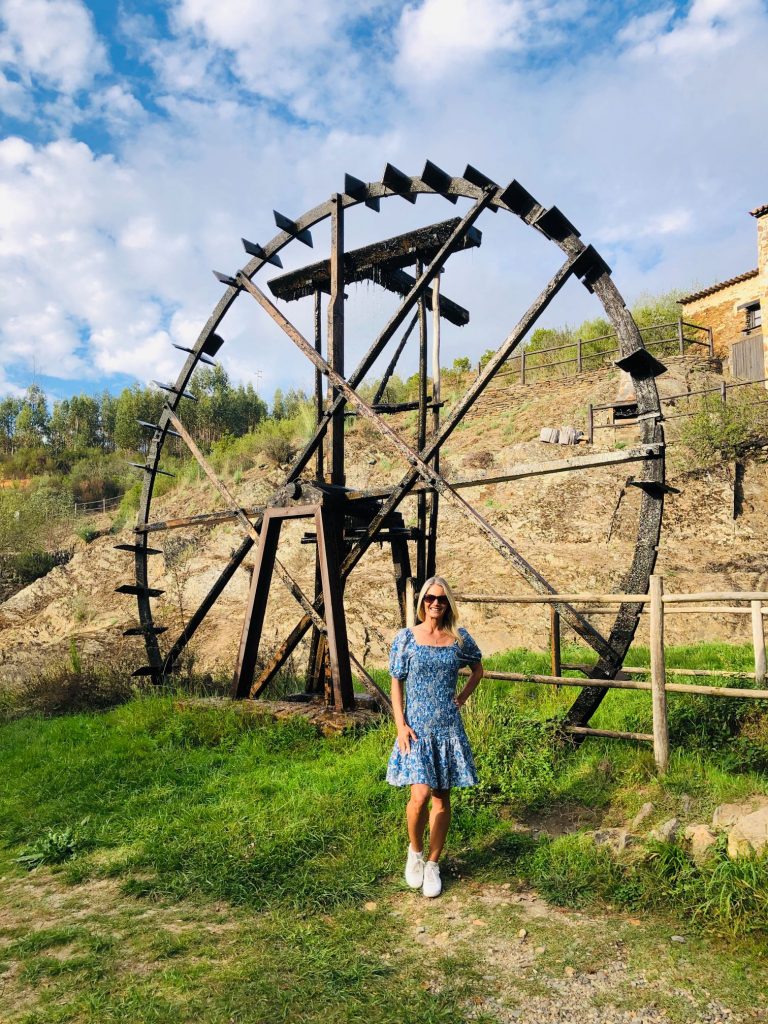


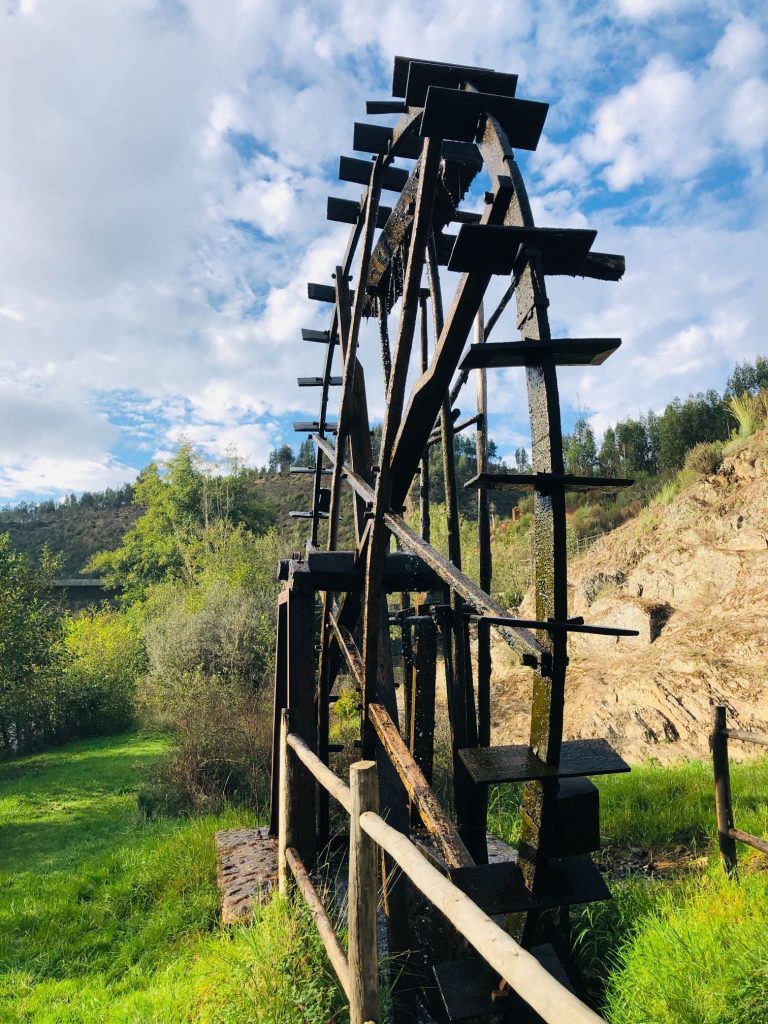





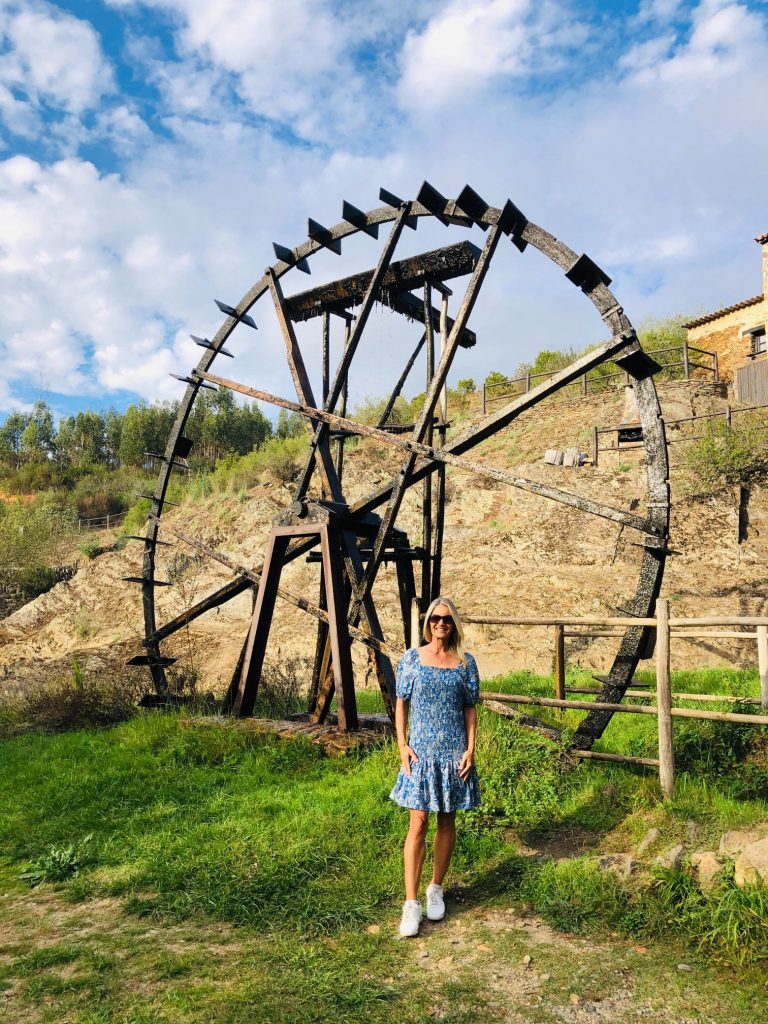





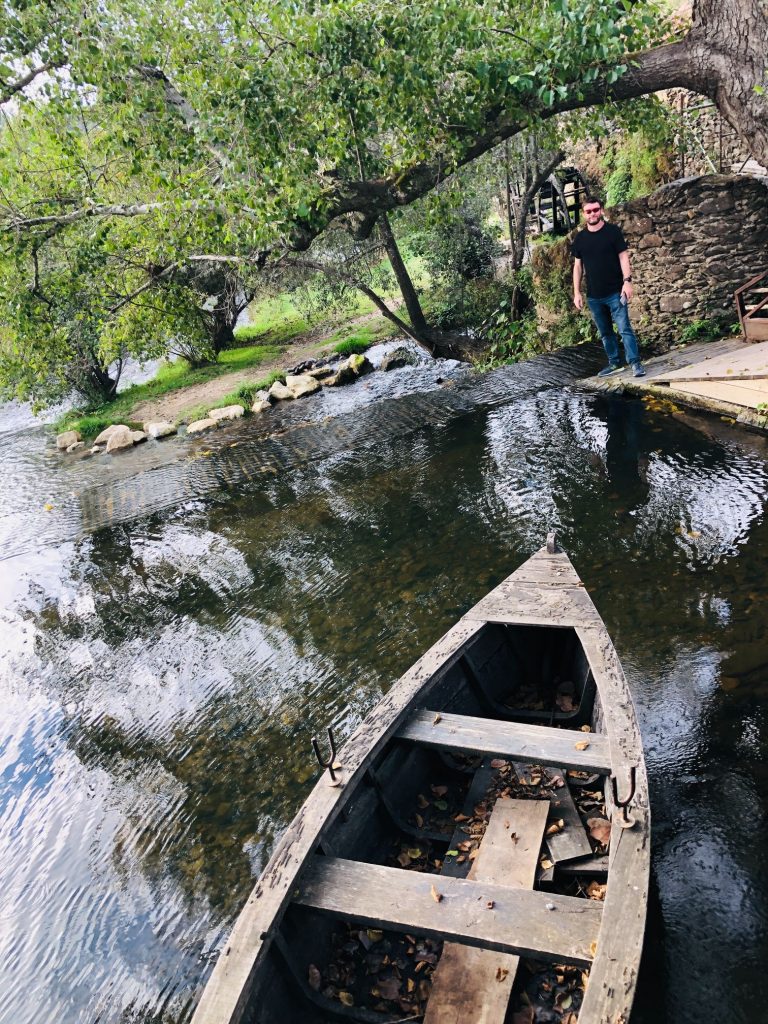


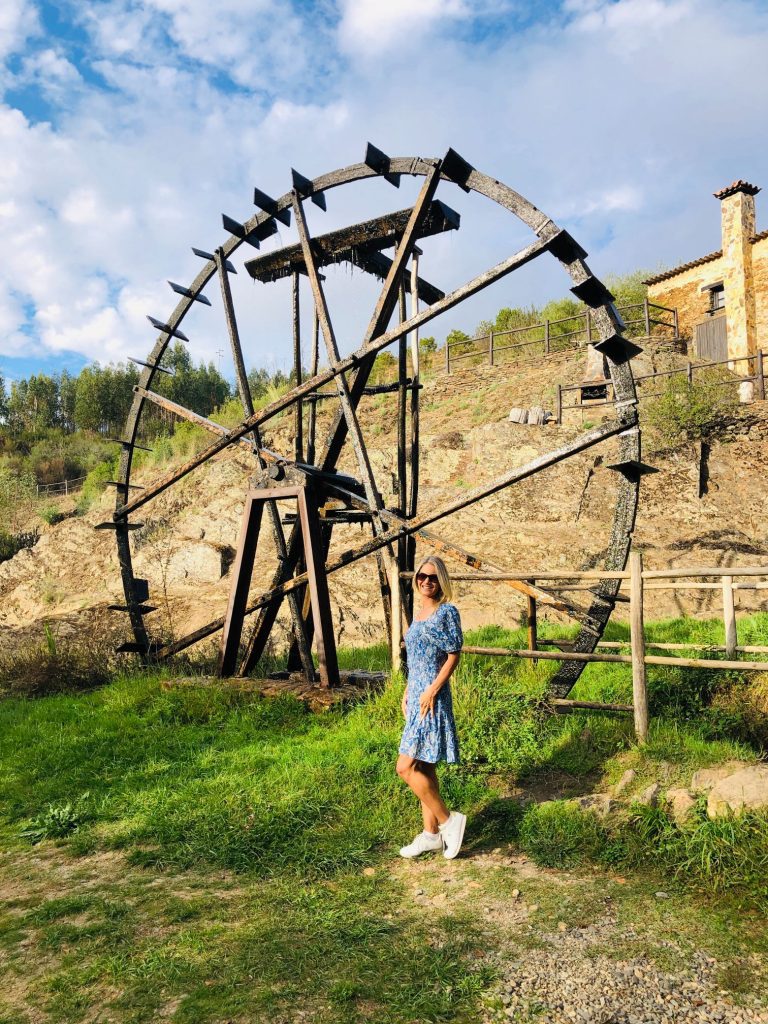


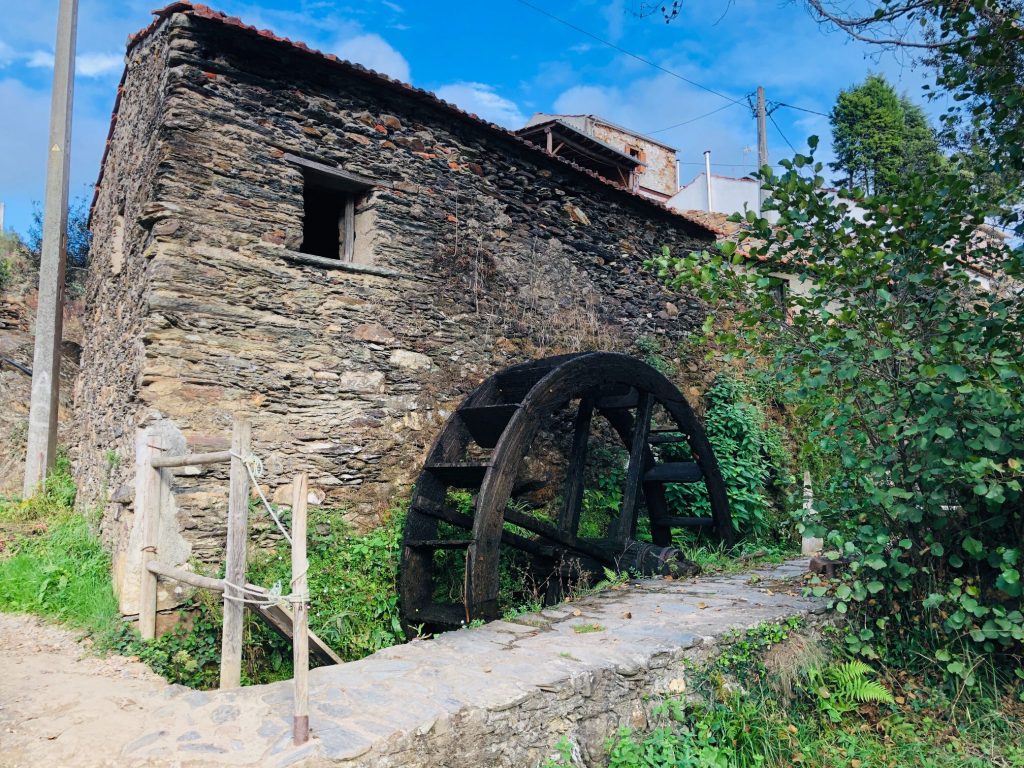


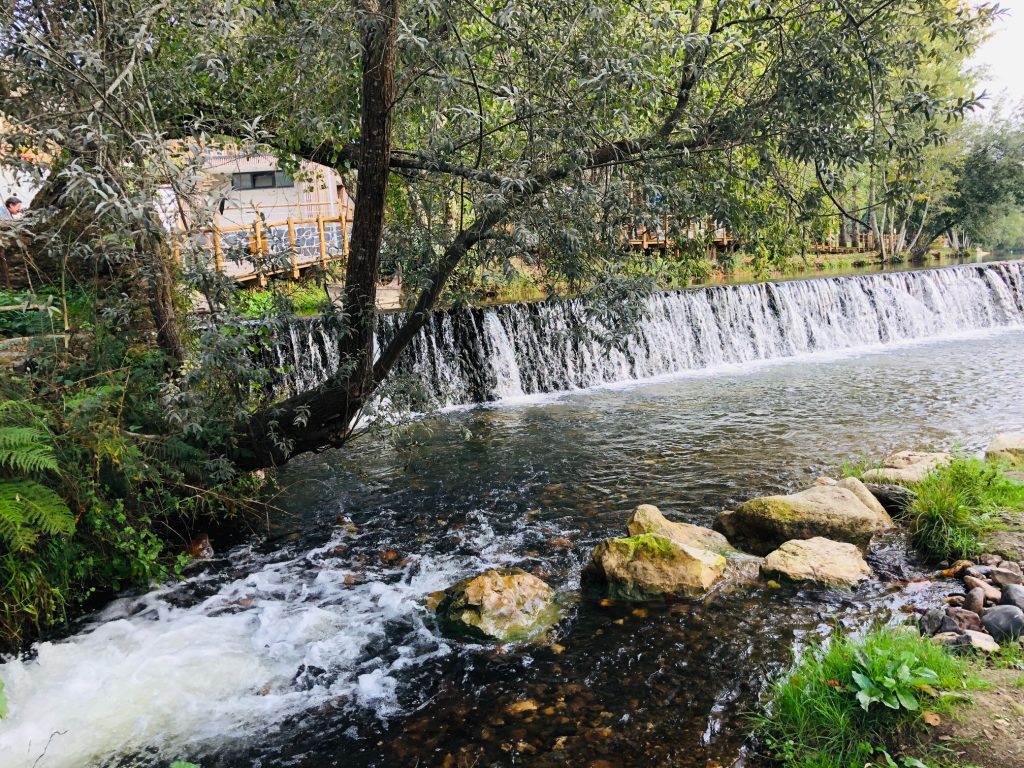


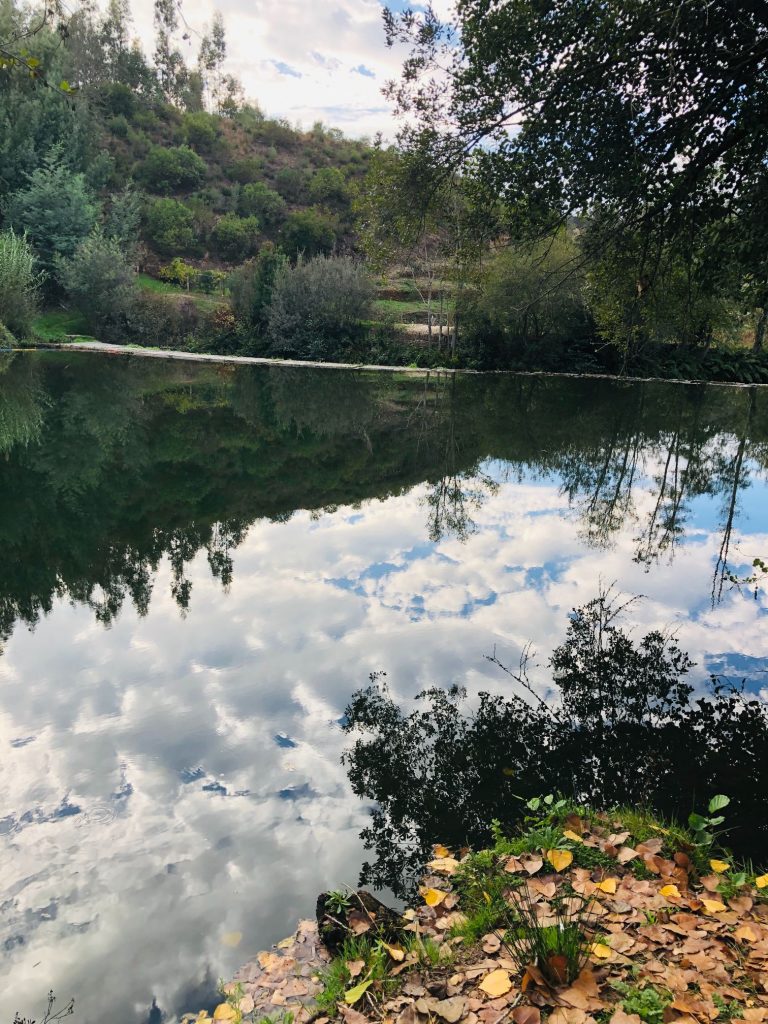


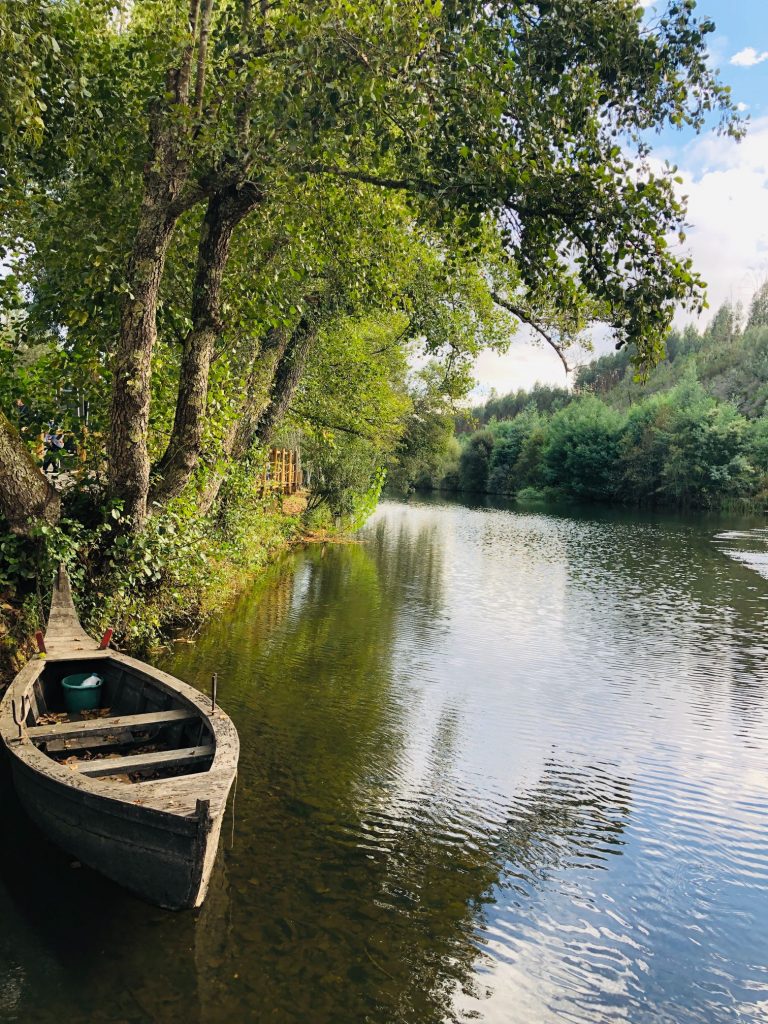


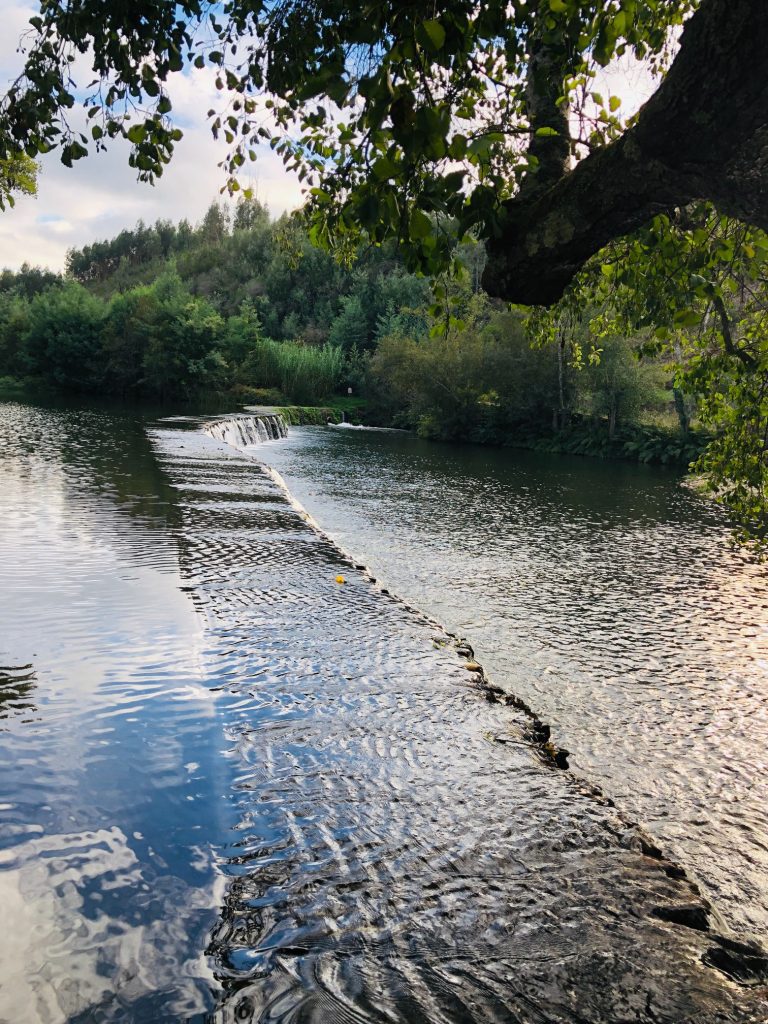


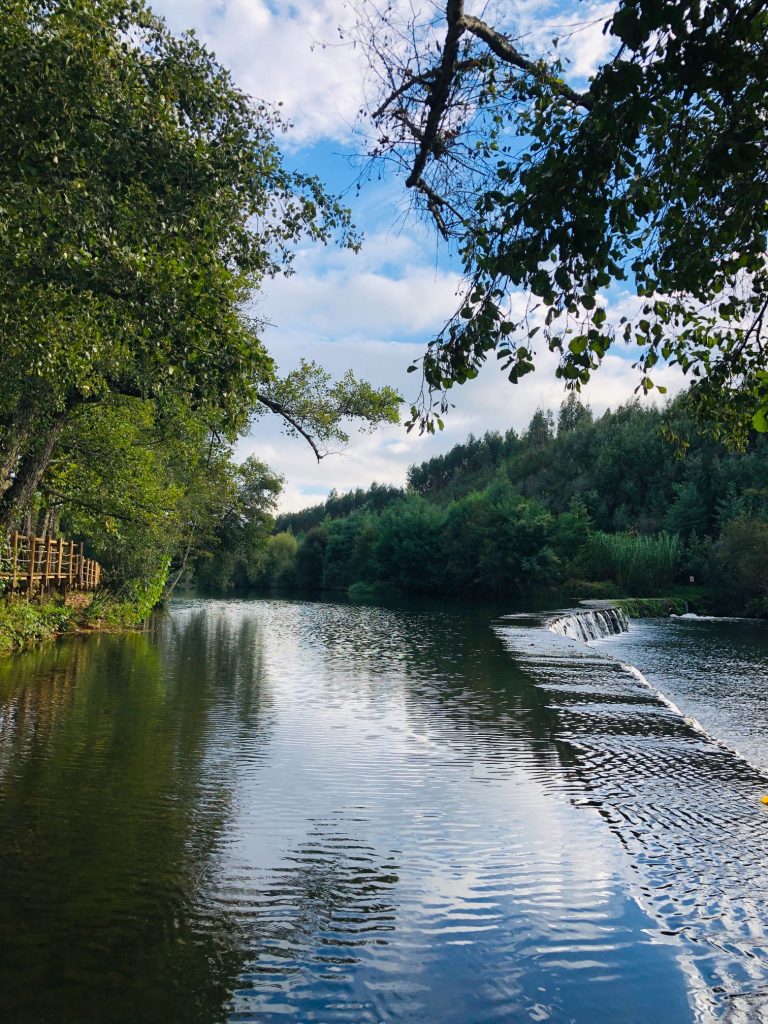


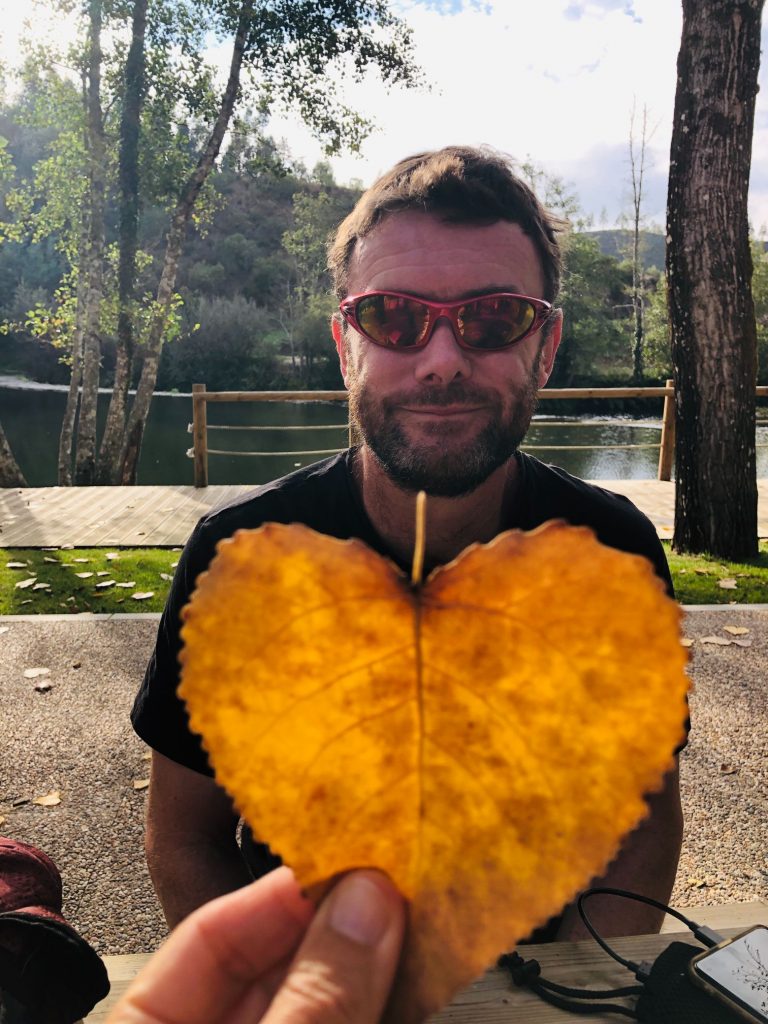


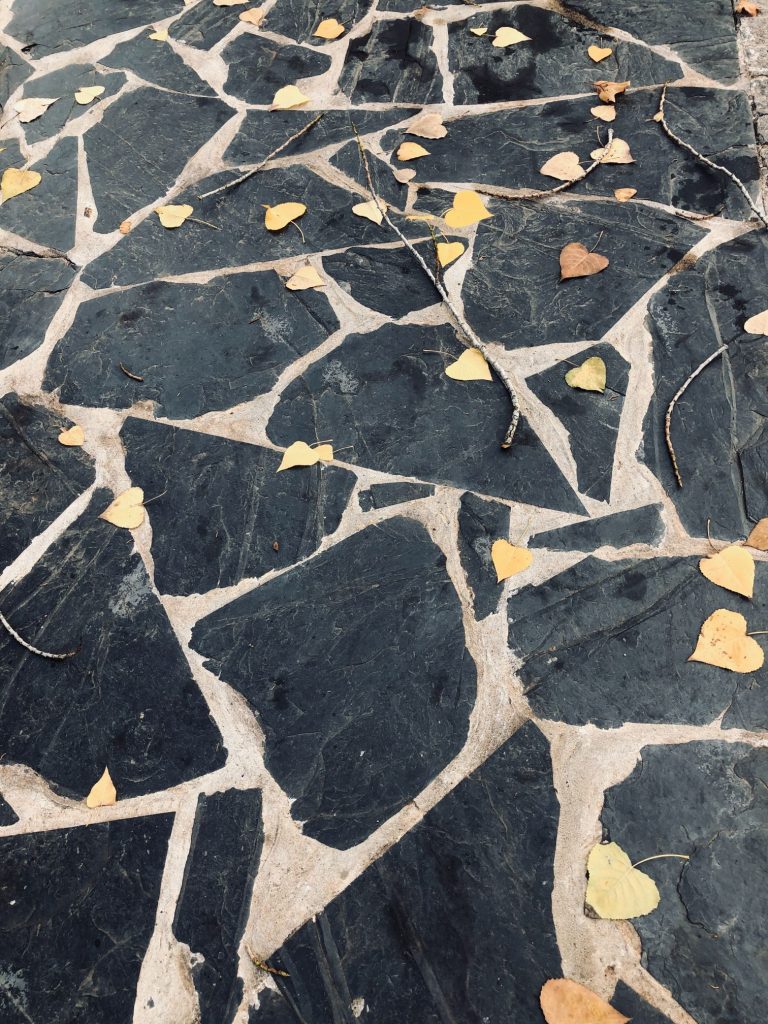


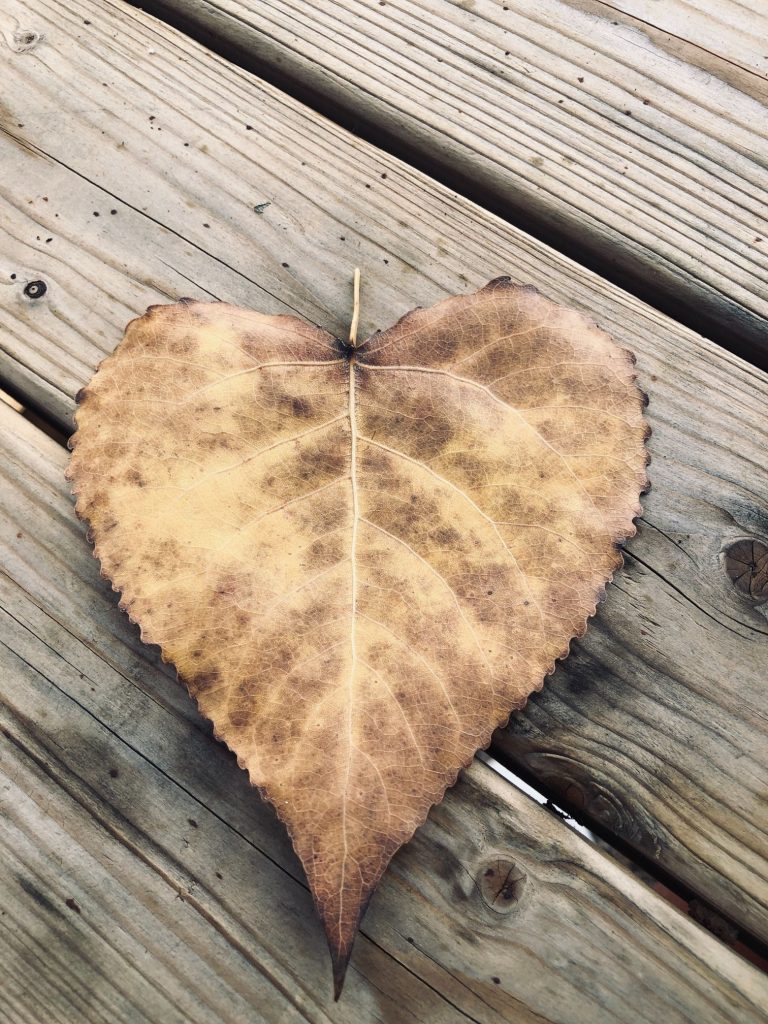





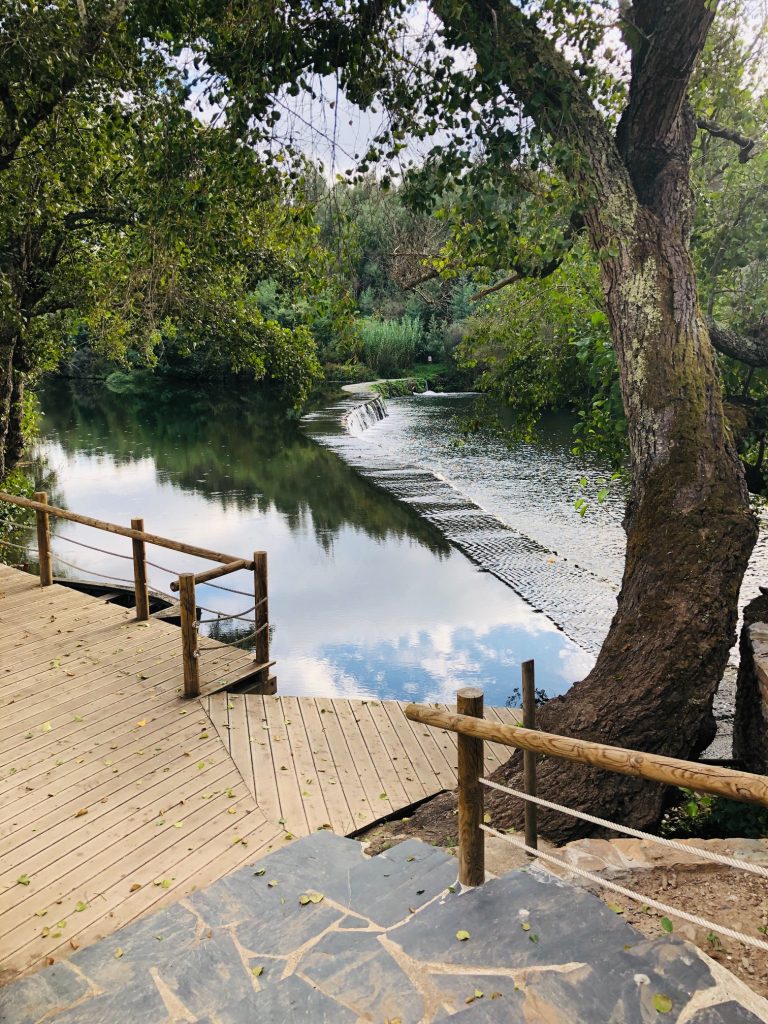





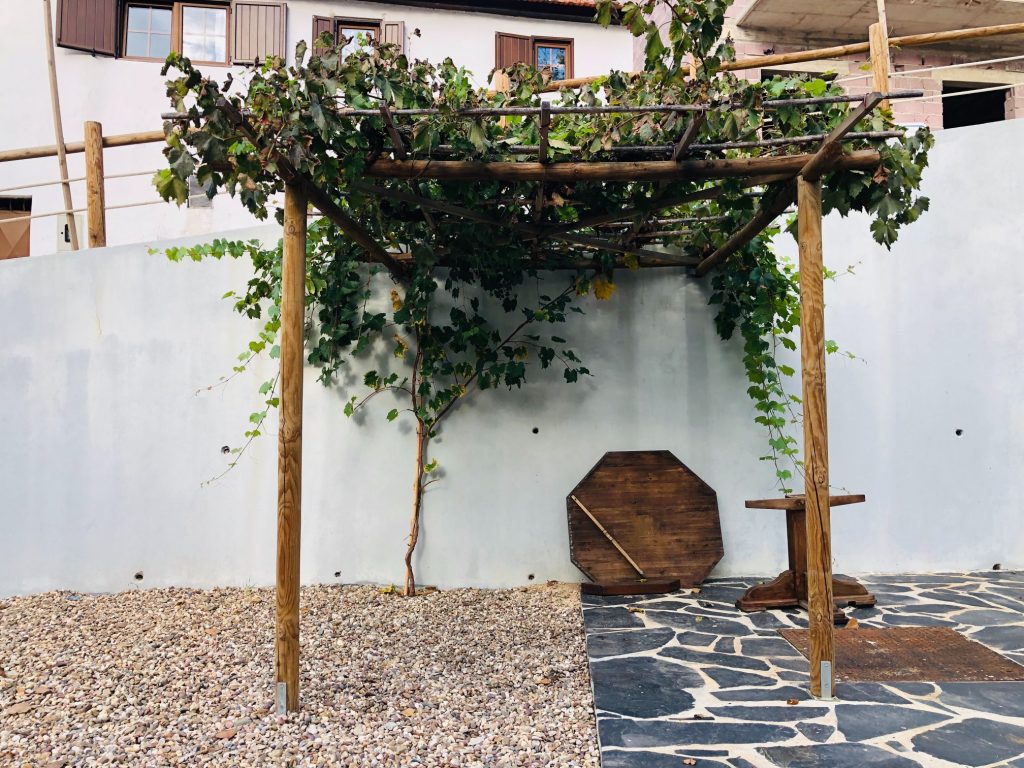


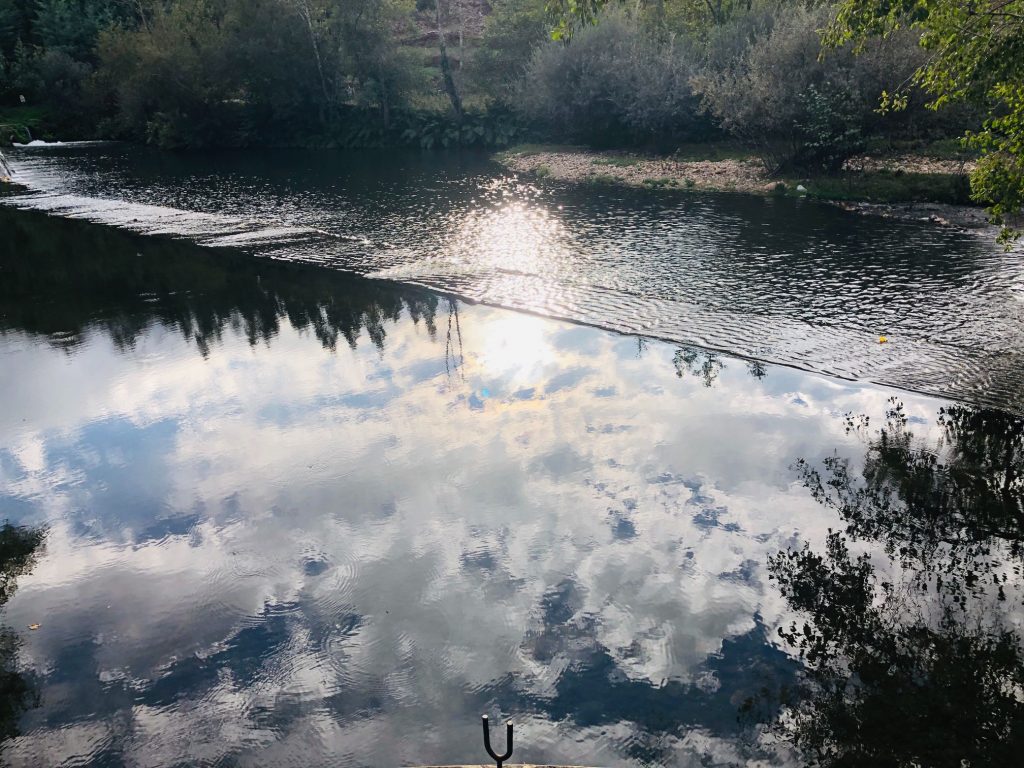


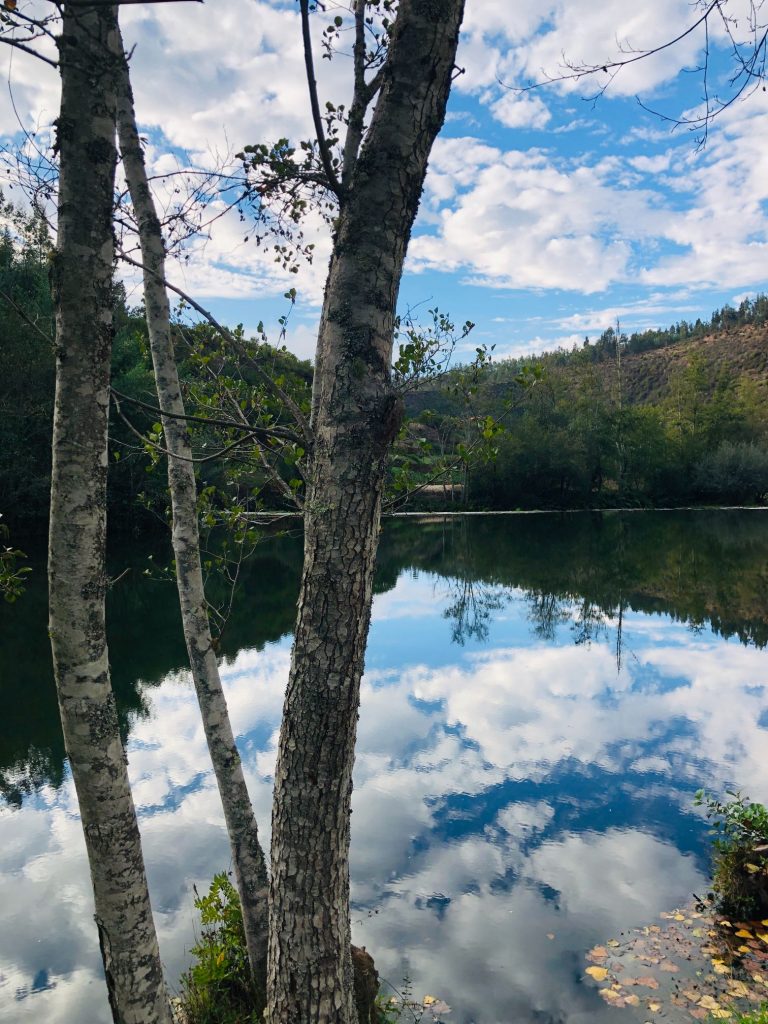


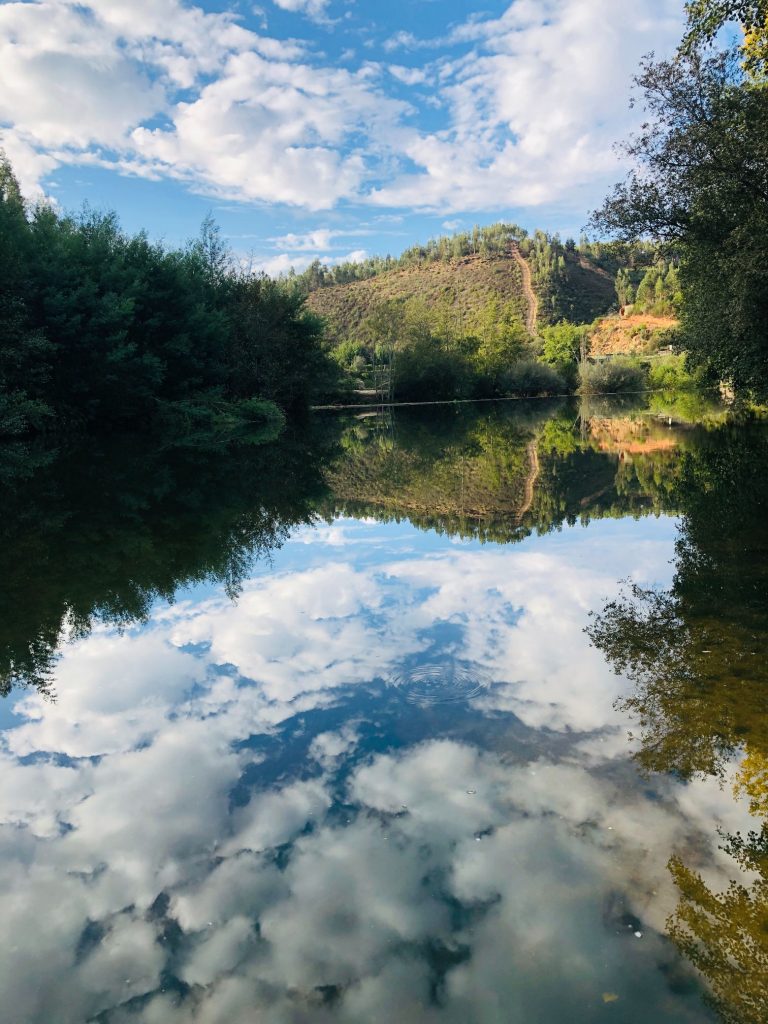


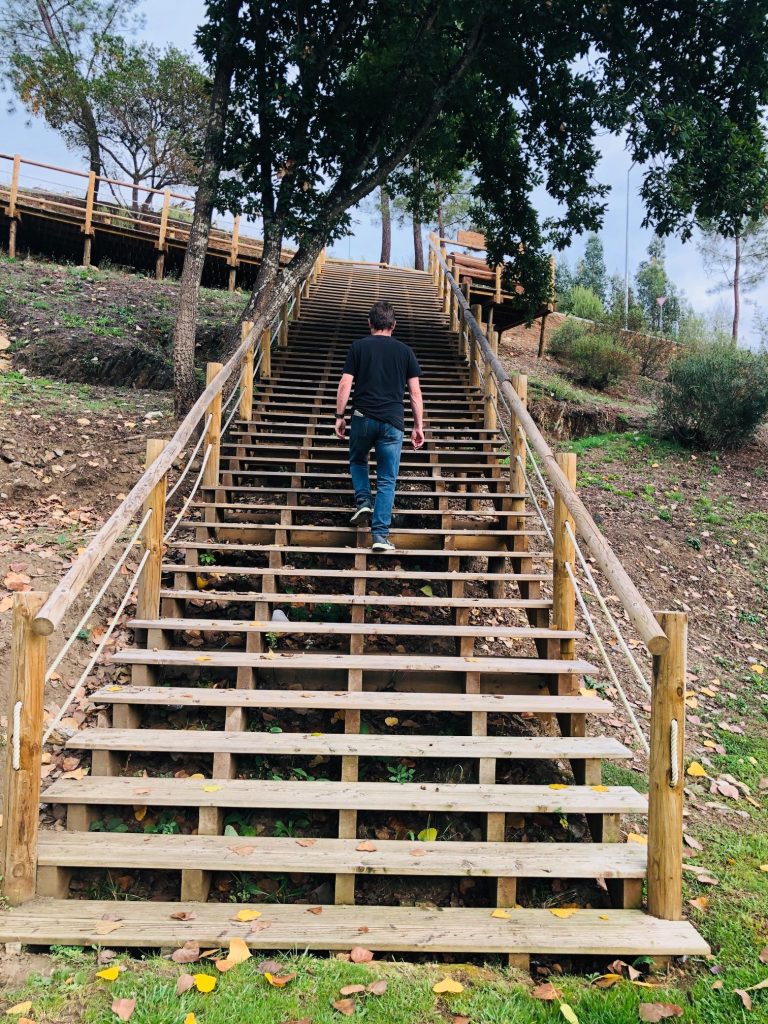





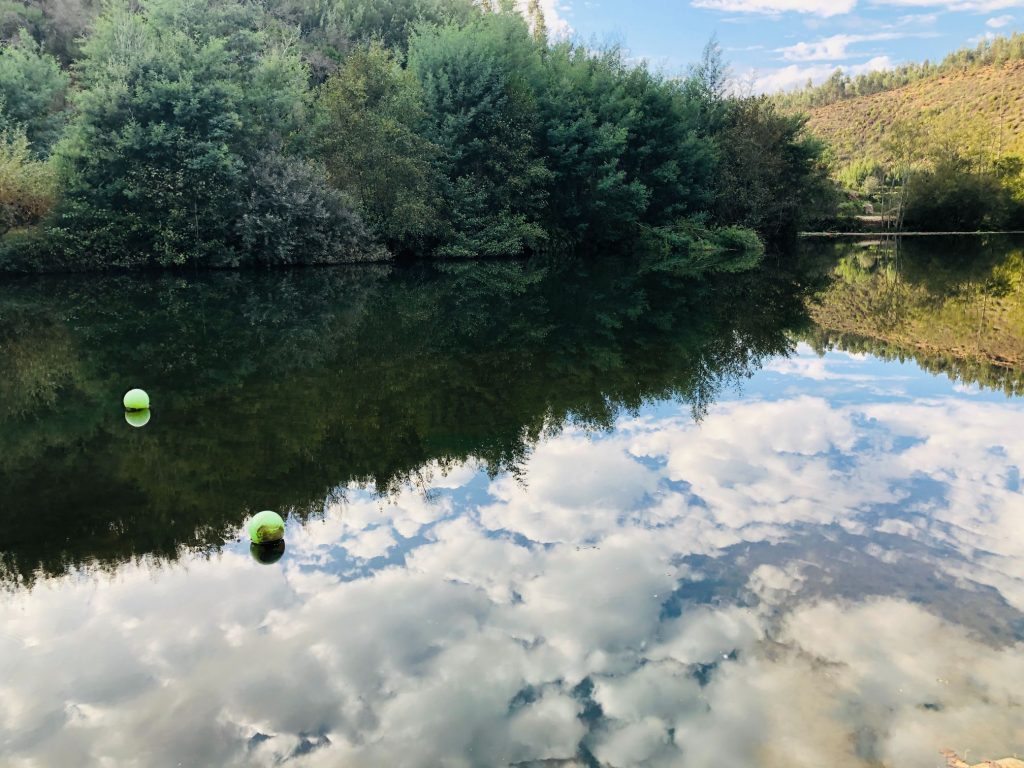


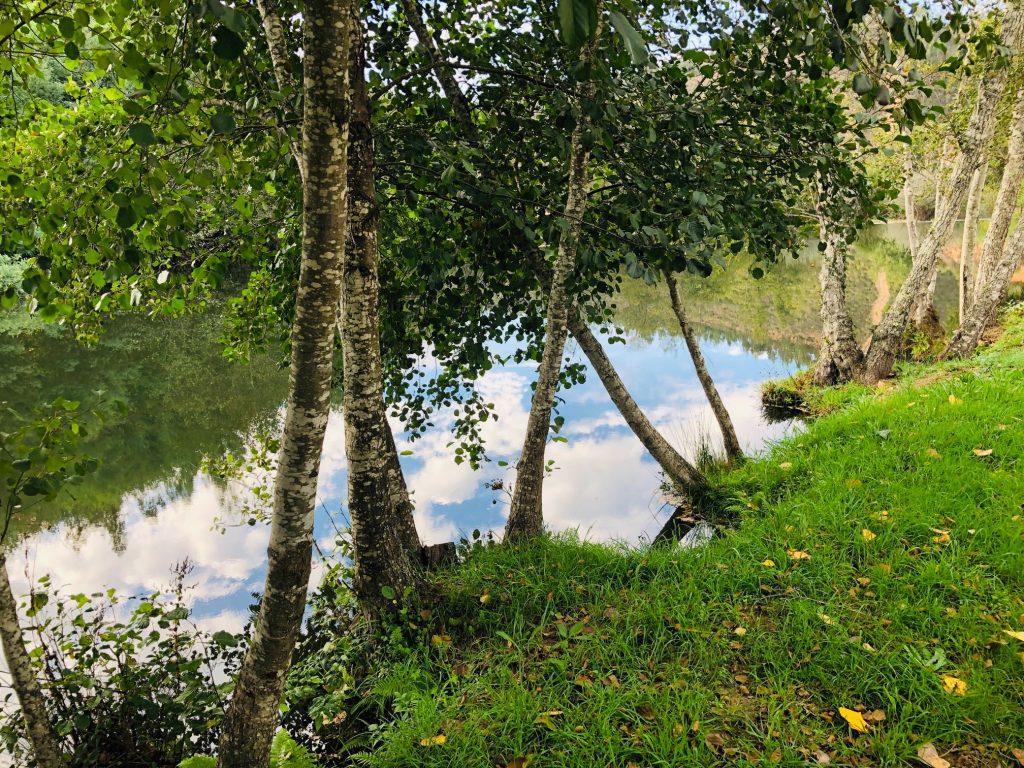


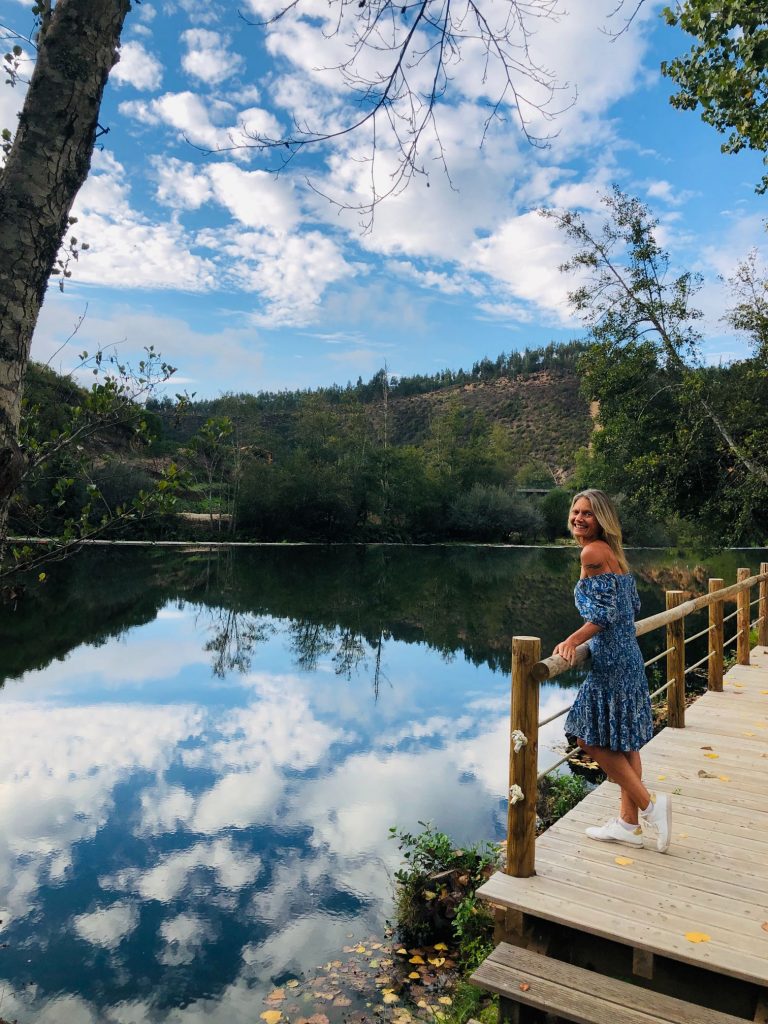


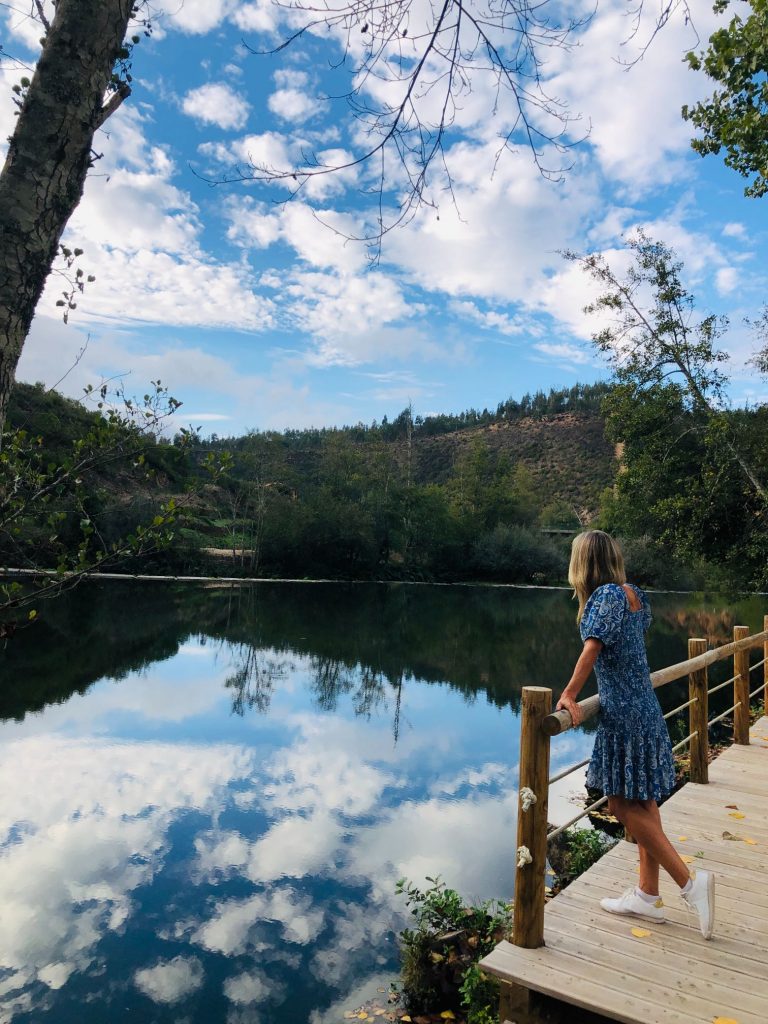





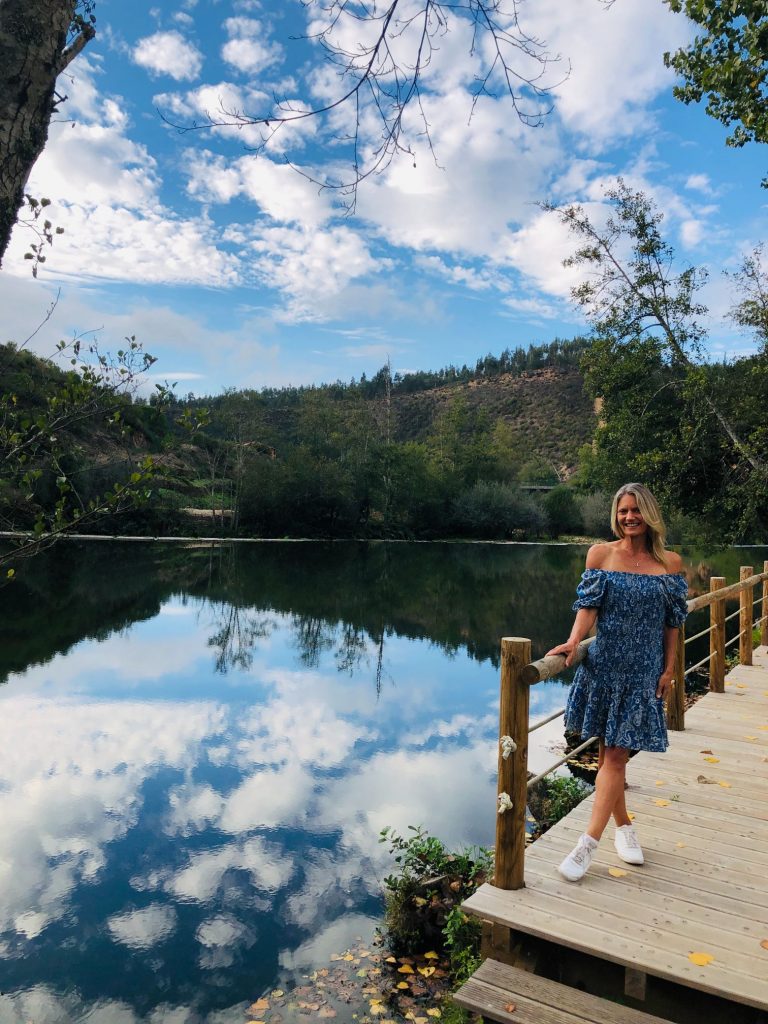


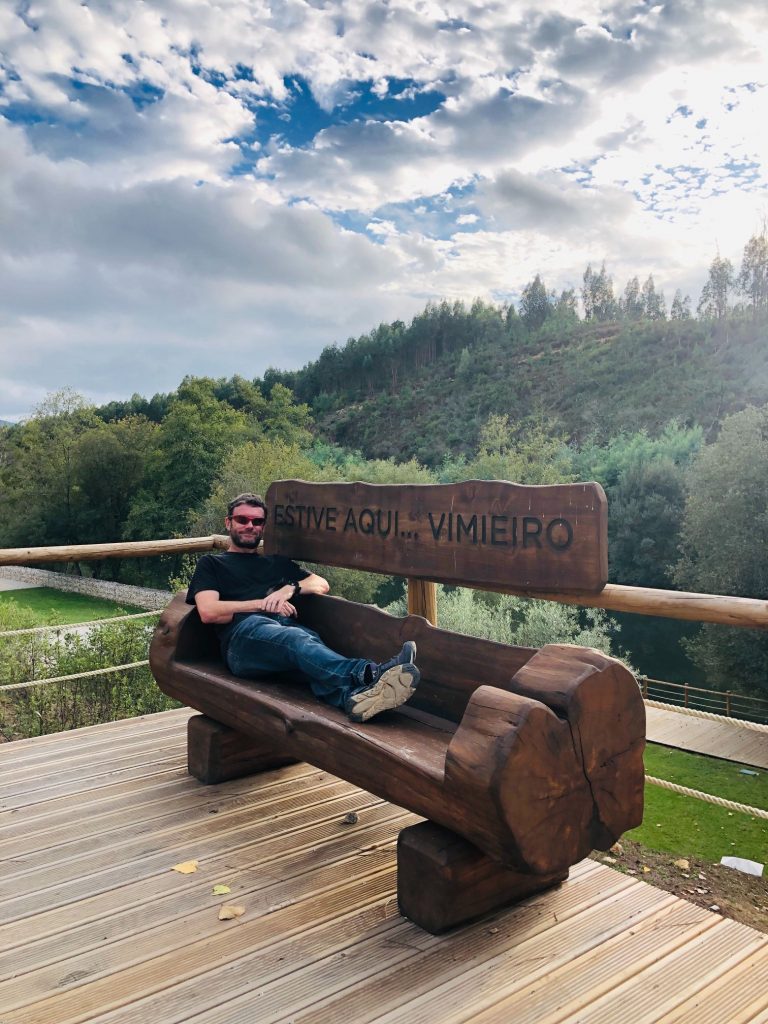


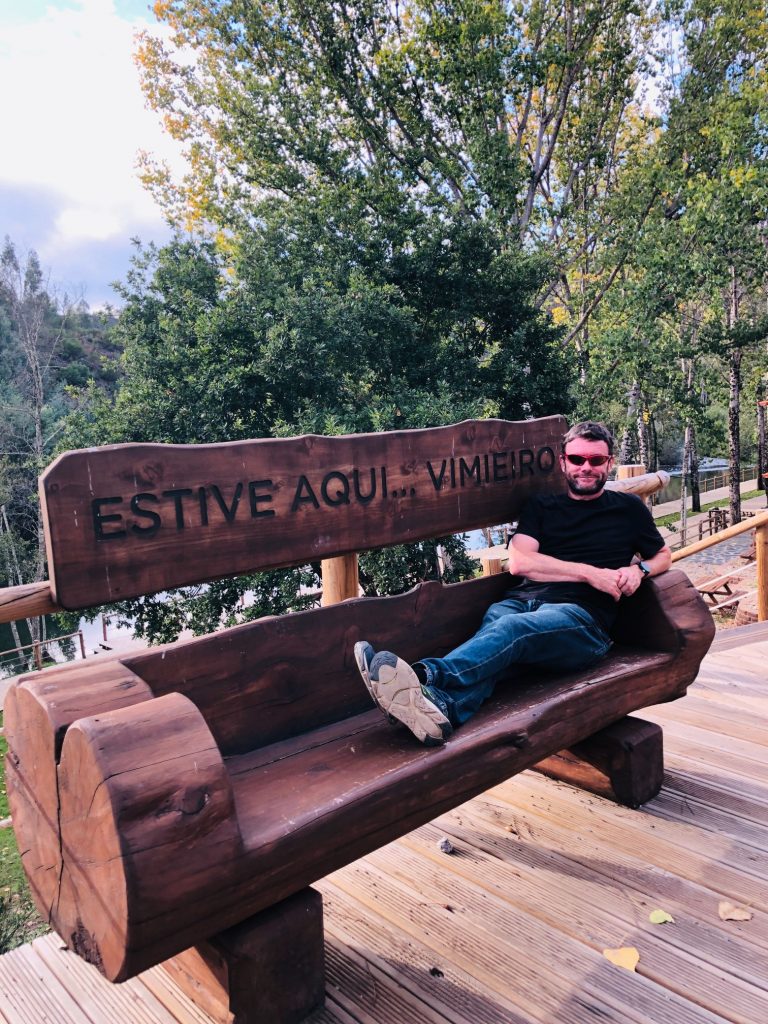


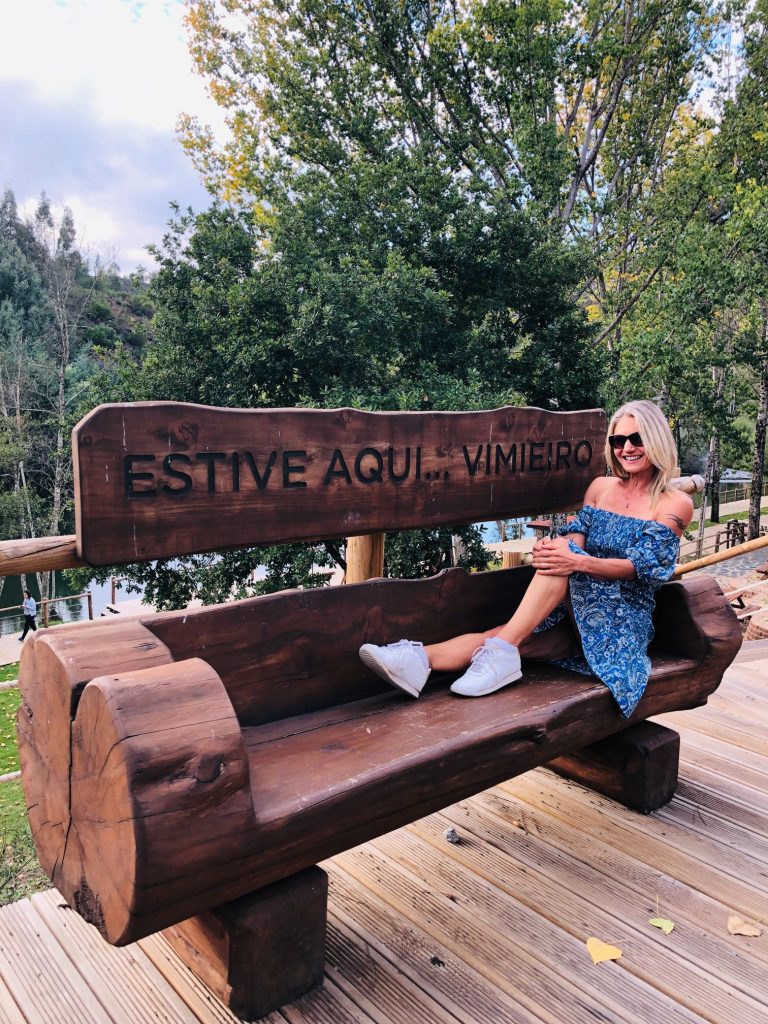


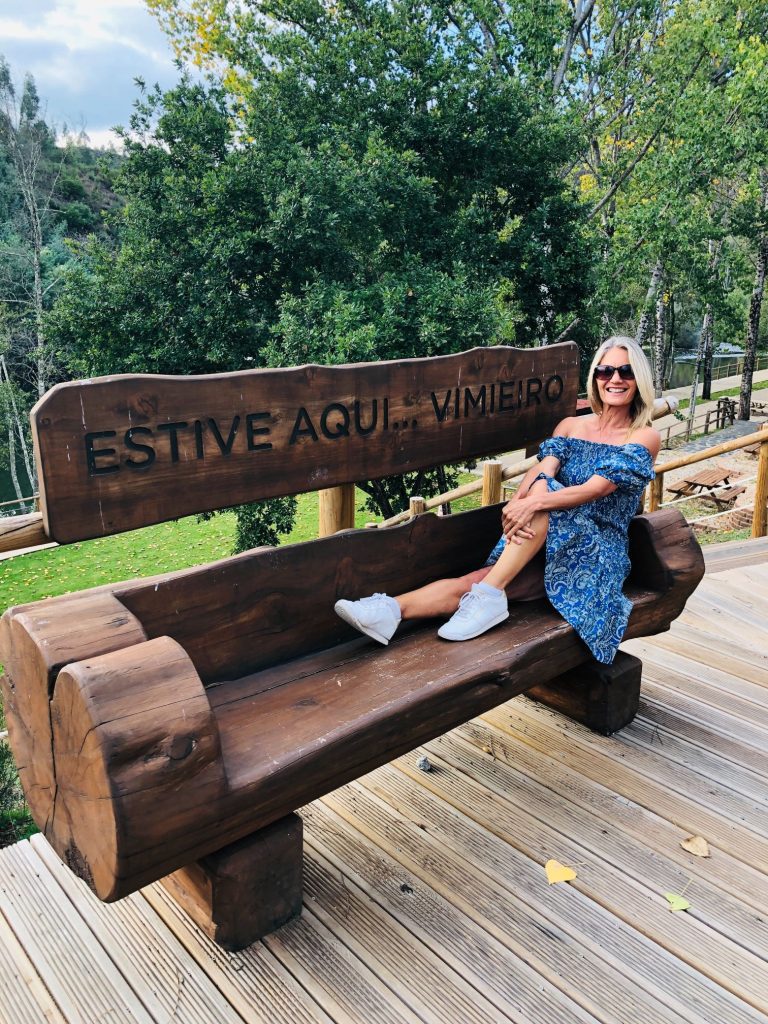


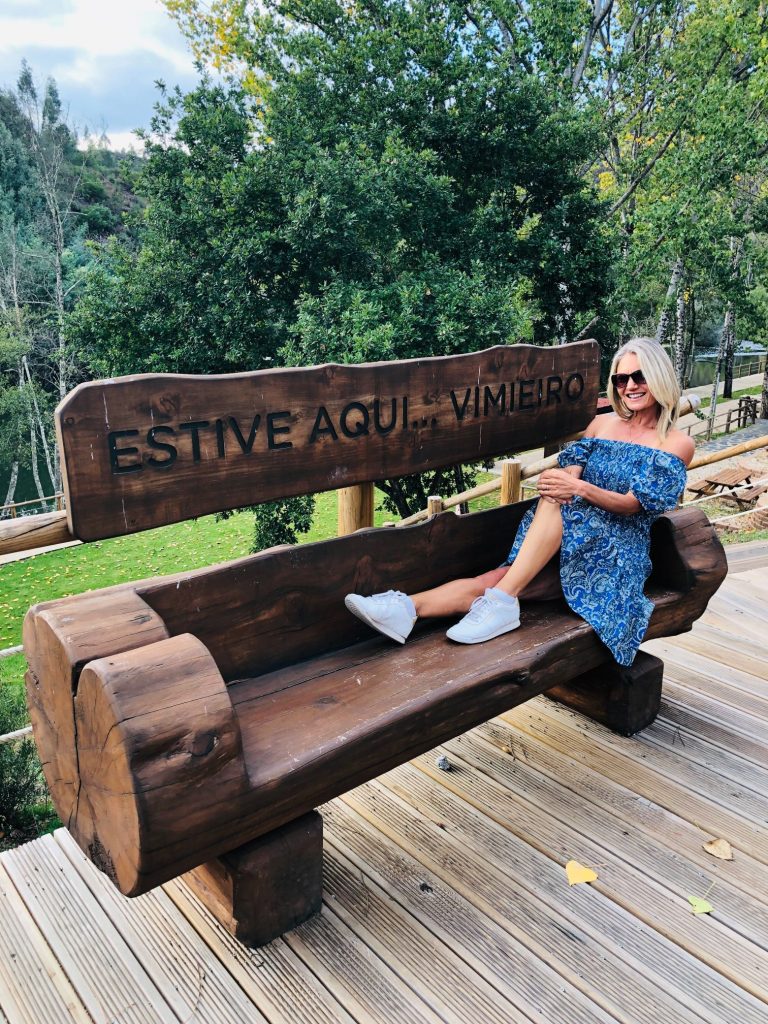


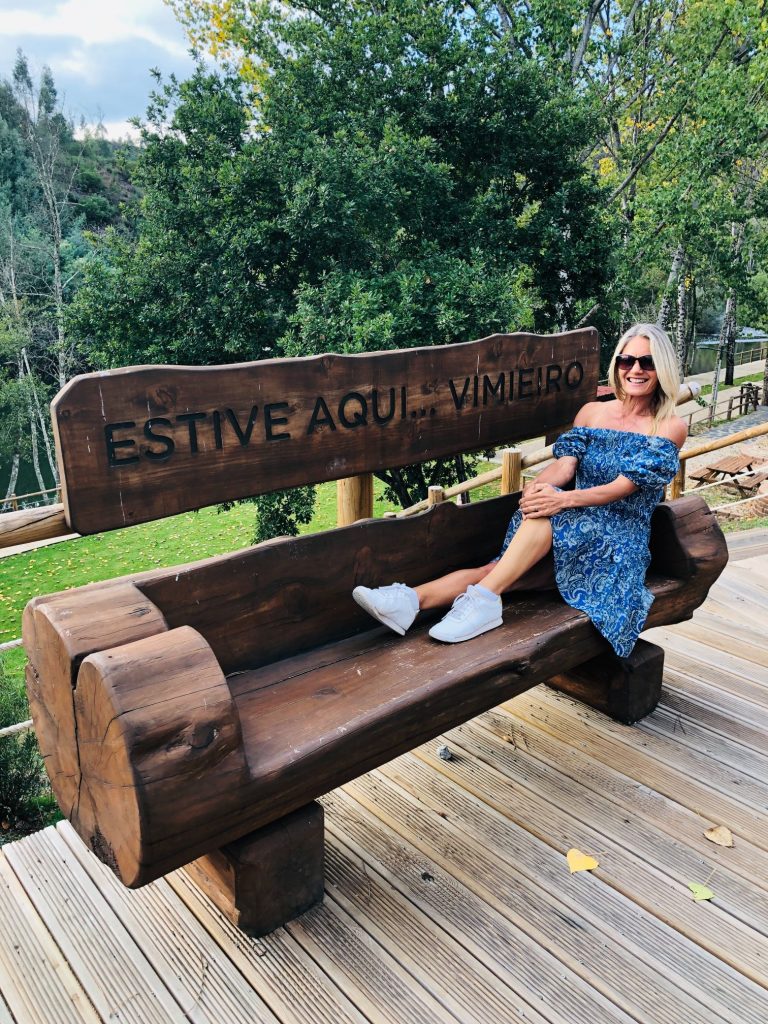





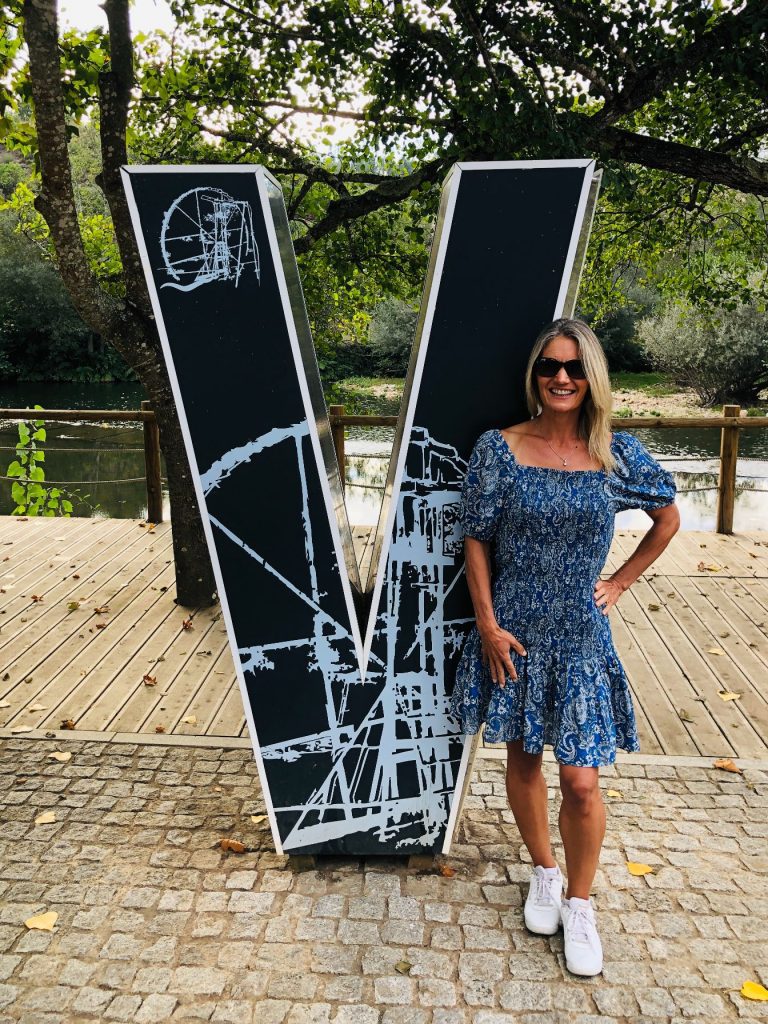


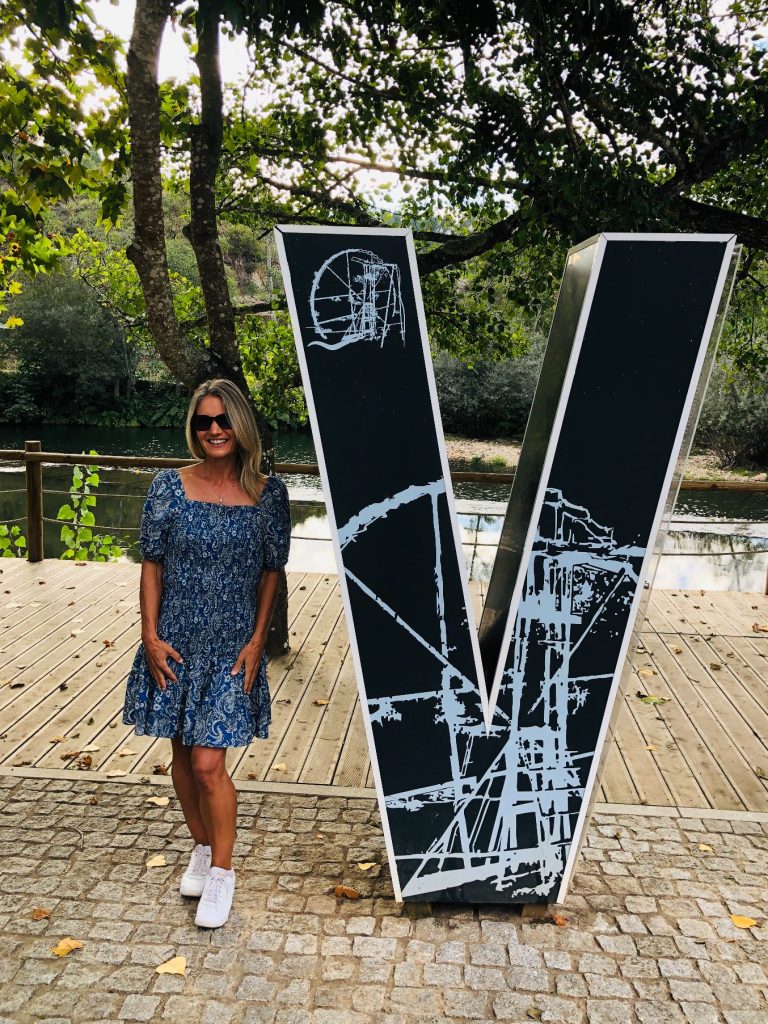





Penis Pleasure
I had way too much fun at this river beach eating my yummy “Doce Fálico de S.Gonçalo” Penis shaped pastry! It was so big I’m not sure how I managed to fit it in my delicate little mouth. Maybe I’m used to massive penises or maybe I just have a huge cake hole for a mouth (ha ha). It even had custard in the end of the penis which squirted out everywhere when I bit into it, very realistic indeed! (ha ha). It was gigantic so I shared it with hubby and gave him the left ball sack and the tip of the penis (ha ha).
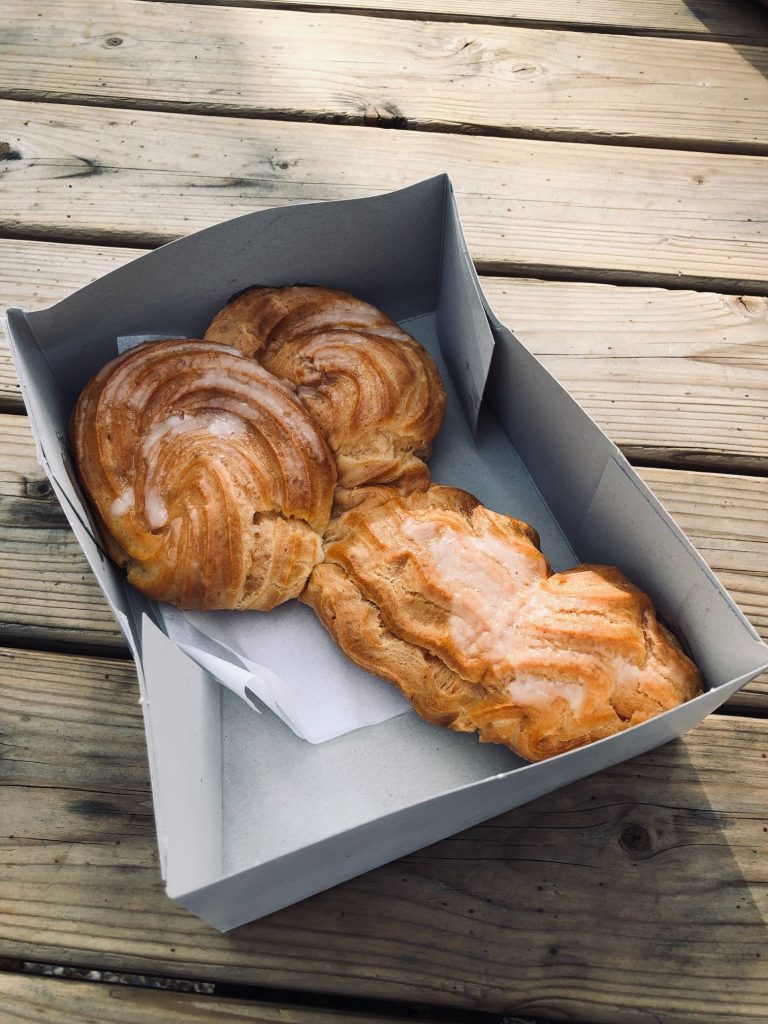


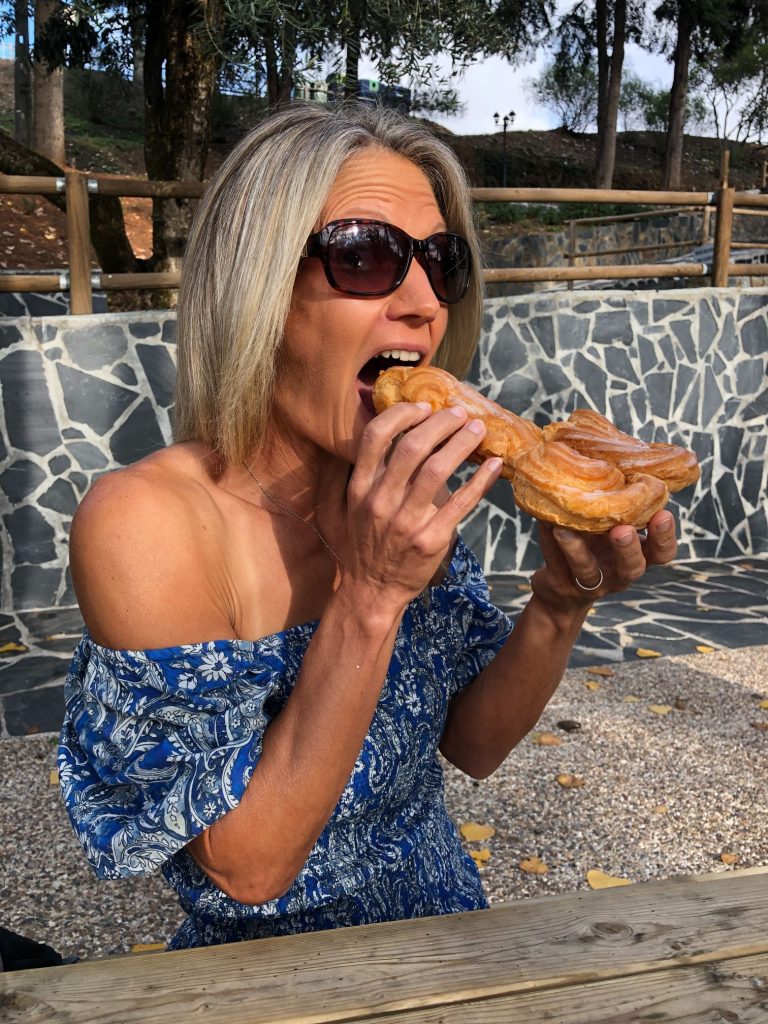


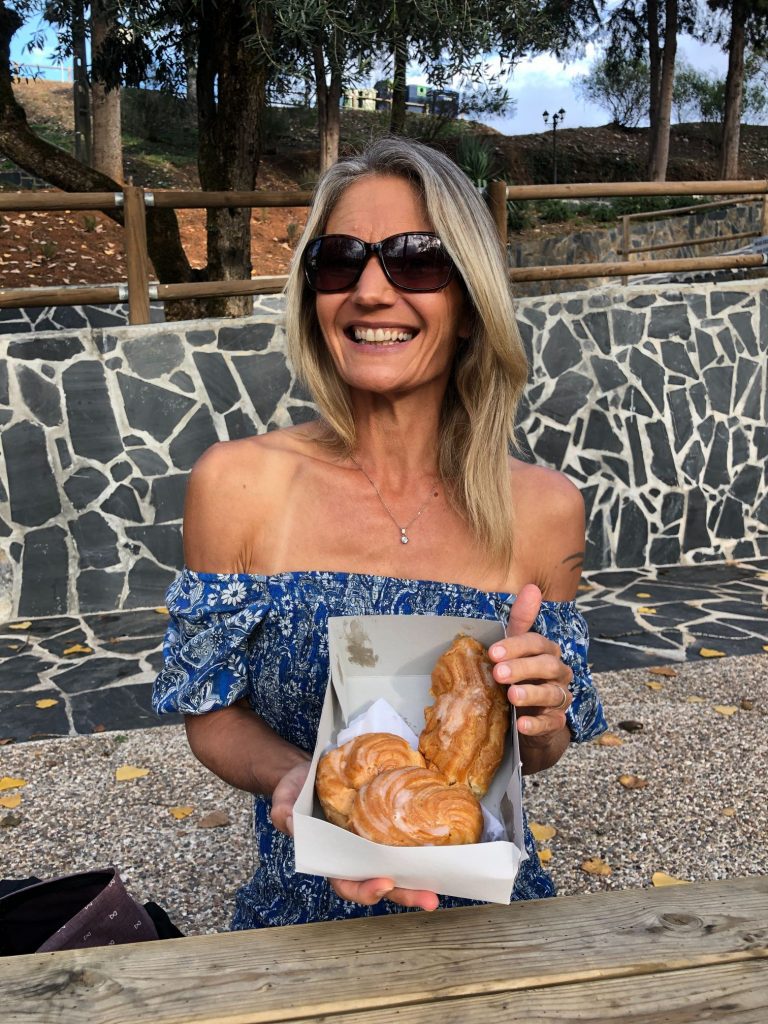


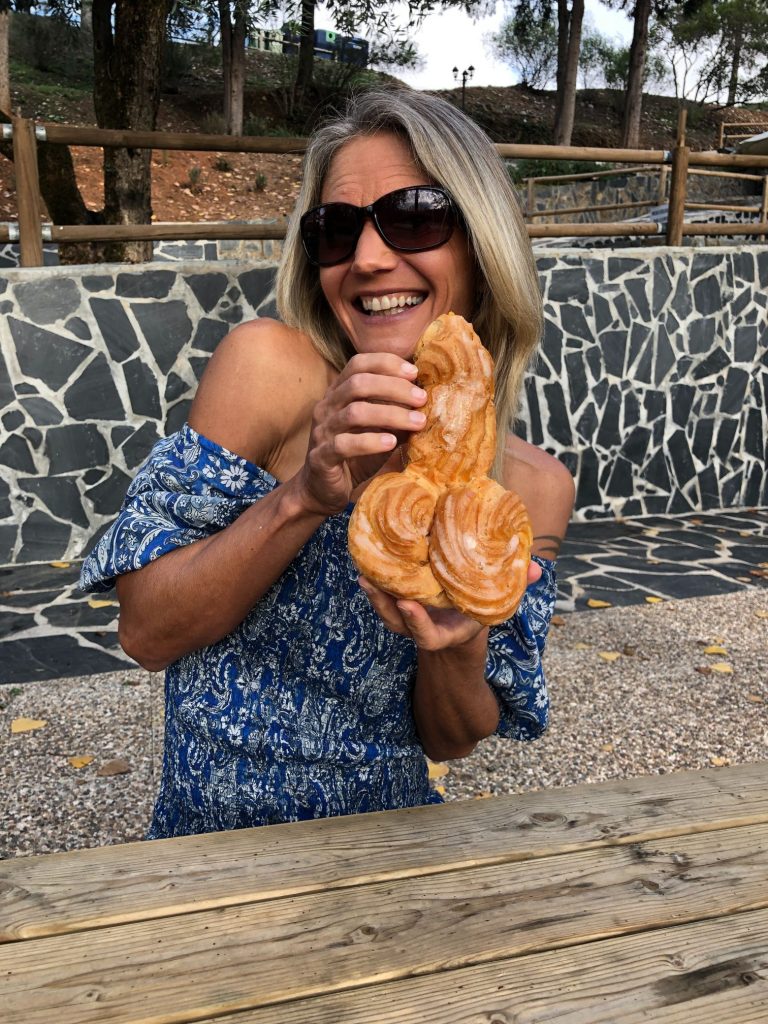





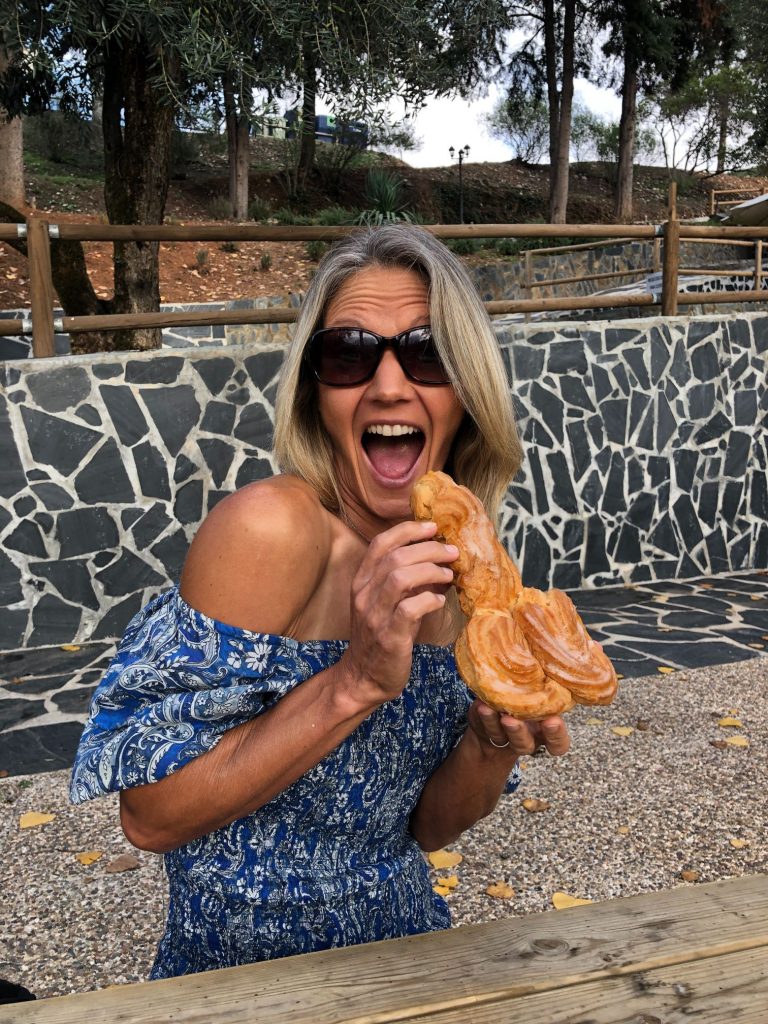


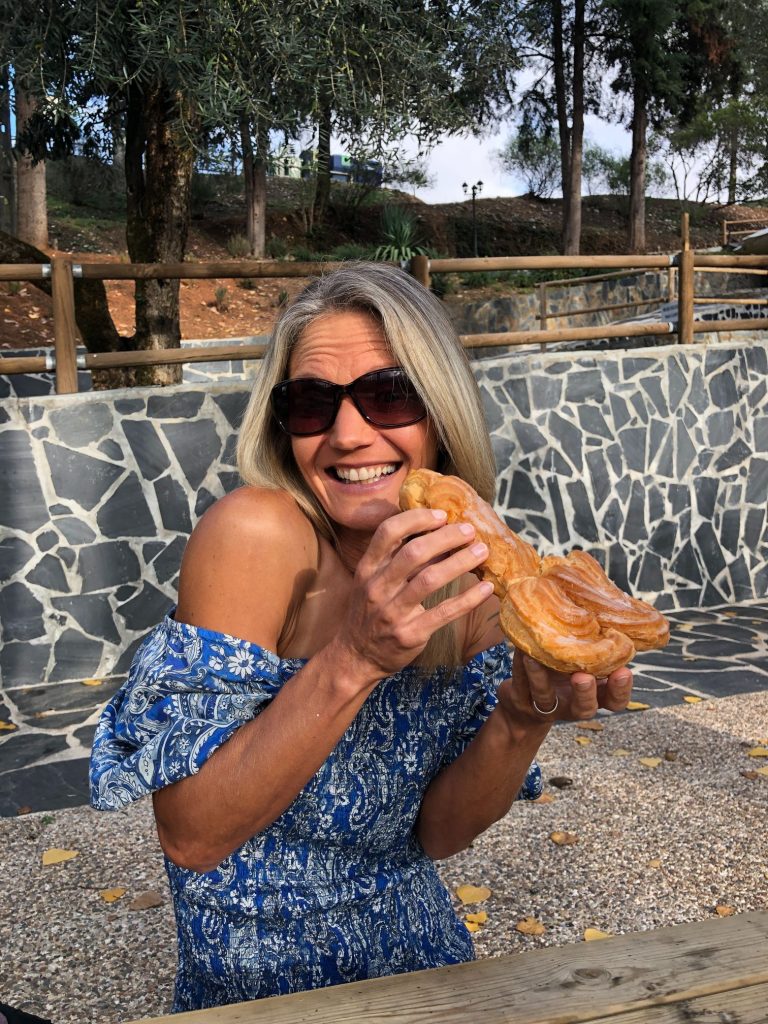


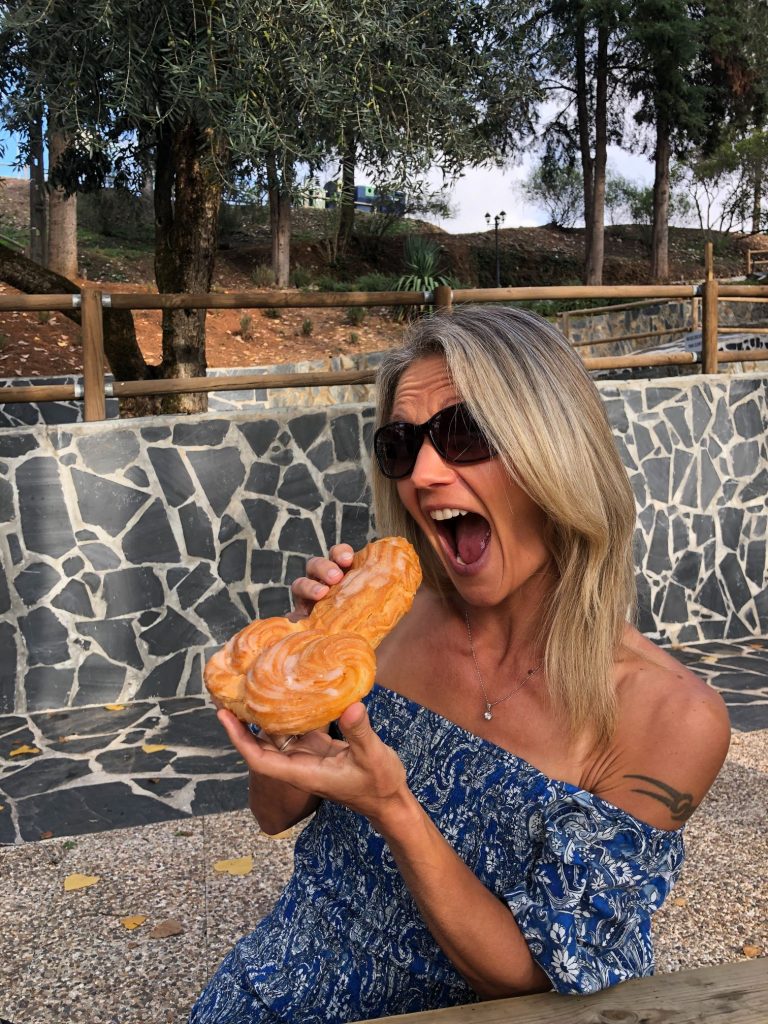





Overview
Despite having to abolish our plans and find an alternative adventure last minute, we had so much fun. The sun came out and it was a beautiful sunny day. The Monastery was simply inspiring and a total sacred and spiritual haven. I always say this but even if you are not religious it’s still a fascinating place to visit especially if you love history and architecture as it’s such a beautiful and compelling place, I got quite emotional. I really enjoyed the overall atmosphere of peace and stillness. I love visiting cultural and religious tourist attractions and feel inner peace in a church setting but I know it’s not everyone’s cup of tea so to speak. Even the tombs do not freak me out massively as it’s an important part of history and they are so well restored and cherished treasures. I was in my element and could spend hours admiring every object in detail if I was allowed to. I just have to stop myself from touching stuff. My theory is if it’s that precious you should protect it behind glass as I am a very touchy feely person when it comes to beautiful objects, I just can’t help myself. I’m like a magpie with shiny things except instead of stealing them I just drop and break them (ha ha). Unfortunately my love of touching objects does not translate over to people. My sensory issues mean that I rarely hug people and I’m super selective when choosing who I hug and who I let hug me, so if I hug you and initiate bodily contact, you know I LOVE you (ha ha). The highlight of the day was obviously my penis pastry (ha ha).
The only negatives were we only got to view the church, choir, cloister and 2 further rooms. The wings were not available on the tour so we didn’t get to see rooms such as the dormitories, refectory, kitchen, granary, chapter hall, hospice, apothecary, registry office and workshops which is a shame. I really enjoyed my visit but it’s obviously not as impressive as other larger monasteries we have visited e.g Batalha Monastery, Jerónimos Monastery and Convent of Christ in Tomar but for a small village in the heart of Penacova it was a hidden gem and a delightful day. My favourite pilgrim city is Fatima. There are many more Monasteries I would like to visit and after a little research, top of my list is Alçobaca Monastery where the royal tombs of King Dom Sancho, Pedro and Inês are located – The greatest tragic medieval love story of Portugal. Apparently the “his and hers” marble tombs are both carved with the phrase “Até ao Fim do Mundo”, which translates to “Until the End of the World” and they are positioned opposite each other (feet facing) in the transept of Alcobaça. The reason being that when Pedro and Inês wake up in the afterlife, the first thing they will see is each other, how beautiful. Maybe hubby and I should get “his and hers” marble coffins. It probably wouldn’t be worth the expense as we are both being cremated after death so a waste of money. I think “his and hers” (Jack and Jill) marble bathroom sinks would be more beneficial as hubby keeps leaving splodges of toothpaste in the bathroom sink then he blames me which is mildly annoying (ha ha). Alcobaça also has a castle and an interesting ceramic walking route tour along the Alcoa river that honours Pedro and Inês with pieces of artwork (ceramics). It’s a long journey and a 2 hr drive each way from our casa but I quite fancy it especially when I found out that the Monastery is holding Mostra Internacional de Doces e Licores Conventuais, an international sweets, cake and liqueur fair! Bring it on, I say, you don’t have to ask me twice. I was sold with the prospect of more penis pastries (ha ha). I am already planning a belated birthday trip for hubby!
UPDATE
Summer 2023 Visit – Praia Fluvial do Vimieiro (River Beach)



